Locals know Yamanashi as a place of nature and a place to go to be among all things green, largely because of its four national parks and Mount Fuji. It is also home to wineries, peach blossoms, and large sweet grapes, hence the white wines. Koshu grapes are found here, which is unique to Yamanashi and quite honestly, the largest and freshest grapes we have yet to try on a trip.
Also here are spas and hot springs, some of them hidden, but known among residents of the area that Takeda Shingen, a warrior from the Sengoku Era is said to have used to heal his body after battles. There are also some lovely onsens as well, a few of which we stayed in during our nearly three week stay this past fall.
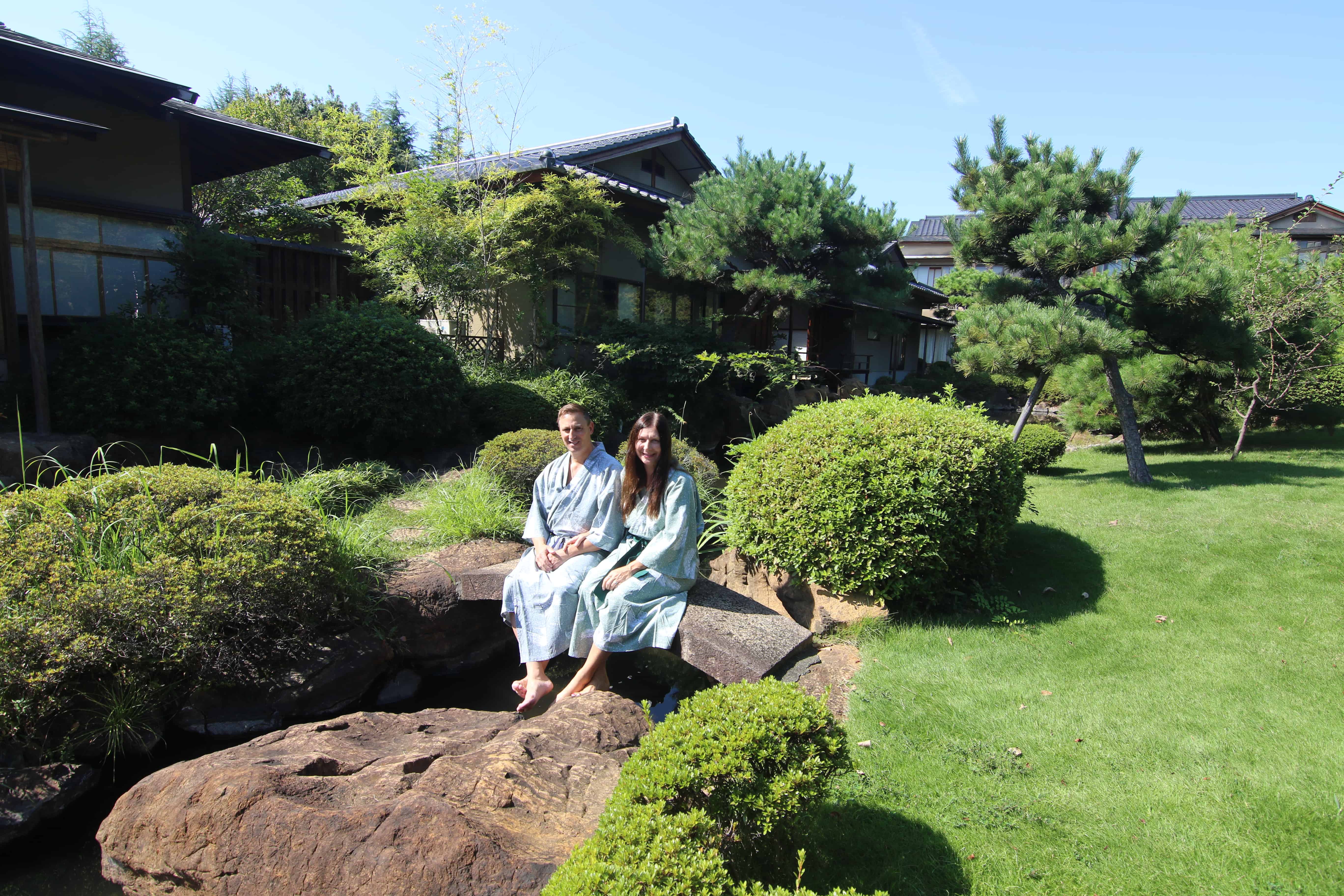
Tokiwa Gardens in Yamanashi
Kitaguchi-hongu Fuji Sengen Shrine
Based in Fujinomiya City which is the southwestern foothills of Mount Fiji, the Sengen Shrine is well over 1,000 years old and has become the region’s most important shrine and the leading shrine of over 1,300 Sengen and Asama shrines nationwide. The shrine is apparently known to be one main starting point for climbing Mount Fuji. The buildings on-site today were built by Tokugawa Ieyasu in the early 1600’s, however due to earthquakes, only the Inner Shrine, Outer Shrine and Tower Gate still remain standing today.
We went here with our friend Koji and his wife who were not only able to translate the language but cultural and spiritual meanings for some of the things that took place at the shrine as well.
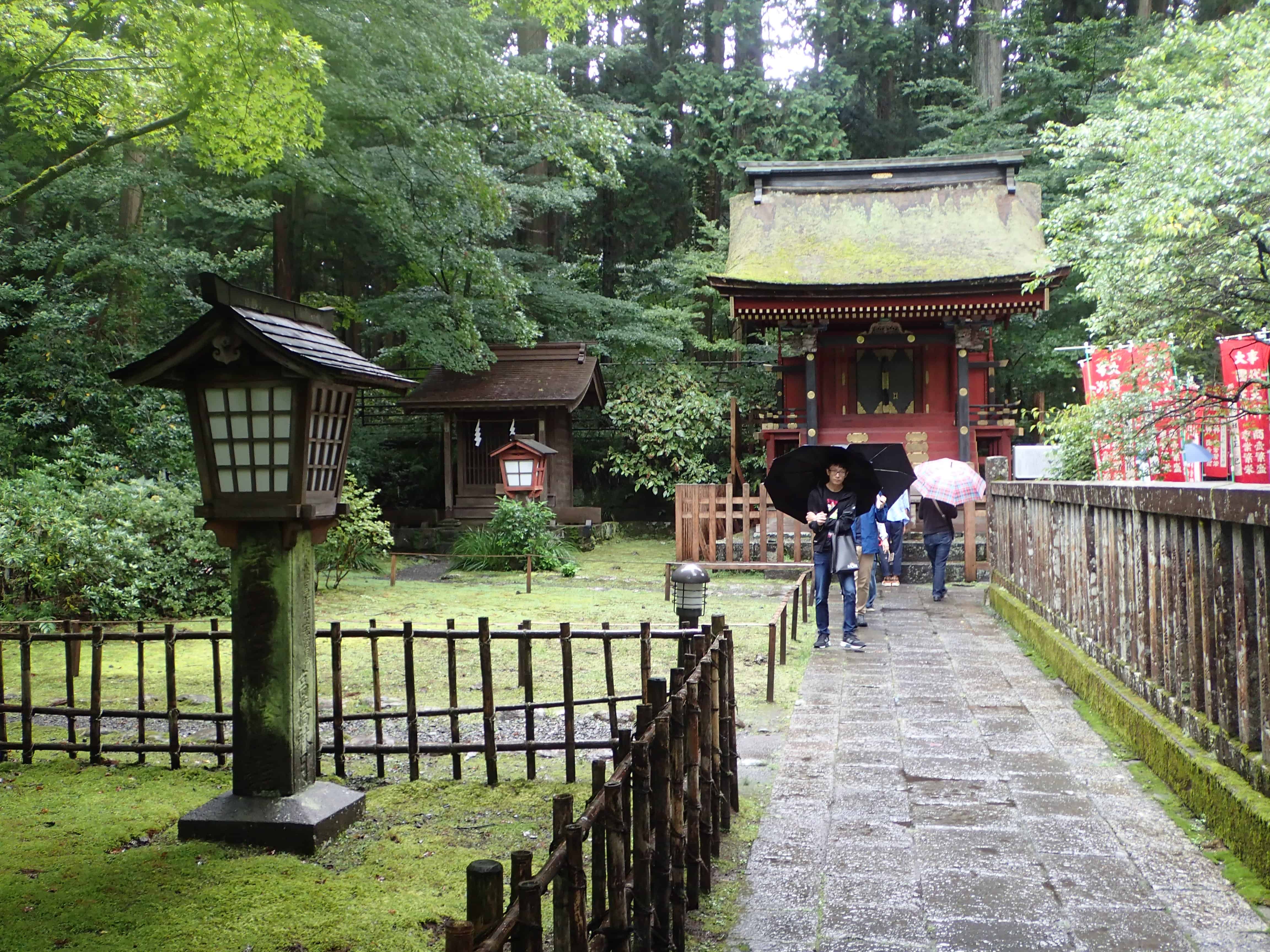
One of the lovely things about the way it is set up is that you can walk along a path that will take you past the most important parts of the shrine — you can take your time and go as slow or as fast you want. if you have time to stop and meditate, or simply reflect, I’d recommend it. It was raining when we were there, so we didn’t stay for the day. That said, we did take our time going through it and if you really want to ‘feel’ the place and understand its history, I’d recommend dedicating a few hours. Plus, the landscape and gardens surrounding it are really beautiful.
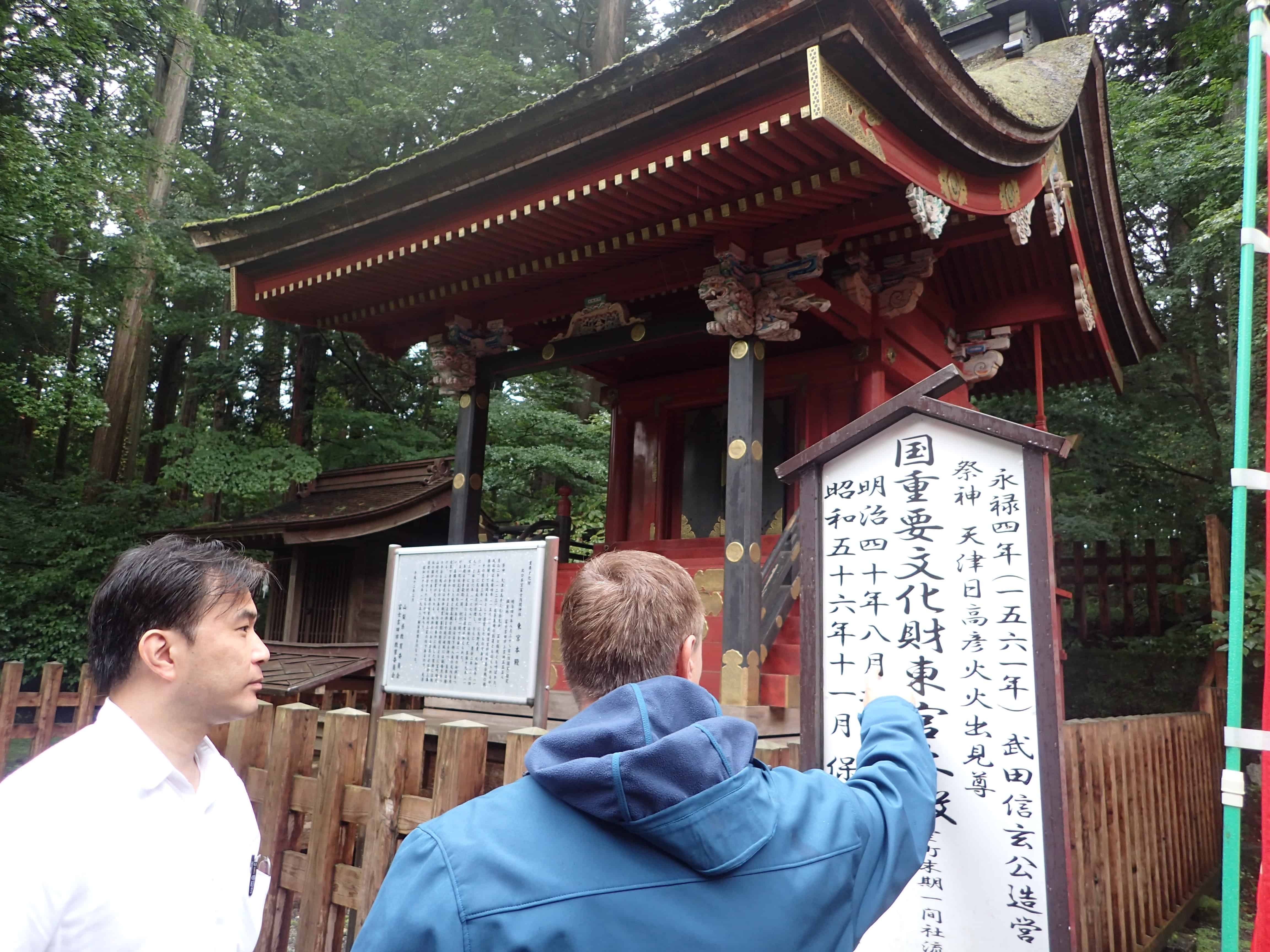
Koji translating the sign for Anthony and I at this important Yamanashi shrine
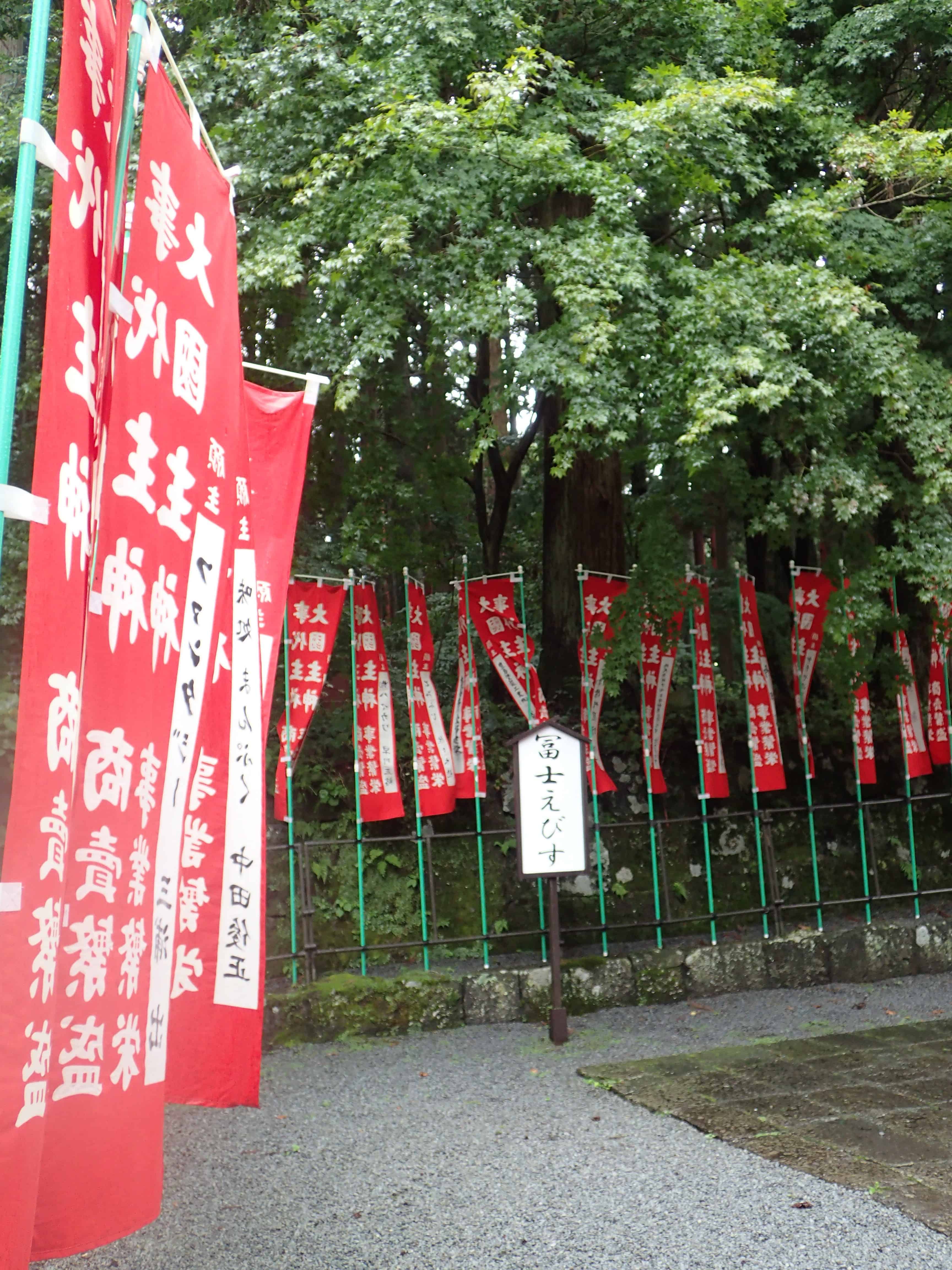
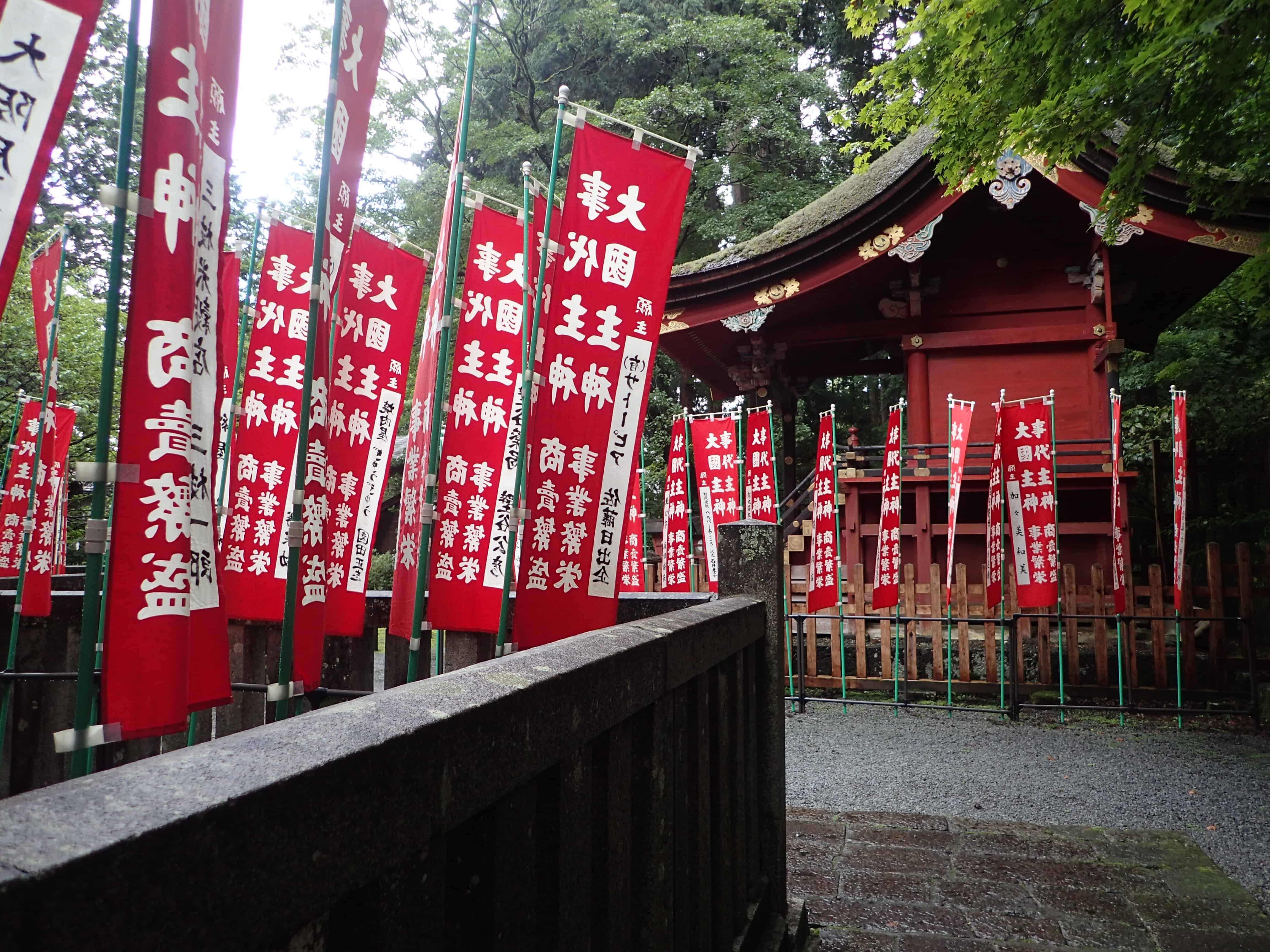
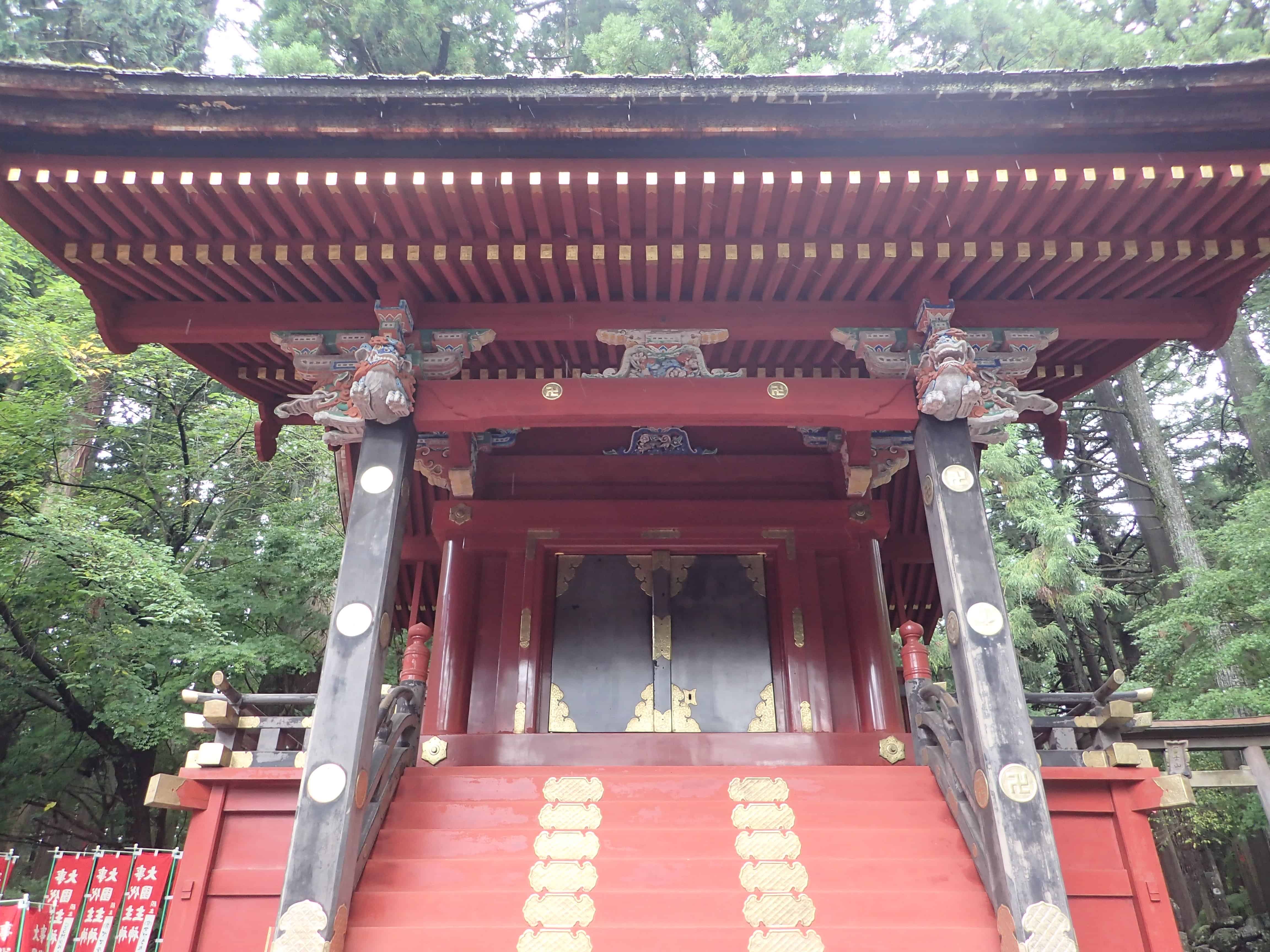
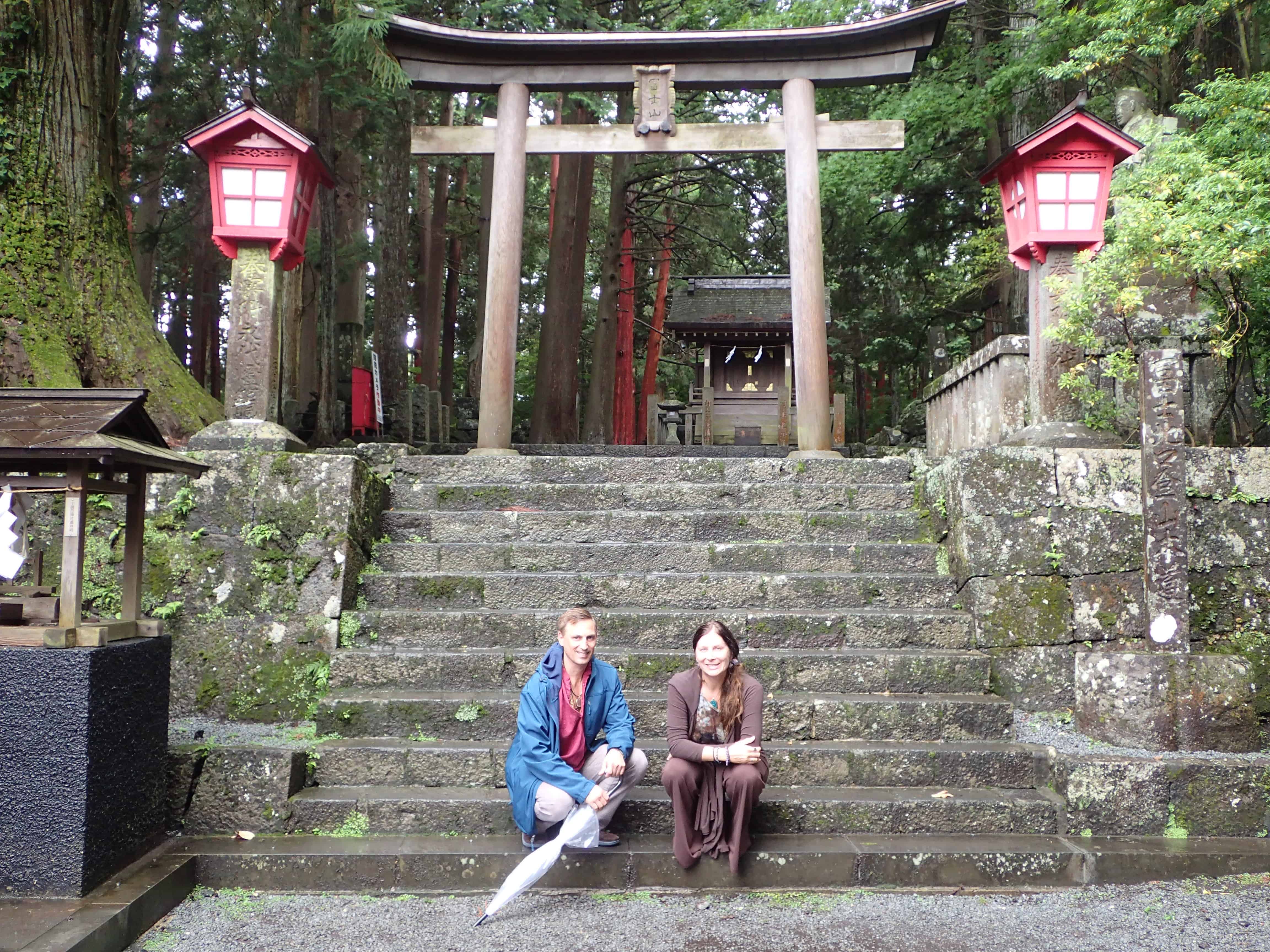
On the steps at Kitaguchi Hongu Fuji Sengen-jinja in Yamanashi
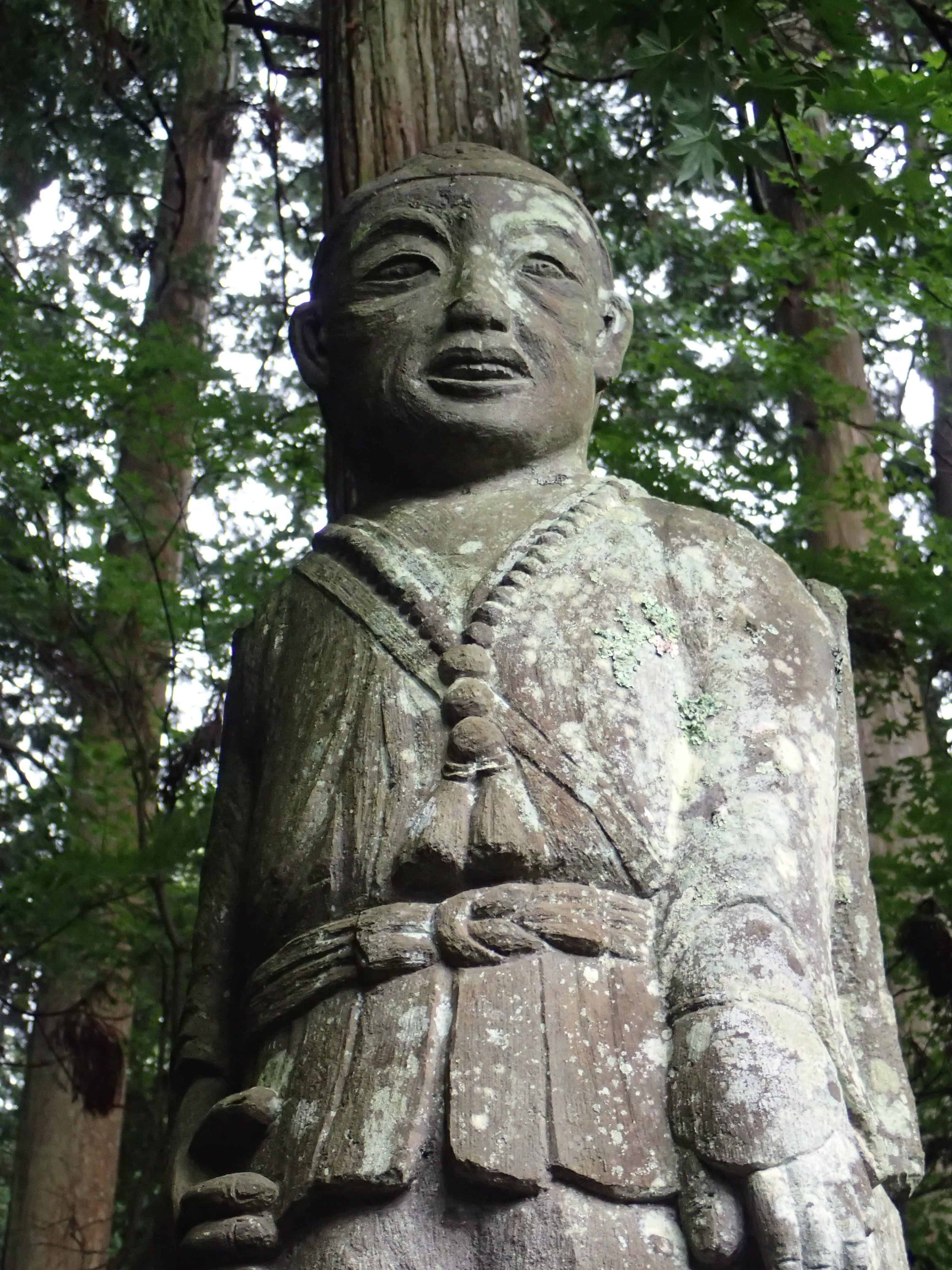
Kitaguchi Hongu Fuji Sengen-jinja in Yamanashi
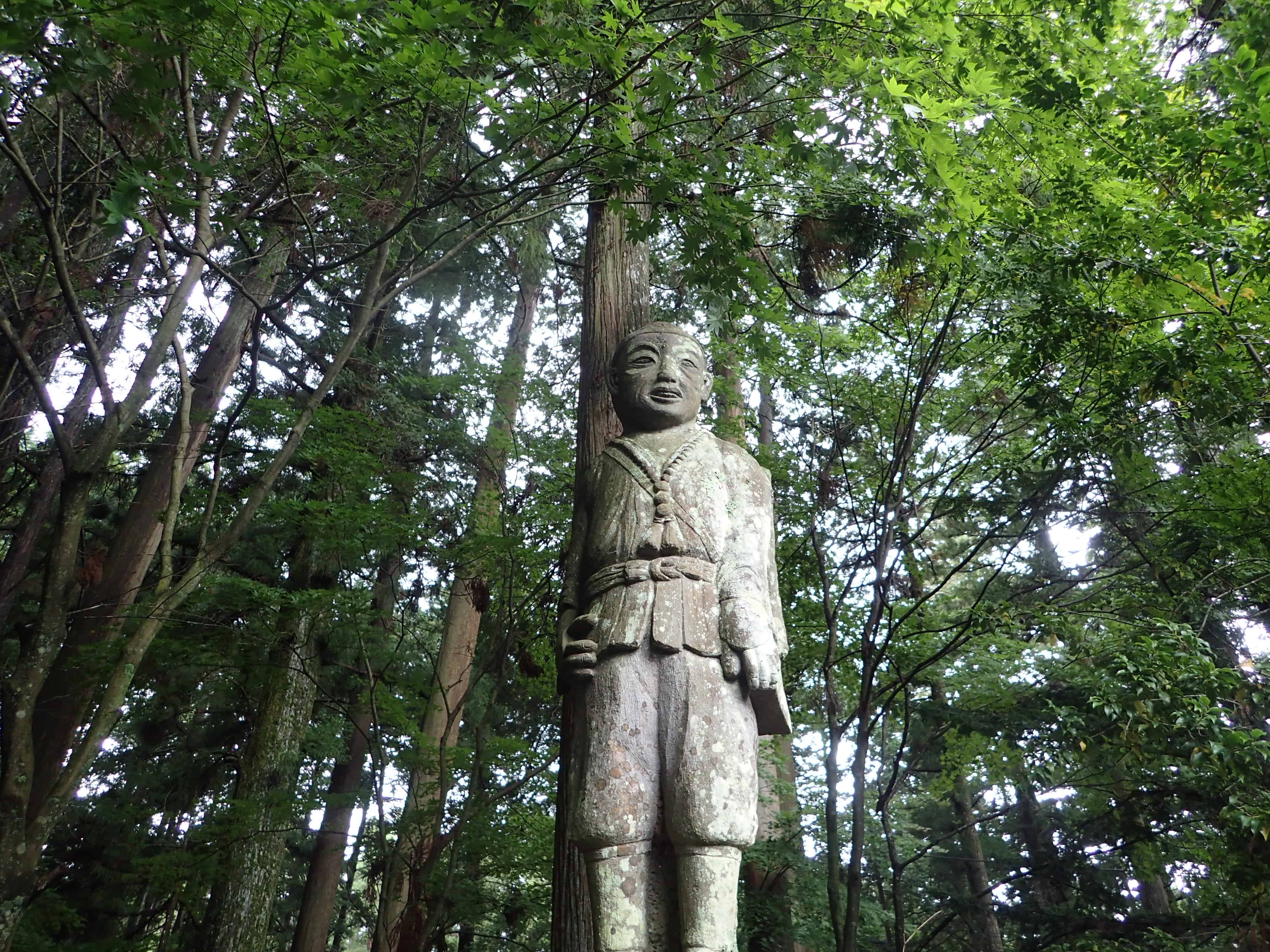
Kitaguchi Hongu Fuji Sengen-jinja in Yamanashi
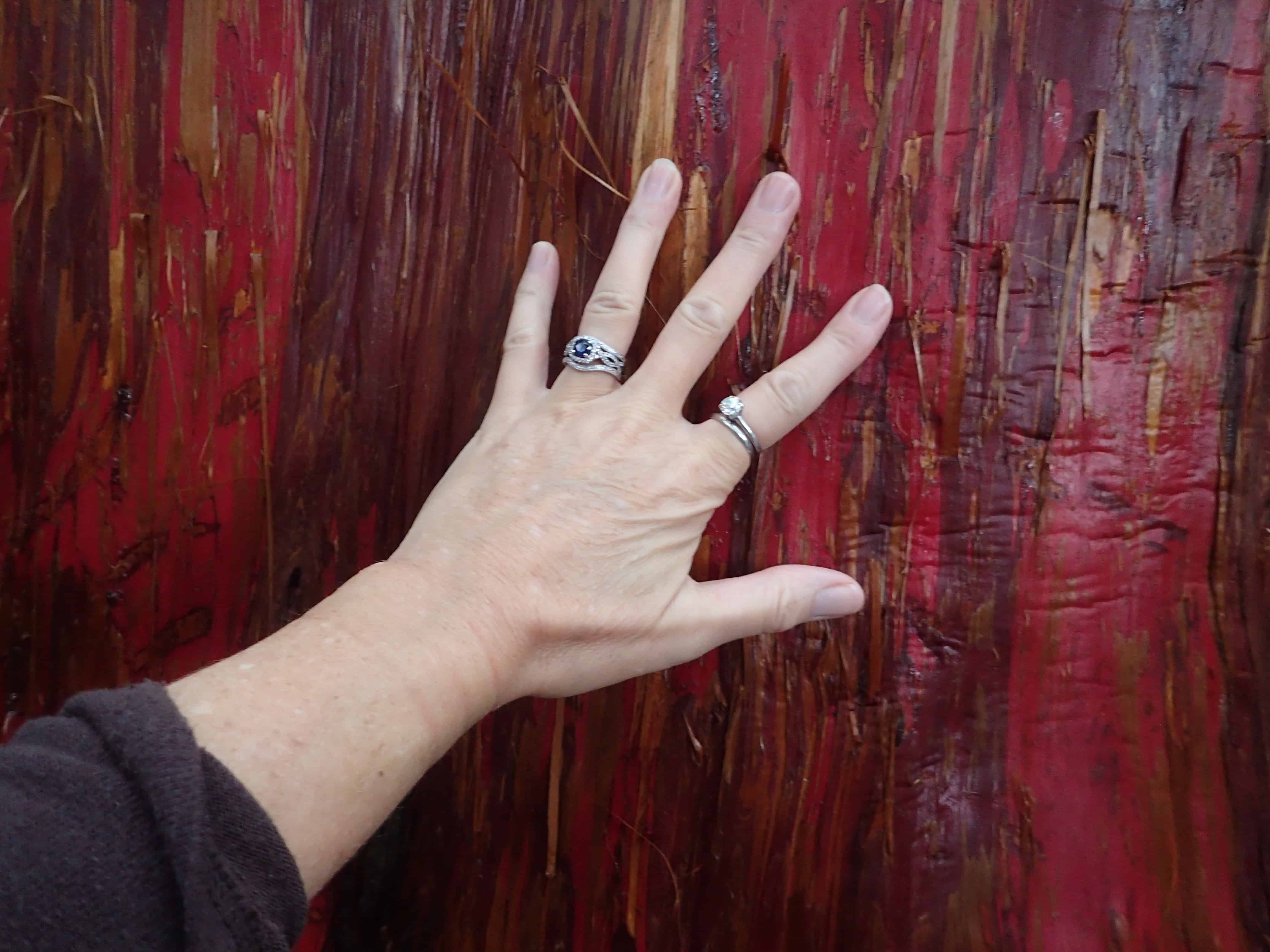
Behind the shrine lies a very woody area scattered with trees with very red bark — texture and layers of different shades of reds and yellows.
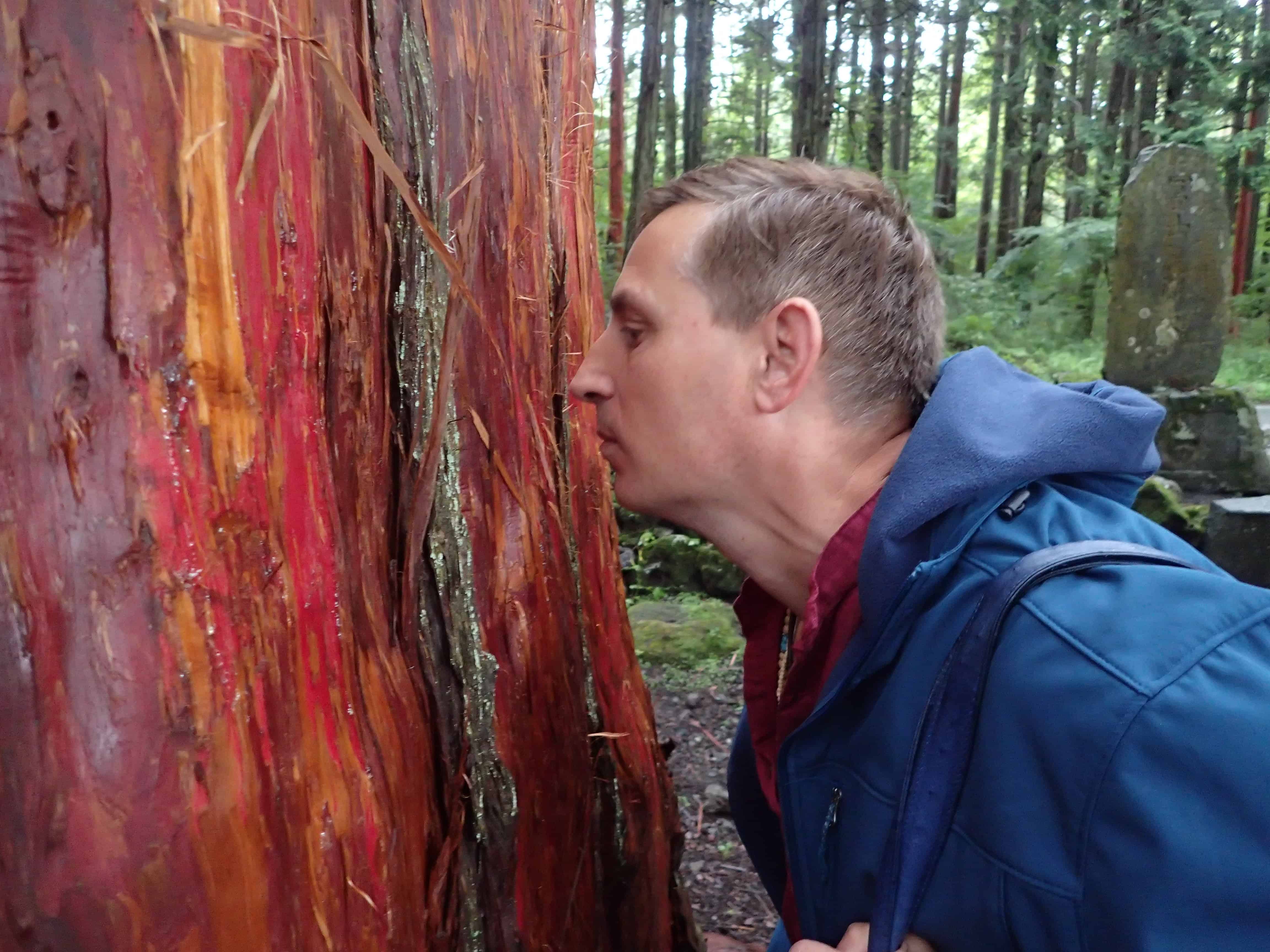
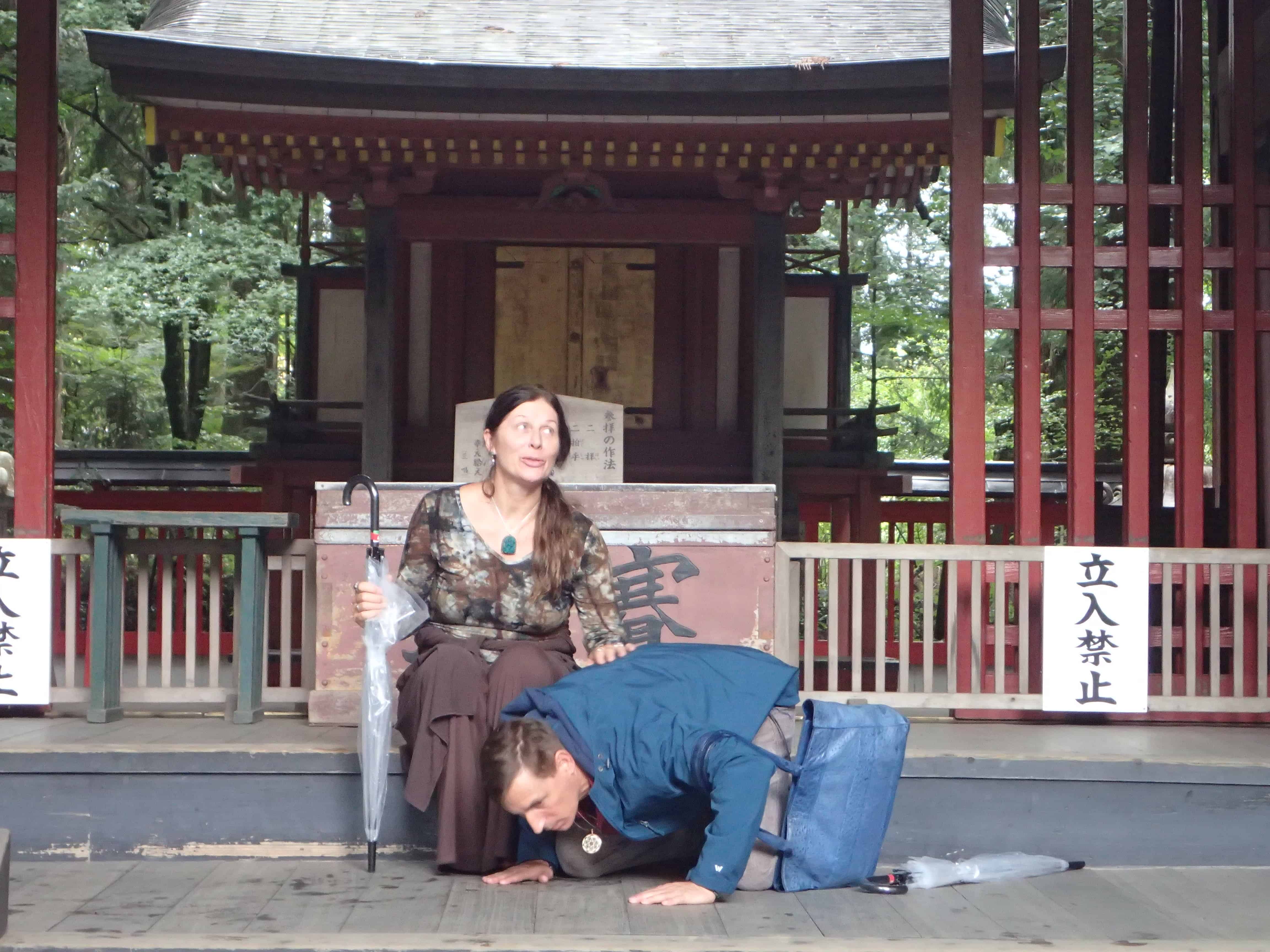
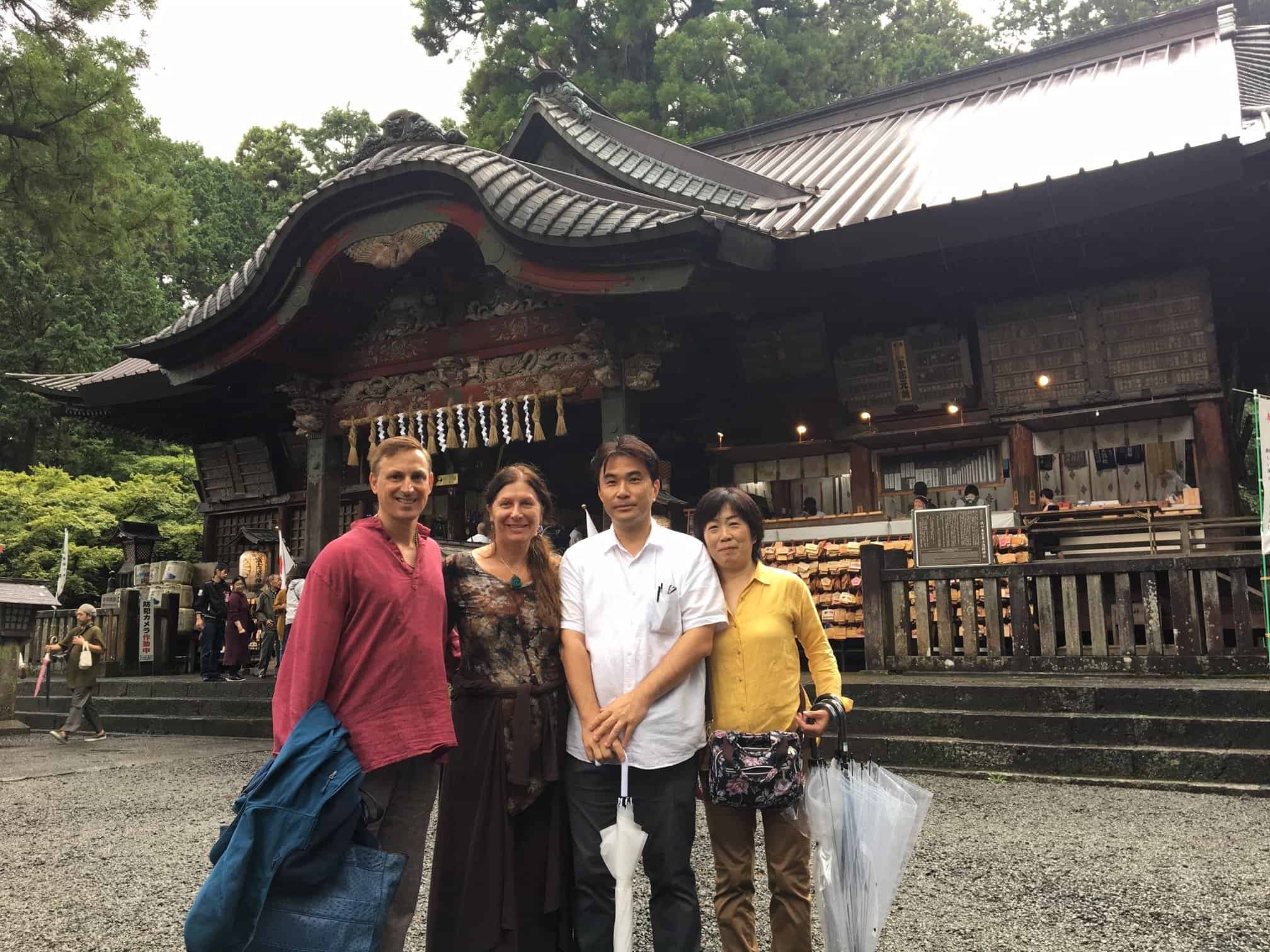
At the Kitaguchi Hongu Fuji Sengen-jinja Shrine in Yamanashi
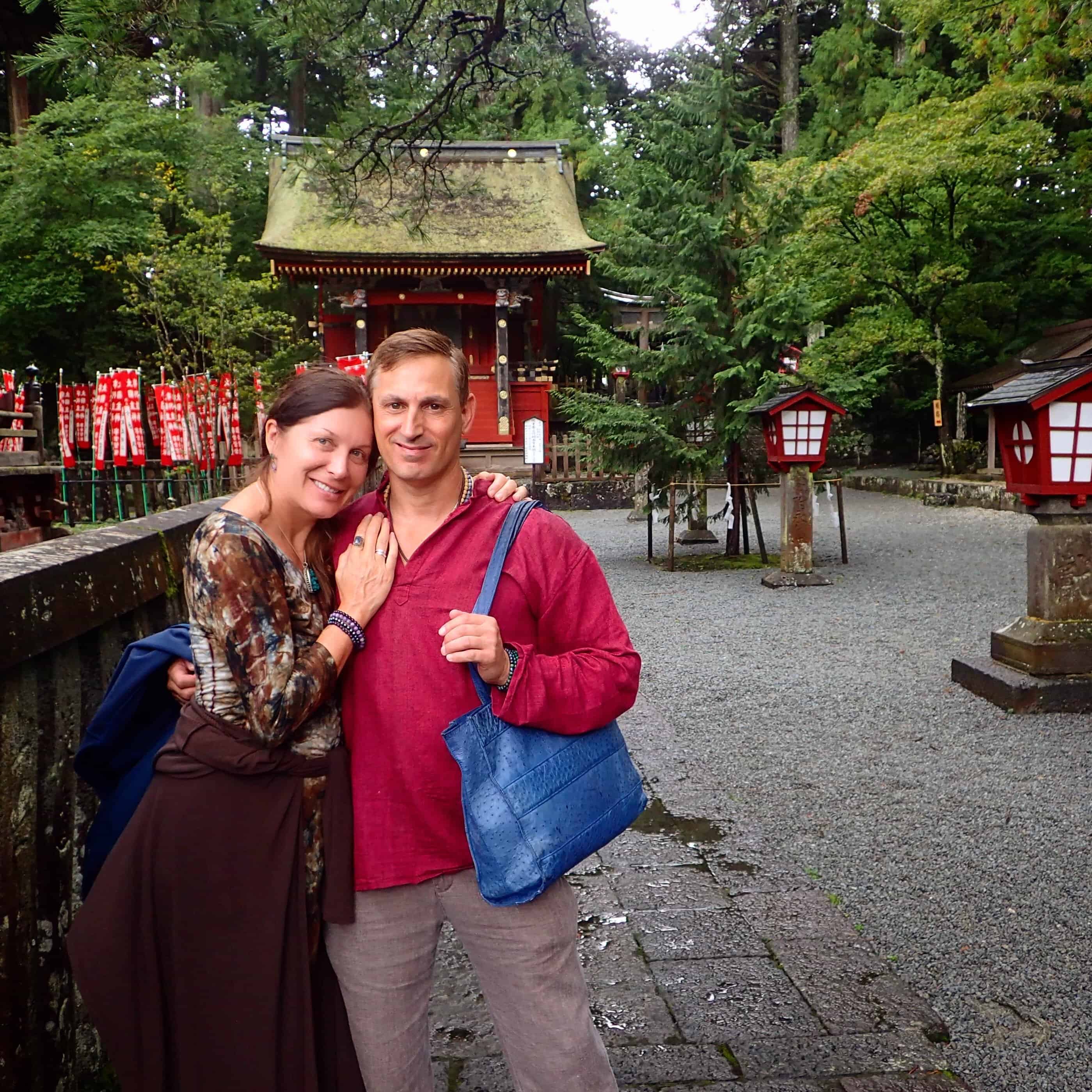
Above and below, the Kitaguchi Hongu Fuji Sengen-jinja Shrine in Yamanashi
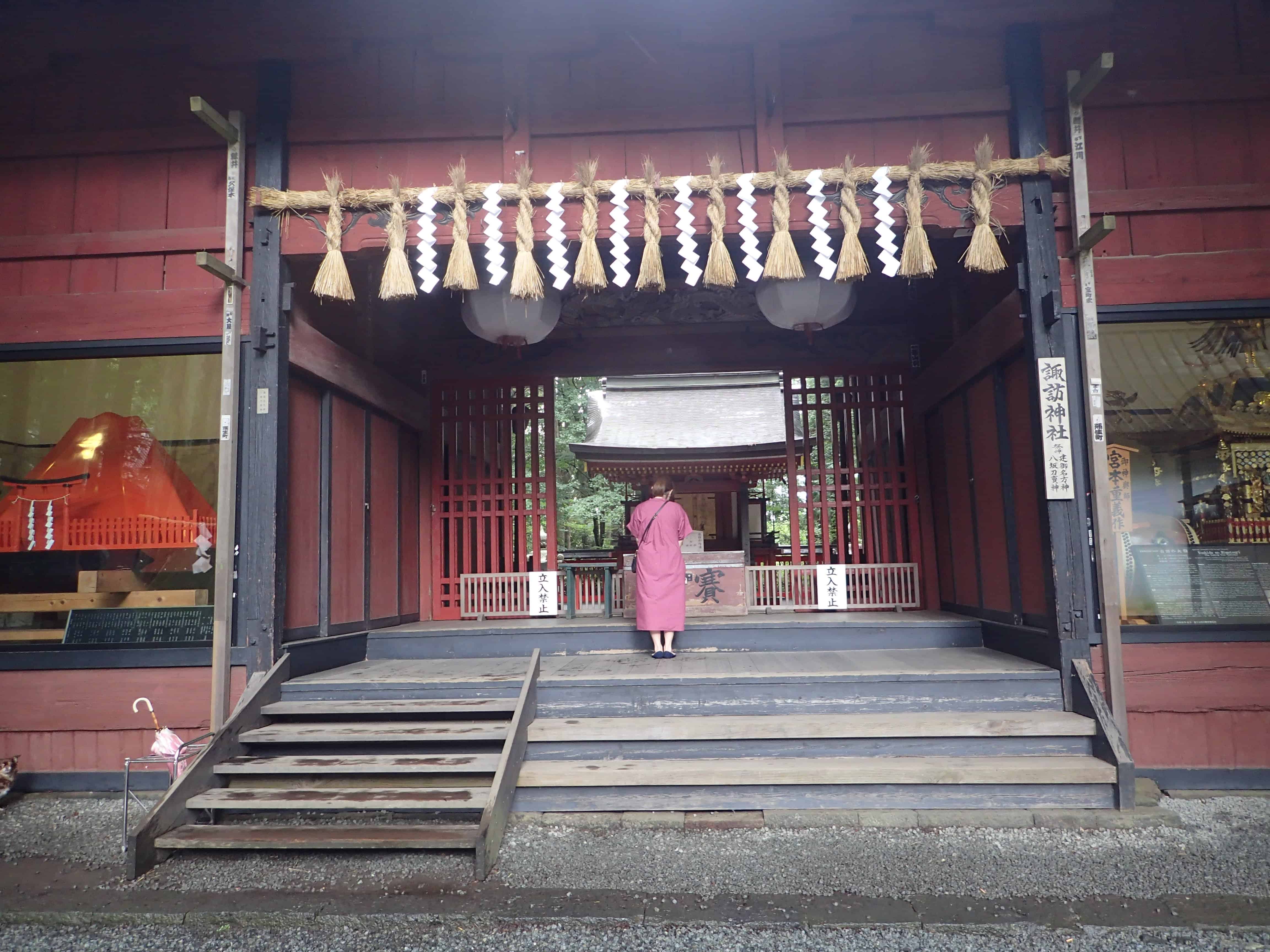

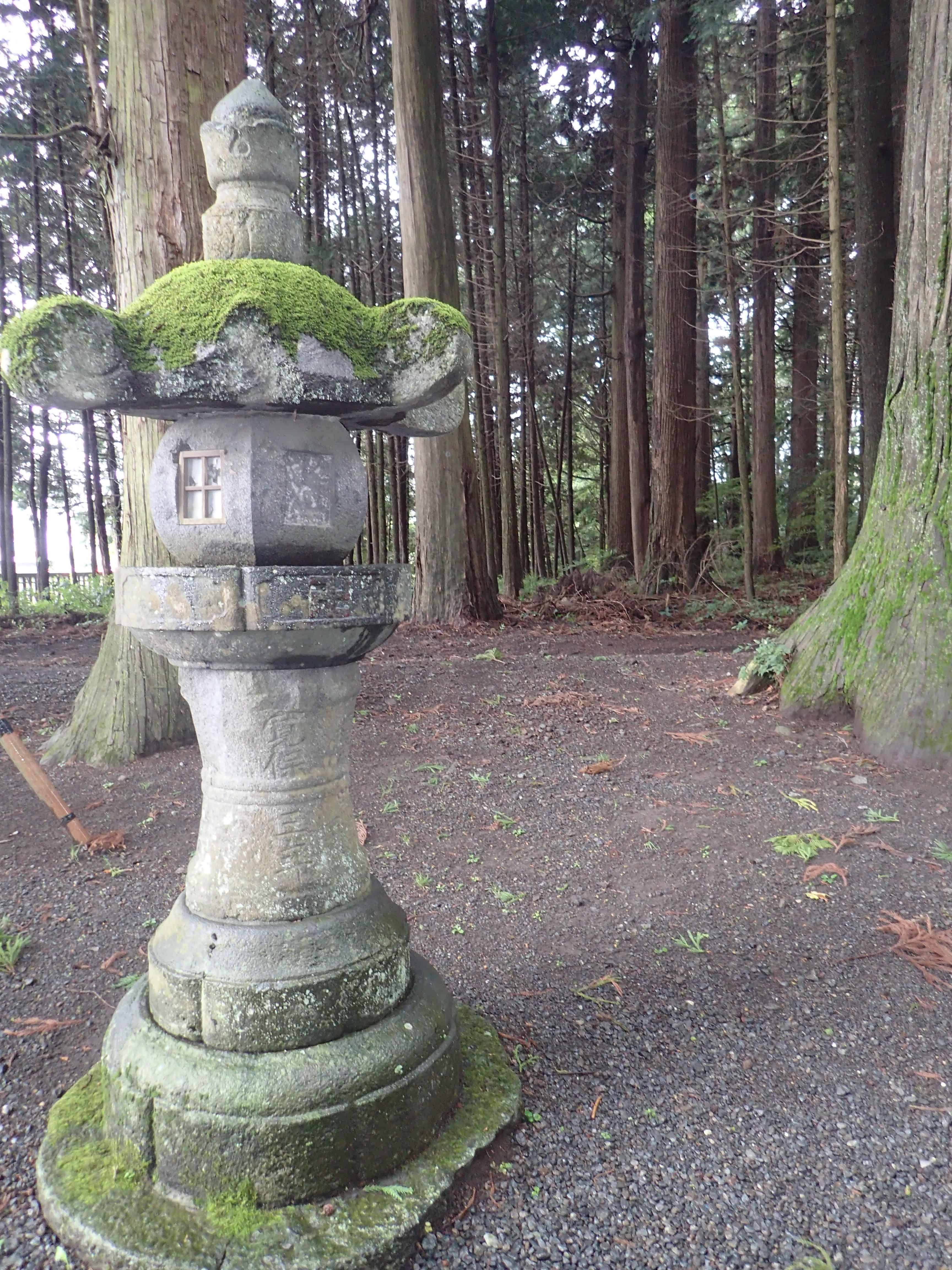
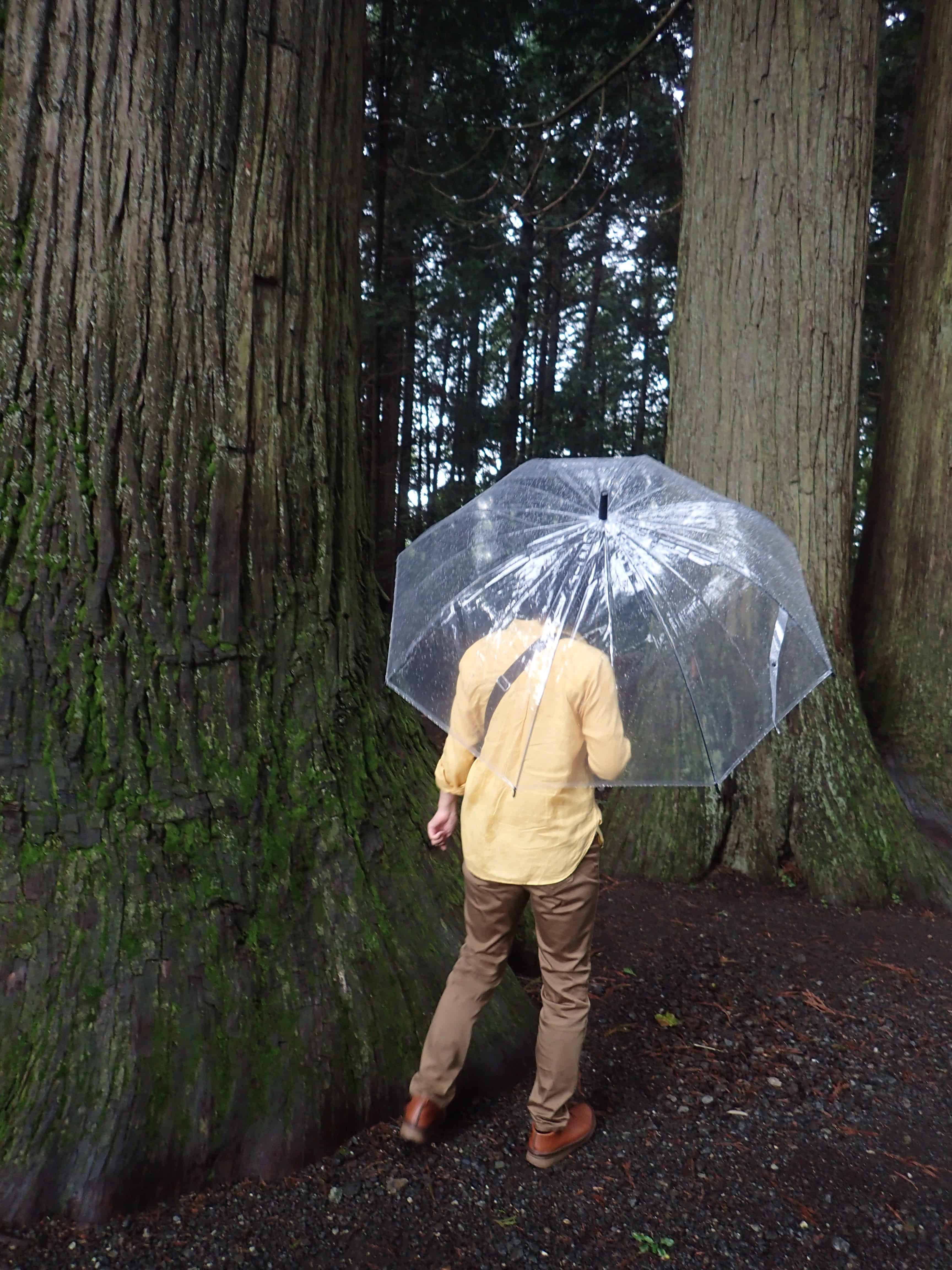
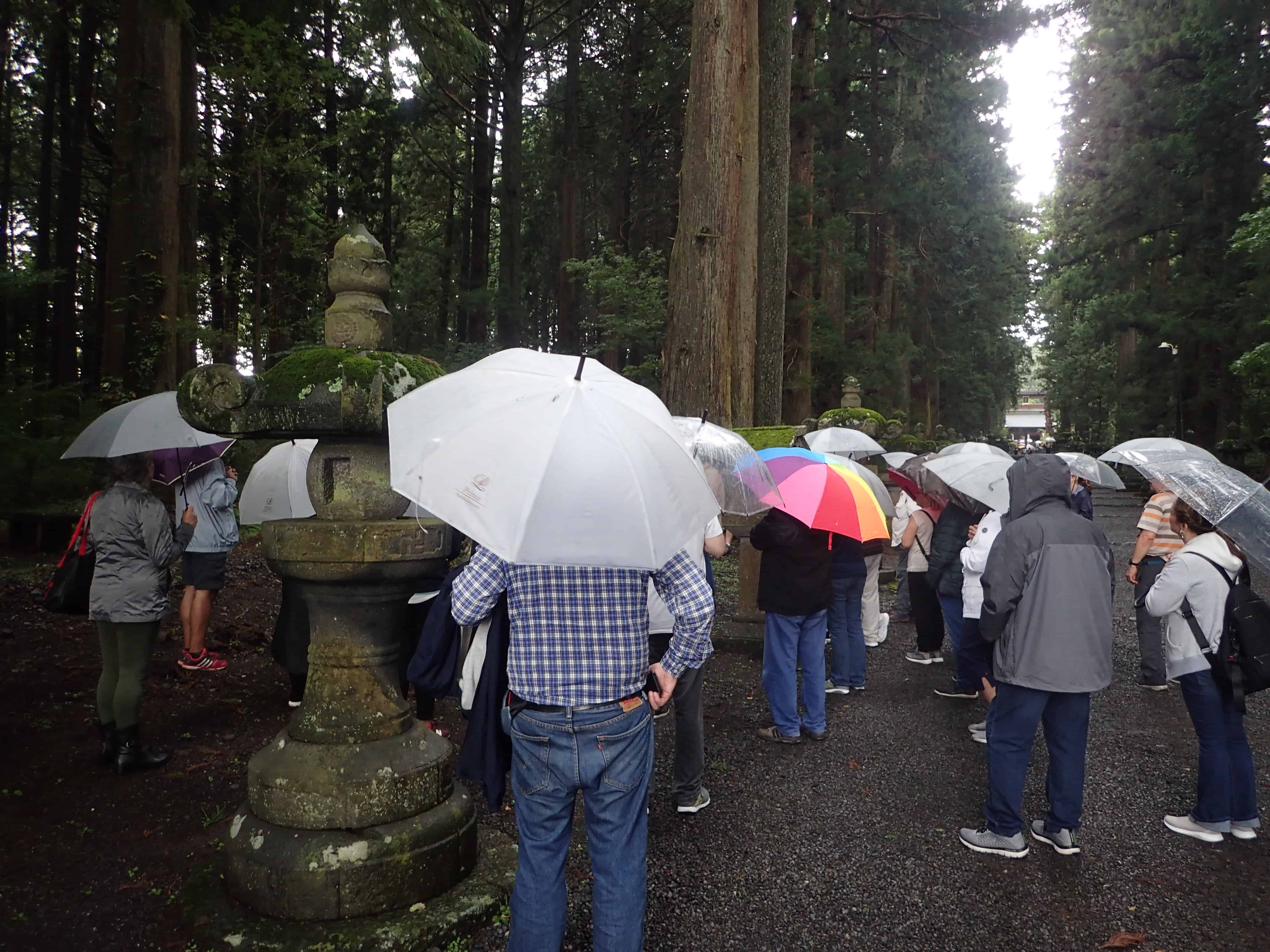
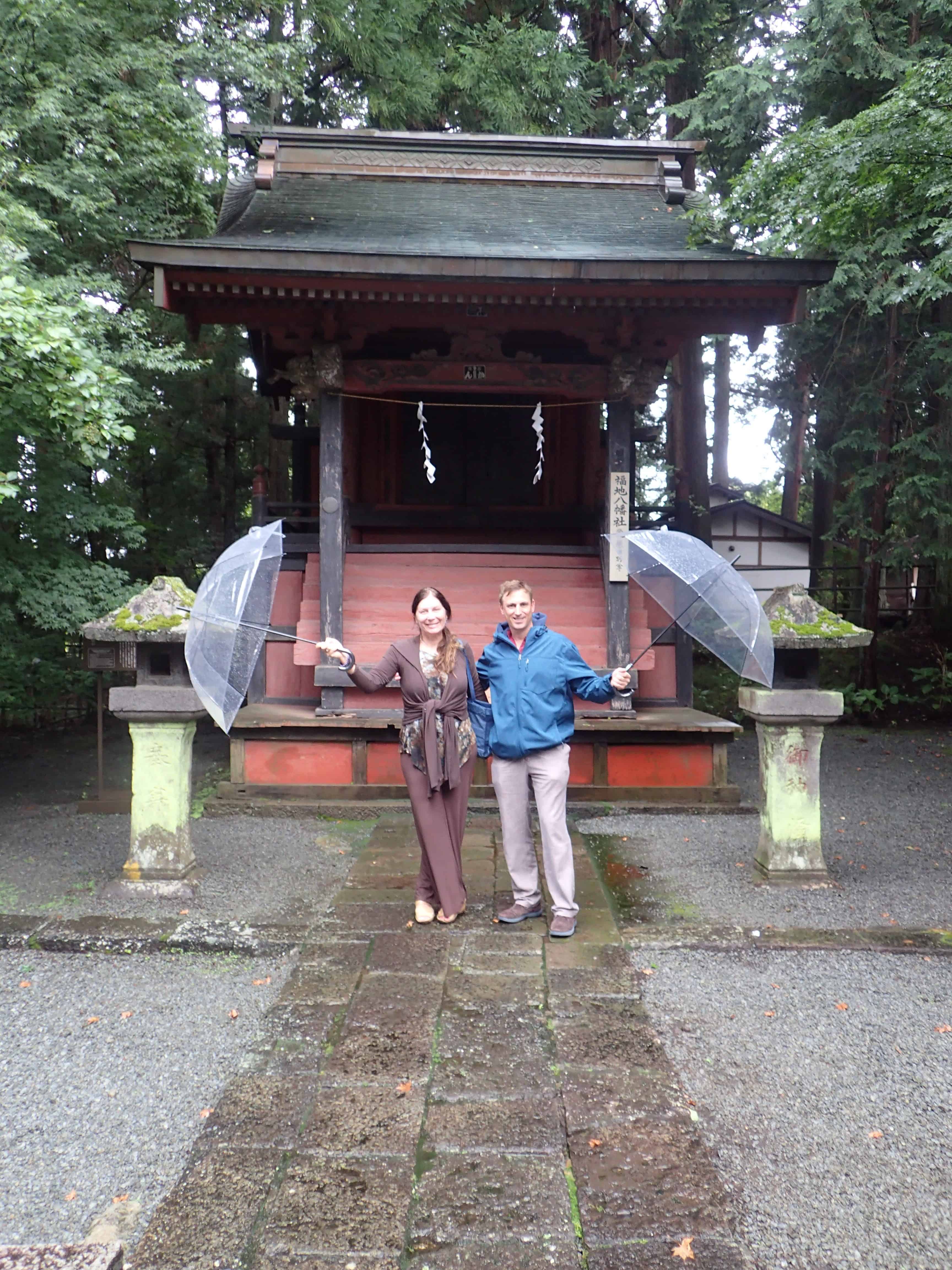
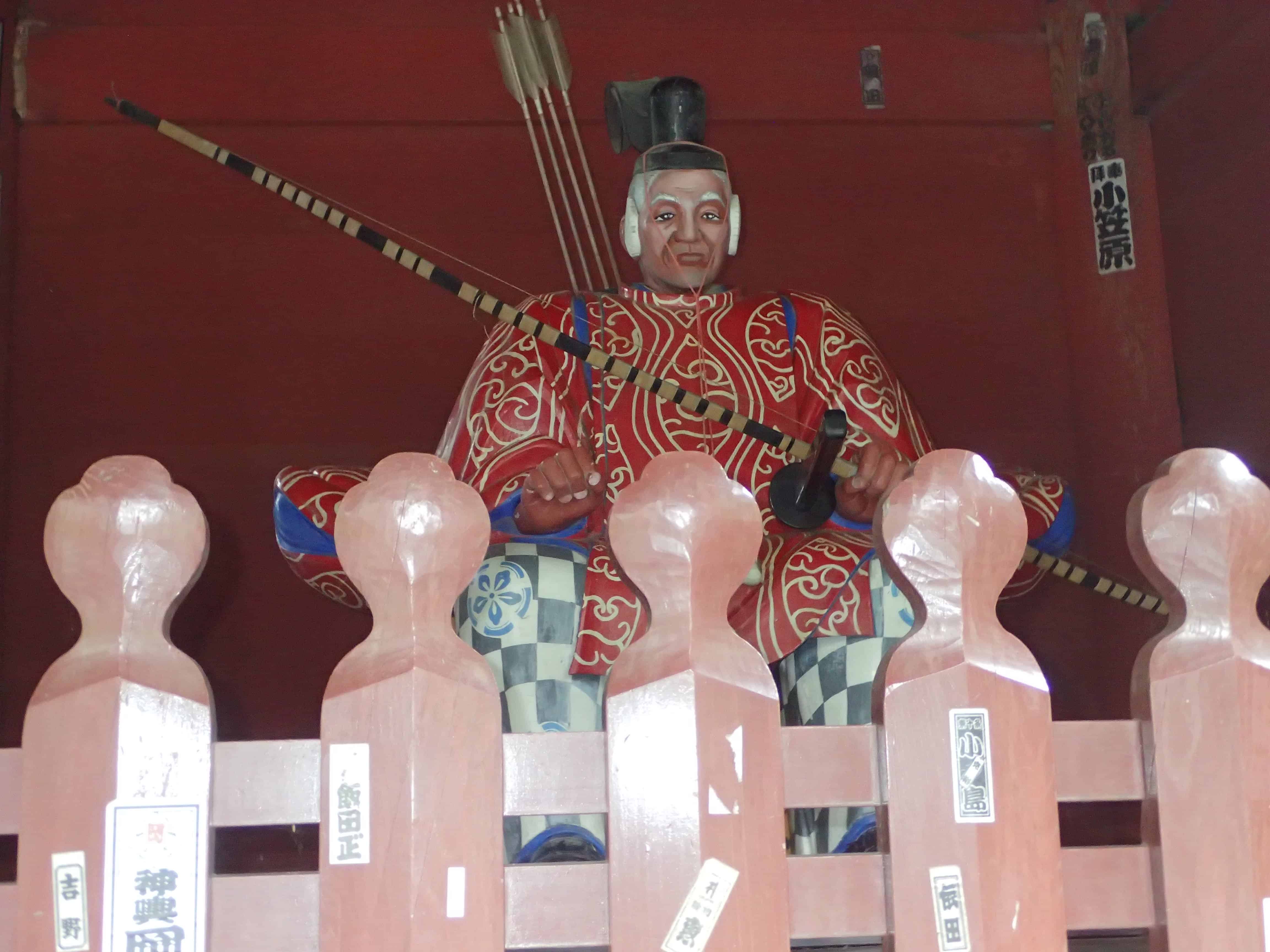
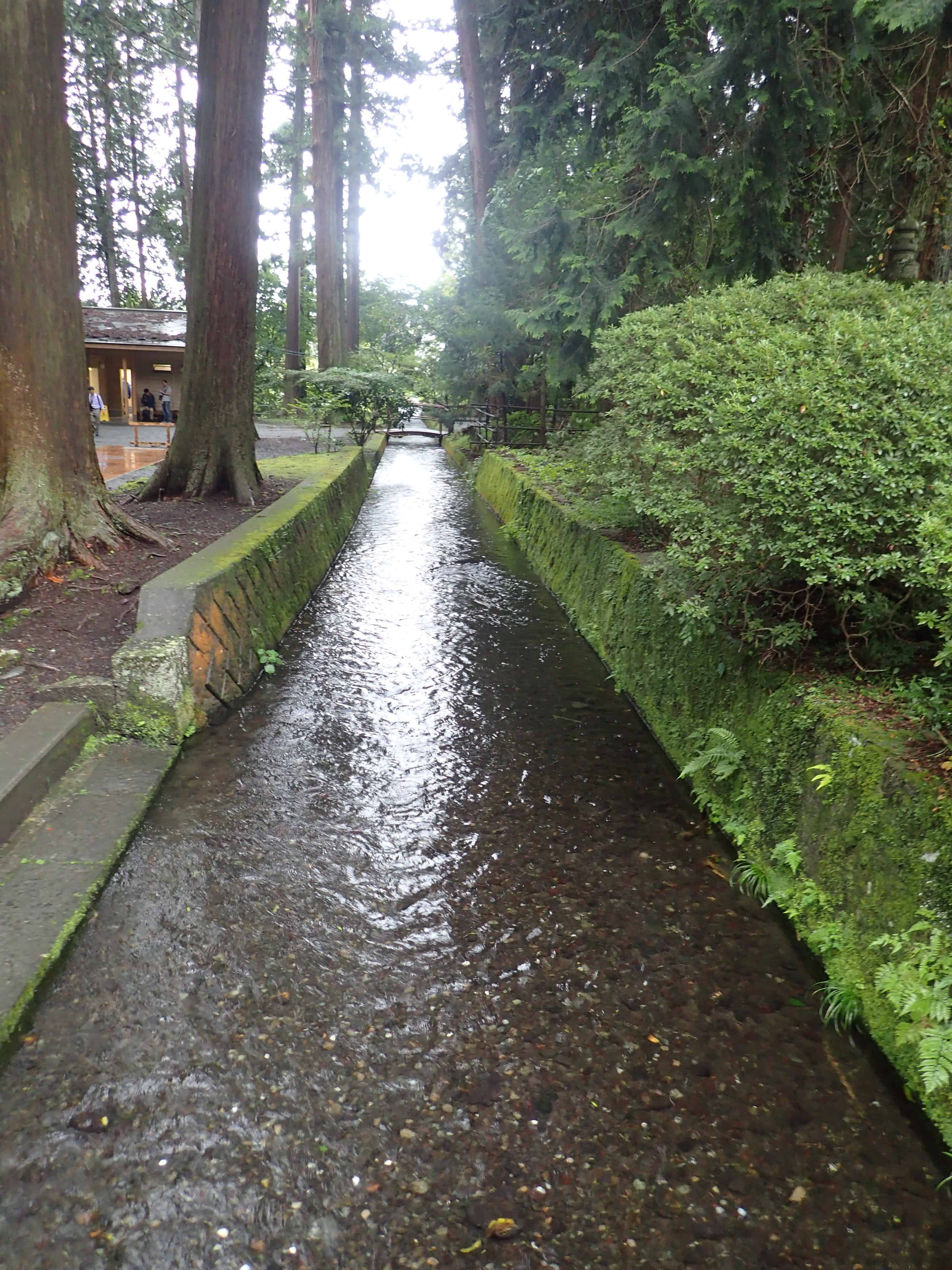
The Kitaguchi Hongu Fuji Sengen-jinja Shrine is located at 5558 Kamiyoshida, Fujiyoshida in Yamanashi and your best bet to get here is to rent a car and take in all the attractions of Mount Fuji while you’re at it, since everything is fairly closeby.
Mount Fuji
Mount Fuji is probably the most popular attractions in the Yamanashi Prefecture and give its close vicinity to Tokyo, it’s a must visit if you head to Japan. Mount Fuji remains one of the most photographed attraction in Japan alongside the Cherry Blossoms and Kyoto. The mountain itself is an active volcano which is more commonly and locally called “Fuji-san.”
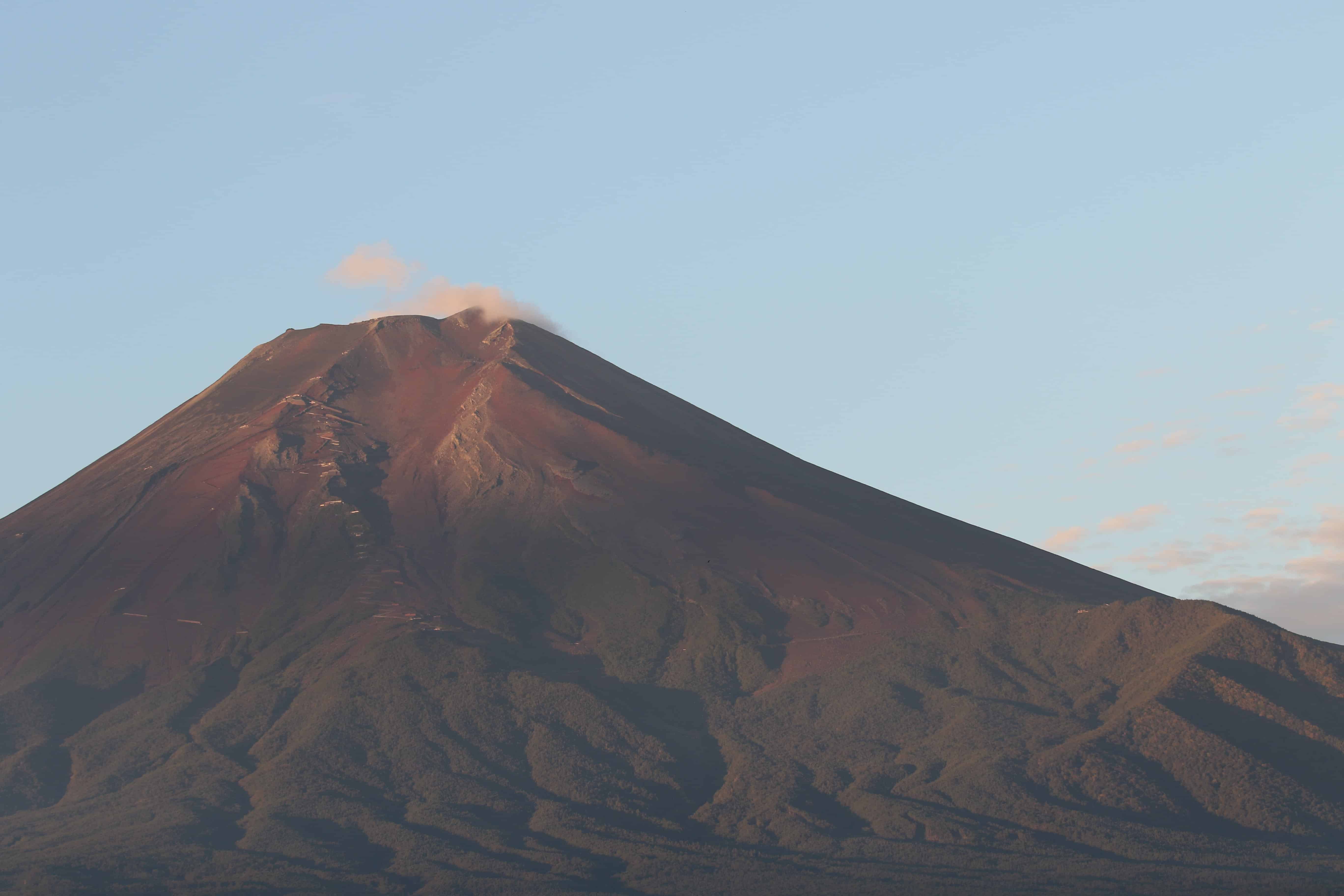
Beautiful and moody Mount Fuji in Yamanashi
People may not realize that it is also a pilgrimage site as well as Japan’s tallest peak, at 3,776 meters. Locals consider it to be one of Japan’s three most sacred mountains and not only is it photographed a lot on Instagram feeds and other travel sites, but also depicted by artists and has been for many many years, most notably, Edo Period prints by Hokusai and Hiroshige. We stayed at Kaneyamaen, an iconic upscale Onsen (see our complete review here). The above and below photo was taken from our room’s patio on an early morning in September.
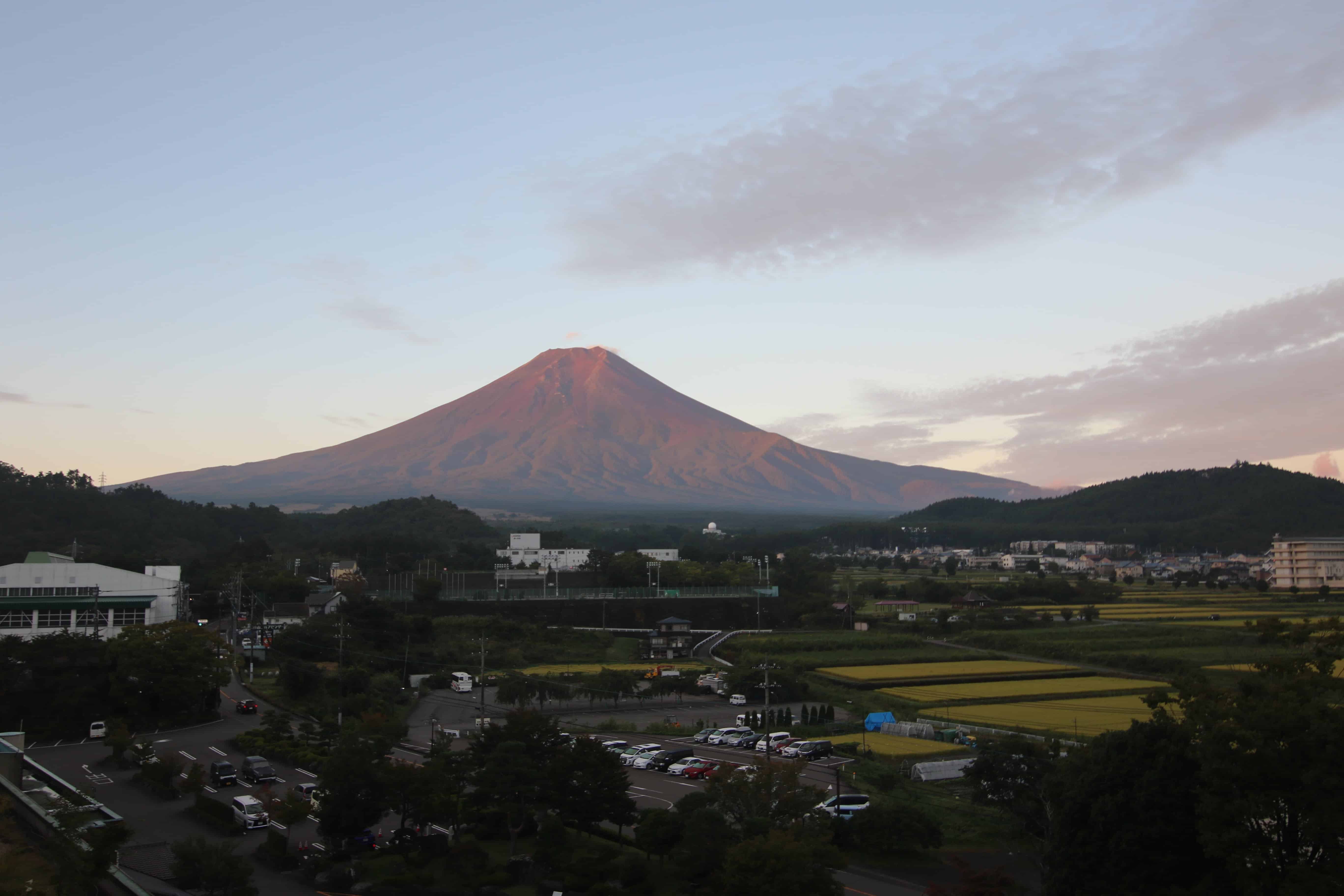
Above and below, the view of Mount Fuji from Hotel Kaneyamaen in Yamanashi
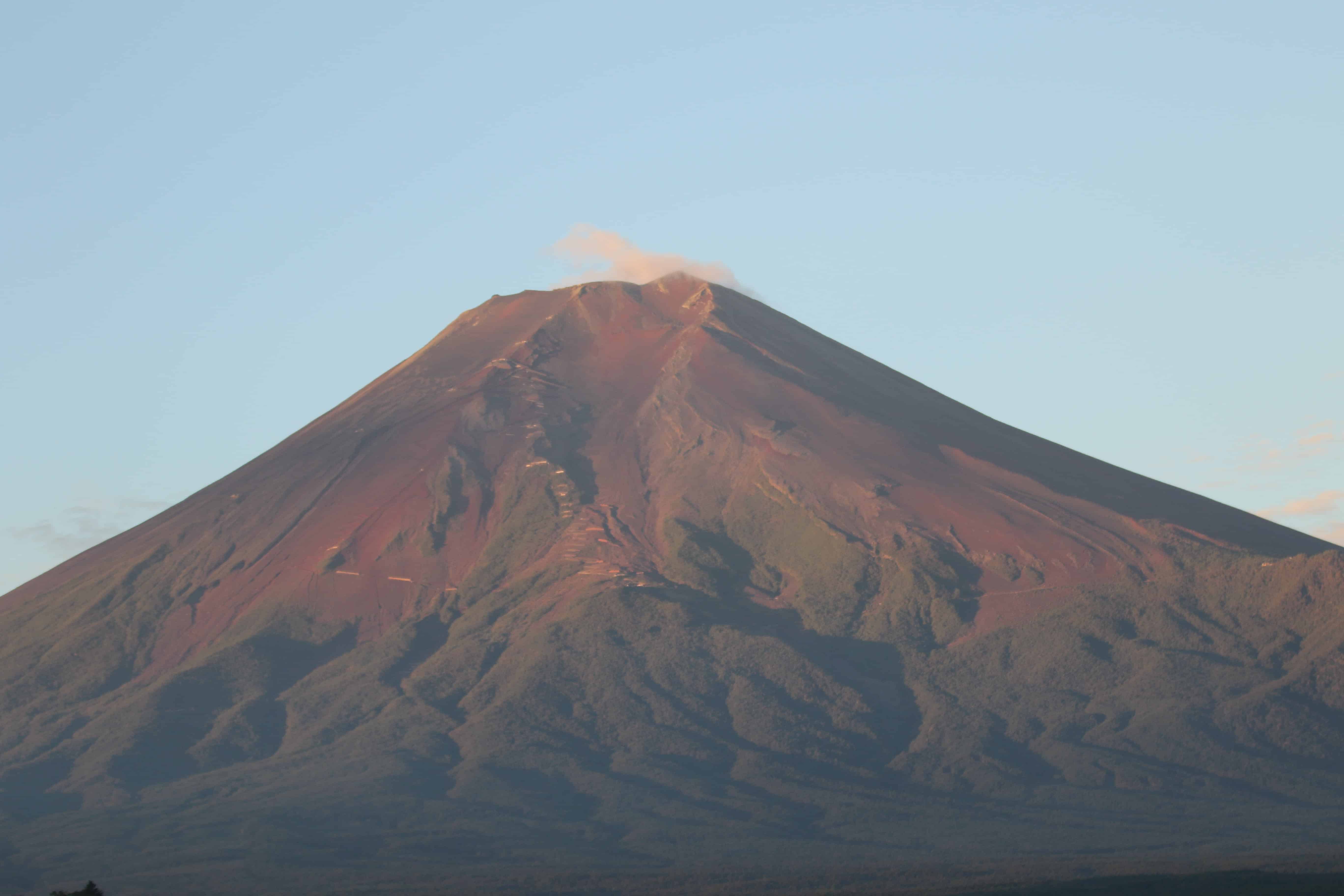
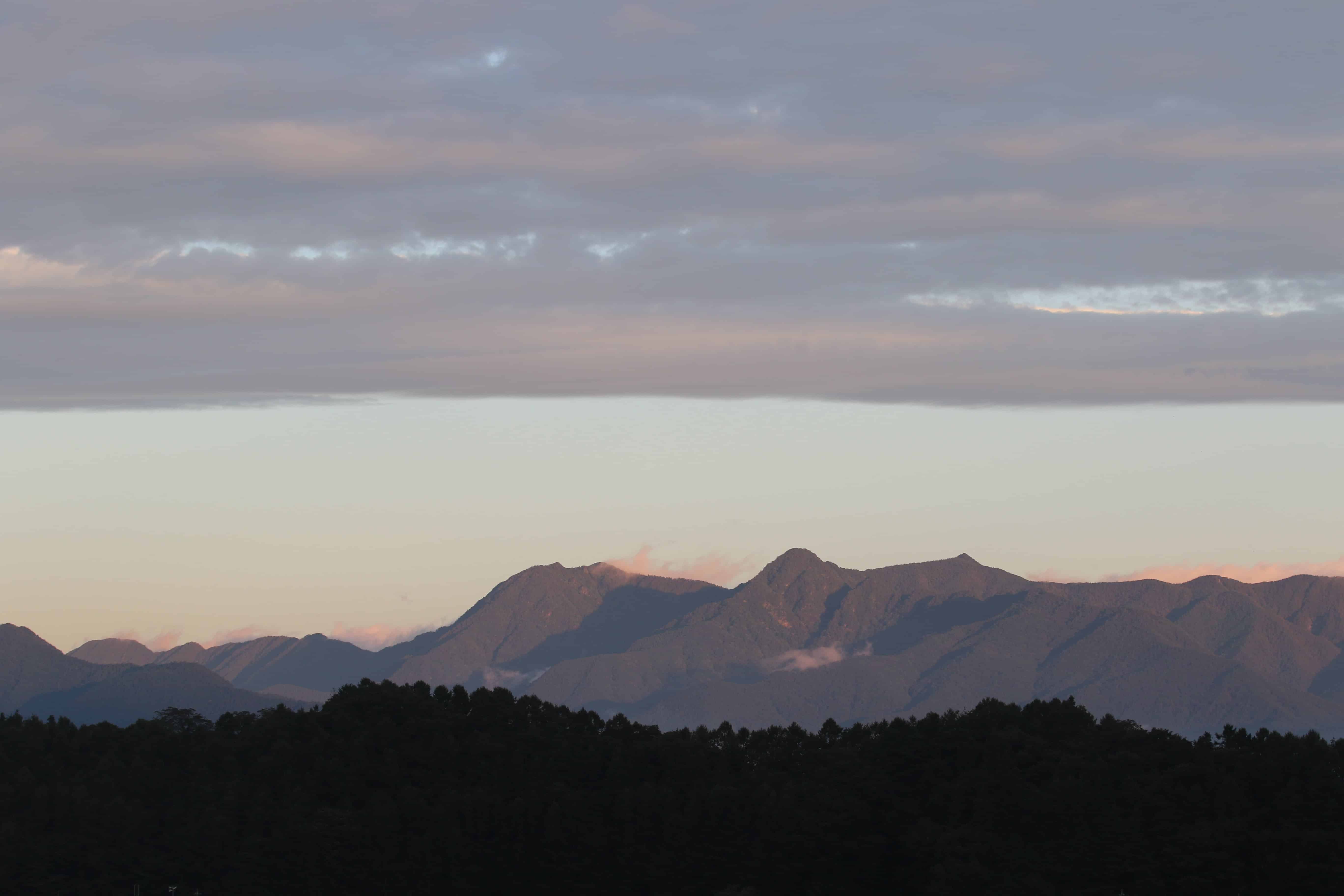
Of course there are plenty of other viewing points so it’s worth driving around the area and for seeing how she dynamically changes with the weather and time of day, we’d recommend early morning and right before sunset.
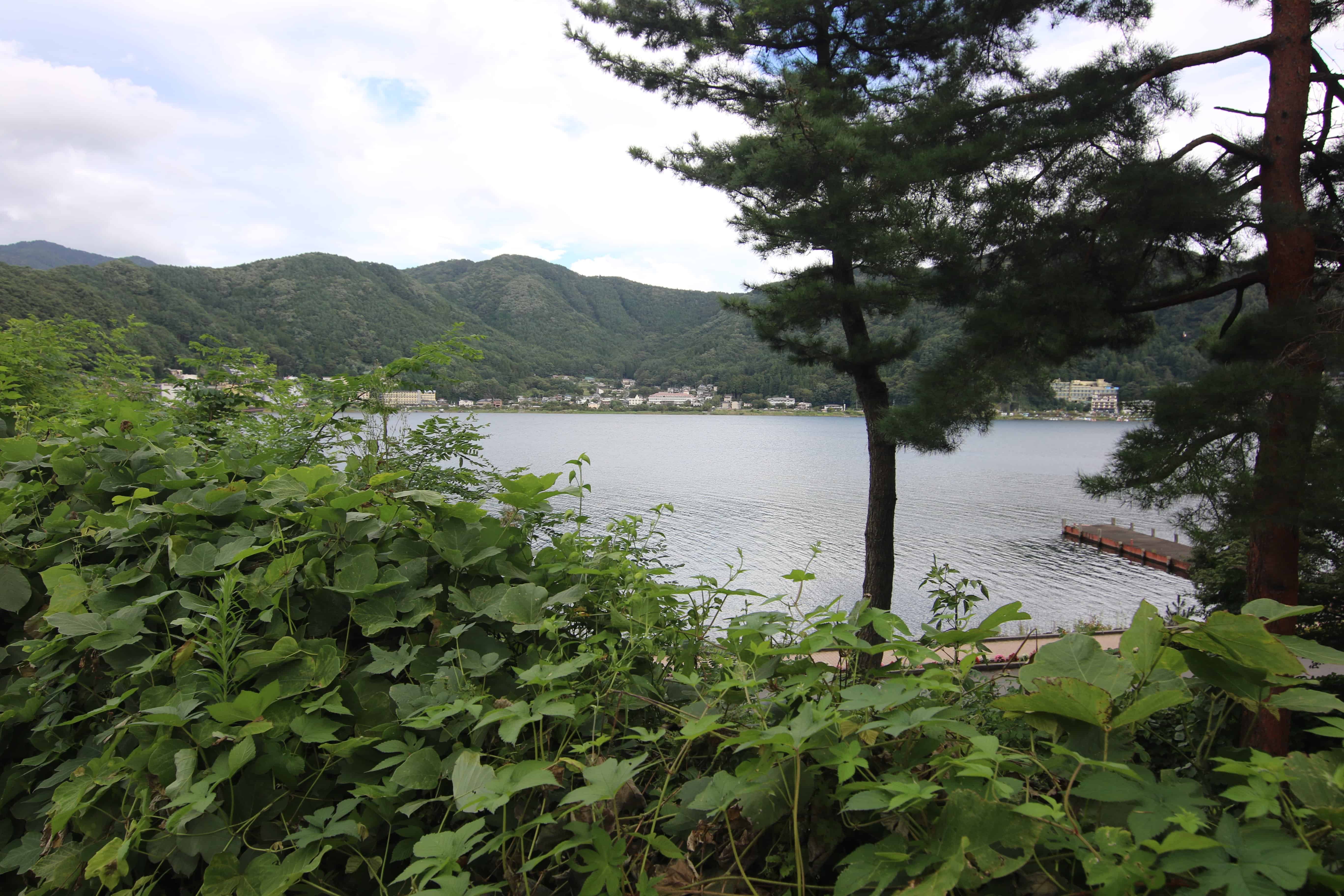
Below is another view of Mount Fuji during one of our afternoon drives through picturesque Yamanashi.
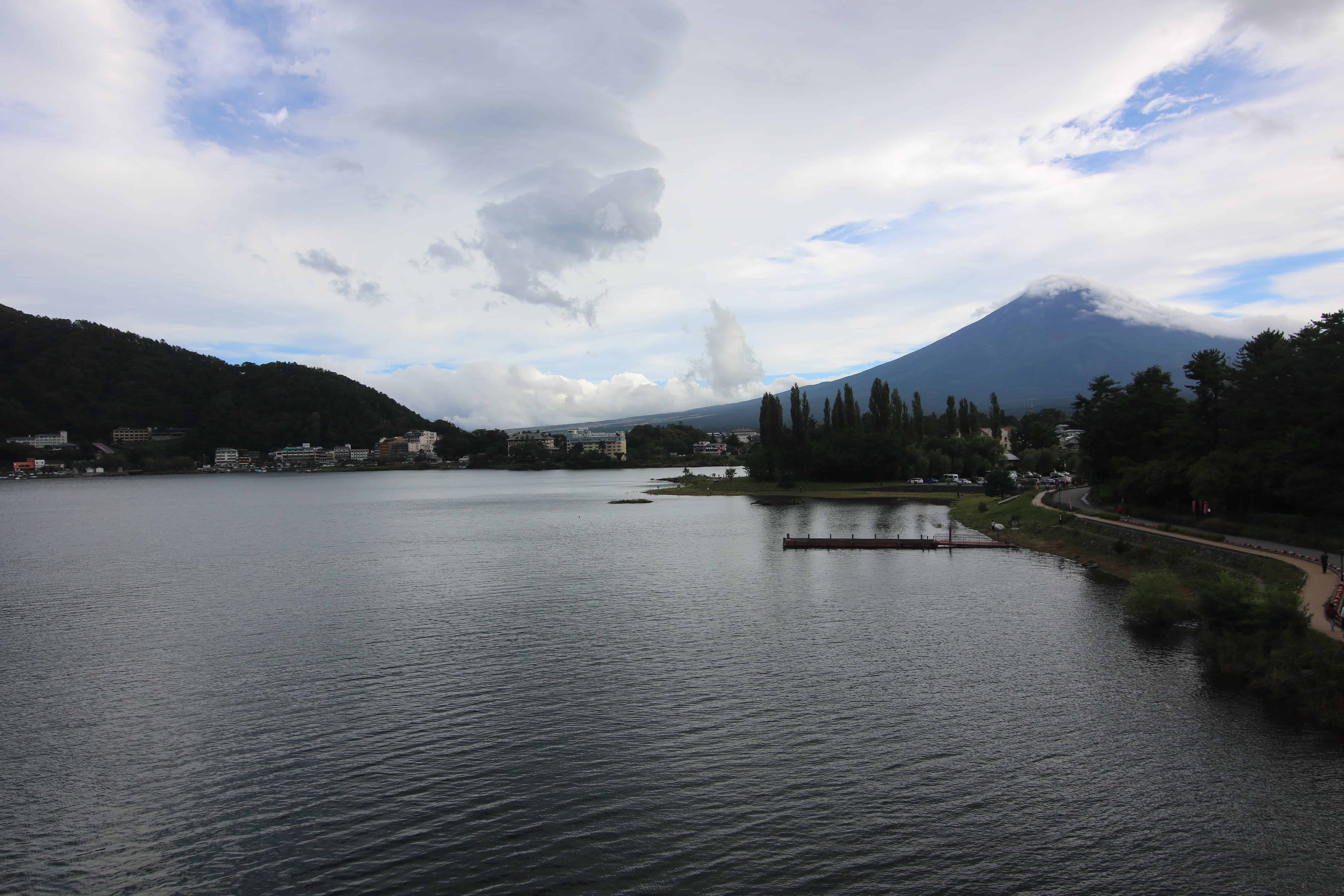
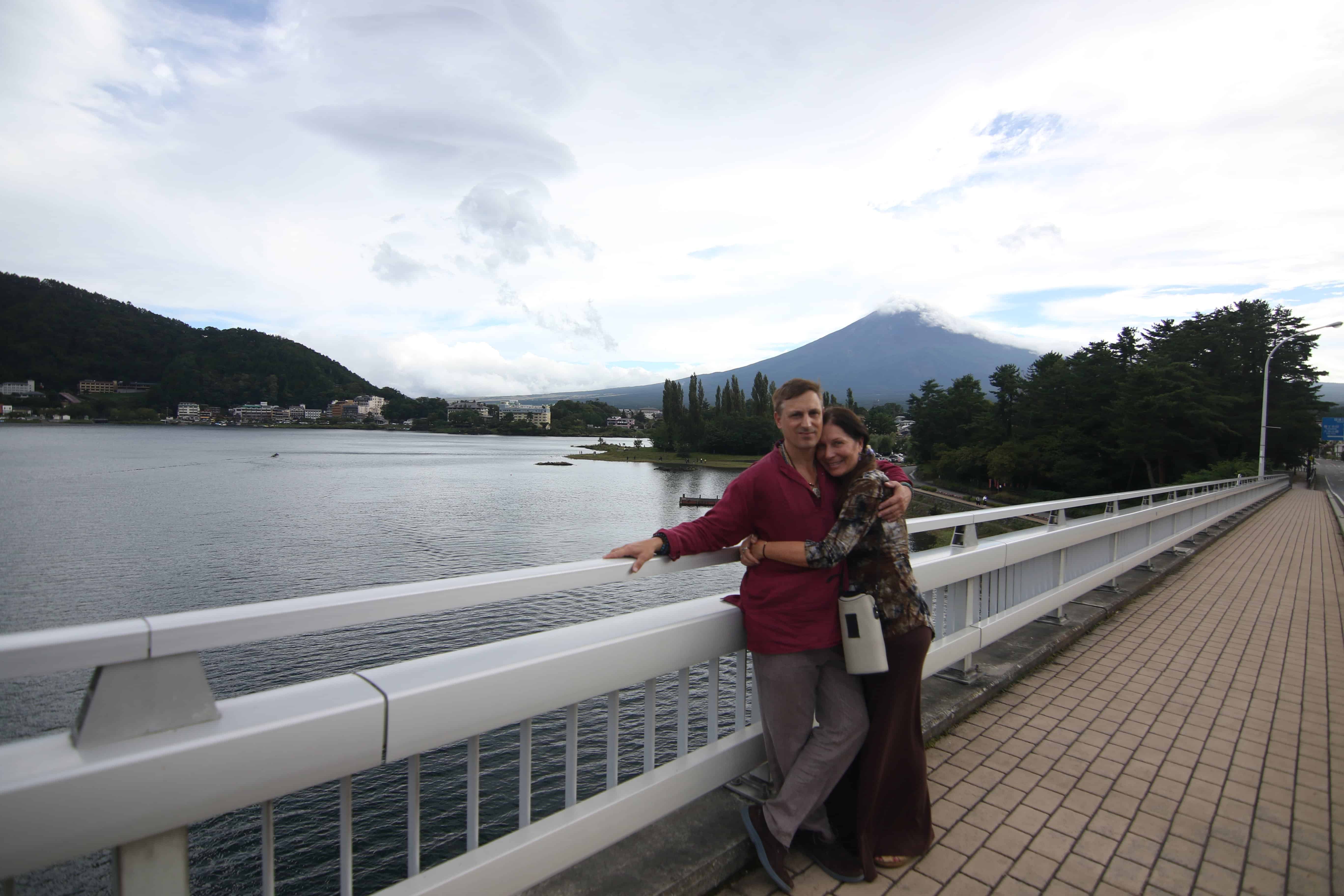
Mount Fuji, a romantic escape anytime of year in the heart of Yamanashi
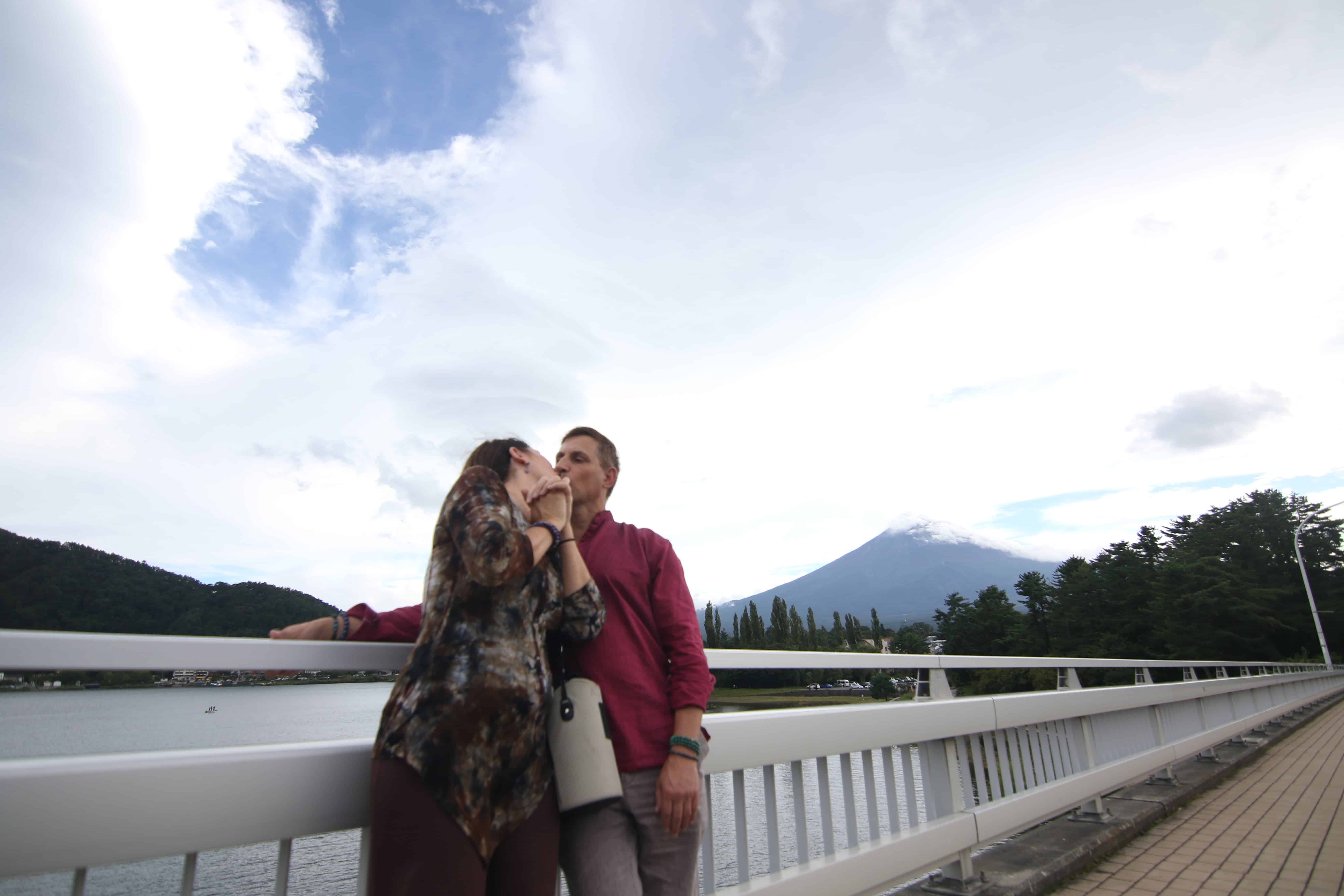

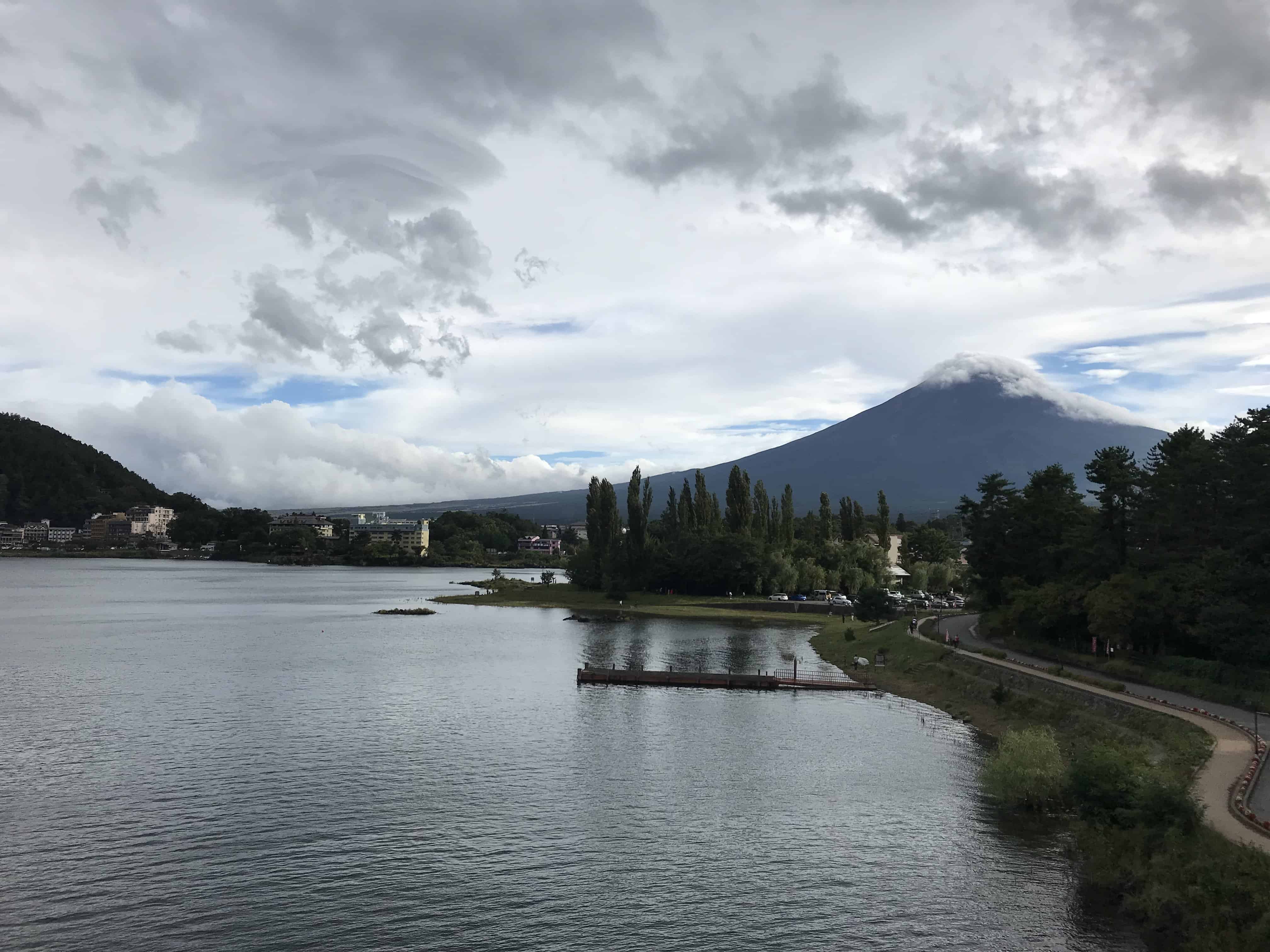
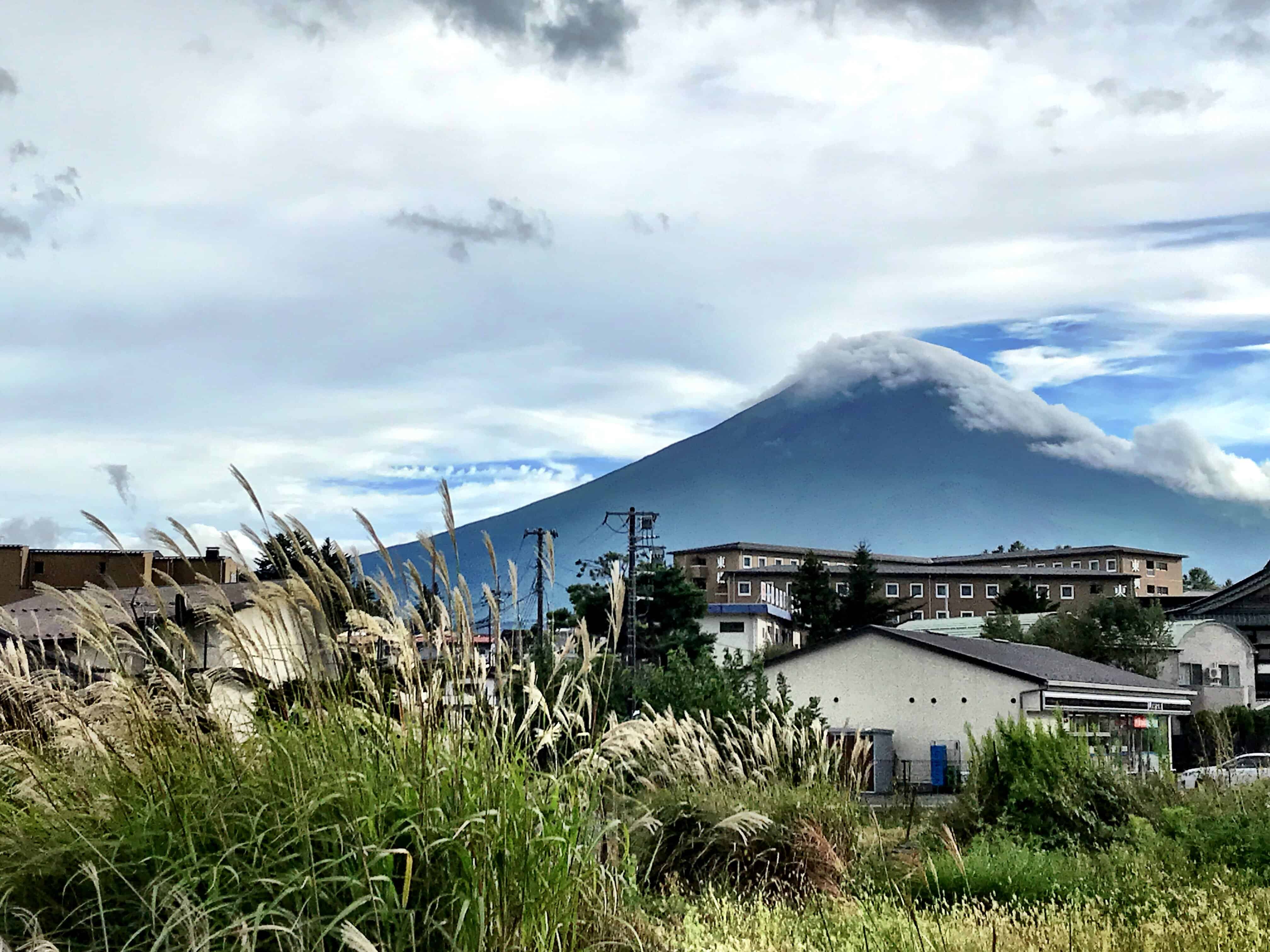
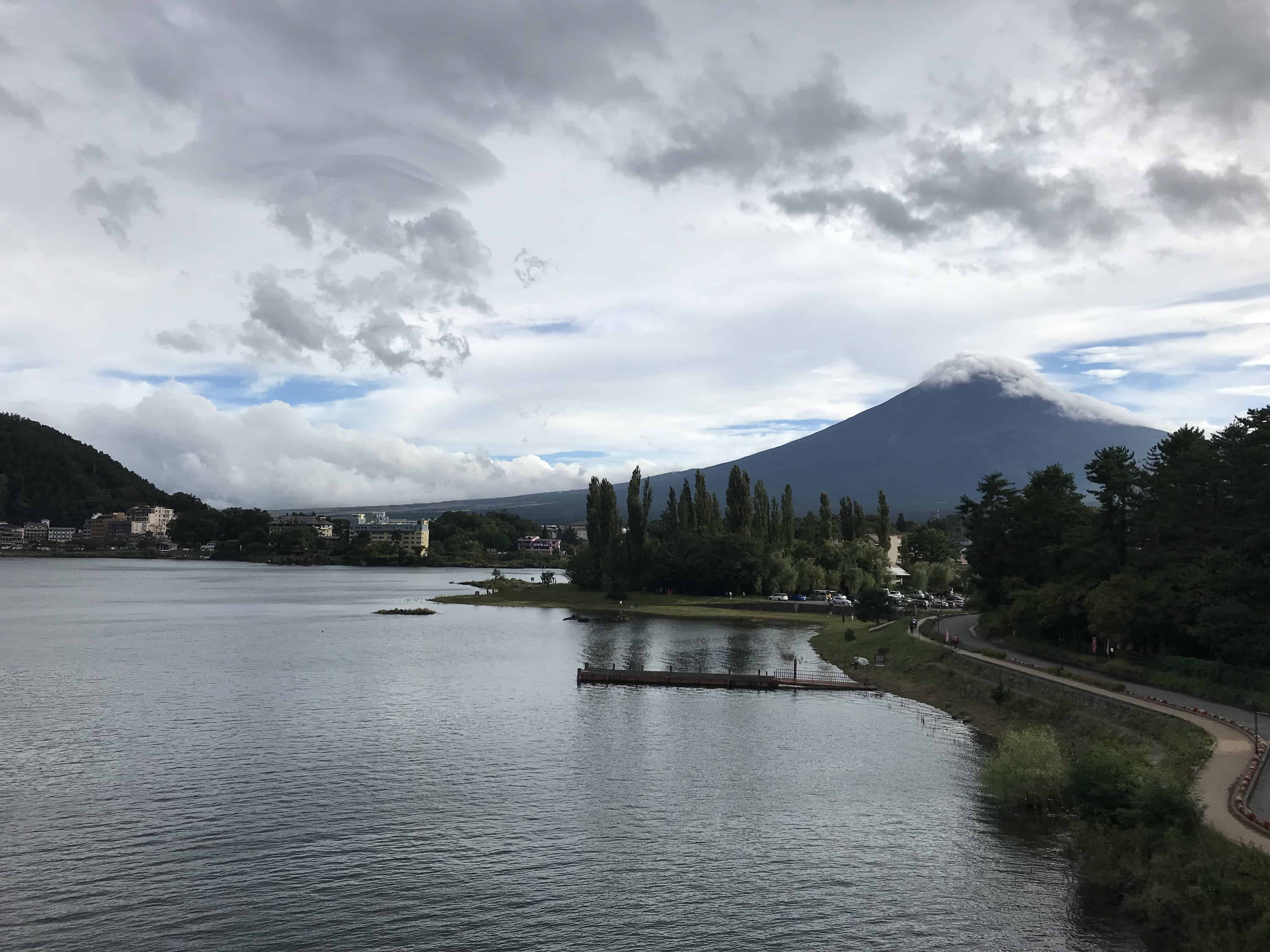

The two month summer climbing season for Mount Fuji starts on July 1 and runs until the end of August. Every year, over 200,000 people climb during this season. Typically, people drive up to the fifth station of the mountain on the Mount Fuji Pay Road (Fuji Subaru Line) and take around 6 hours or so to climb from the fifth station to the top of the mountain.
Onsens
We mentioned onsens above, such as the upscale and renowned Hotel Kaneyamaen we stayed at in Mount Fiji. Here are some snapshots from our onsen moments throughout Yamanashi. We tried them elsewhere as well, so be sure to read our Nikko Travel Guide for more suggestions to the north of Tokyo.
Wajoen Onsen
Located in Fuefuki, Wajoen Onsen is a very classic and traditional style Japanese onsen — at the time we were there, no other westerners were staying there. We got the feeling from talking to our hosts and guides that it is more frequented by locals than foreign tourists. They use a cell phone app for translation which worked well for us, but if you’re wanting something less traditional, I’d suggest Kaneyamaen, as they also offer western style food as well, whereas Wajoen is about as traditional as it gets. We loved it!
The rooms at Wajoen are extremely spacious — living room area with a low Japanese style table to eat dinner. There’s free parking and breakfast here as well as hot tubs just outside the rooms as well as larger hot baths in a public area (separated between men and women). They also offer really lovely pajamas and robes in a few different colors you can use to lounge around your onsen’s private room as well as the main lobby area, which has a gift shop, table for wines, teas and coffee.
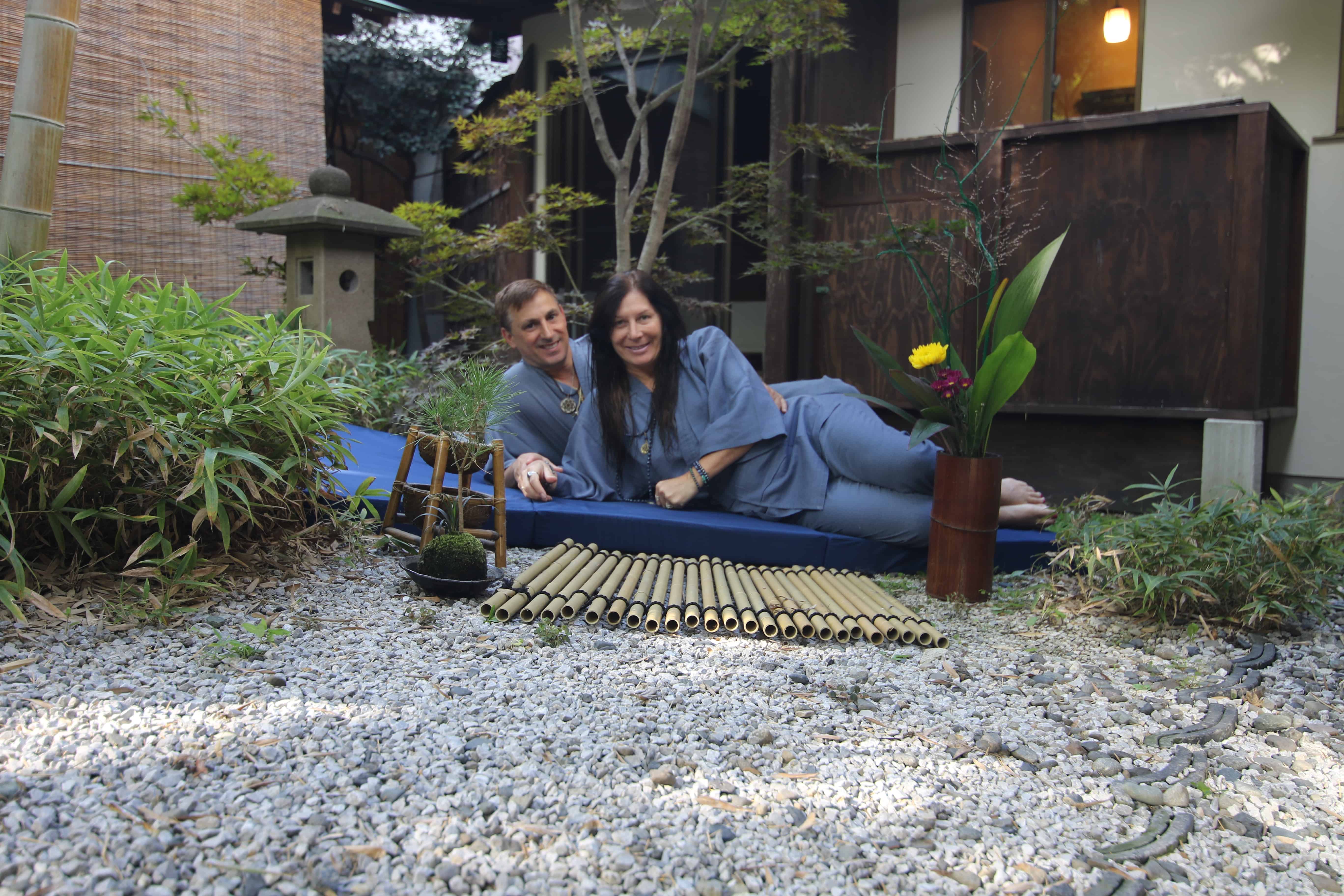
In the lovely picturesque courtyard at the Wajoen Onsen
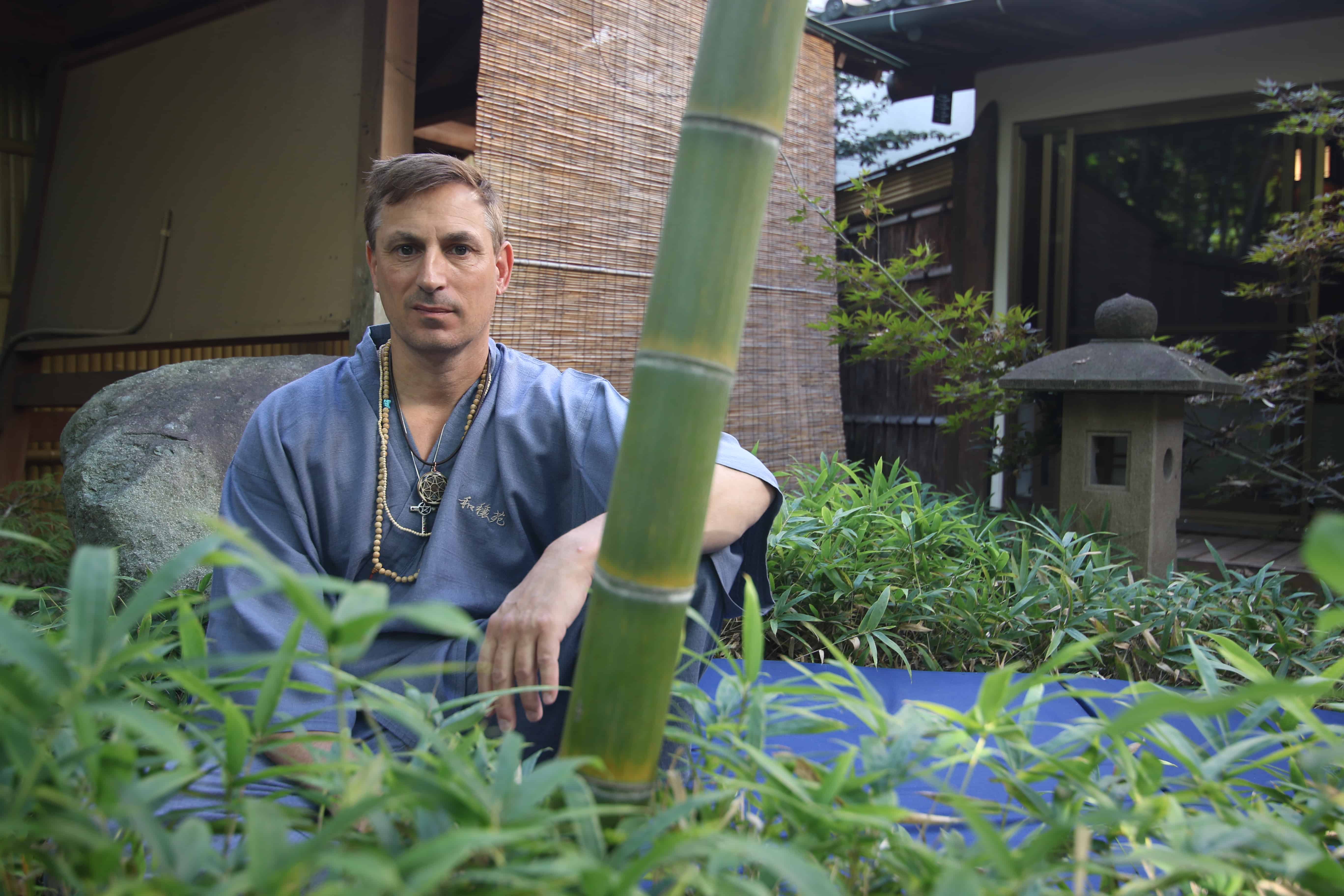
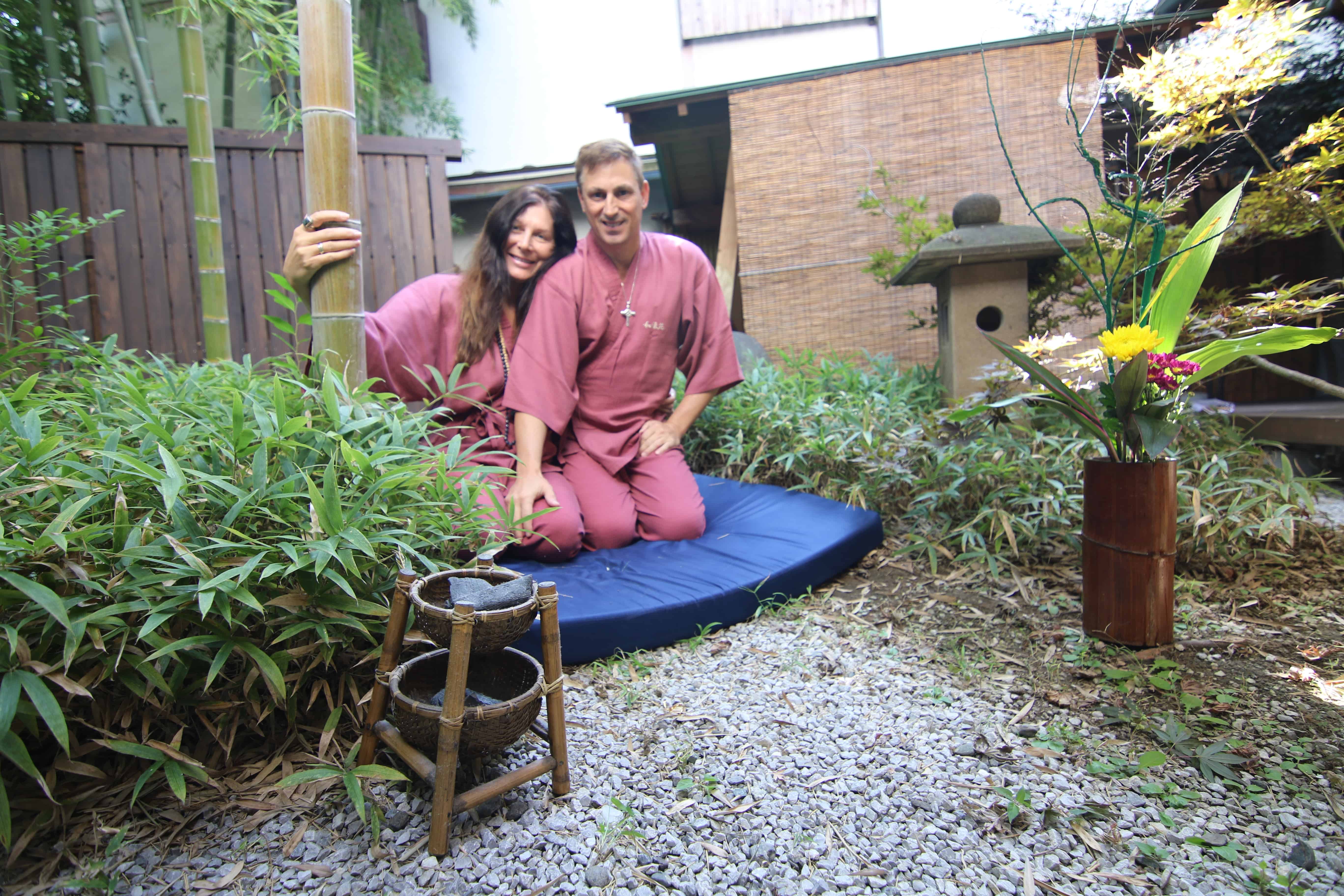
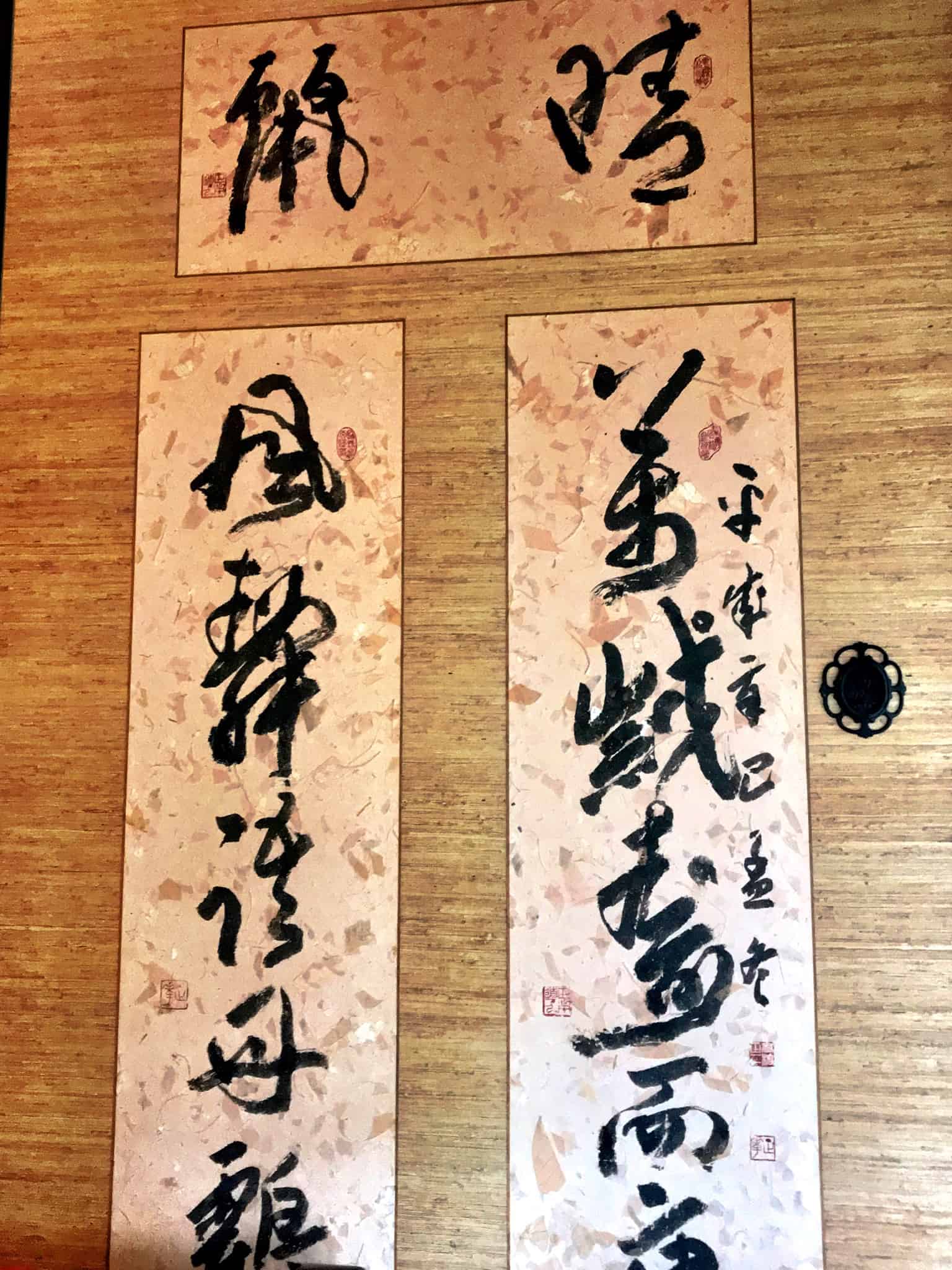
Unique doorway as you walk through the property
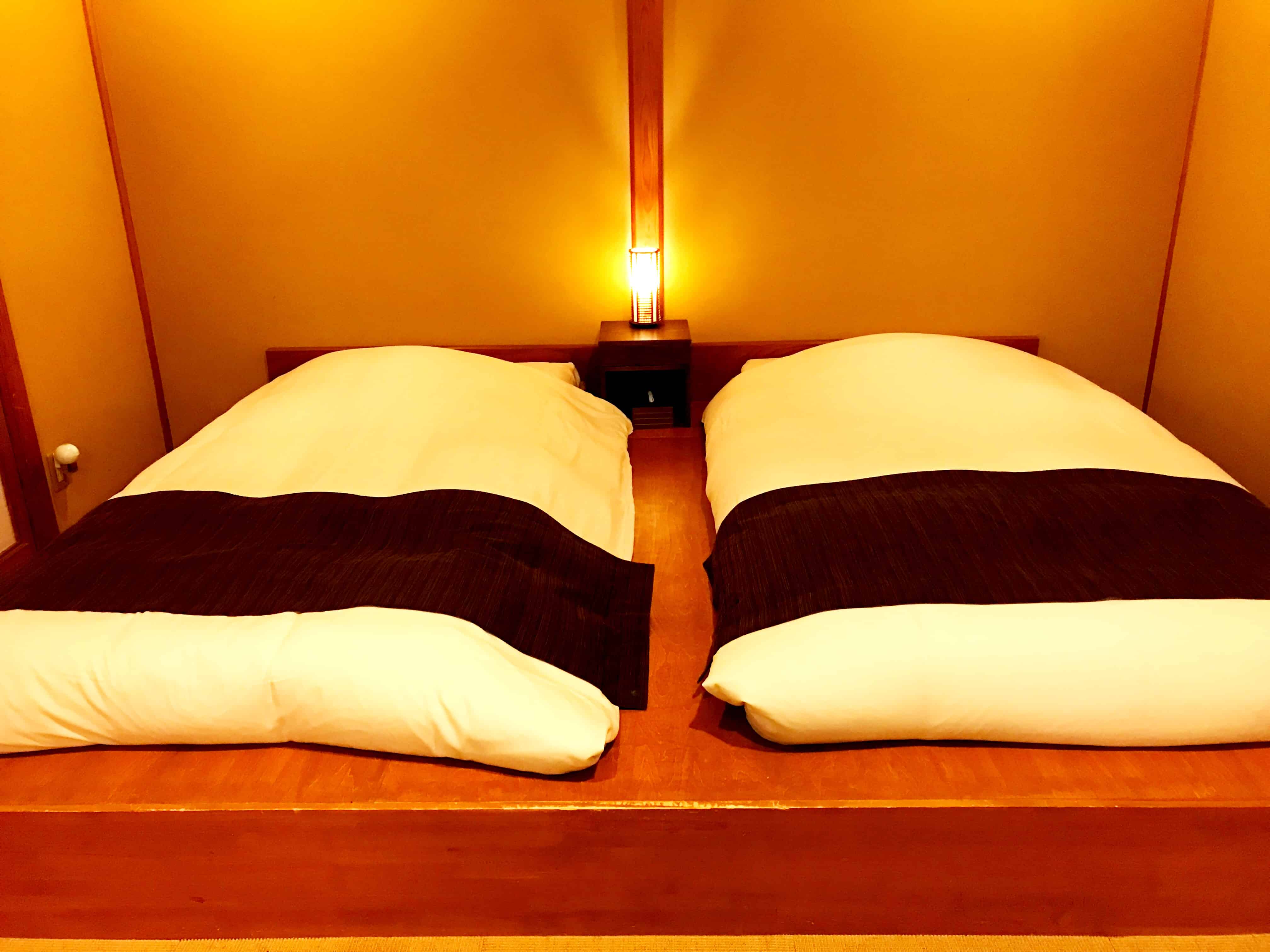
Traditional side-by-side beds at the Wajoen Onsen in Yamanashi
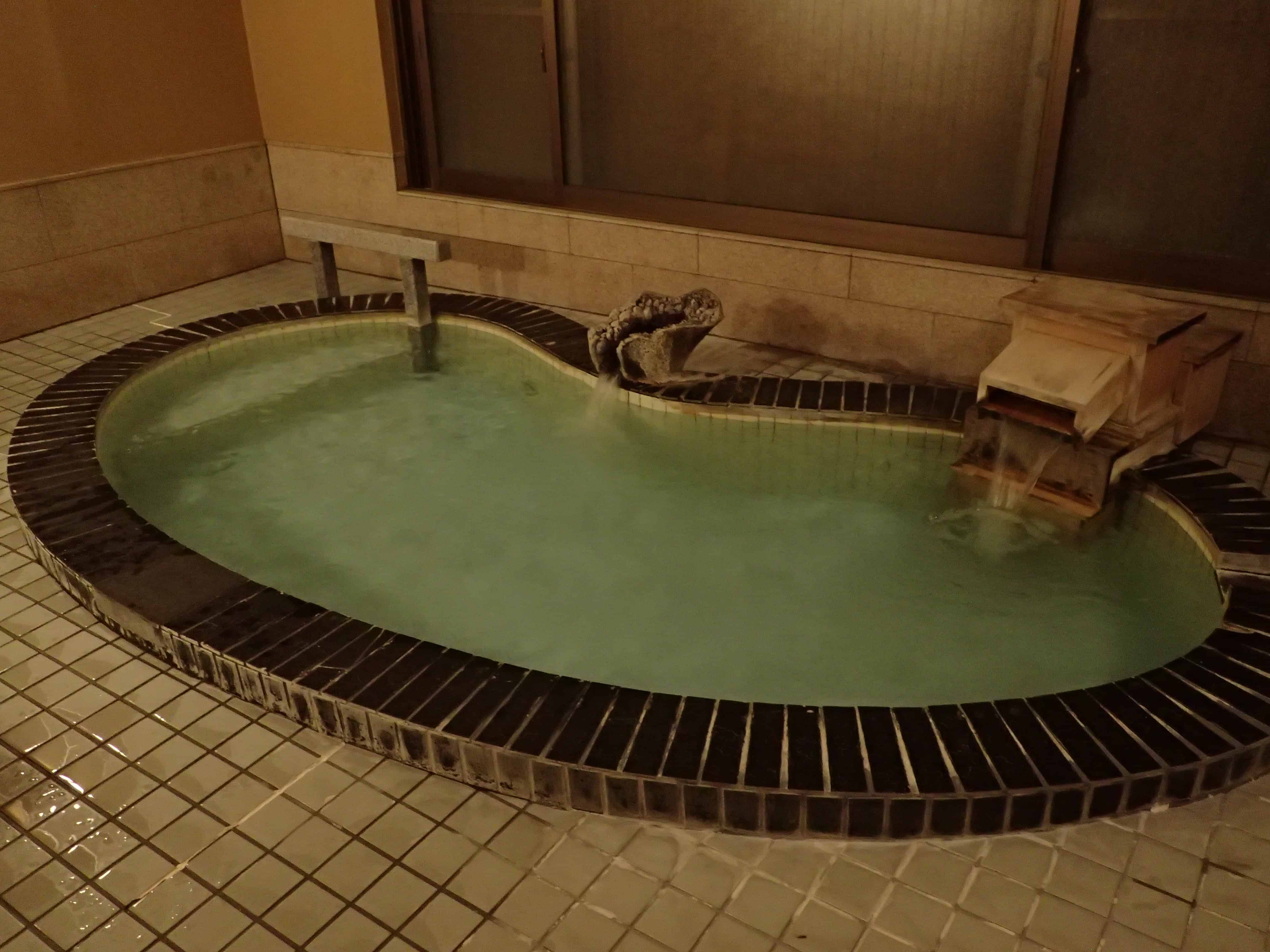
Public Bath area (for women) at Wajoen Onsen in Yamanashi
Dining at Wajoen was a ‘trip’ to say the least. Everything was so traditional and unique — the portions were small and since we were at the start of our trip, we didn’t realize that the food was going to keep coming and coming…..onsen meals range from 5 to 8 courses, with 7 being most typical.
We enjoyed a Sukimi Tofu, followed by Chestnuts and Chestnut leaves. We also had shrimp, edamame, mushrooms and well, a…..fried grasshopper. We weren’t expecting that one. They also served Shitake Mushroom and Salmon Soup, a Clam Miso Soup with fried rice and pickles, a Sashimi platter which included tuna, sweet shrimp, barracuda and scallops. Anthony’s favorite was the simple Udong Noodles — also delish was their Salmon Grilled dish with fried Konjac and their sweet potatoes, which was perfect for the Autumn season. My favorite was their Koshu beef (so tender), served with Spicy Miso and Ponzu sauces.
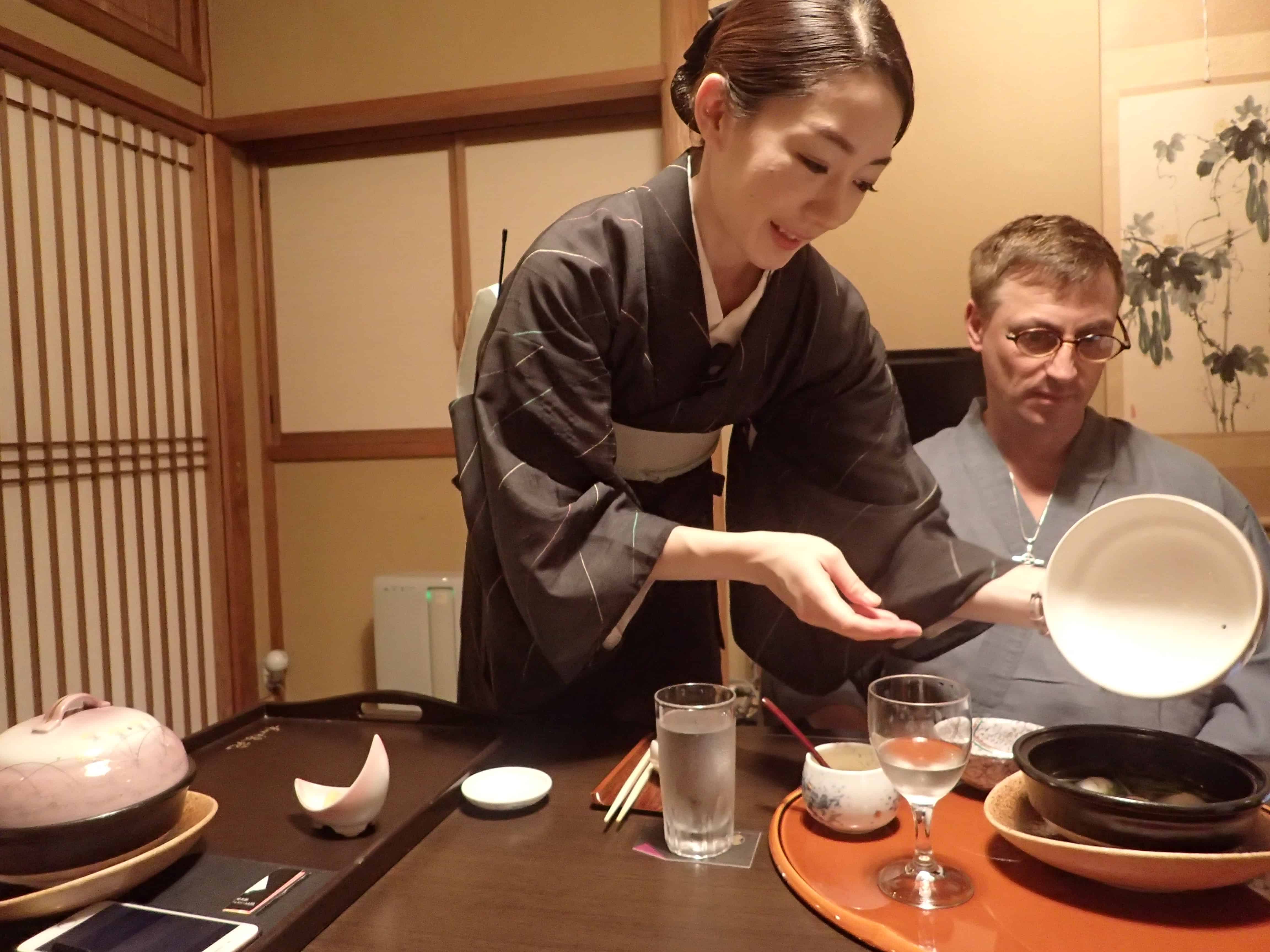
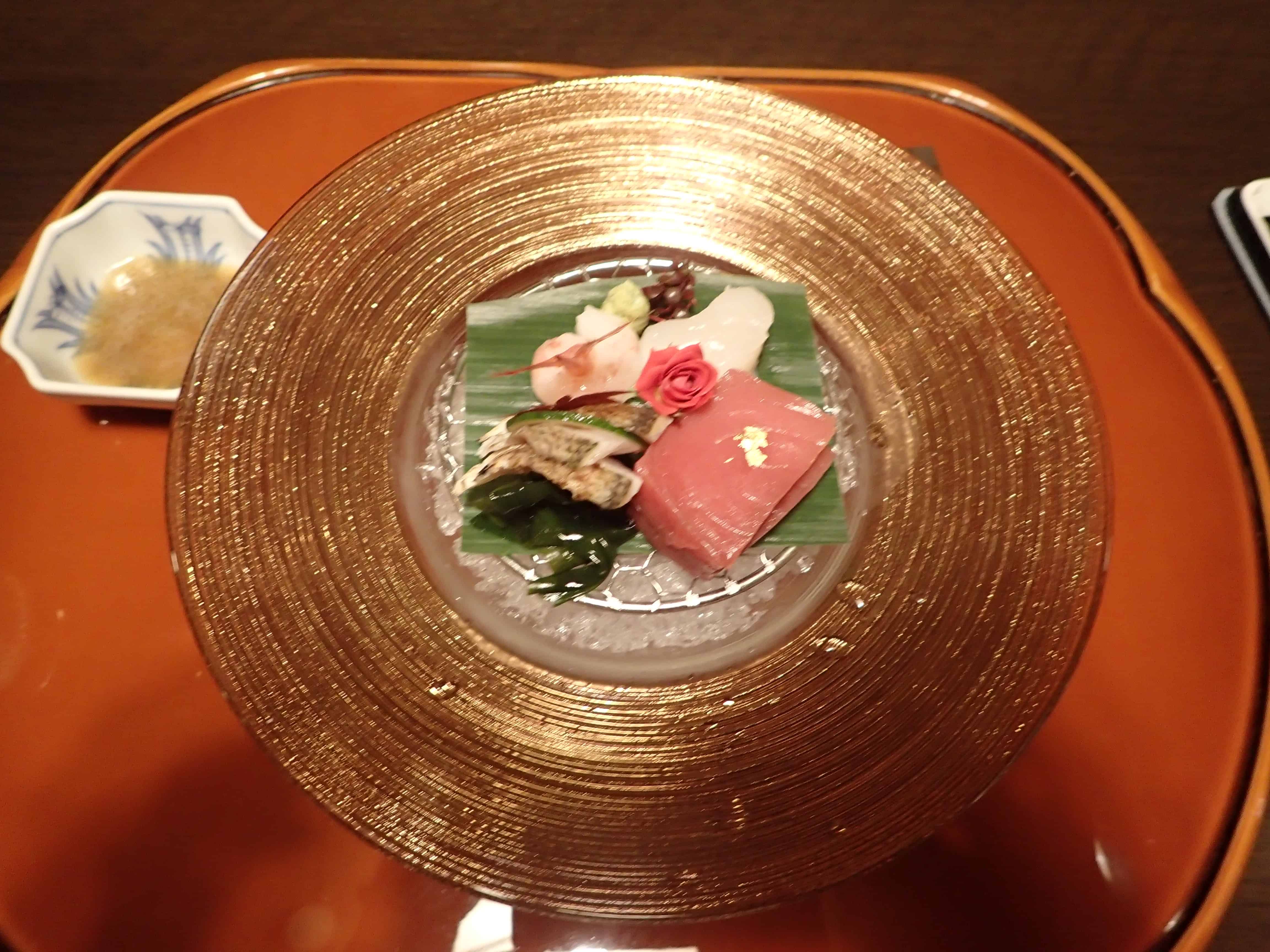
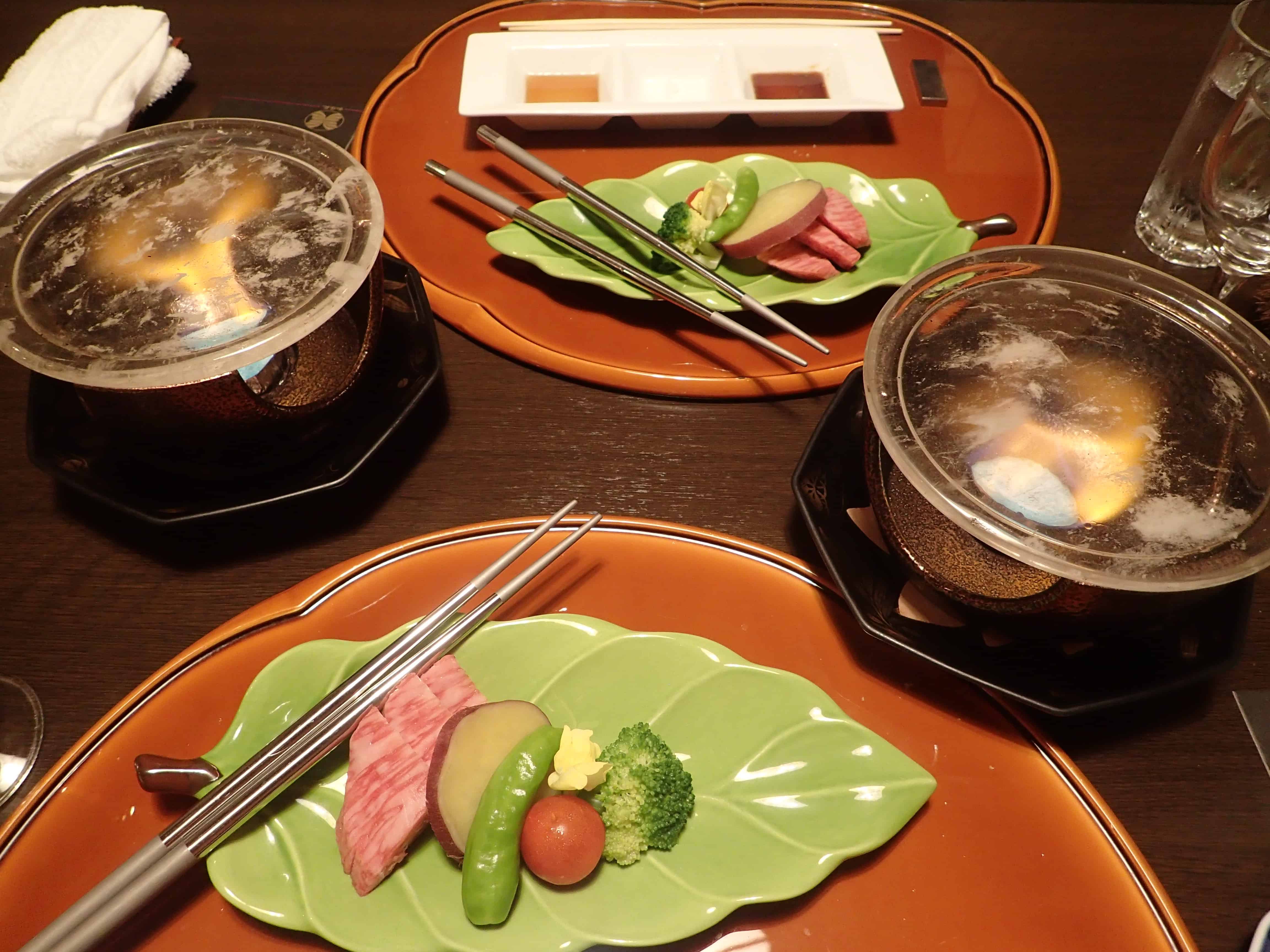
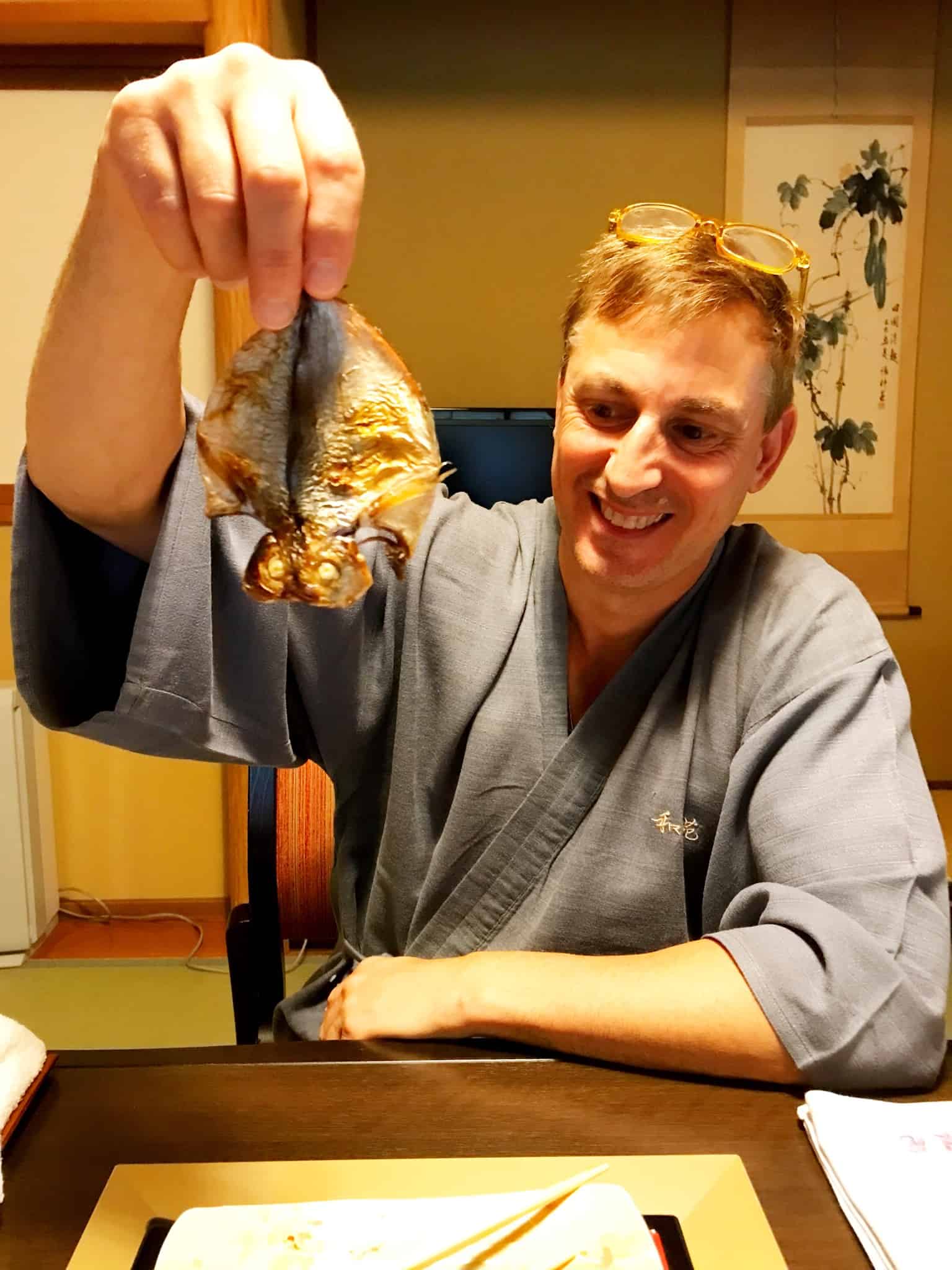
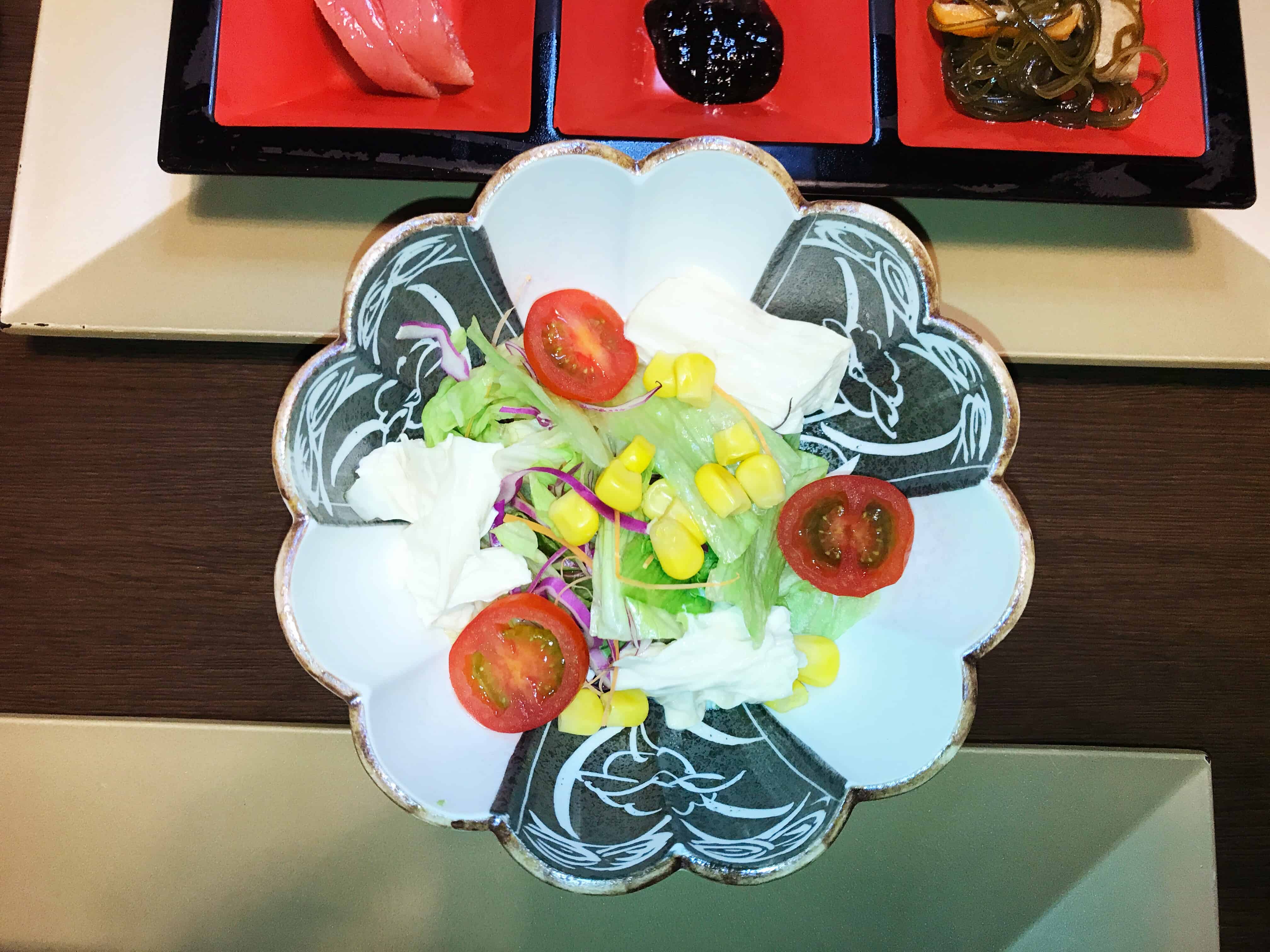
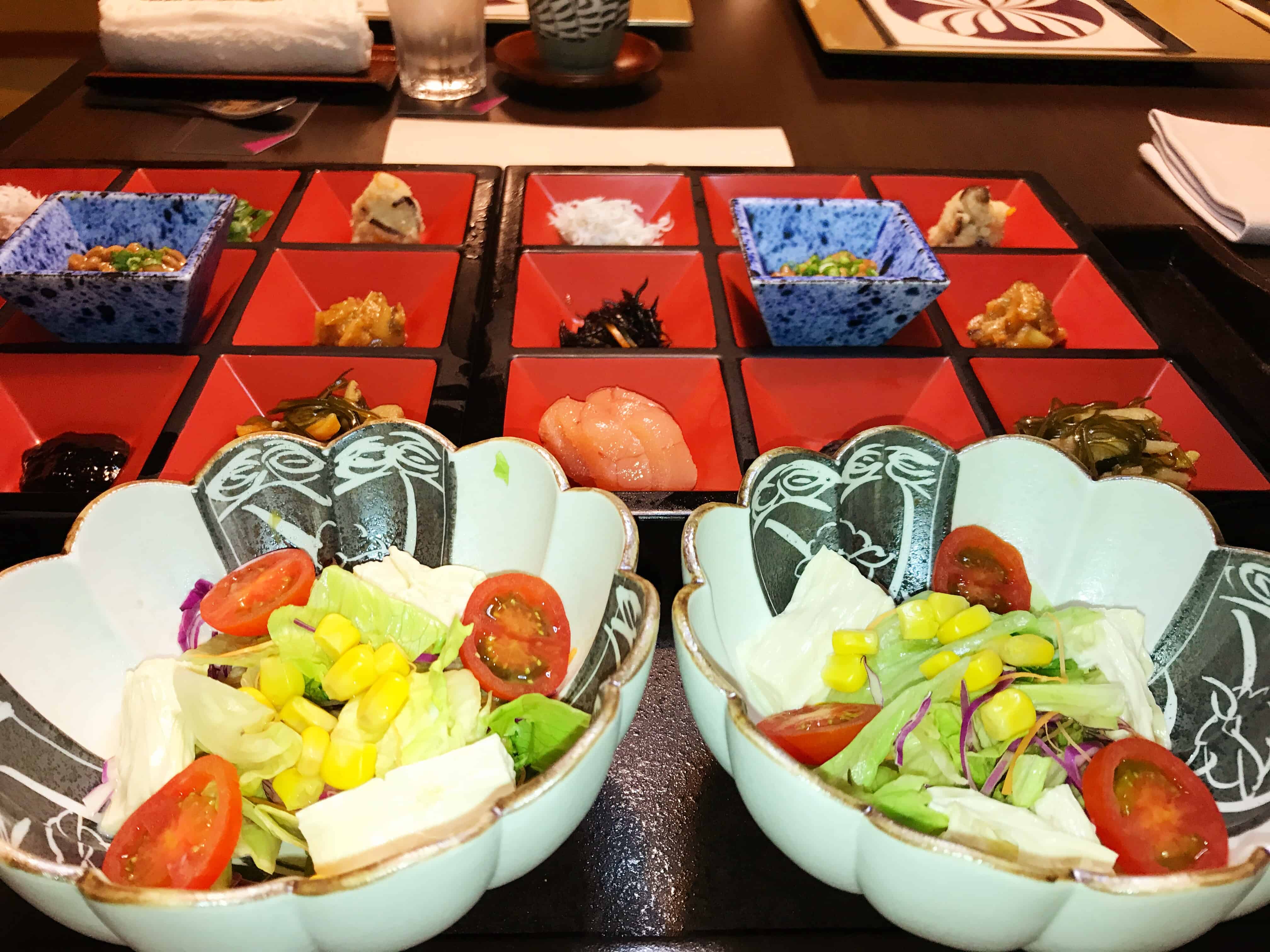
So many dish choices — just look at the variety

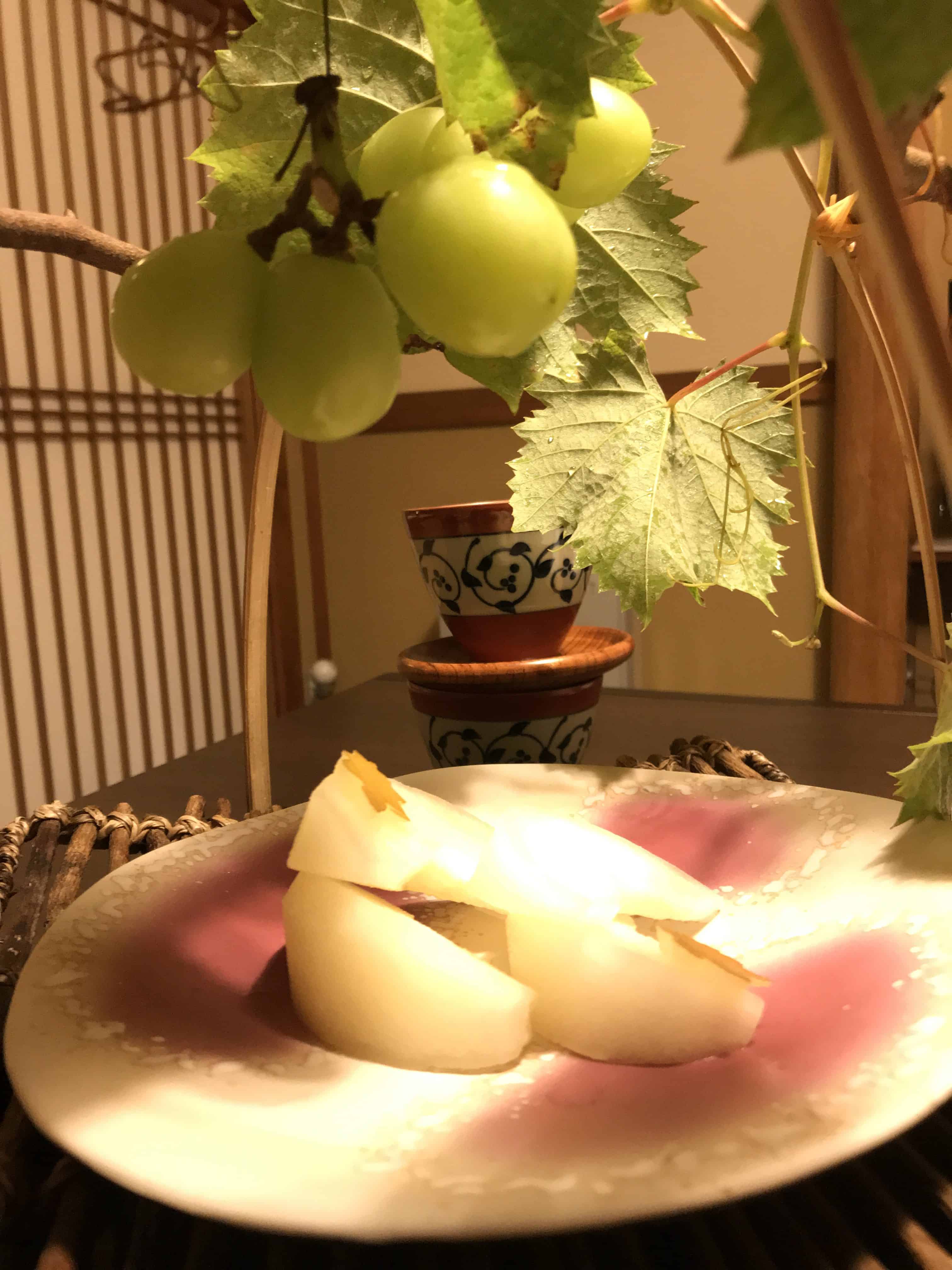
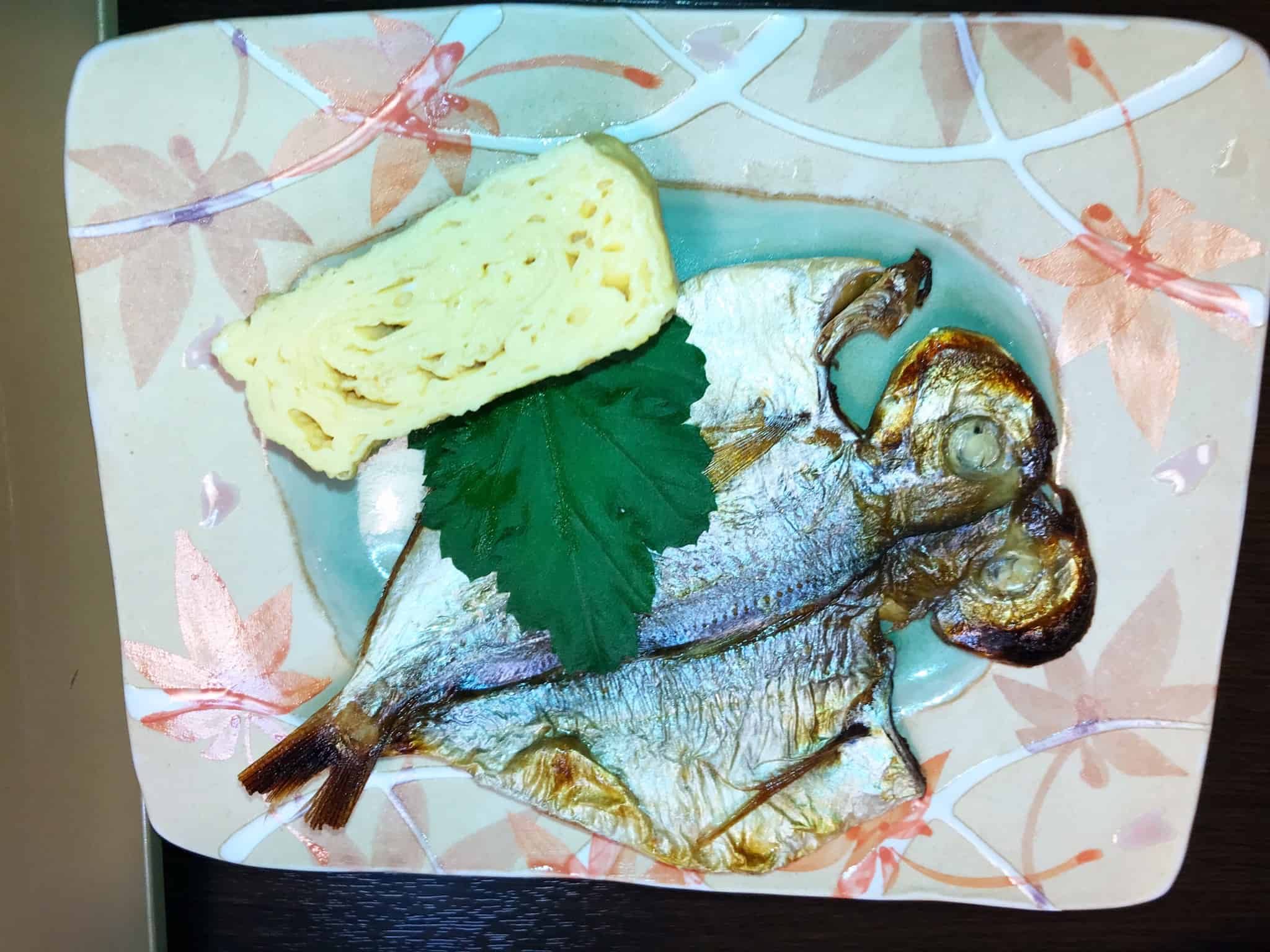
Tokiwa Hotel
The Tokiwa Hotel was also a unique experience. Also located in the Yamanashi Prefecture, this hotel is a bit more stately and has western-style rooms and dining as well as your classic Japanese meal options. The property is known for its history and has several generations of the Imperial family, foreign nobility, esteemed artists and writers, and other well-known domestic and foreign guests. We were lucky enough to stay in the suite that was made for the Imperial family’s stay early on so had the feeling of King and Queen service while we were there.
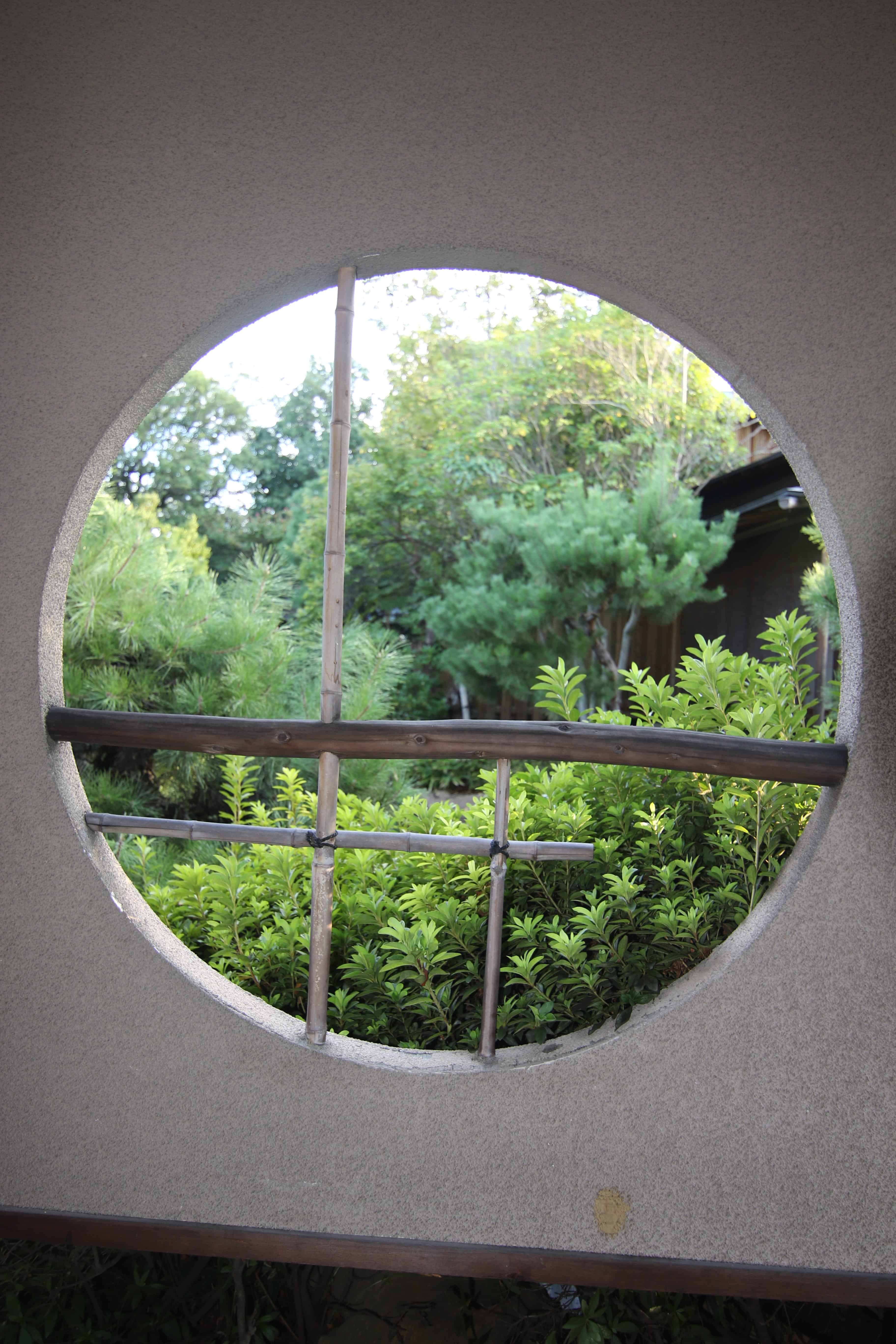
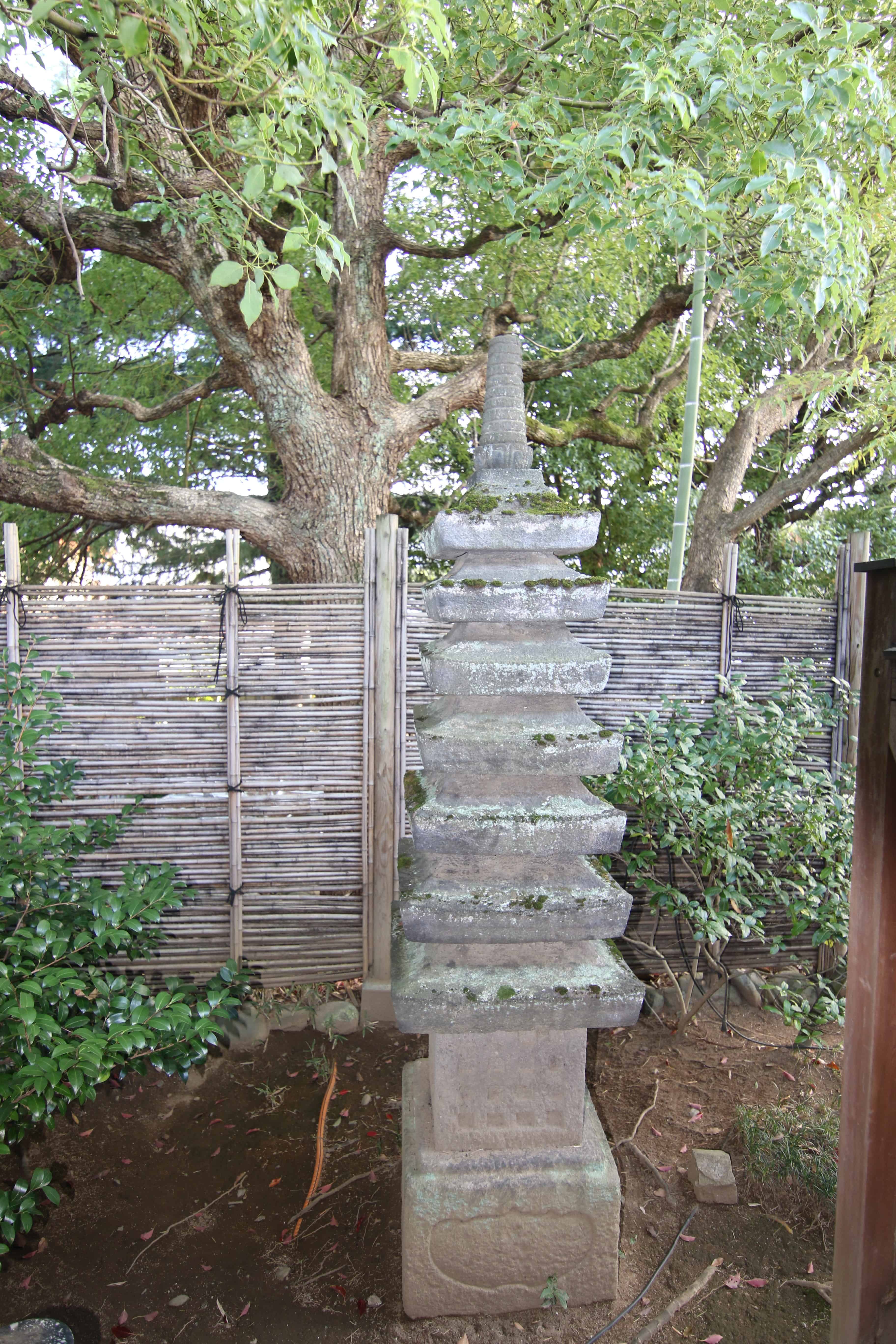
Below, a small hot tub in the courtyard right outside our room.
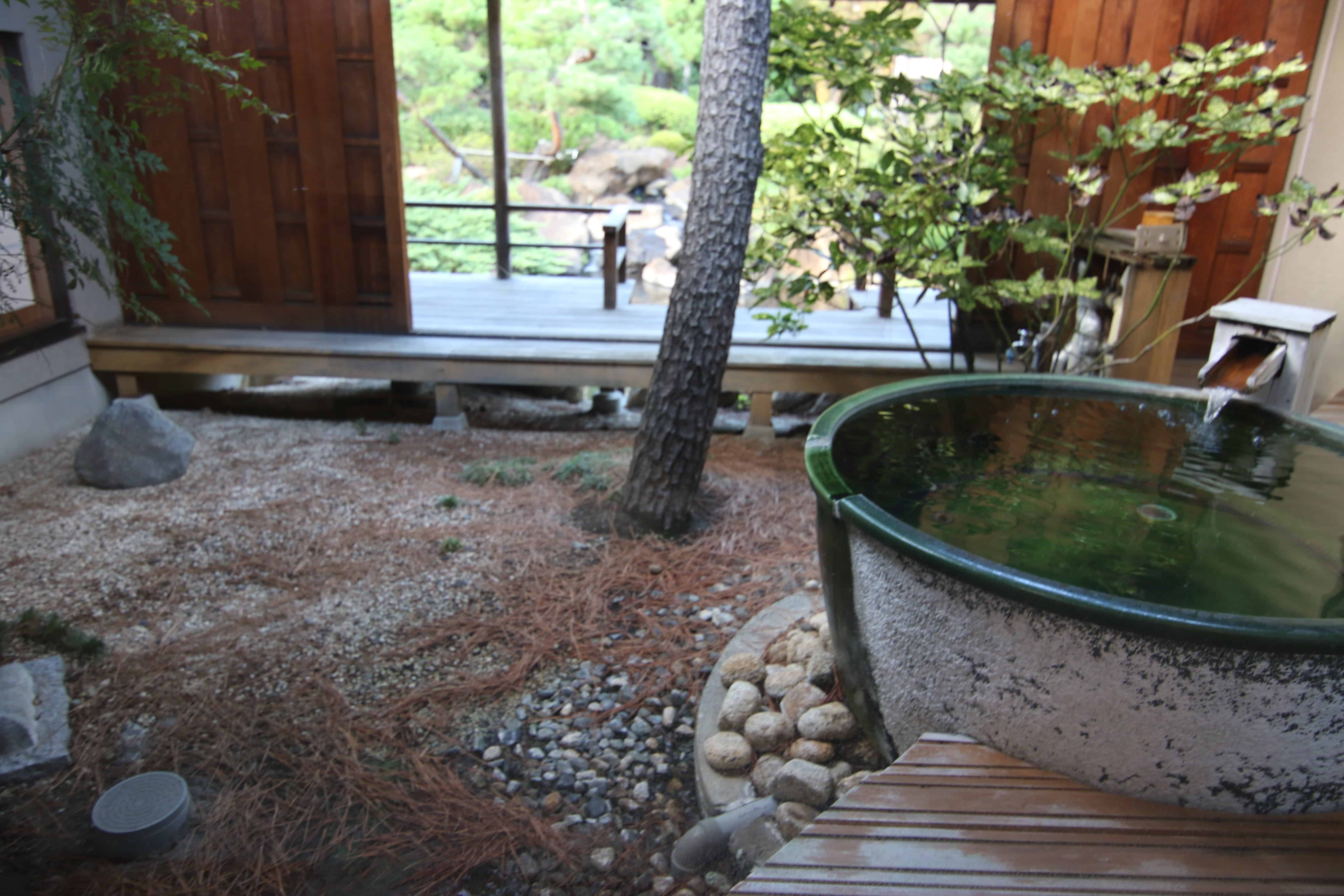
In the gardens, you can find a unique lantern from the mid-Edo period, from Kofu’s former Hosoda family. There is also a Takamatsunomiya hand-planted chestnut tree, which was planted when Takamatsu-Miya visited in 1948.
Writer Hitomi Yamaguchi mentioned the quince tree in the gardens in a novel noting that the flower language is “only love” after all. There’s also a god who protects the hot springs of the hotel at the Yugongen Shrine. Writers used to hang out here with wine in the afternoons.
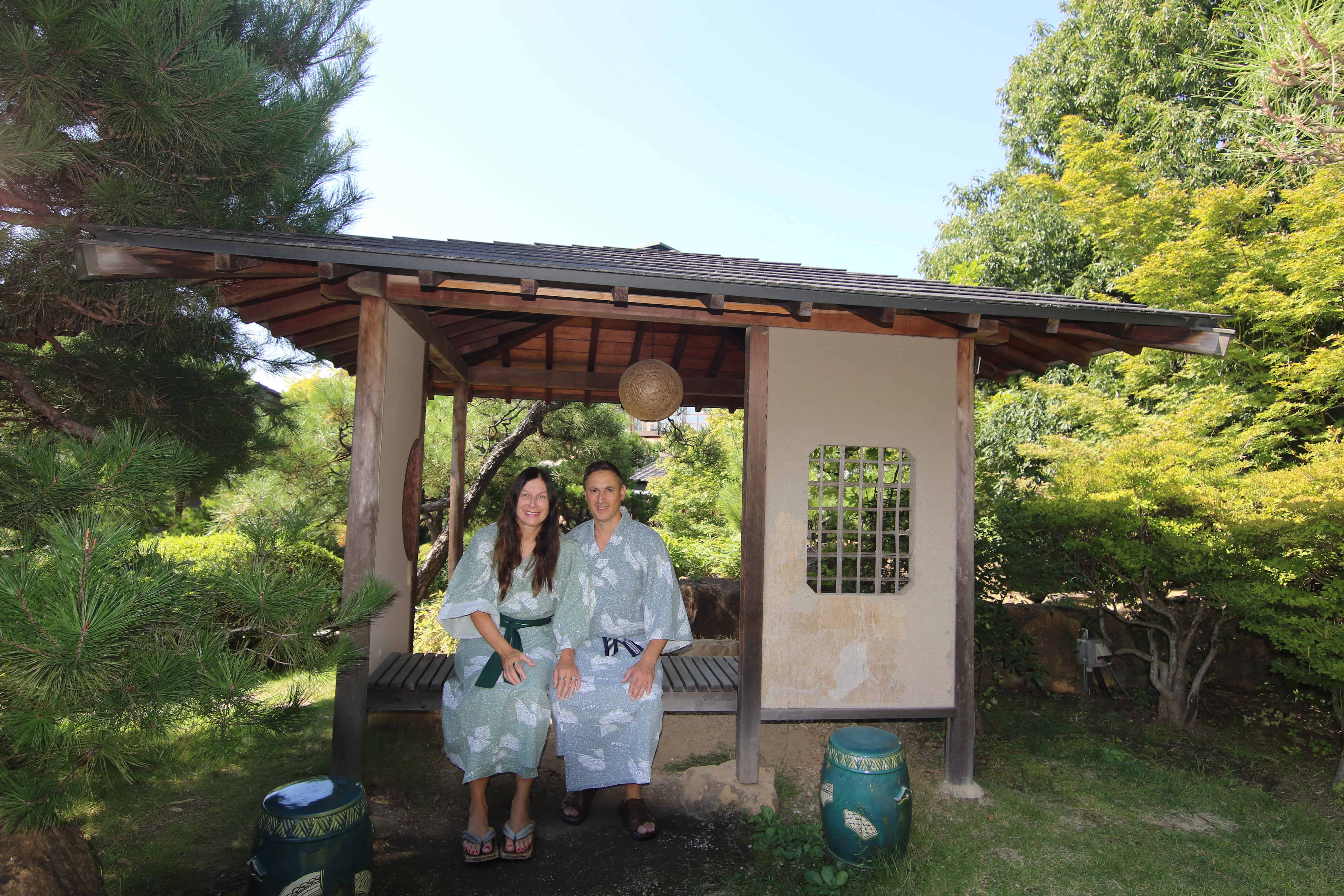
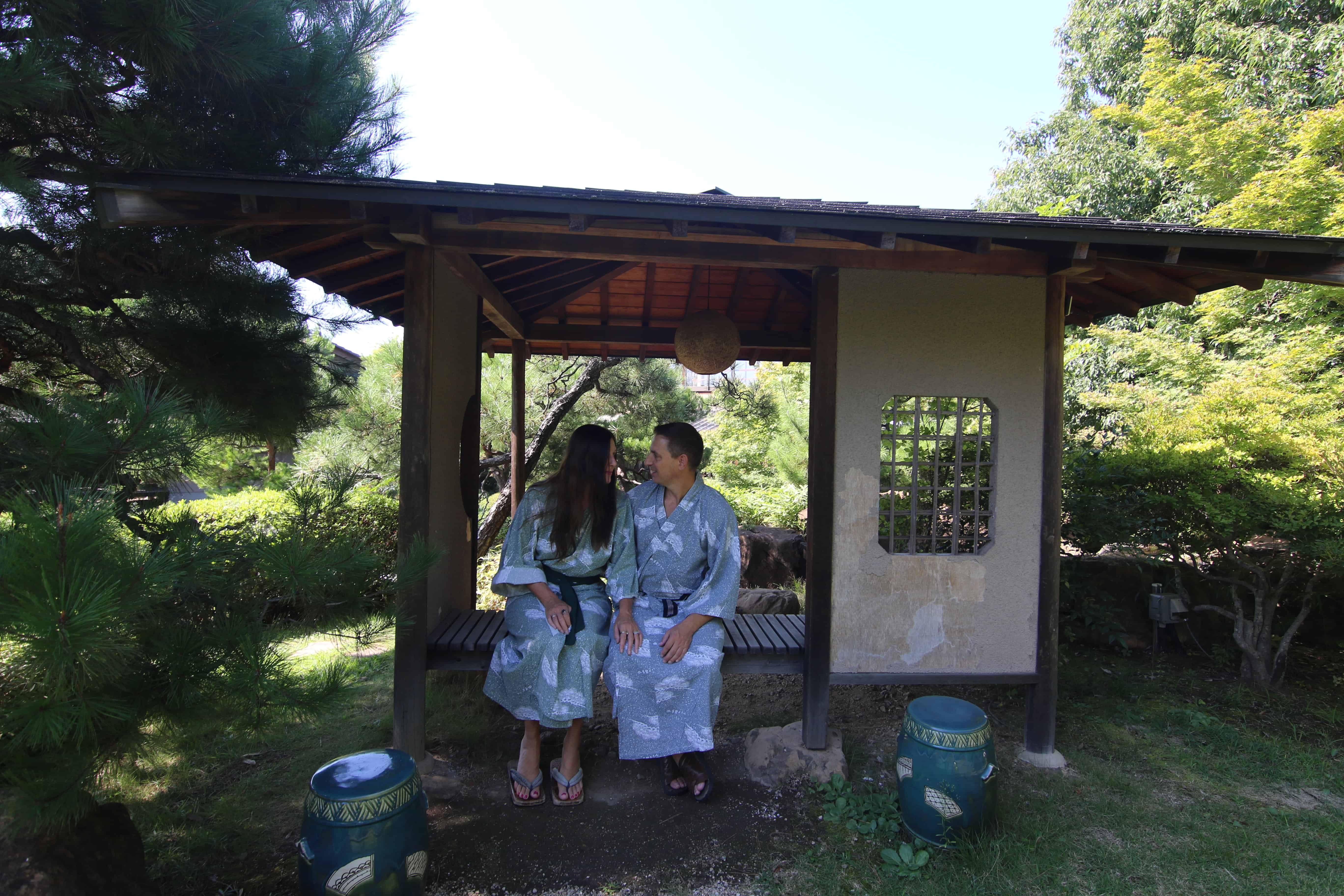
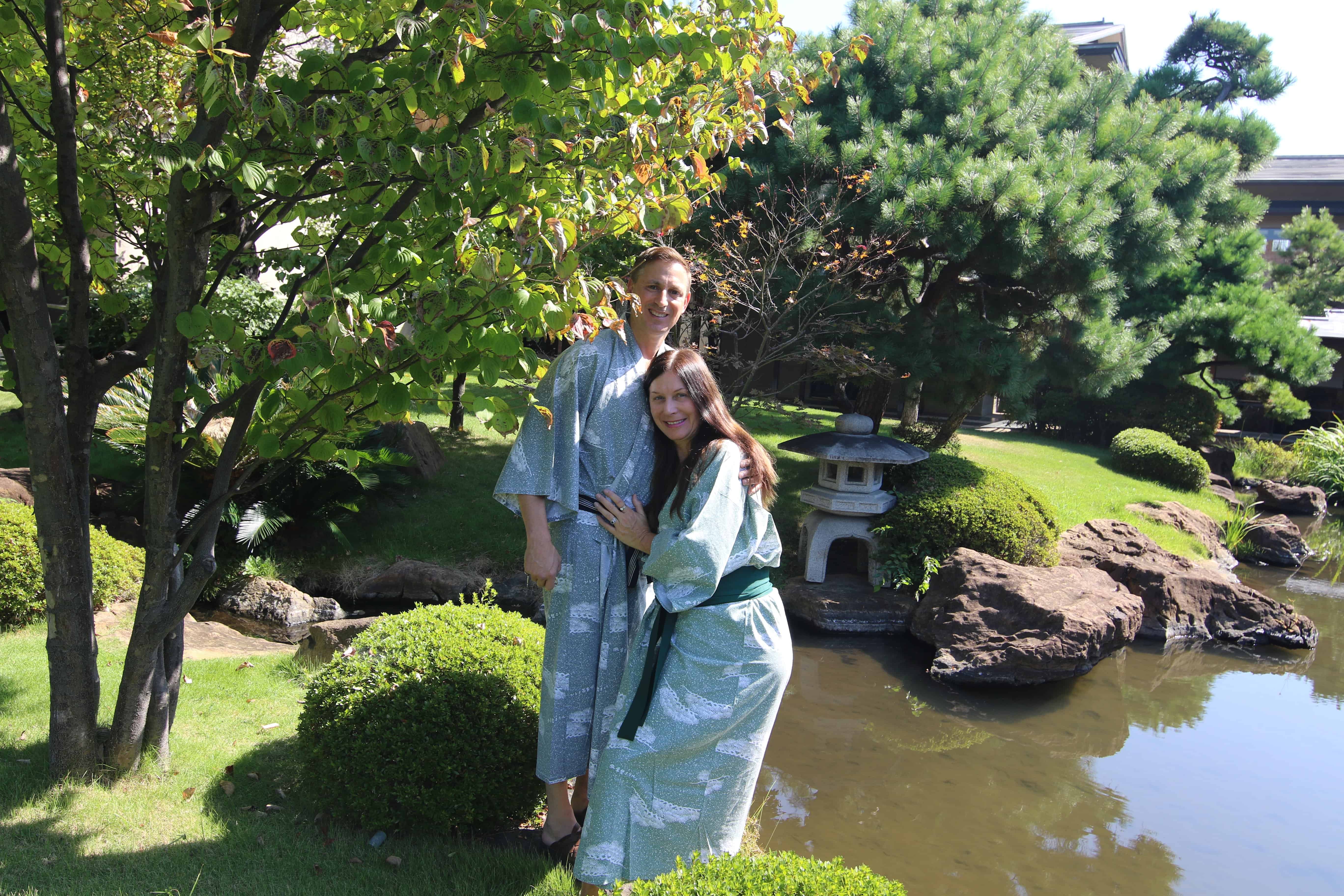
The gardens at Tokiwa are breathtaking
Then, there’s the very comprehensive 3 meals a day. Even though the portions are small, there’s a ton of them and you’ll want to try everything……well almost everything.

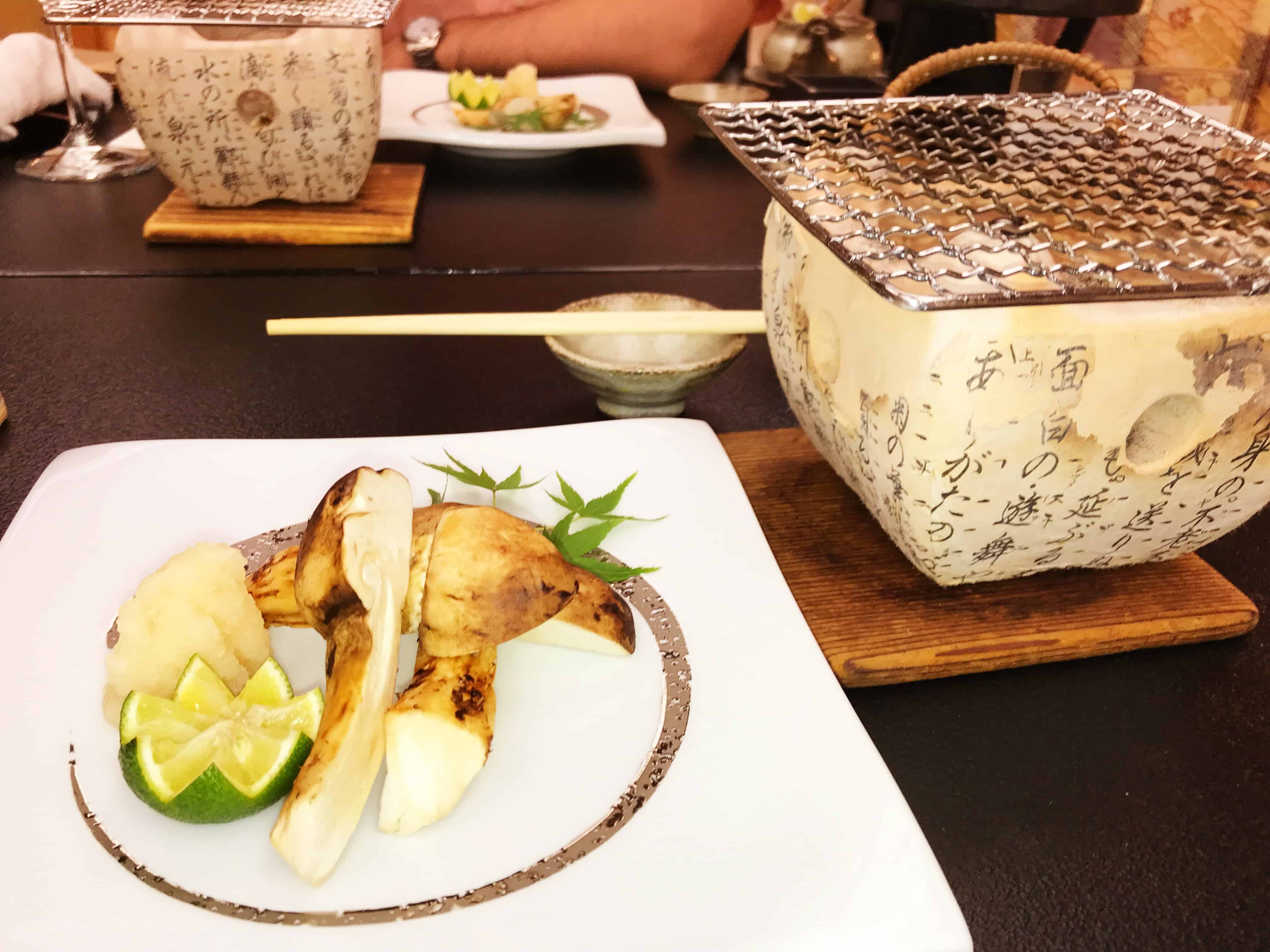
It’s worth noting that Koshu is a unique wine specifically known in the Yamanashi prefecture. See our wine tasting section in this article to learn more about the wineries and Koshu specifically. Tokiwa Hotel had its own branded Koshu that they served with a meal at dinner.
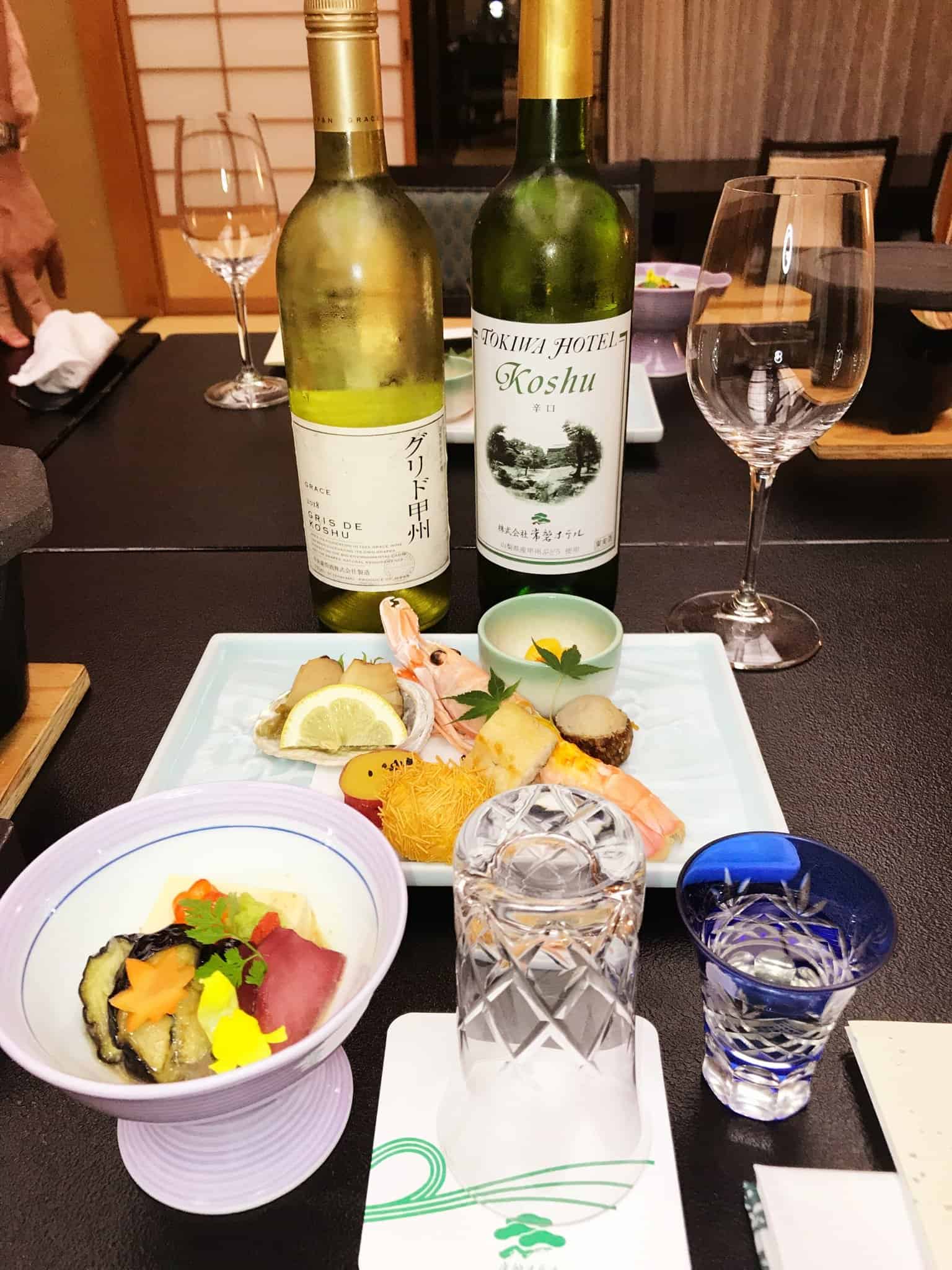
Koshu wine served with our meal at Tokiwa Hotel — it tends to be a little sweeter than Sauvignon Blanc but it pairs well with fruits and so many of Japan’s fish meals.

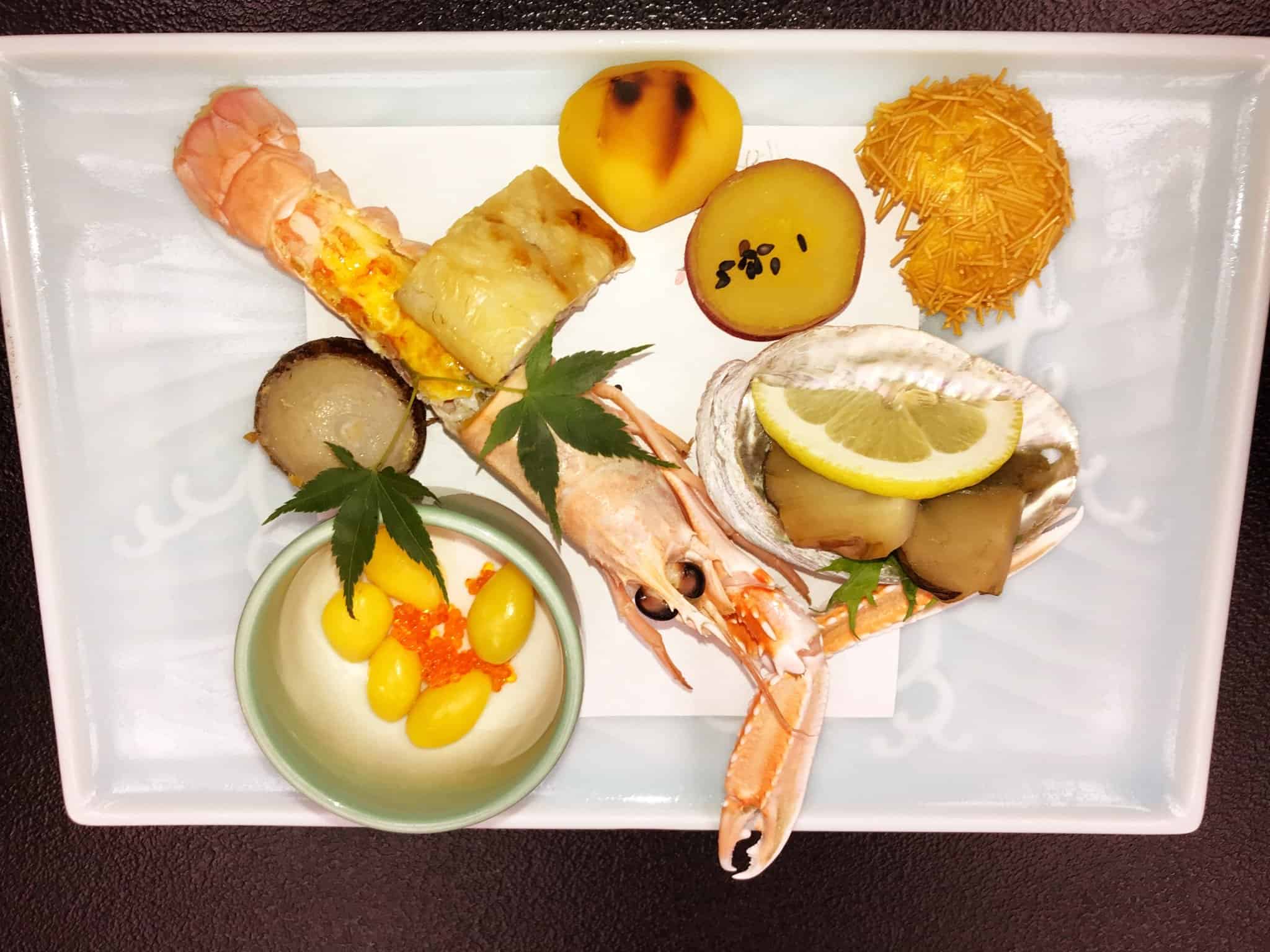
We had a unique dining experience at Tokiwa, where Koji, our guide and translator (and now friend) joined us. Breakfast was served traditional Japanese style in private rooms but not in your room or suite. Dinner was brought to us in the evenings, course by course.
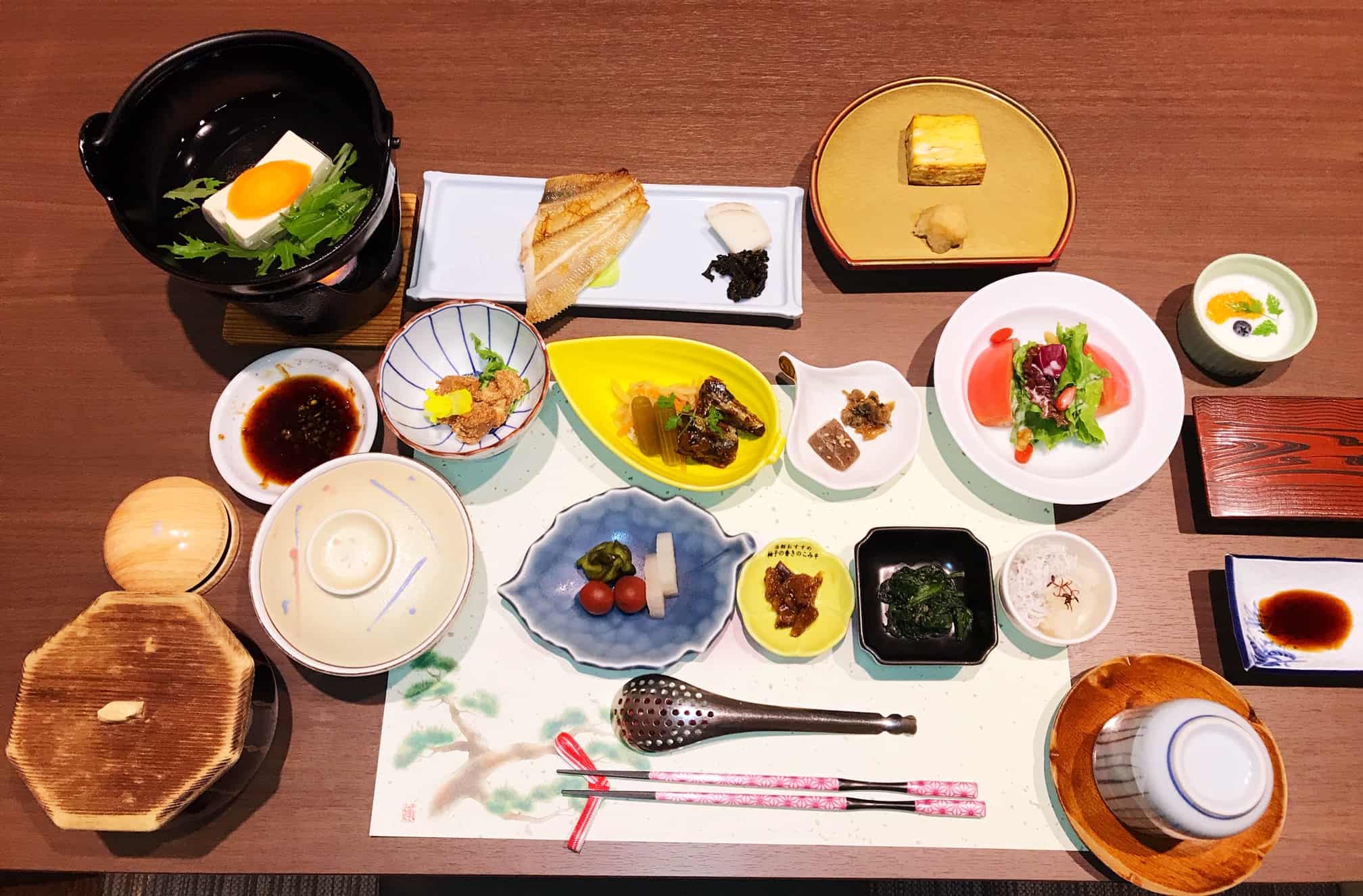
Above and below, our breakfast spread that was served.
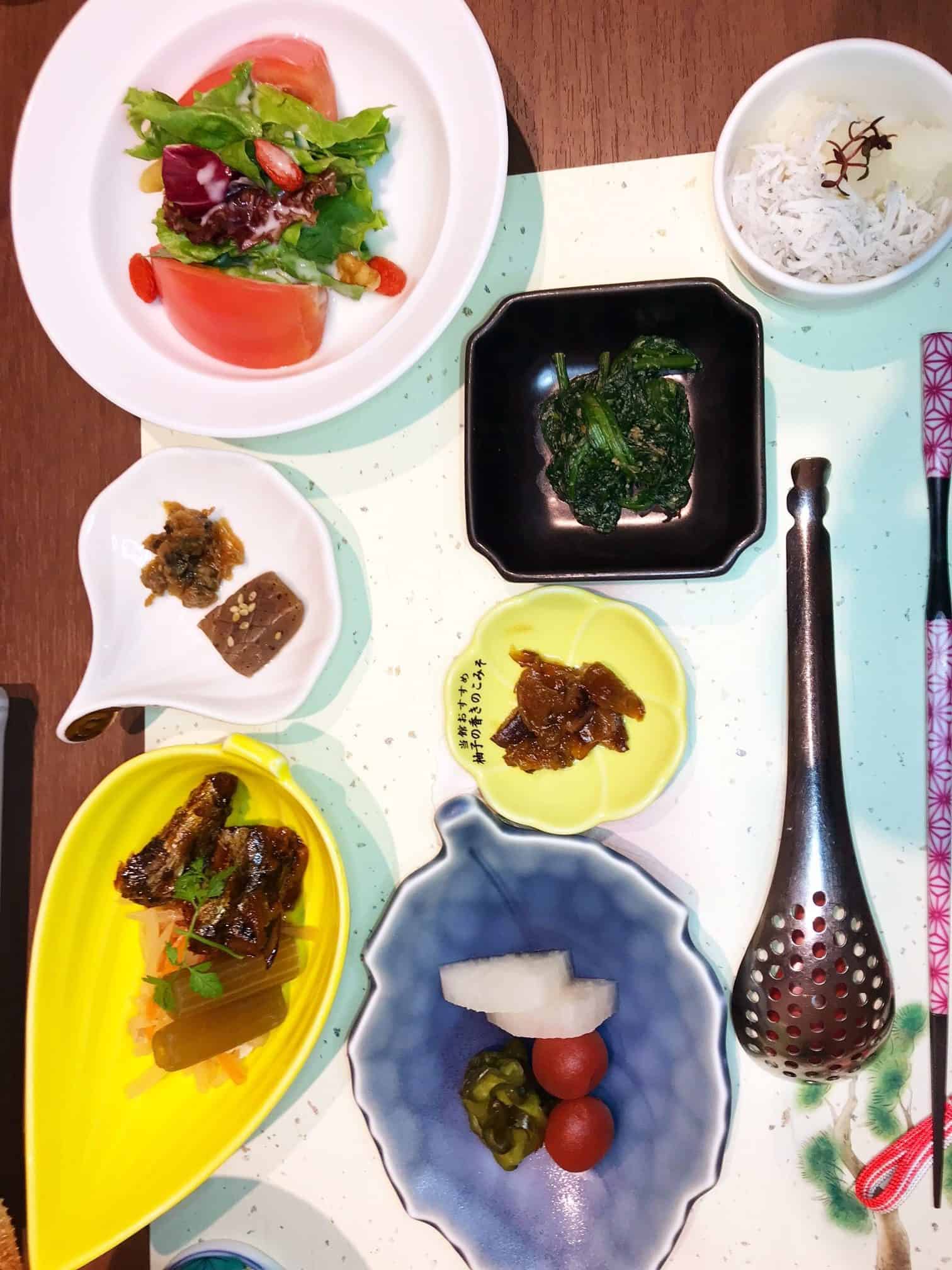

Moving onto dinner, be prepared……there was a lot of food and it was all scrumptious. With started with a small Kiyo, which is a type of Japanese plum. This was followed by Abalone, which Yamanashi is famous for apparently. 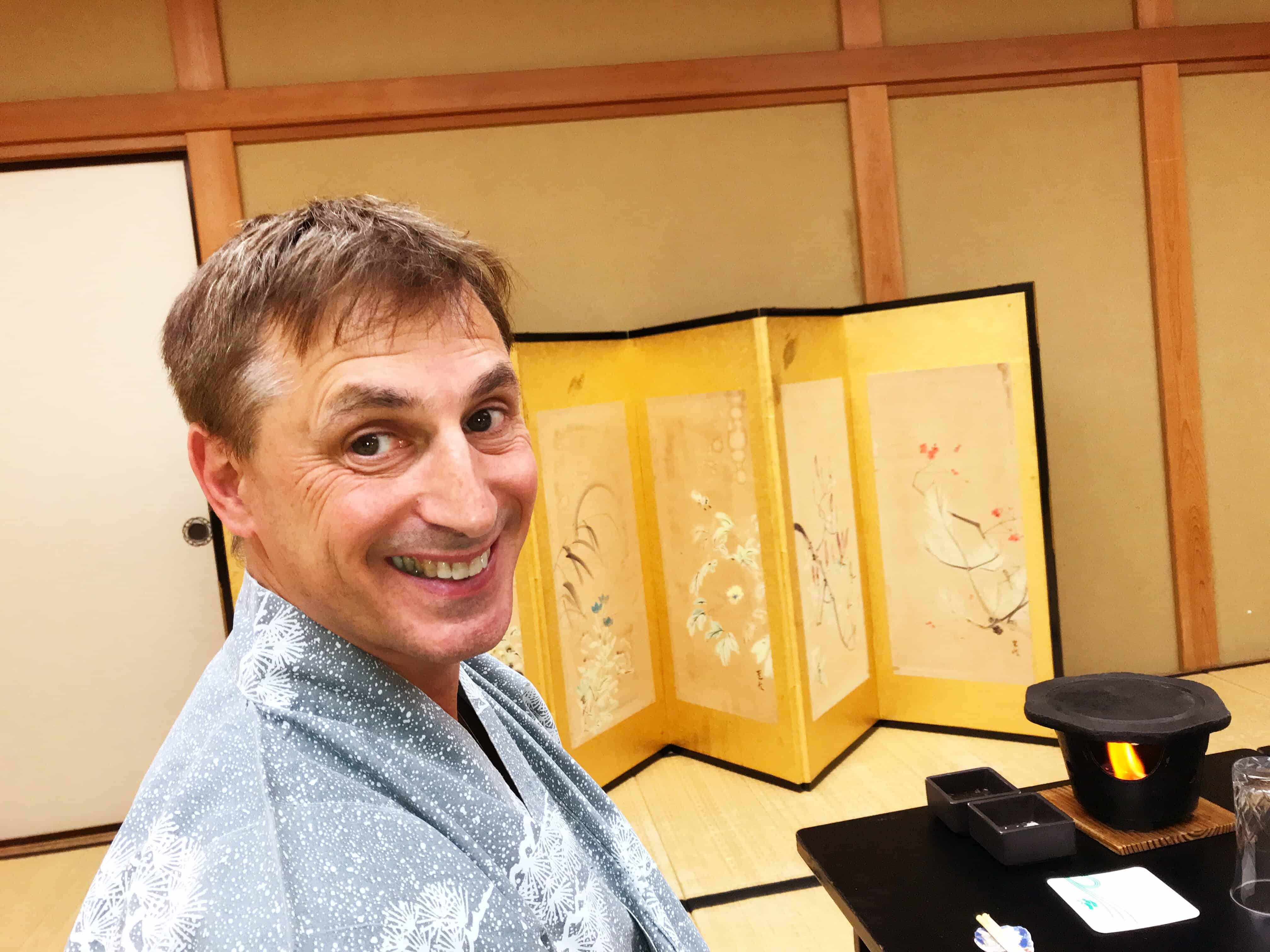 Despite the fact that Yamanashi is inland, the Abalone originally came here by horse from the sea and it was carried/seasoned in soy sauce for the route.
Despite the fact that Yamanashi is inland, the Abalone originally came here by horse from the sea and it was carried/seasoned in soy sauce for the route.
It is often served for weddings and other celebrations. It was served to us as sashimi. Included on the platter were seeds of a Gingko tree, as well as shrimp, melon, tuna sashimi, Ikura, flowers and tofu.
Our spread included a variety of everything, from vegetables, soups and tofu to plenty of ways to eat Matsutake mushrooms, which we love. They served it on its own as well as with other dishes. We also were able to try Royal Trumpet mushrooms which you can eat with other dishes or as an accompaniment to any of the seafood or red meat dishes.
It is common to use a Black Lava Stone for Koshu Beef in Japan which was a specialty and unique experience of the evening as well. While Abalone was the ‘order of the day,’ we also sampled other white fishes as well as something they refer to as Sazae.


The graciousness and hospitality was incredible — every time she appeared with a new course, she made us smile, lighting up the room with authenticity and love.
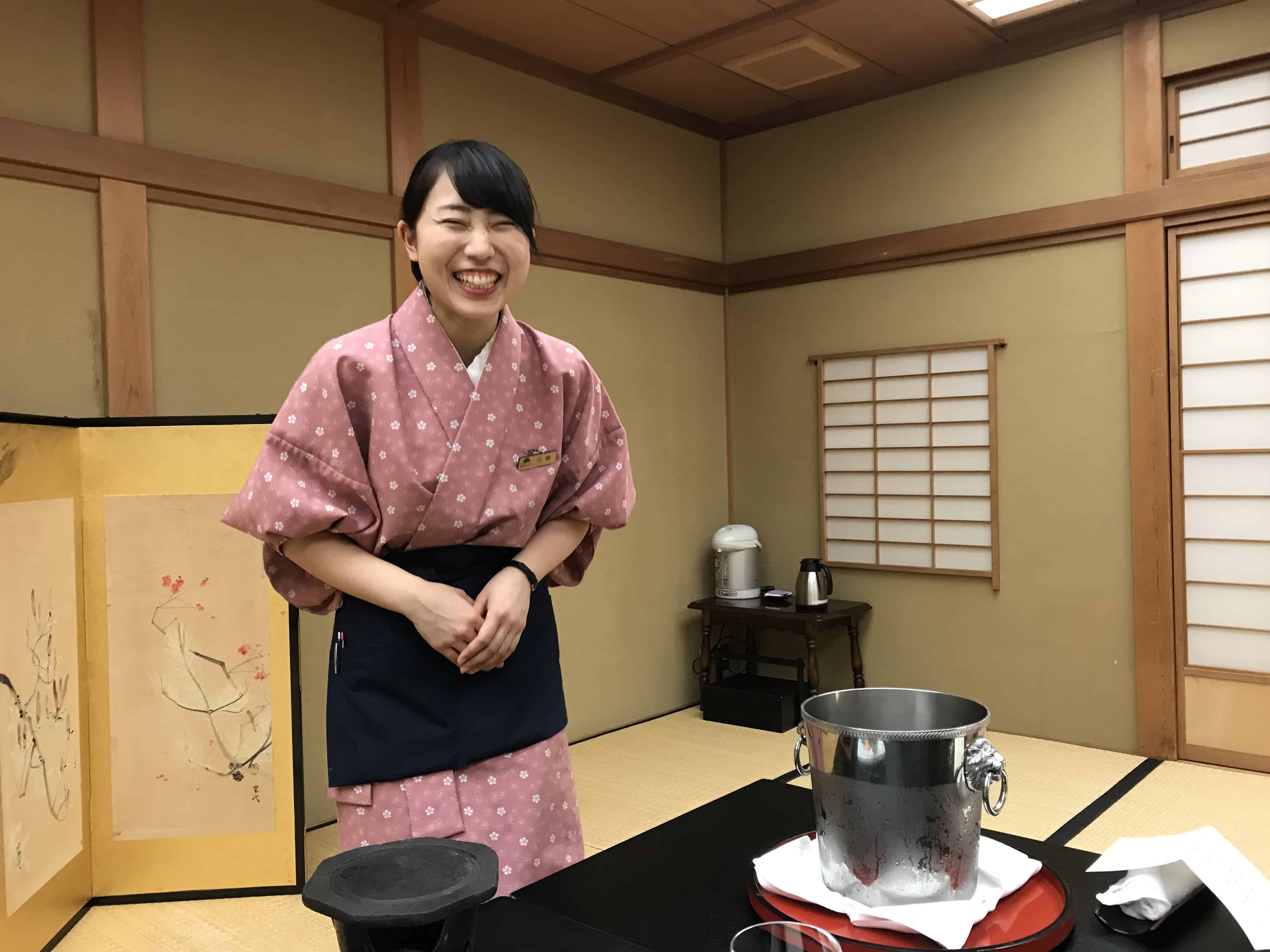
We had sake throughout the course of the evening of course — dry and smooth, followed by a sweeter style Sake when the desserts arrived.
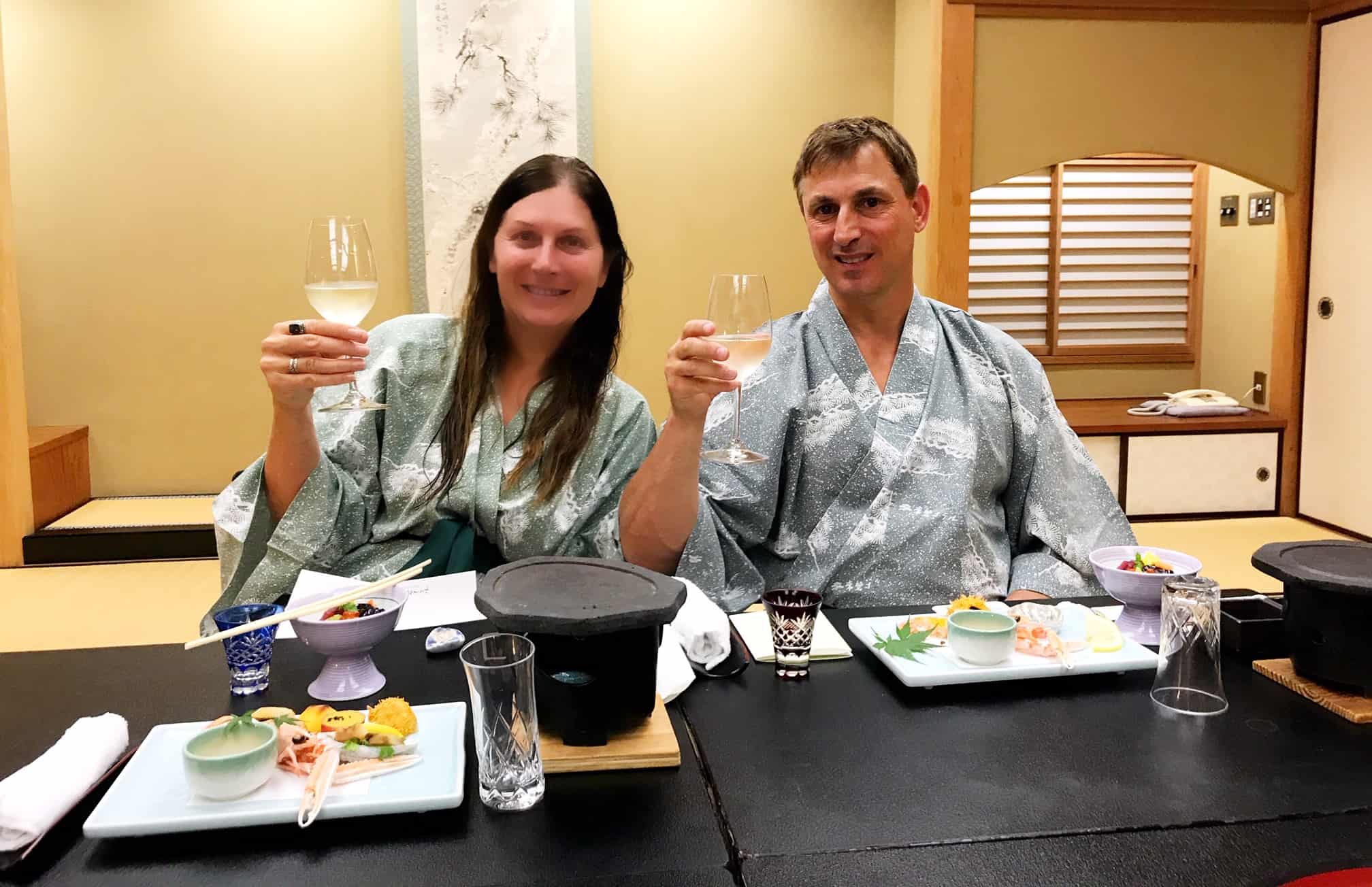
We also tried some of the local Koshu wine (be sure to see our write up on wineries in the Kofu region, including Koshu wines). Matsutake mushrooms are popular throughout Yamanashi.

We also tried a deep fried fish with white shaved radish, fried Perilla, eggplant, green peppers and Matsutake mushrooms. After the Sazae, tuna, salmon, yellow tail and amberjack sashimi and the Matsutake mushrooms with pork, they brought us the delicious Koshu beef with Trumpet mushrooms — we cooked our own pieces on a hot Black Lava Stone.
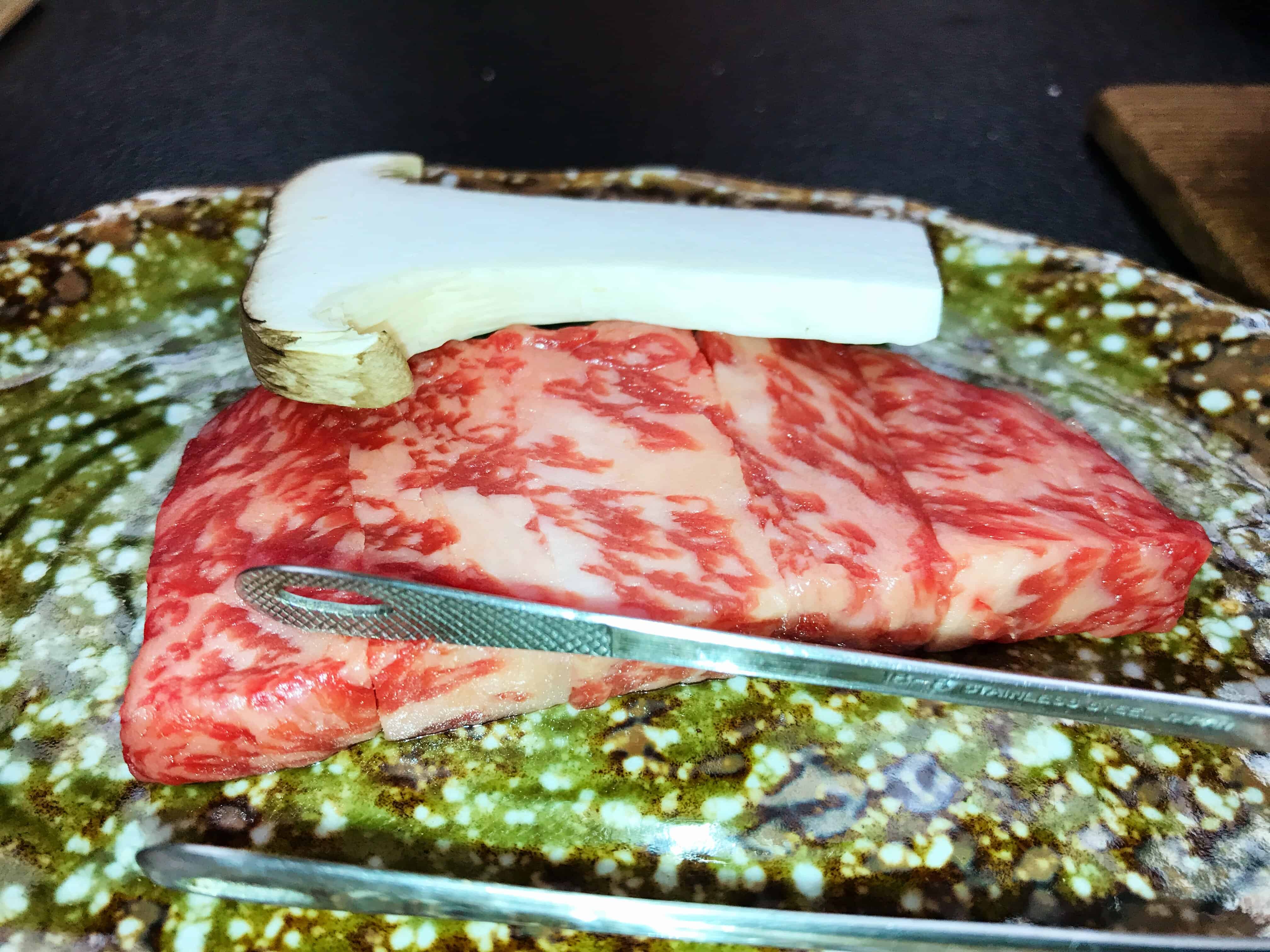
Enjoy this little video of how we cooked our meat.
In Tokiwa “Lounge Karin”, you can experience traditional Japanese cuisine surrounded by a Japanese garden. This so called “coffee corner” with fifty seats overlooks the garden. Here you can get bento boxes with Soba or seafood as its primary offering (2,000 yen — around $20 at the time of writing), Shokado and Beef, among other combinations.


Kaneyamaen Onsen
This onsen as mentioned above, has breathtaking views of Mount Fuji and is probably the most upscale onsen of the ones mentioned here in the Yamanashi prefecture. The food at the Kaneyamaen Hotel in Mt. Fuji was out of this world. See our review which has more photos and details on the rooms and experience.
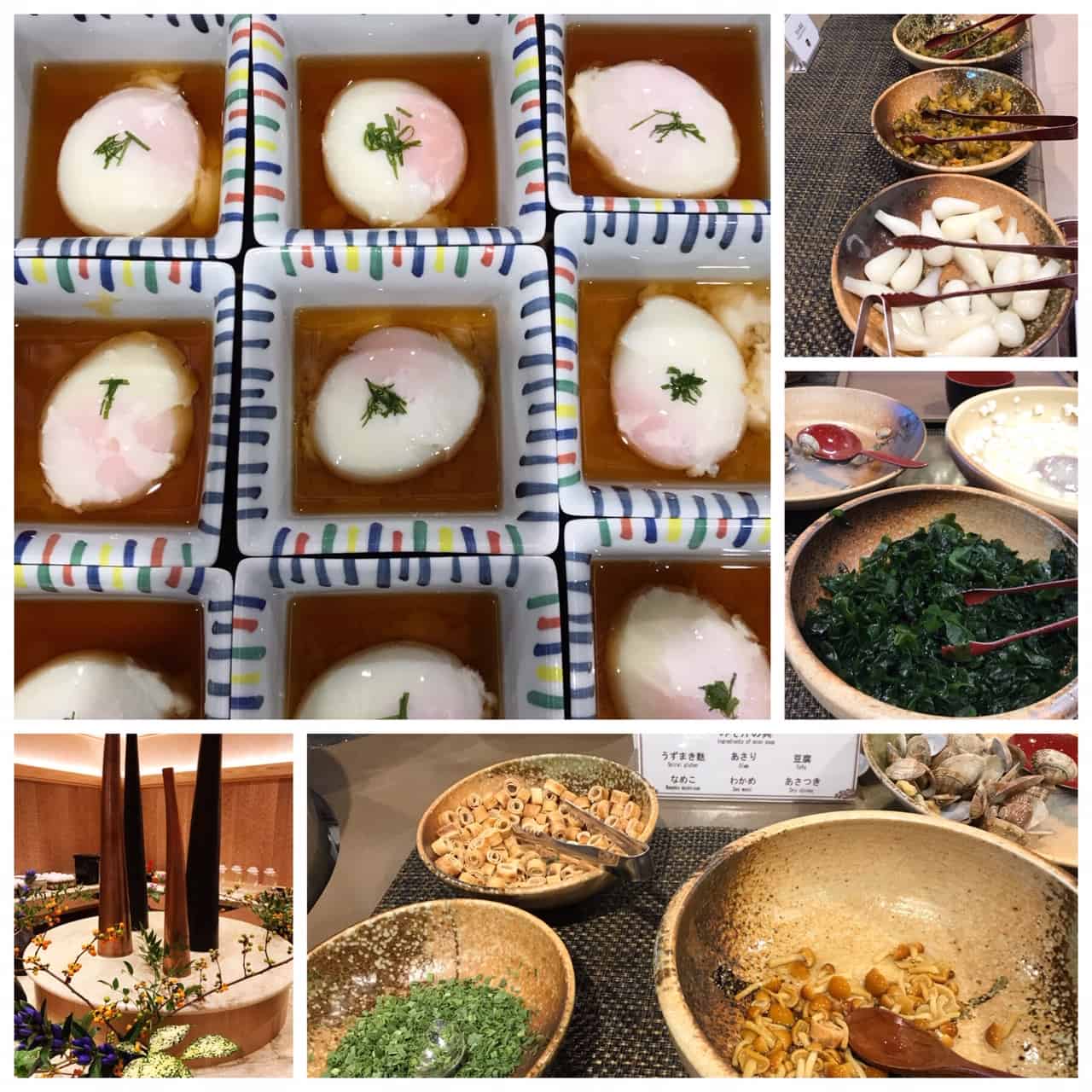
Japanese Breakfast Buffet: Imagine so many options?
Breakfast was heavenly. The food experience at Kaneyamaen is world class. Seafood is a staple of the Japanese diet as is rice, regardless of what time of day it is….and so, yes….seafood is served at breakfast as well. Below, Seafood Tororo.
Note that above and below are shots taken at the buffet which is housed on the ground floor. In our case, buffet breakfast was offered one morning and the other morning, a more formal Japanese style meal in the main dining room.
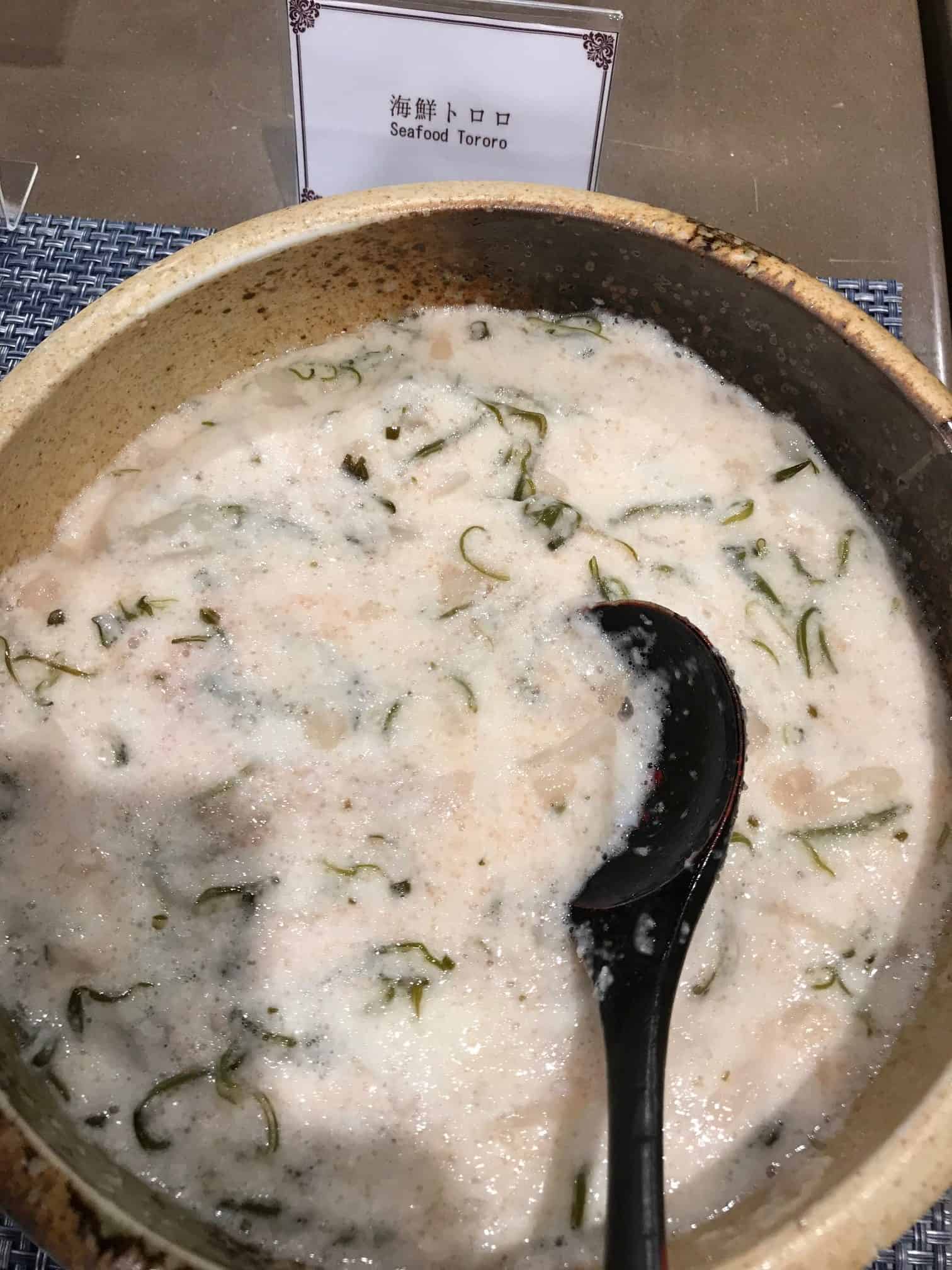
Below, stewed Hijiki!
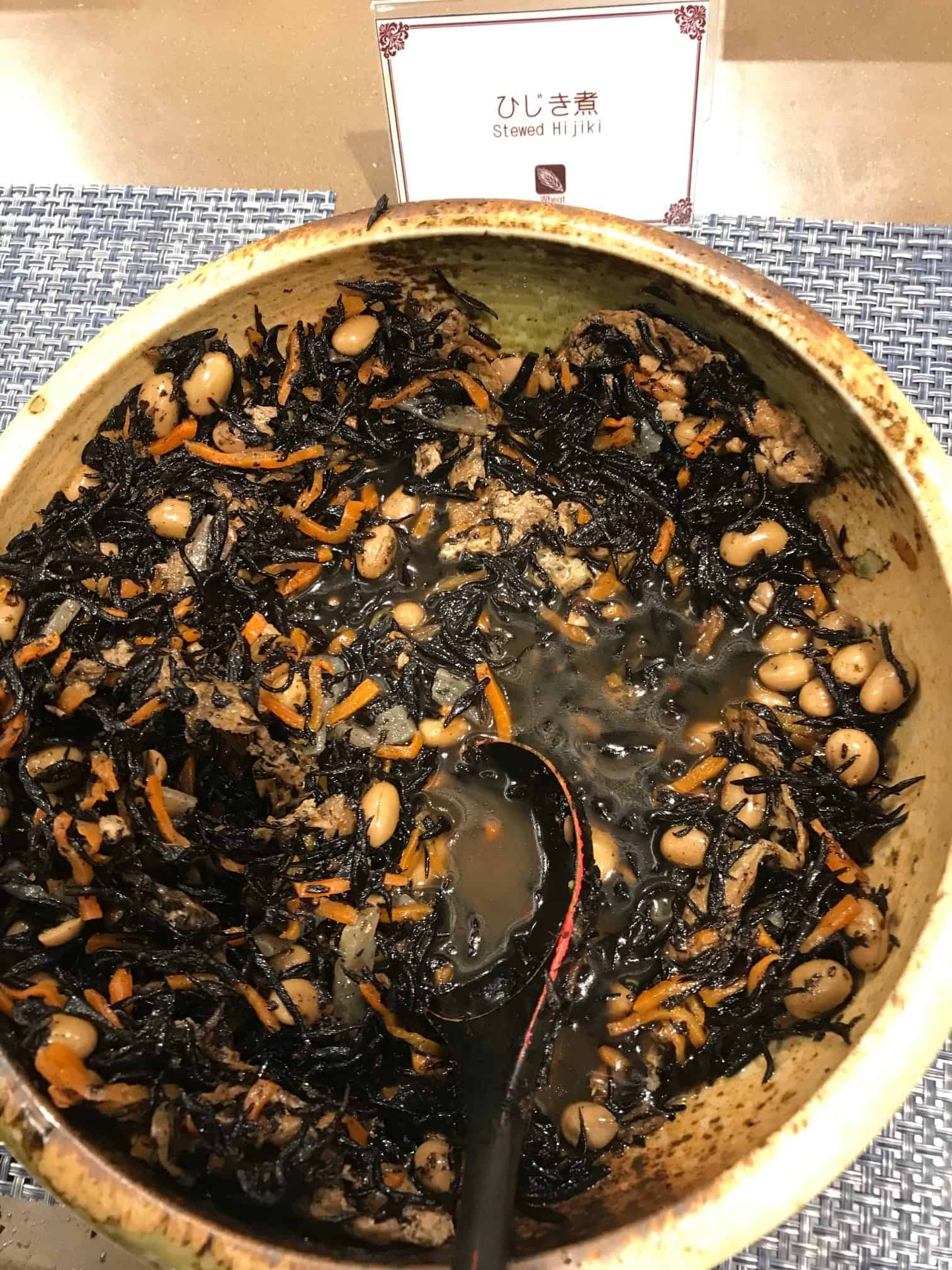
The Buffet Table
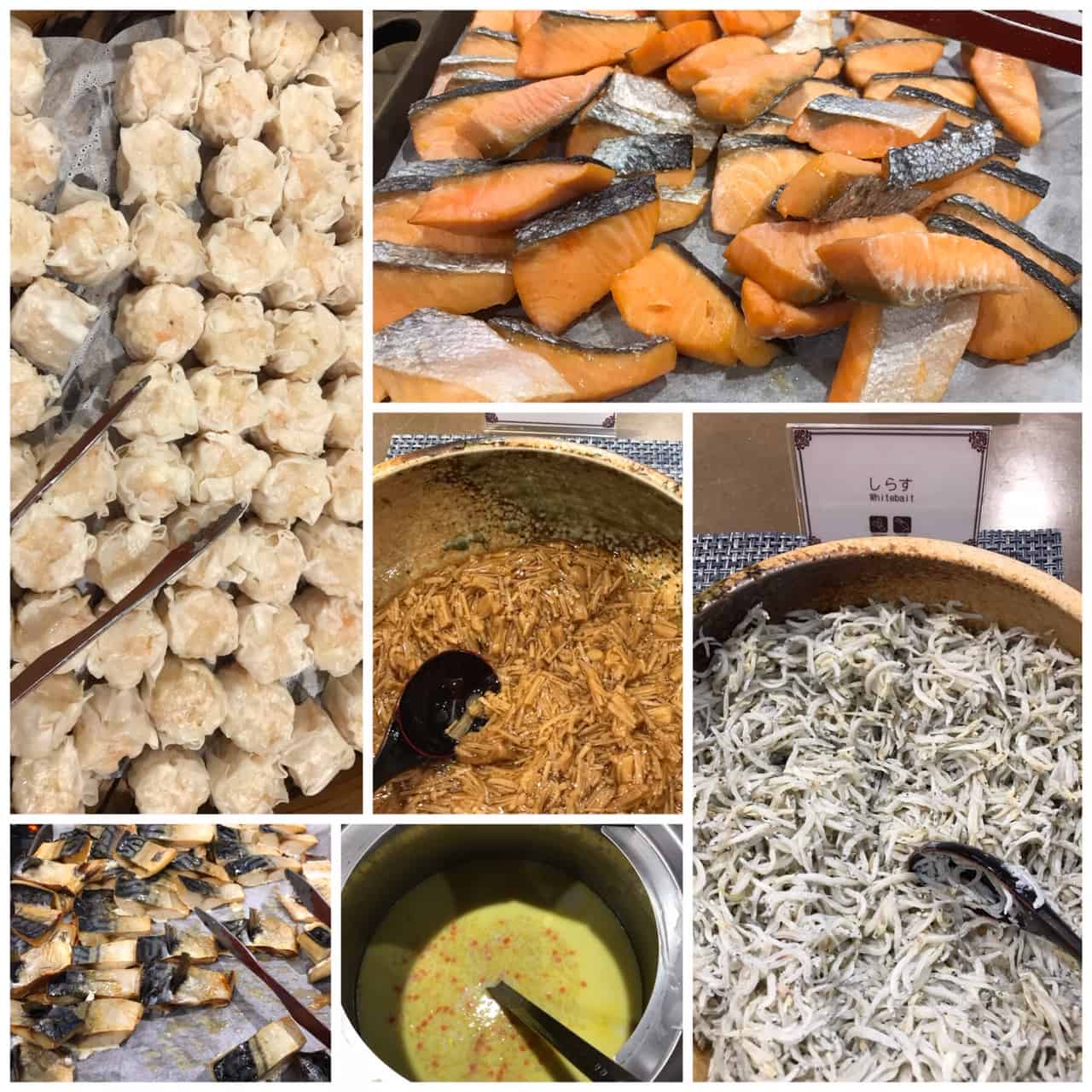
Below is a more formal version of our morning start in the dining room.
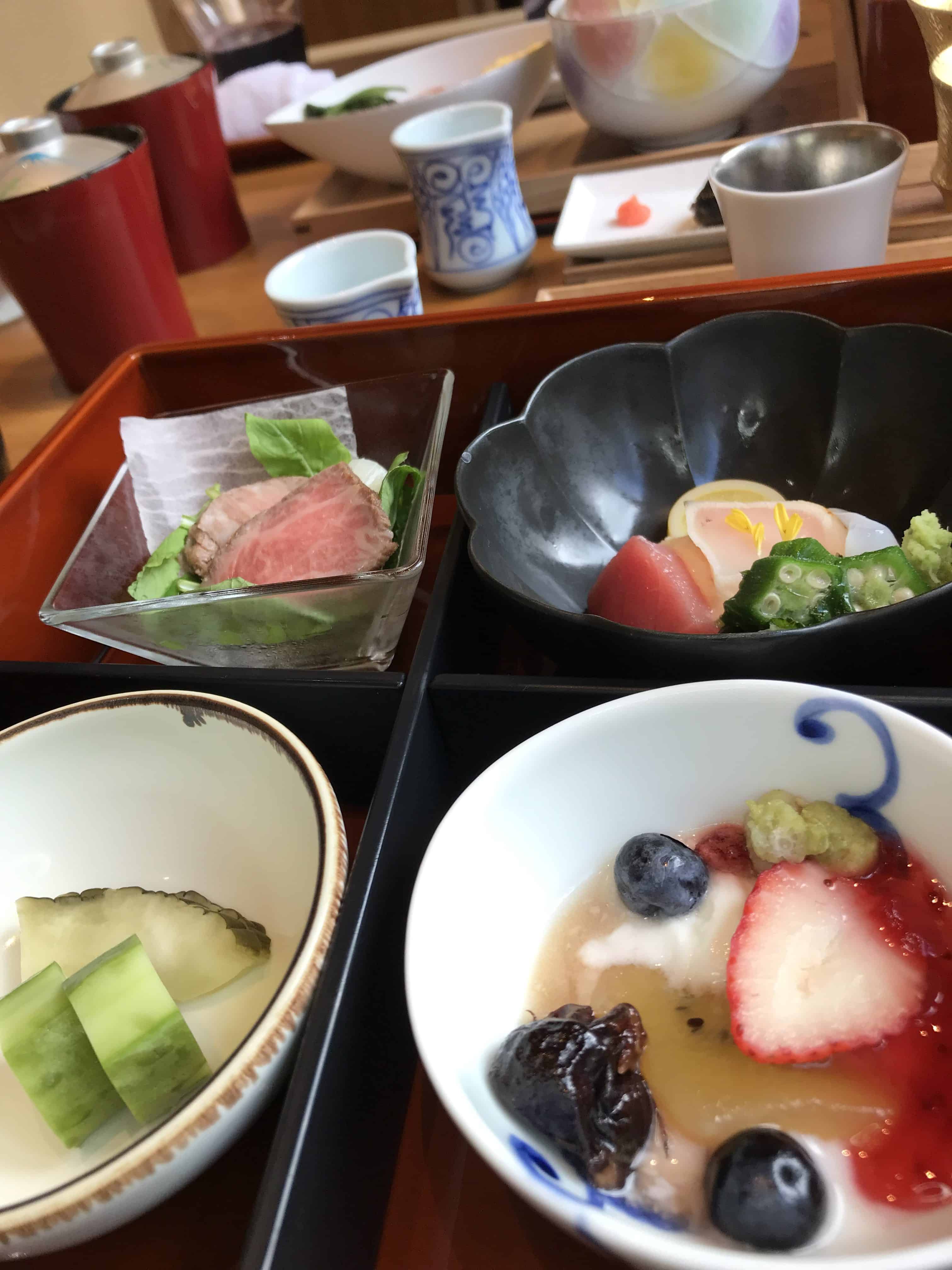
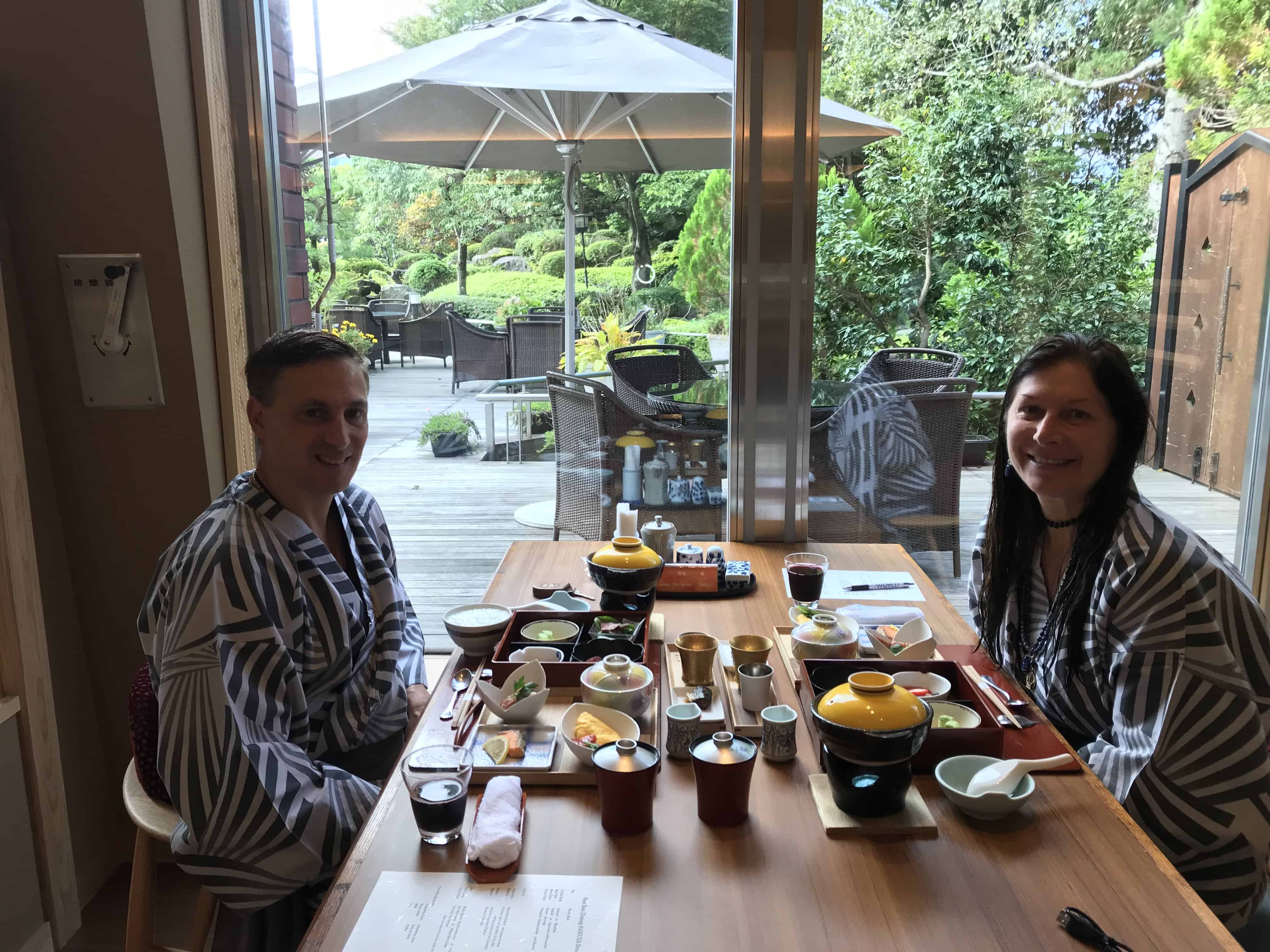
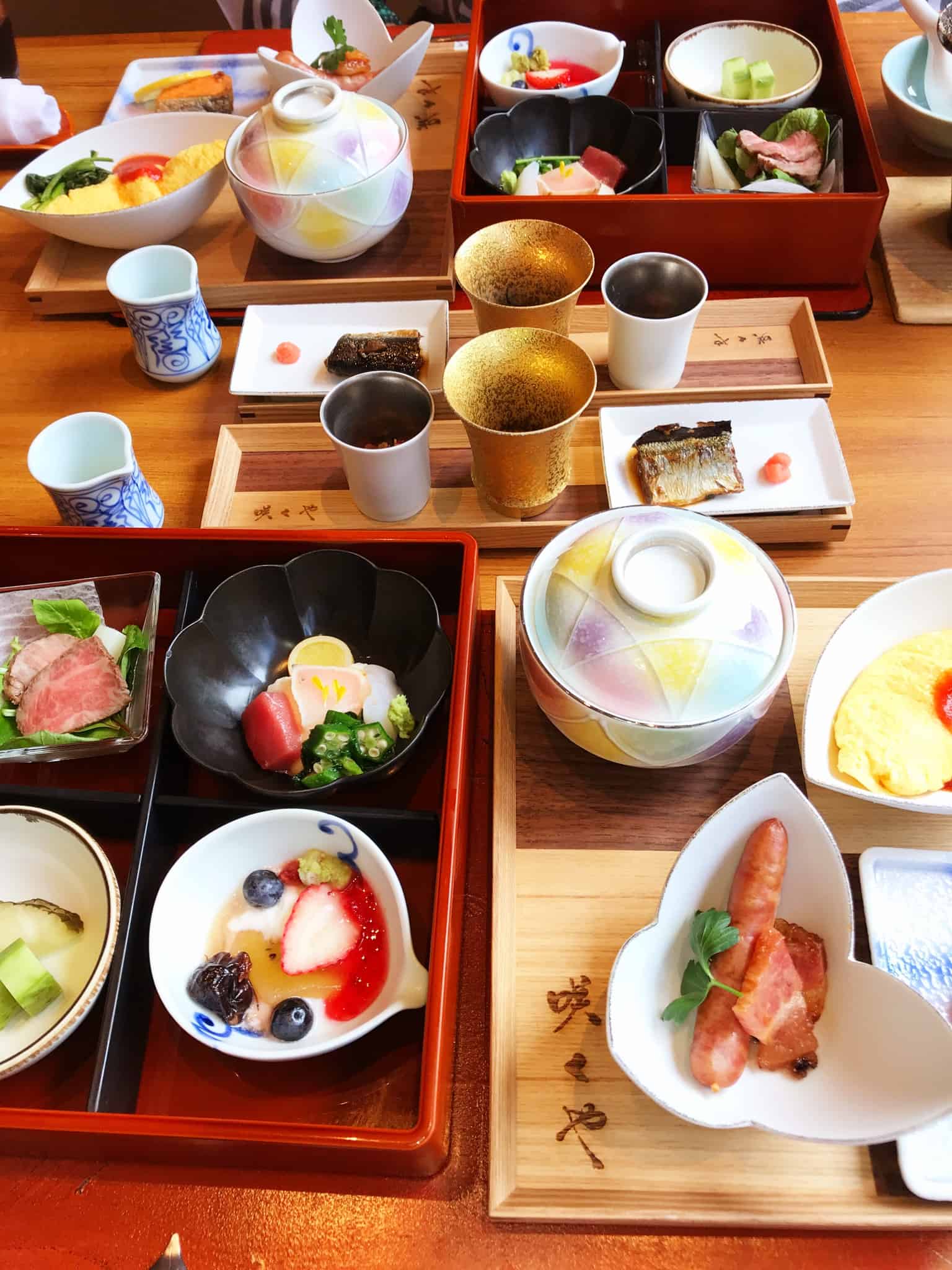

Then there’s DINNER at world-class Sakuya. Prepare yourself! Below are the apps before the apps and it didn’t seem to ever end. For example, we started with a Potato Pureed Soup with Jellied Consomme and Cavier, followed by Fried Blowfish marinated in XO sauce and Corn Tofu with grilled young corn. It was a “to-die-for” experience!
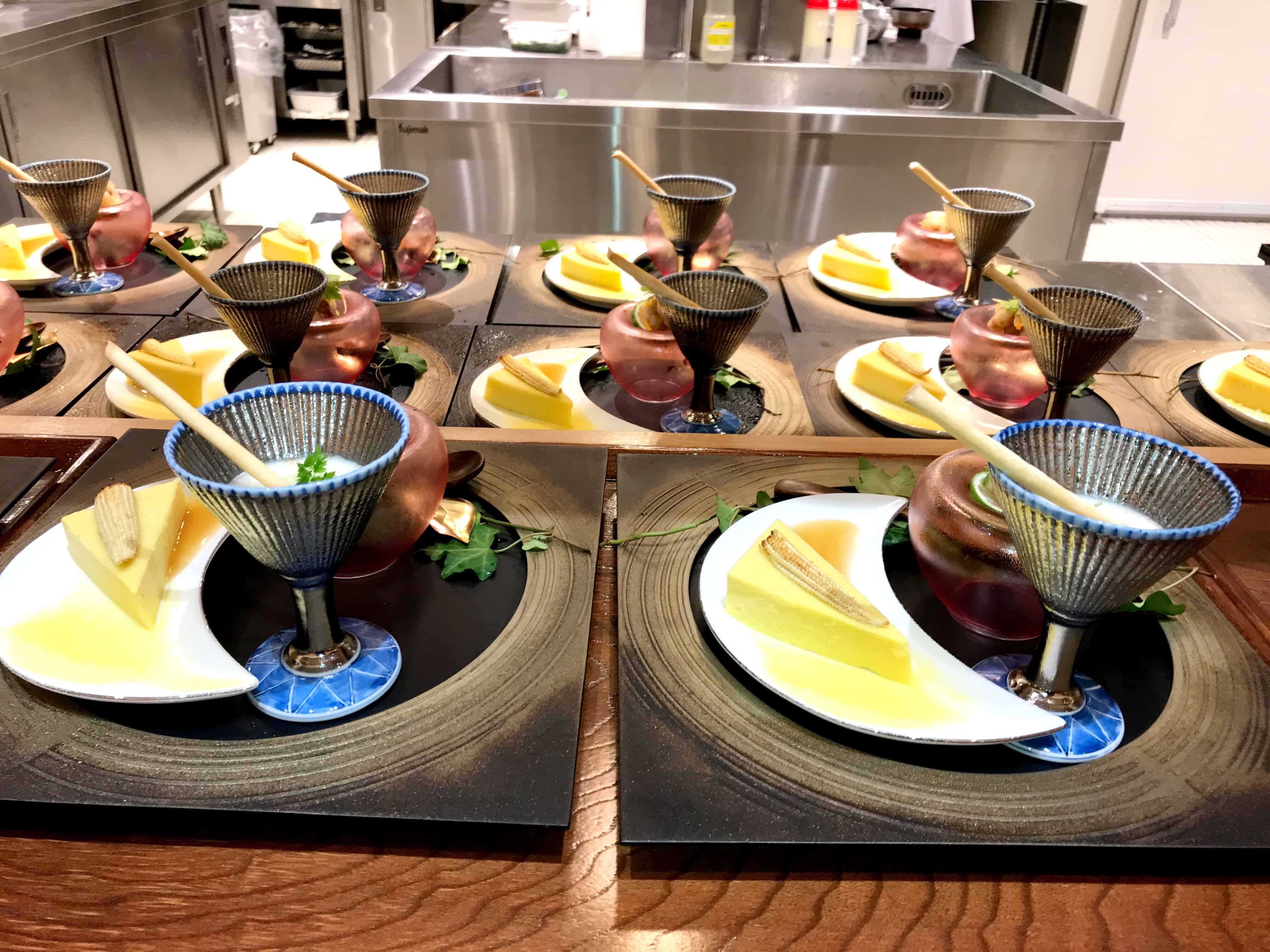
Arriving at the table.

I can’t over-emphasize the service here–we really felt as if people were assigned to our happiness during our stay. Grant you, we were there as press (and they knew it) but as I looked around, I noticed that other guests were getting the same royal treatment. It’s truly a unique place!
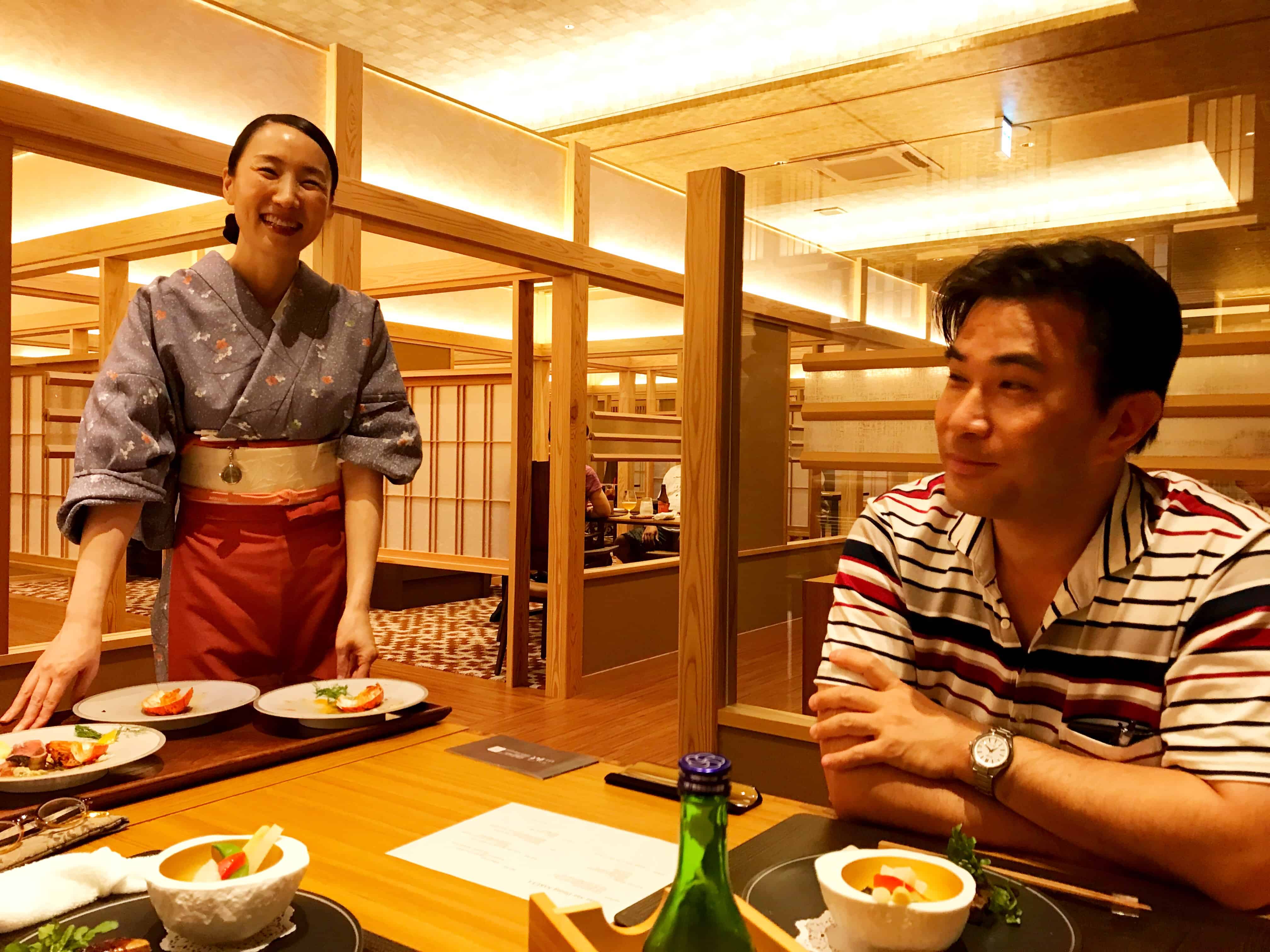
Our friend Koji who joined us for several meals while we were in Yamanashi region. We were so blessed to have his company, knowledge and translation.
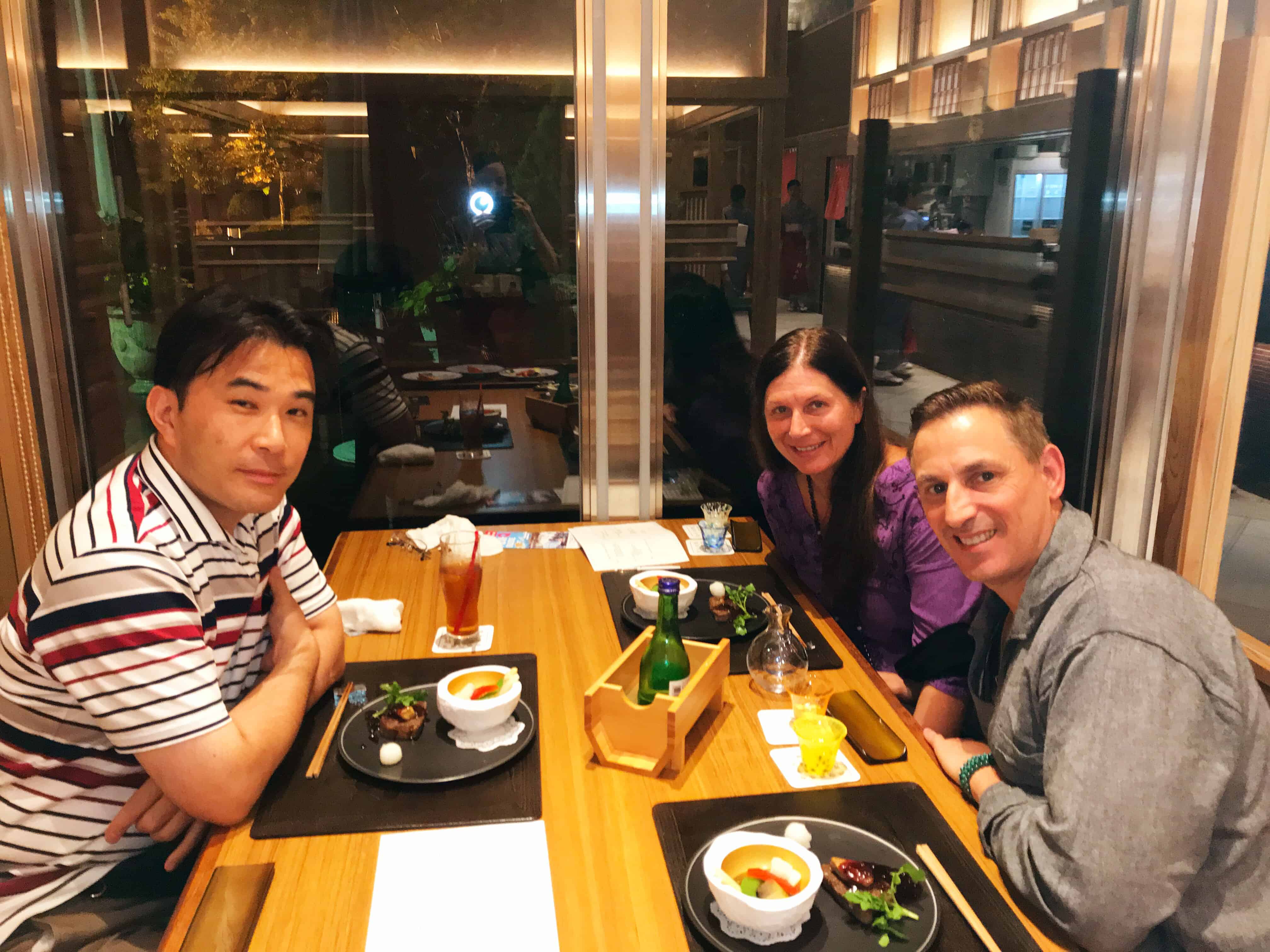
Potato Puree soup with Jellied Consomme and Caviar was so delicious!
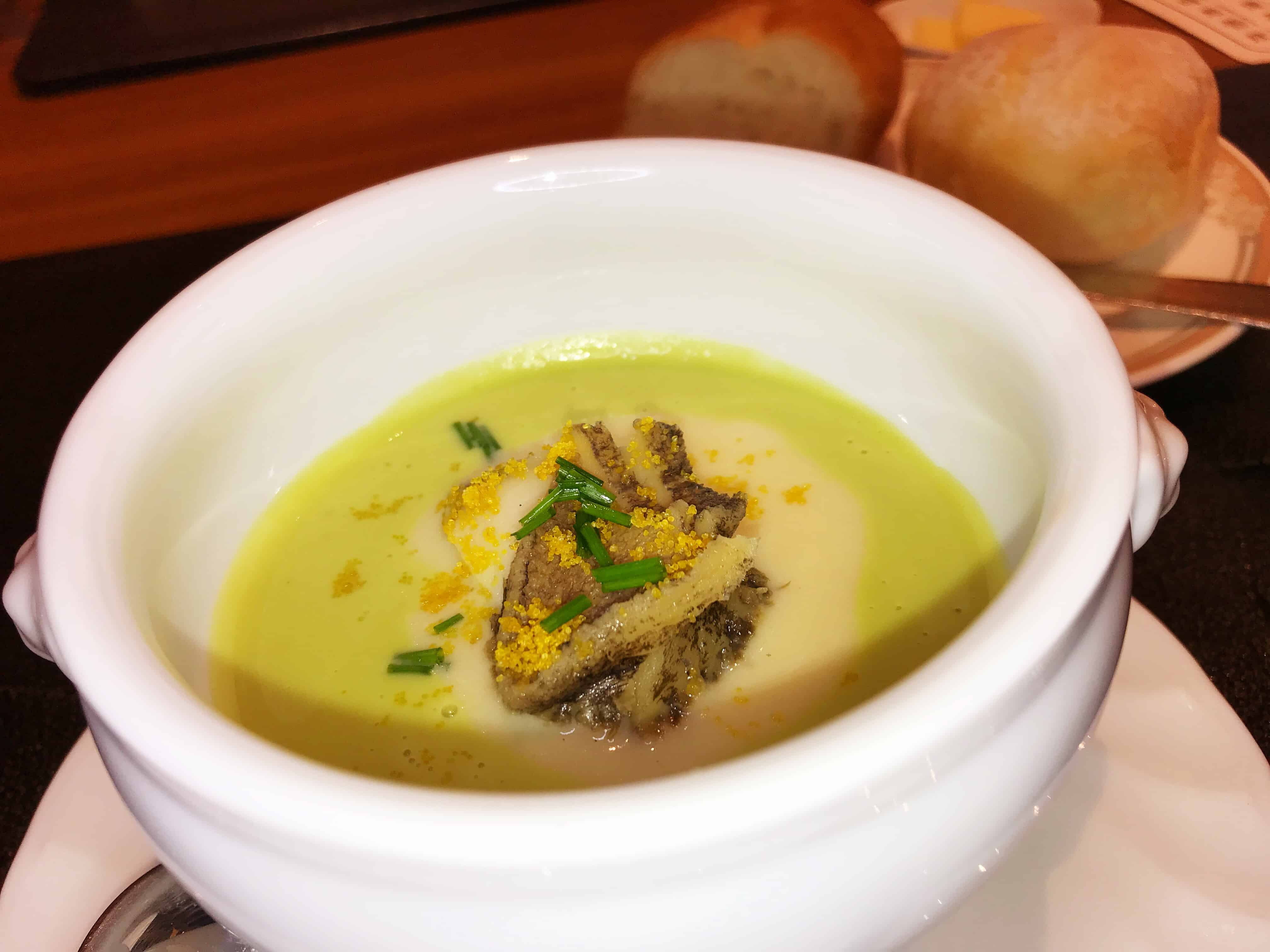
They then served Conger Eel, Flower shaped wheat gluten noodles made from fish, Young Melon, Yuzu and Ume.
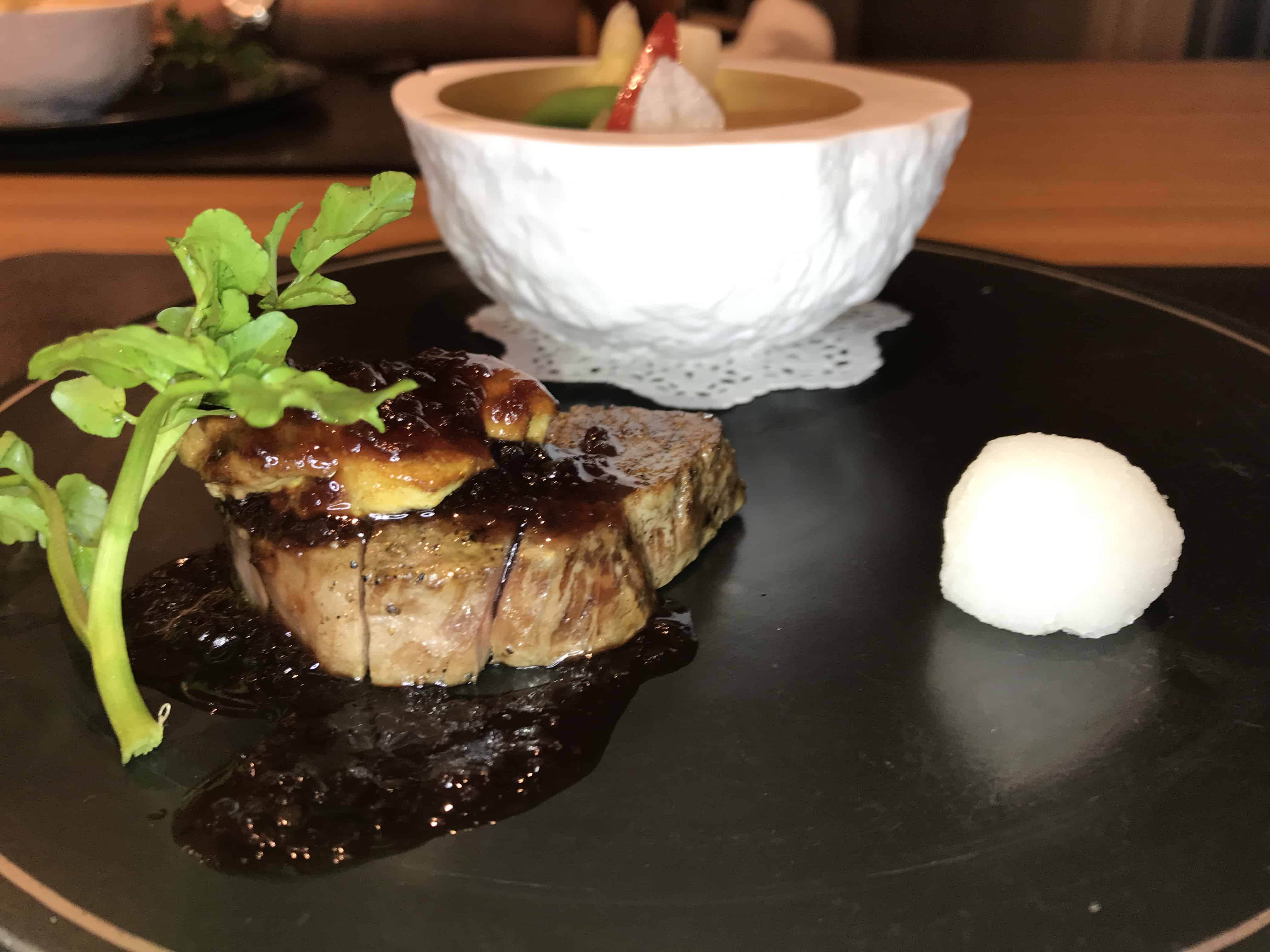
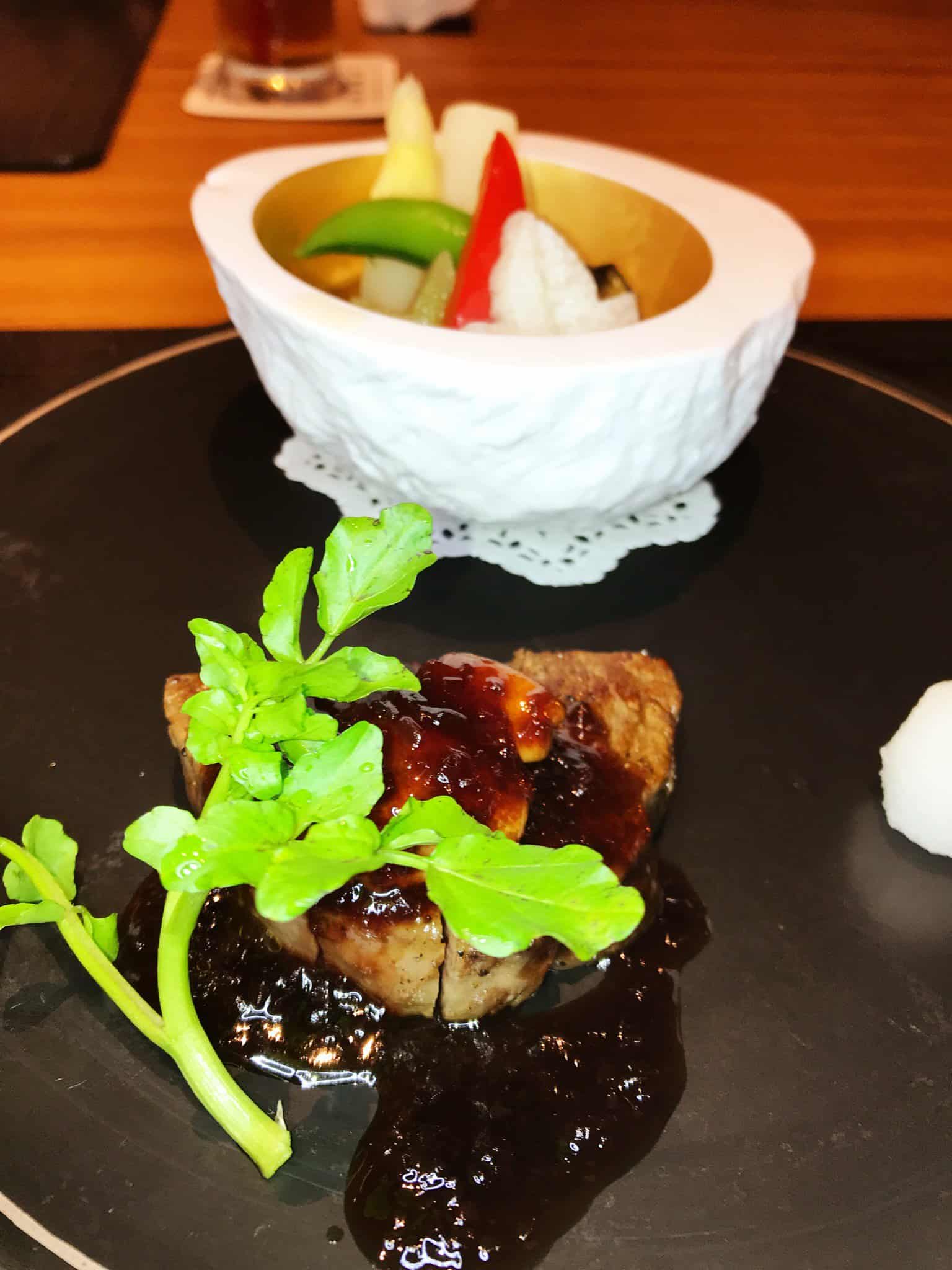
Below, a Sashimi assortment before we got to our main (fish) dish and (meat) dish. In the main dining room, you get both. (it’s a 7 course meal)
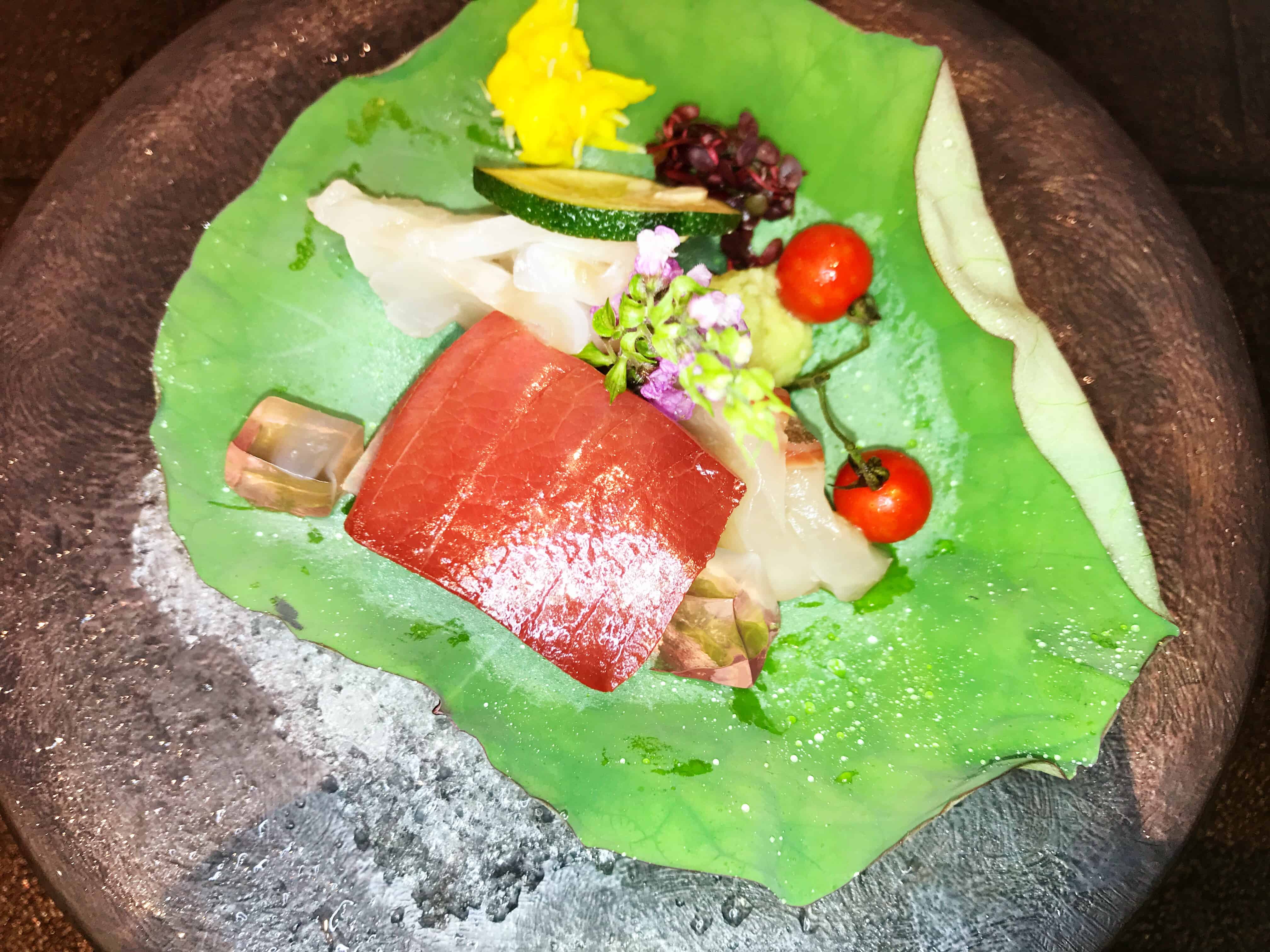

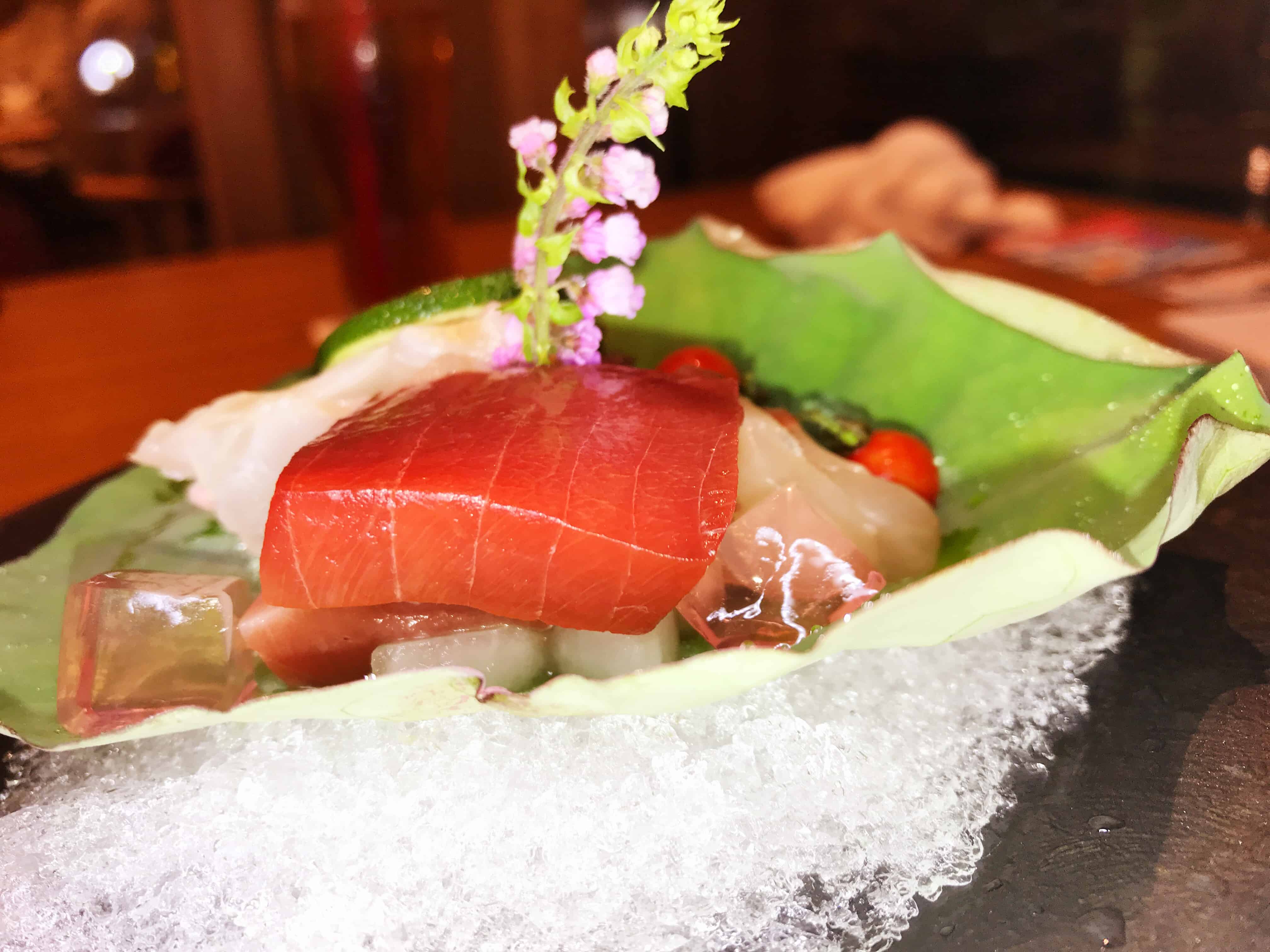
Can you say Lobster? Yes, we had Grilled Lobster and Japanese Sea Bass with vegetables all on the same evening.
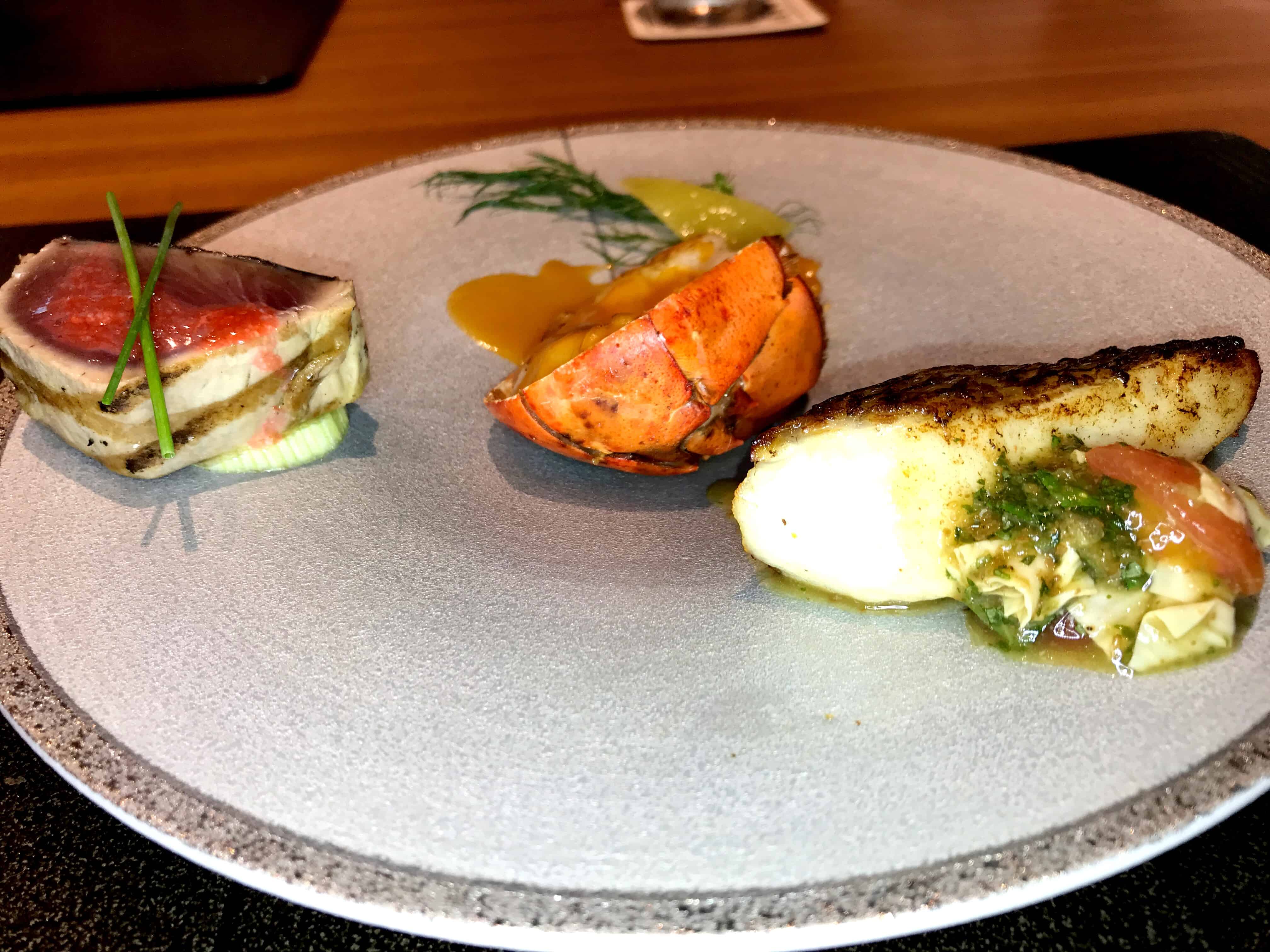
How’s this for seafood heaven? It was indeed! They serve a lot of sea bream, grouper and Bonito fish this time of year. The presentation is exquisite, don’t you think?

Does it get much better than this?
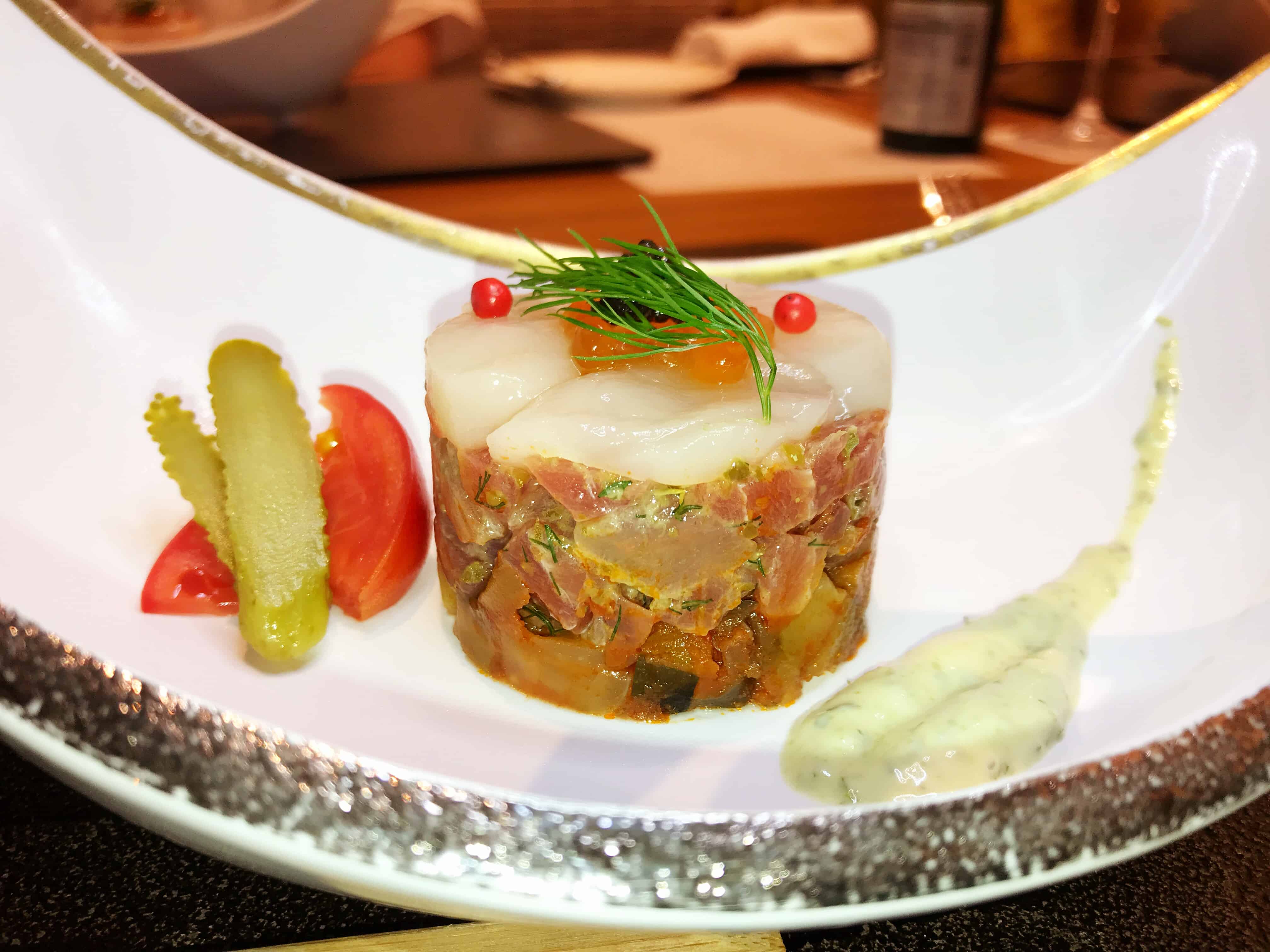
The Koshu Wine Beef Fillet steak with Foie Gras, served in a Port Wine and ginger sauce was heavenly.
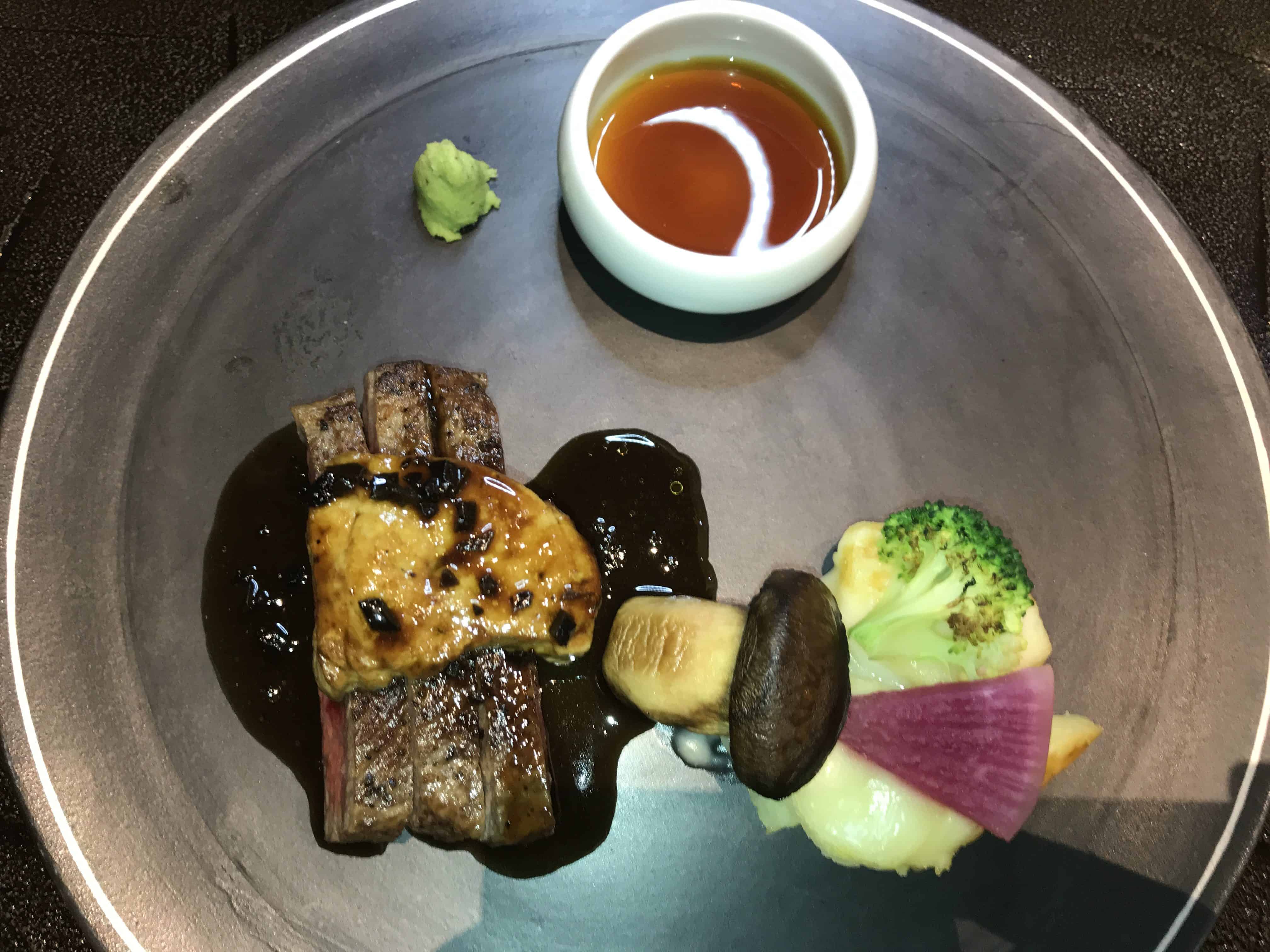
Other divine delicacies.
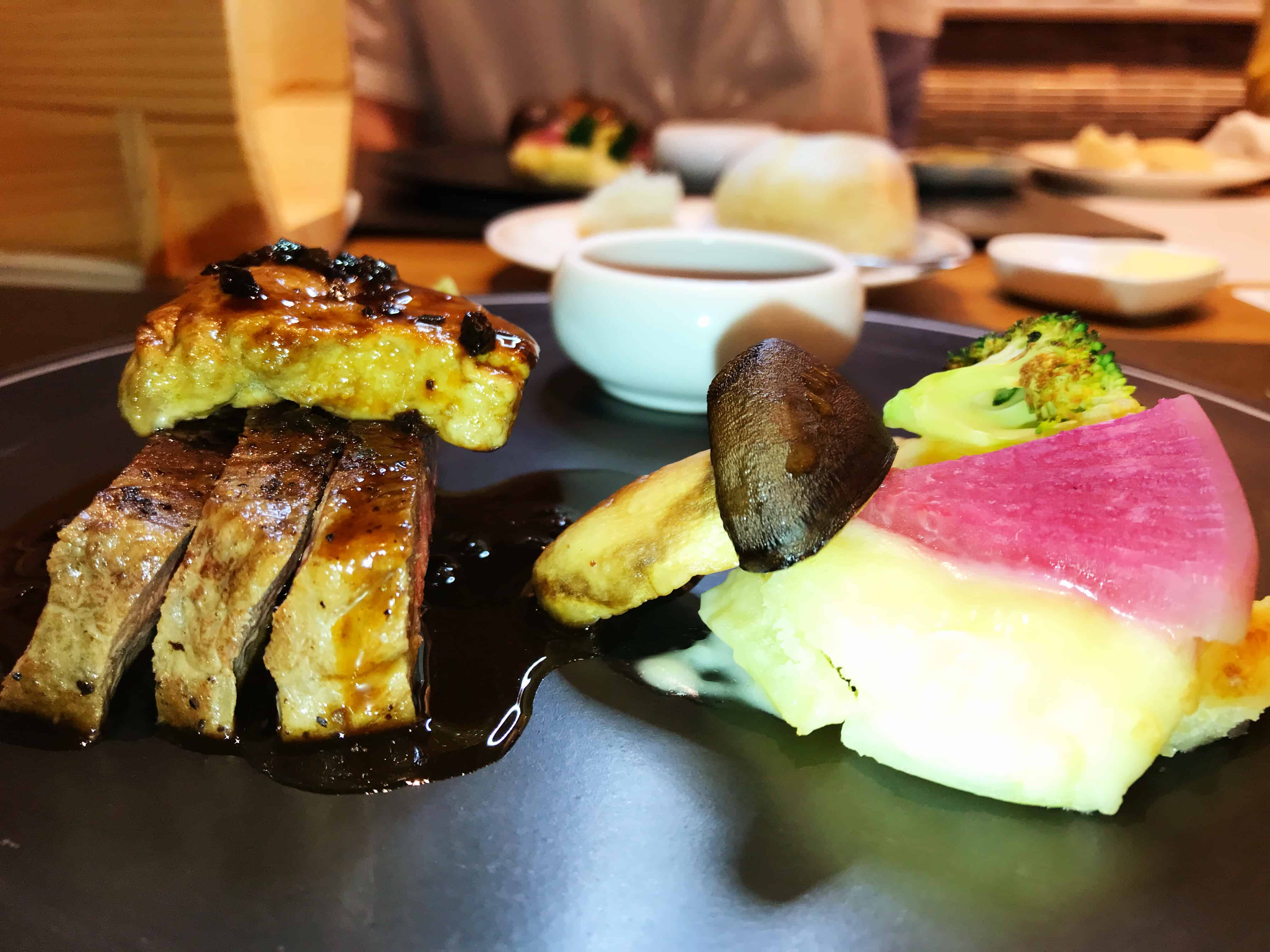
More grilled lobster, served in an Anchovies cream sauce with sea bream, asparagus and lentils (Night 2)
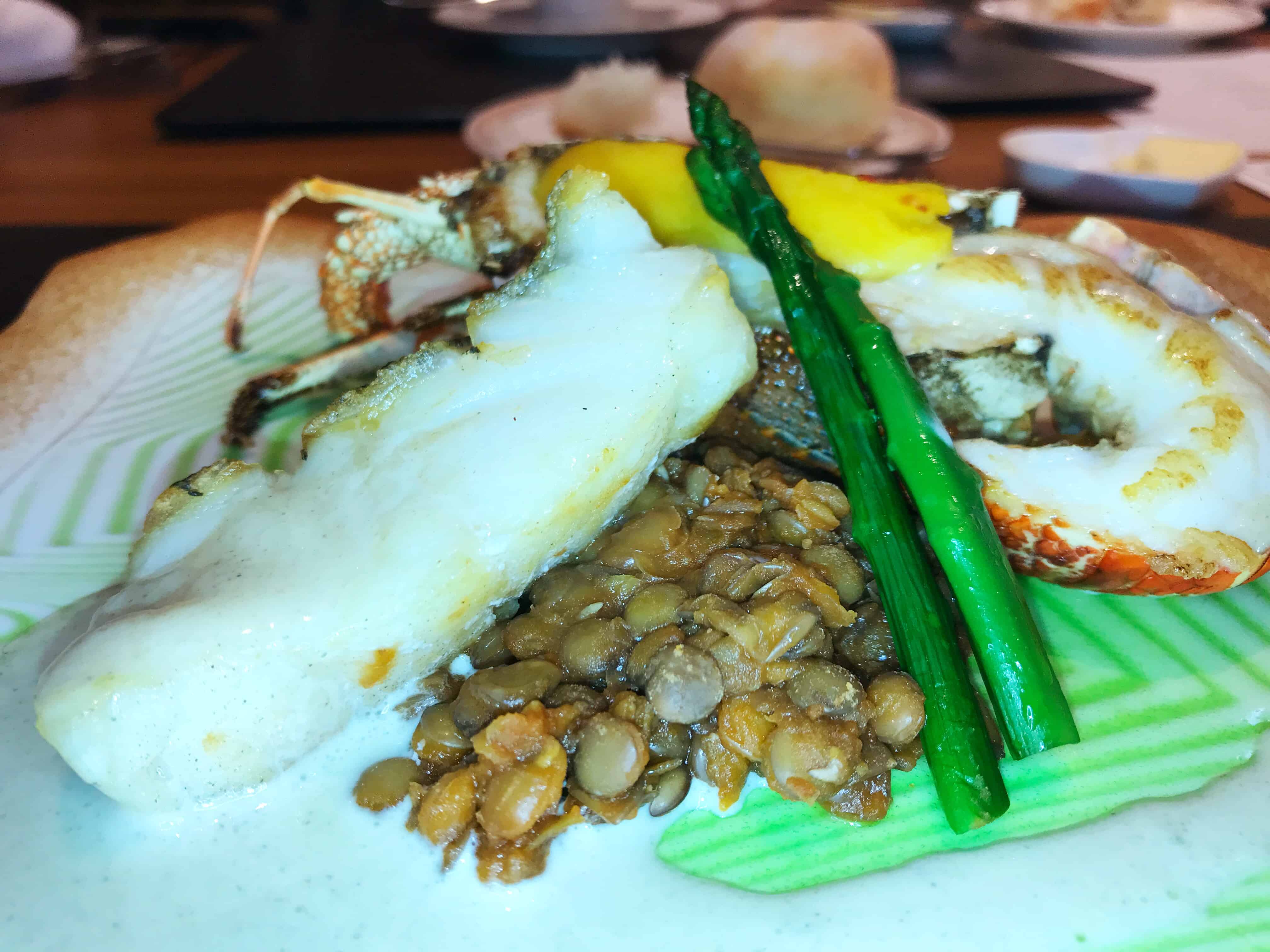
On night two, they surprised us with Orange Sherbet, white cake made with Champagne, French macarons and Cassis. How divine, right?
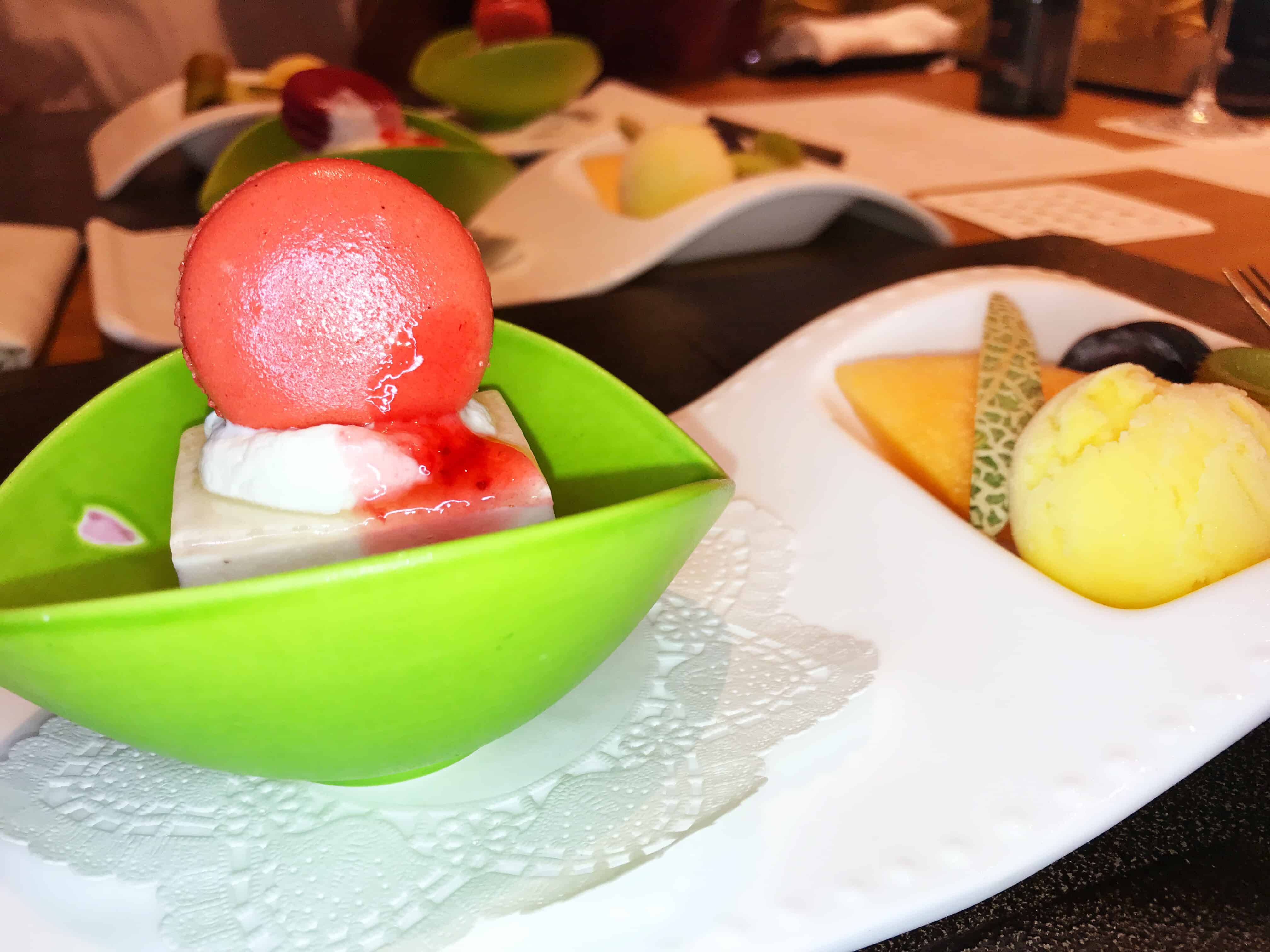
Let’s not forget the SAKE — we tried different styles each night!
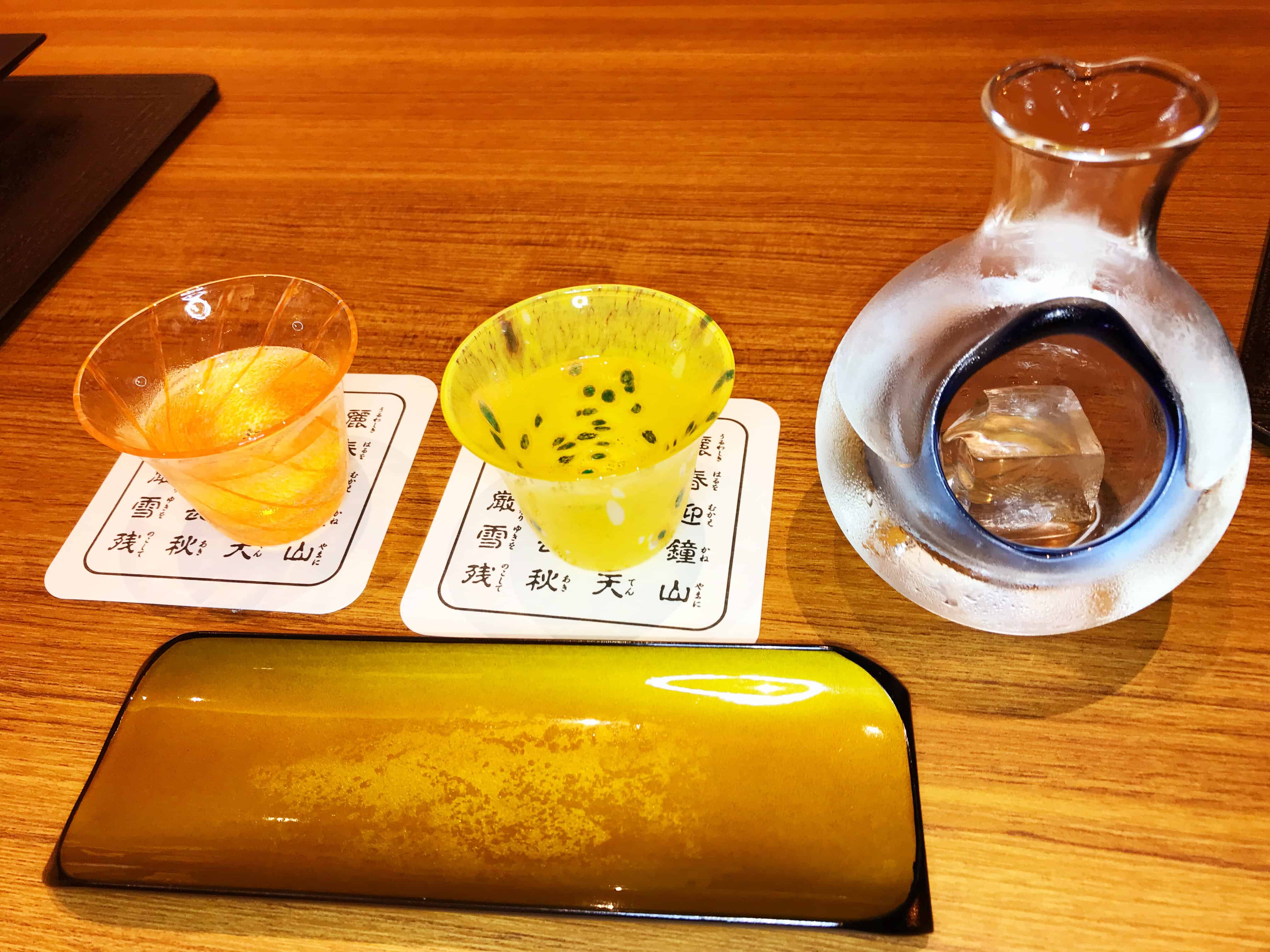
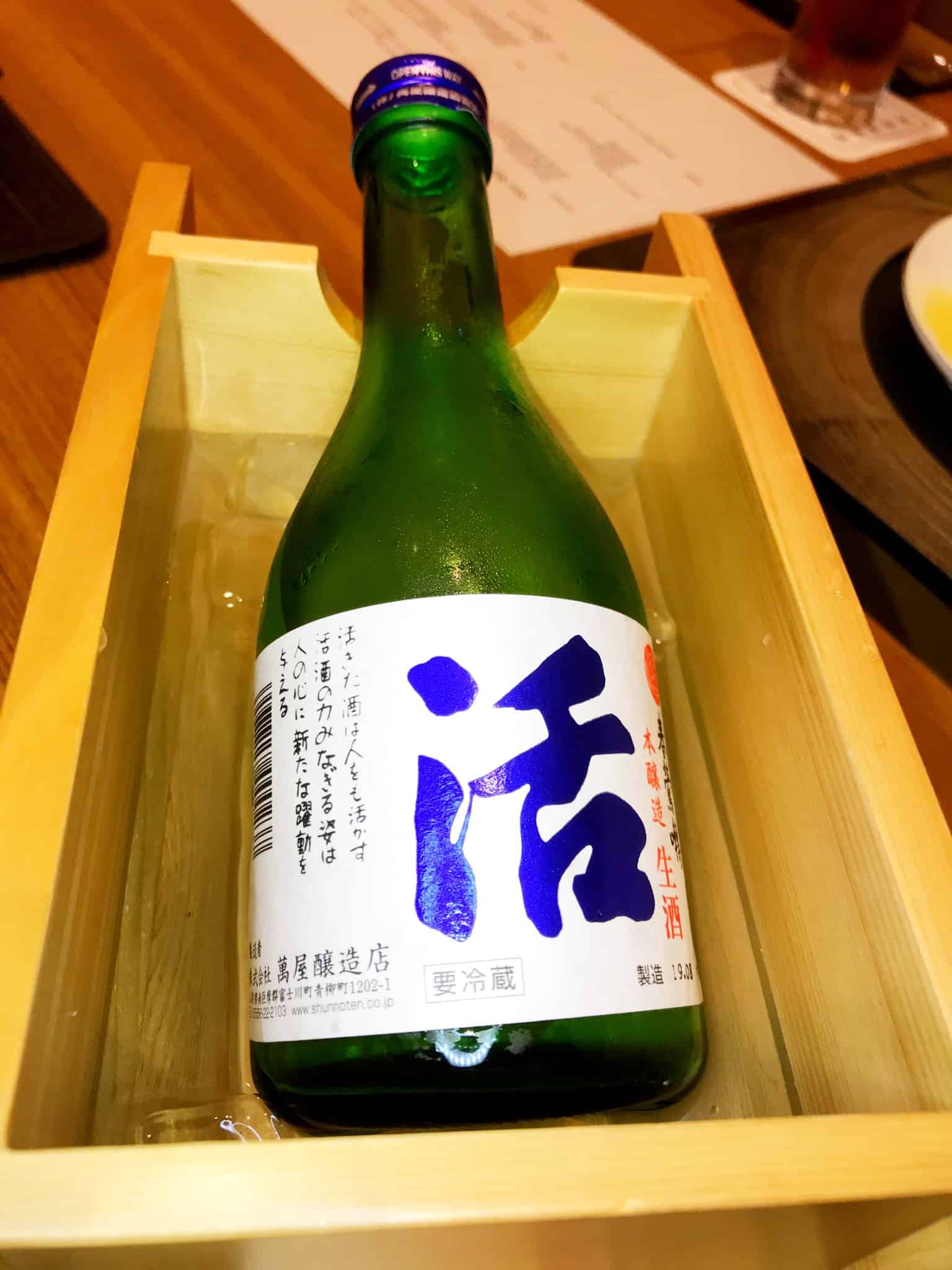
This looks too perfect to eat, right? Melon with Japanese orange jelly and Shine Muscat. It had us both at hello! I think for Koji too.
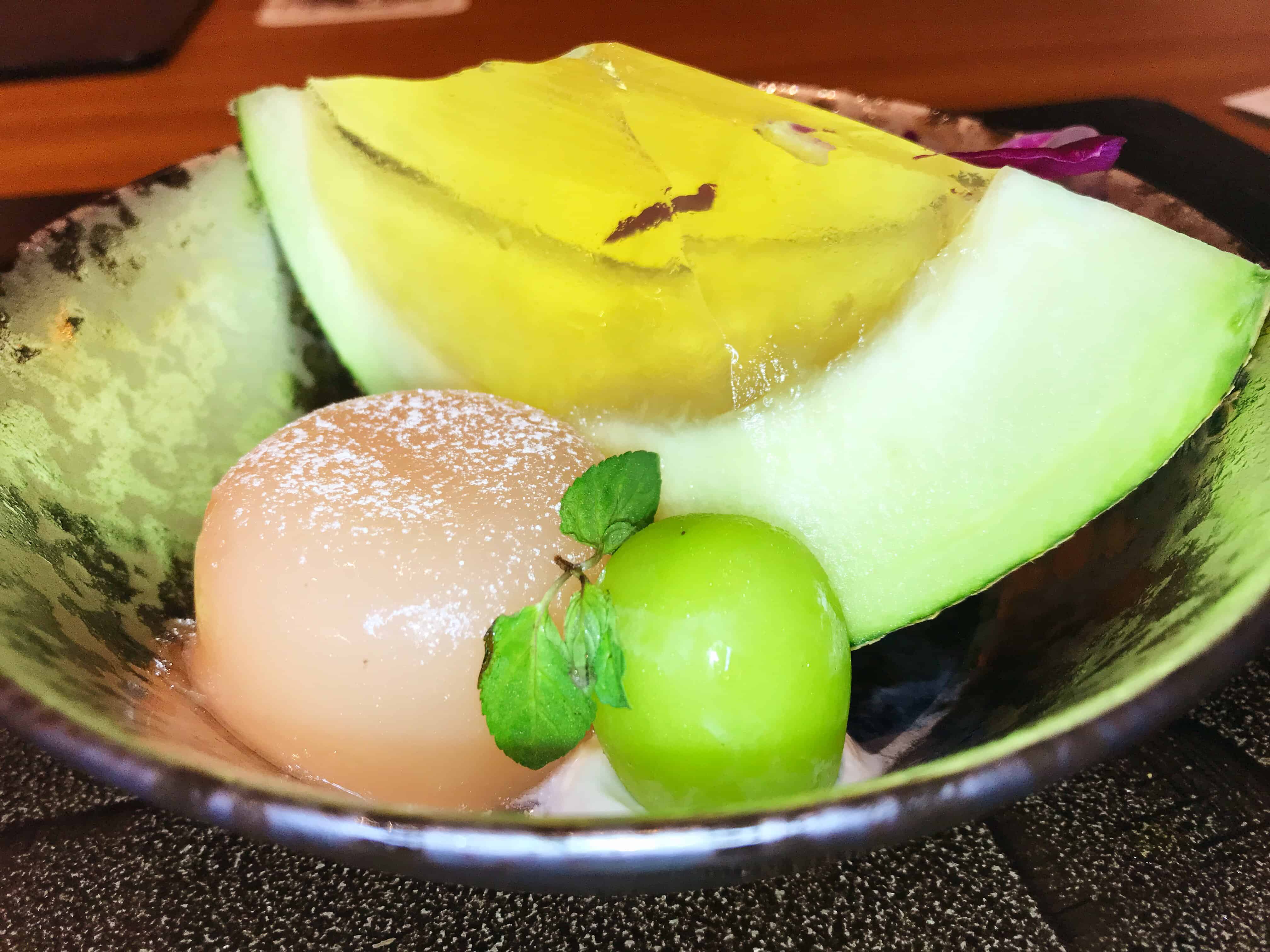
We even had an opportunity to meet the chef.

The Chef at Sakuya in Kaneyamaen
Narusawa Ice Cave
The Narusawa Ice Cave is a lava tube located in the Aokigahara Forest, just outside Narusawa Village. It is one of the three larger lava tubes at the northern foot of Mount Fuji, the other two caves being Fugaku Wind Cave and Lake Sai Bat Cave.
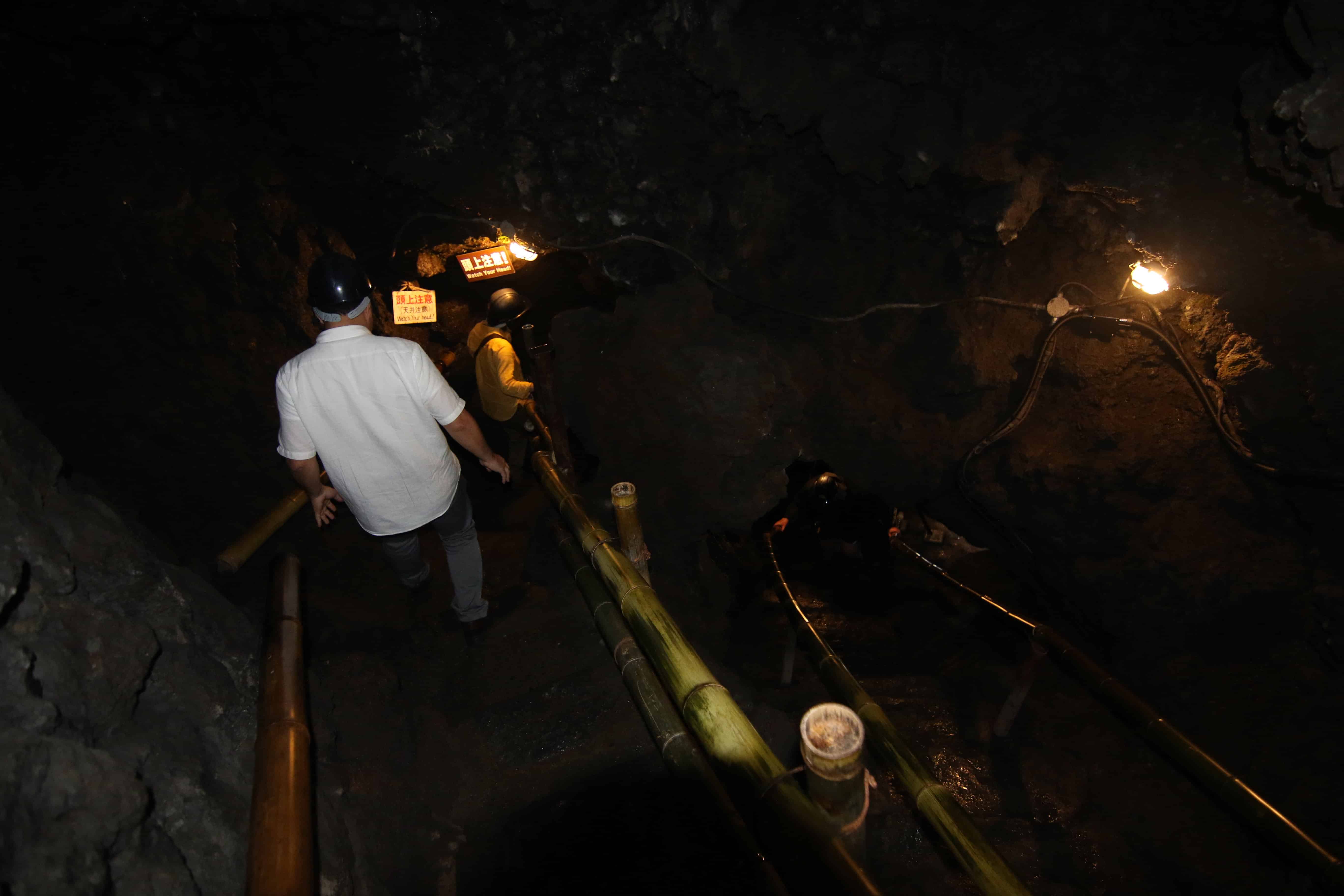
Since we were already driving around Mount Fuji and the area, we decided to stop by however if you’ve been to larger and more impressive ice caves, you may want to give it a miss.
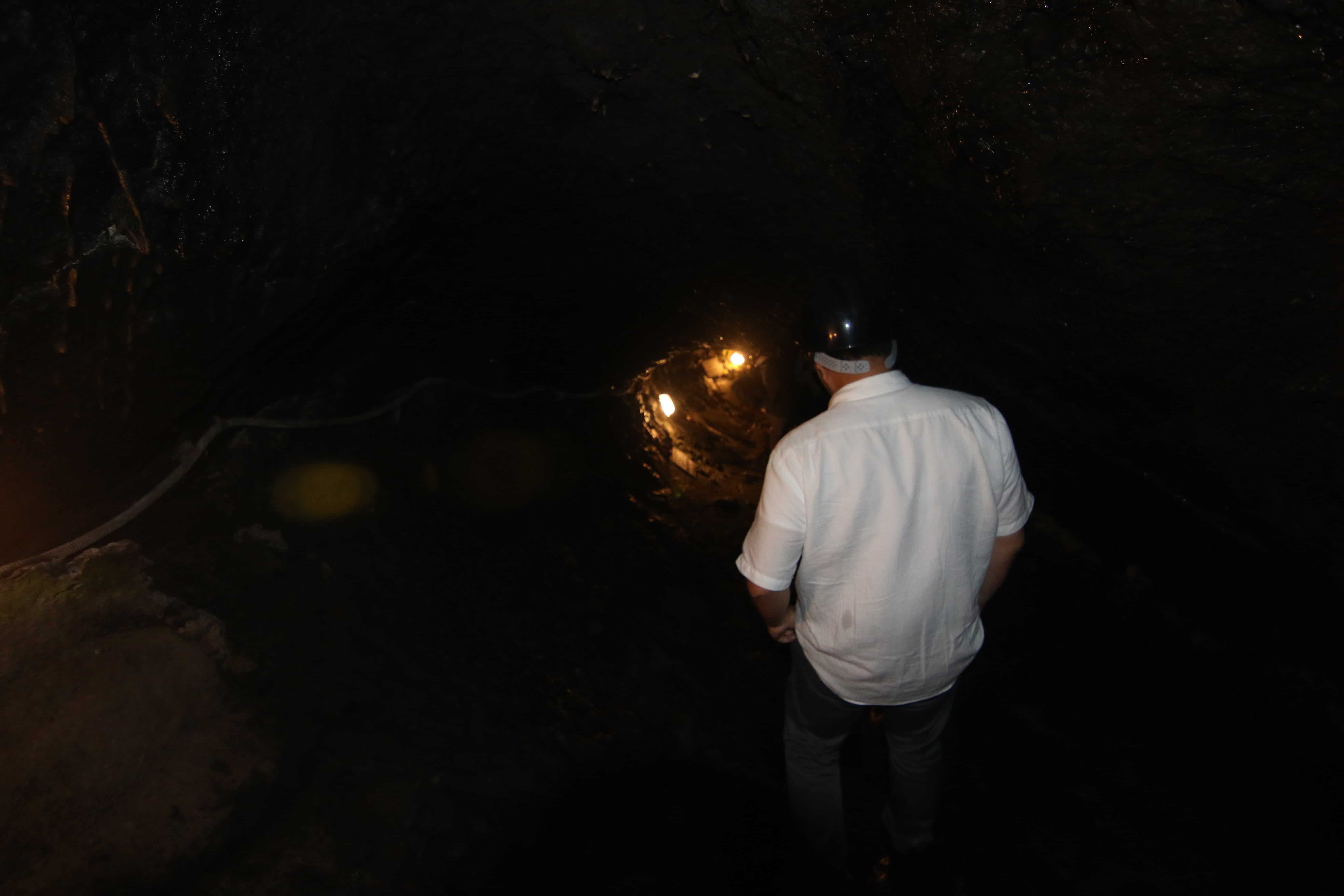
Narusawa Ice Cave is a nationally designated Natural Monument and is roughly a 153 meters long lava cave with an air hole in a vertical circular shape. There are ice pillars inside all year round and it may be a fun thing to do if you have kids in tow.
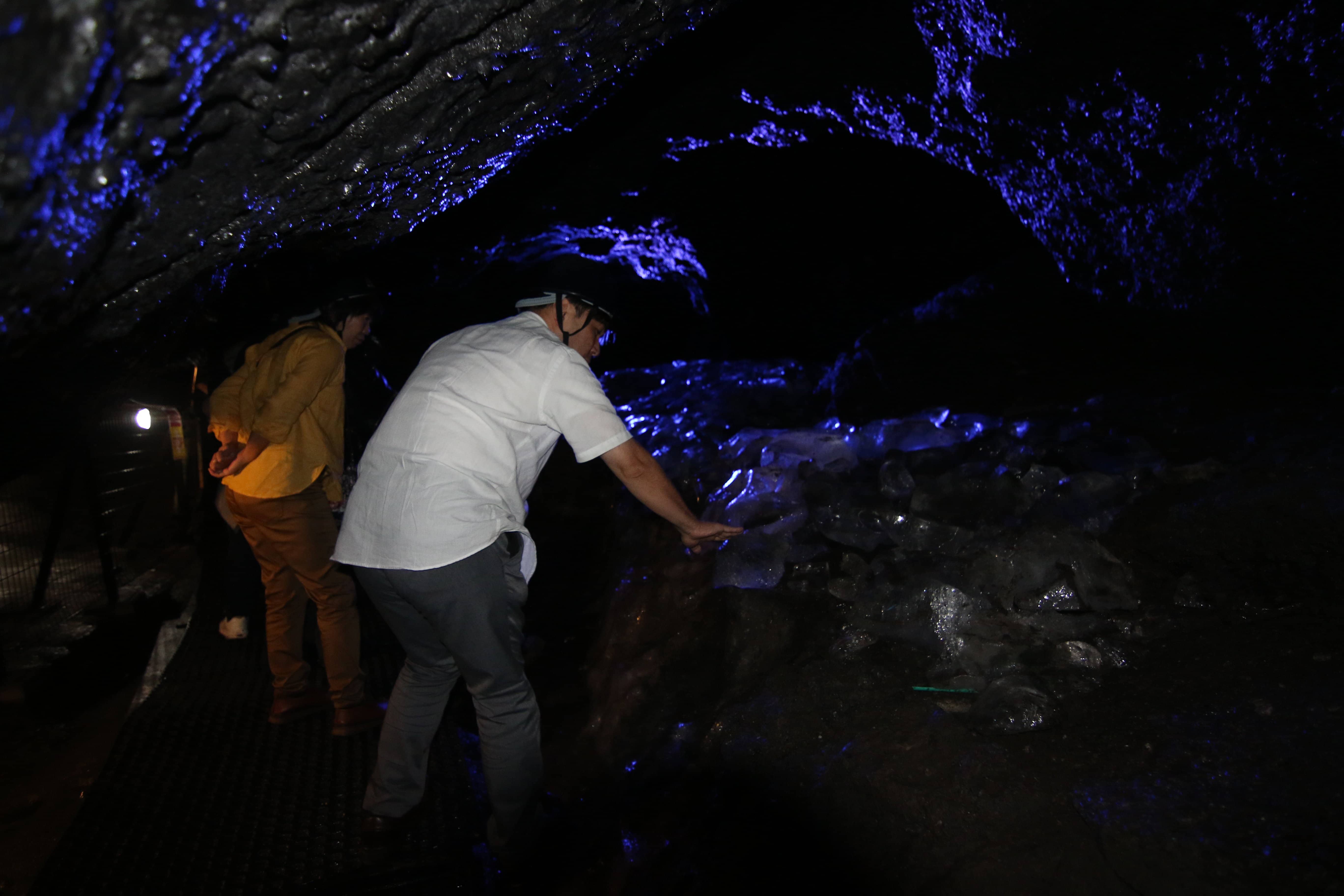
By car, its 20 minutes from Kawaguchiko IC, Chuo Expressway via Route 139 Road. By train and bus: take a bus bound for Shimobe-onsen-kyo from Kawaguchiko Station, Fujikyuko Line, get off at Hyoketsu bus stop, and then its about ten minutes by foot.
Shabu Shabu Dining
Shabu-shabu is a Japanese nabemono hotpot dish of thinly sliced meat and vegetables boiled in water and served with dipping sauces. The term is onomatopoeic, derived from the sound emitted when the ingredients are stirred in the cooking pot. There are many places to have a Shabu Shabu experience in Yamanashi, but Kofu, one of the larger towns is a great place to start.

Our Shabu Shabu dining experience just outside Kofu in Yamanashi
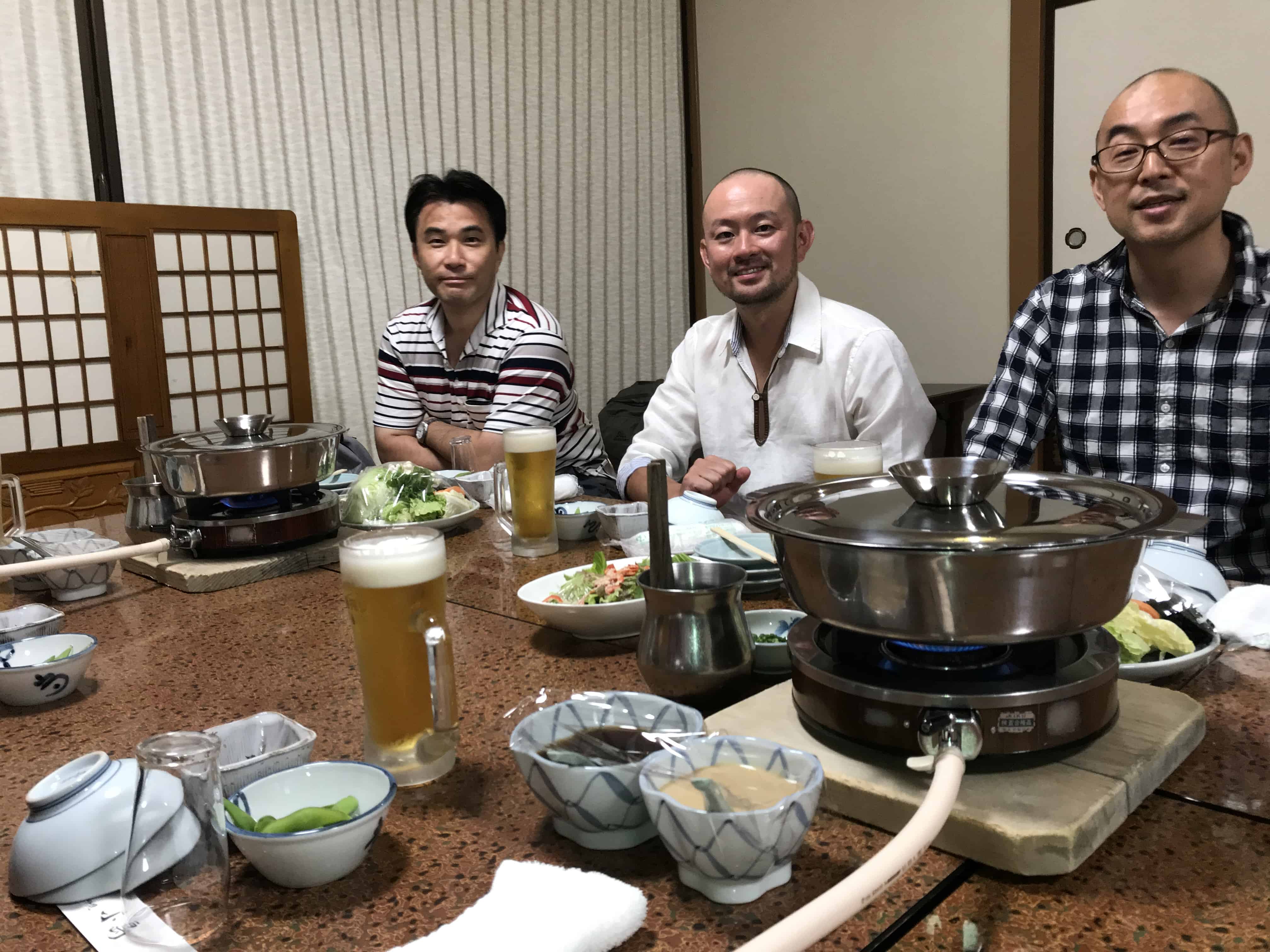

This particular way of eating hot pot dining started in Osaka during the 1950’s but has since spread across Japan and around the world. It gets its name from the Japanese onomatopoeia for “swish, swish,” as each piece of meat is lightly swished around in boiling broth before eating. Unlike other types of hot pot experiences, where the ingredients are cooked together before serving, shabu-shabu ingredients are served raw and cooked tableside during the meal, similar to fondue.
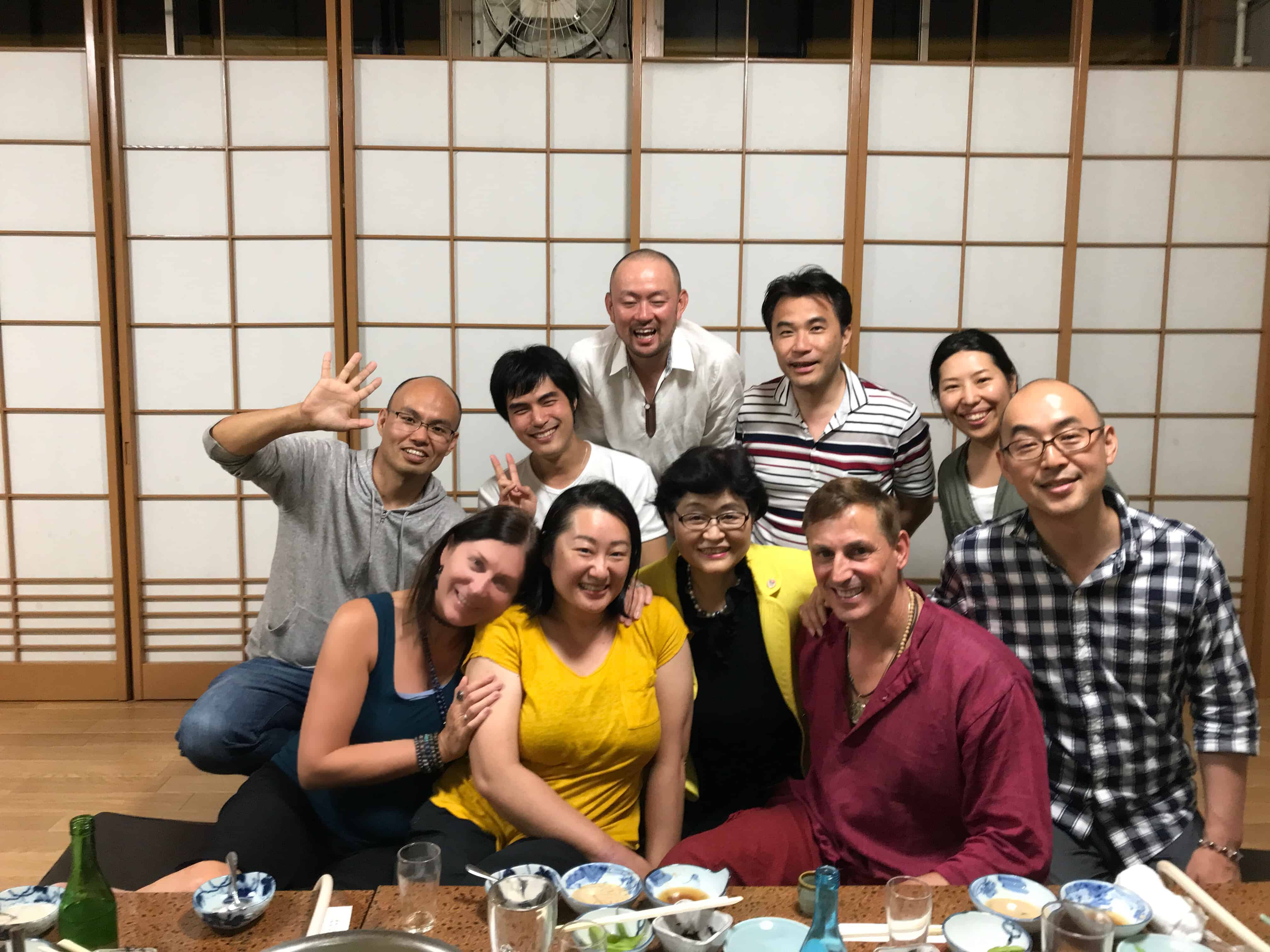
Our incredible hosts from Neten for Shabu Shabu dining near Kofu
Historical Kofu
Kofu is located in central Japan about an hour or so from Tokyo depending on traffic and time of day. In its center, Takeda Shrine sits on the site of a revered 16th-century general’s former home. Nearby are the ruins of Kofu Castle and the Yumura Onsen area is home to several hot-spring spas. North, the Arakawa River runs through Shosenkyo Gorge, which is also known for its vibrant autumn foliage — September and October are great months to travel here. A trail leads to Sengataki Waterfall — which we visited — and a cable car runs up to Mount Rakanji, which offers breathtaking views of Mount Fuji.
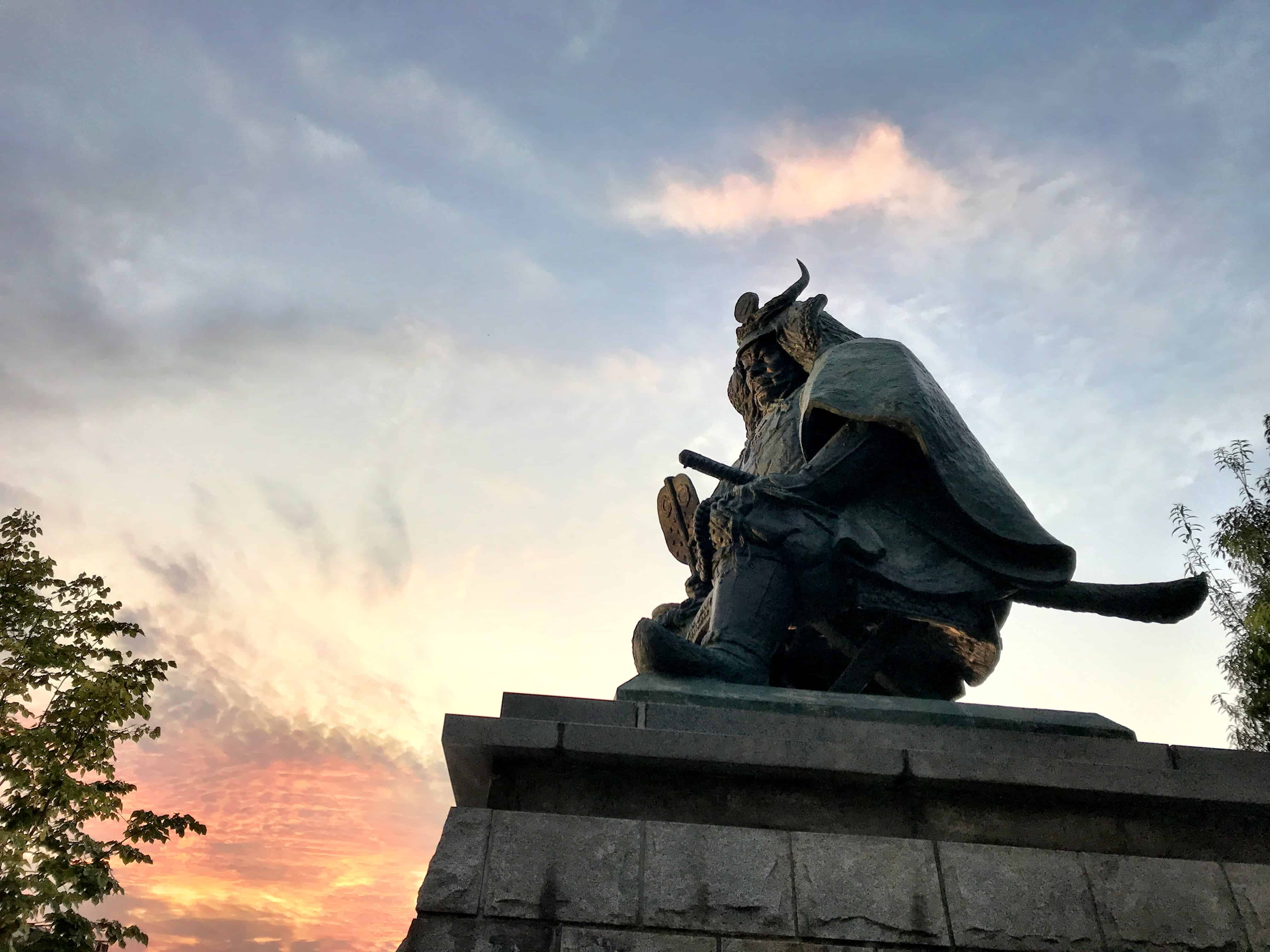
Above and below, statue of Takeda Shingen, Kofu, Yamanashi Prefecture
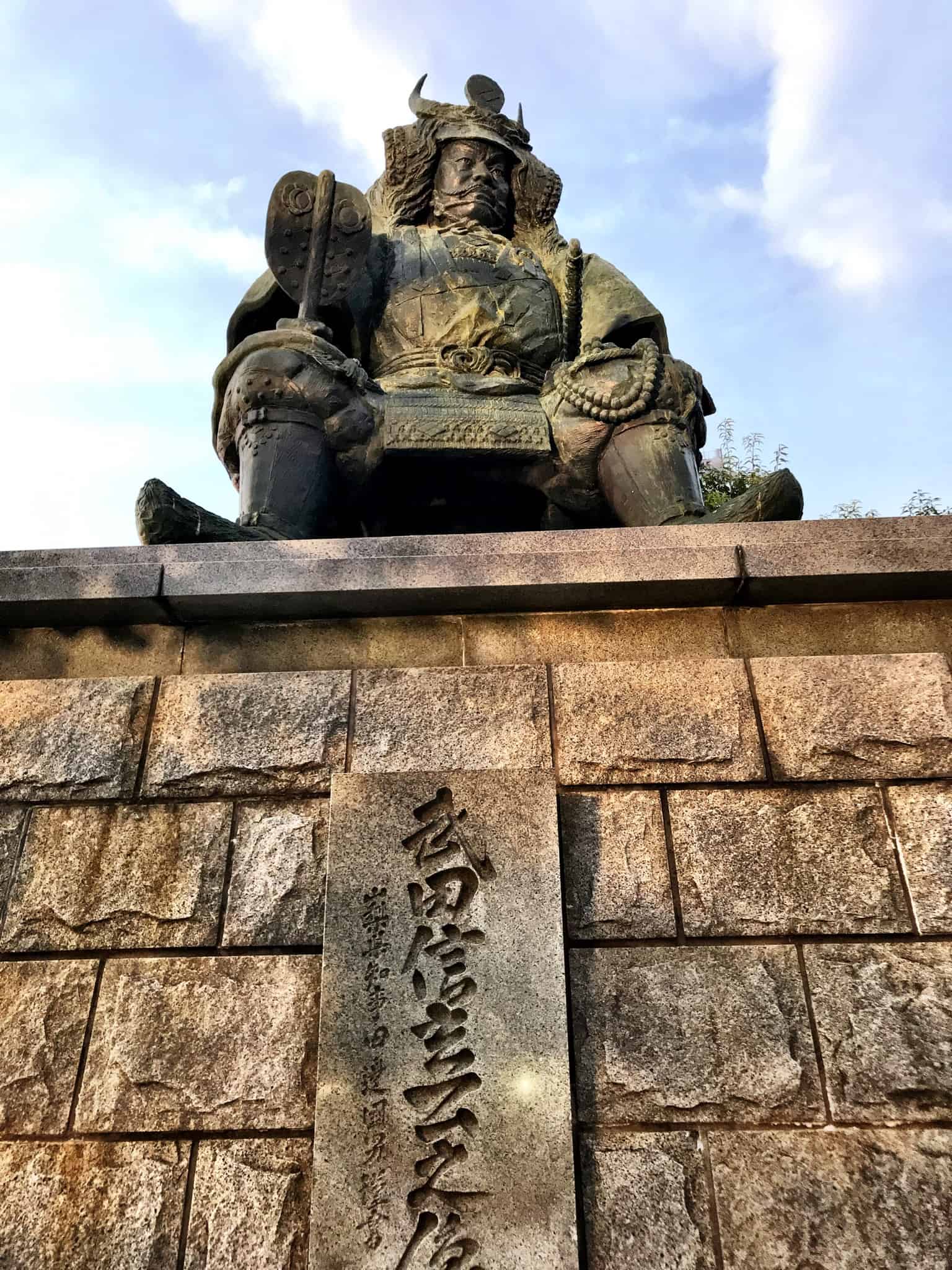
Kofu City is known for its grapes and because of them, the wineries in the area as well. Yumura Spa is popular within the city itself. Also in the town center is Kofu Castle, which was constructed in 1583 and is just a short walk from Kofu Station in a hilly park area known as Maizurujo Koen (Maizuru Castle Park). Kofu Castle became the most fortified castle in the Kanto area after Edo Castle, in what is now Tokyo.
Takeda Shrine is dedicated to Takeda Shingen (1521-1573), an important feudal lord of the area. The shrine‘s festival on the first weekend of April is one of the largest and most important events in Kofu. Kai-Zenkoji Temple is a Buddhist Jodo sect temple about 2 kilometers east of Kofu Station, and claims to have been founded by Takeda Shingen in 1558. Kai-Zenkoji is about 10 minutes’ walk north from Zenkoji Station on the Minobu Line, two stops from Kofu Station.
Near the train tracks is a cute historical area with cute shops, boutiques, restaurants, and wine bars — we loved walking around the area on a late afternoon, taking in the cafes and tea houses.

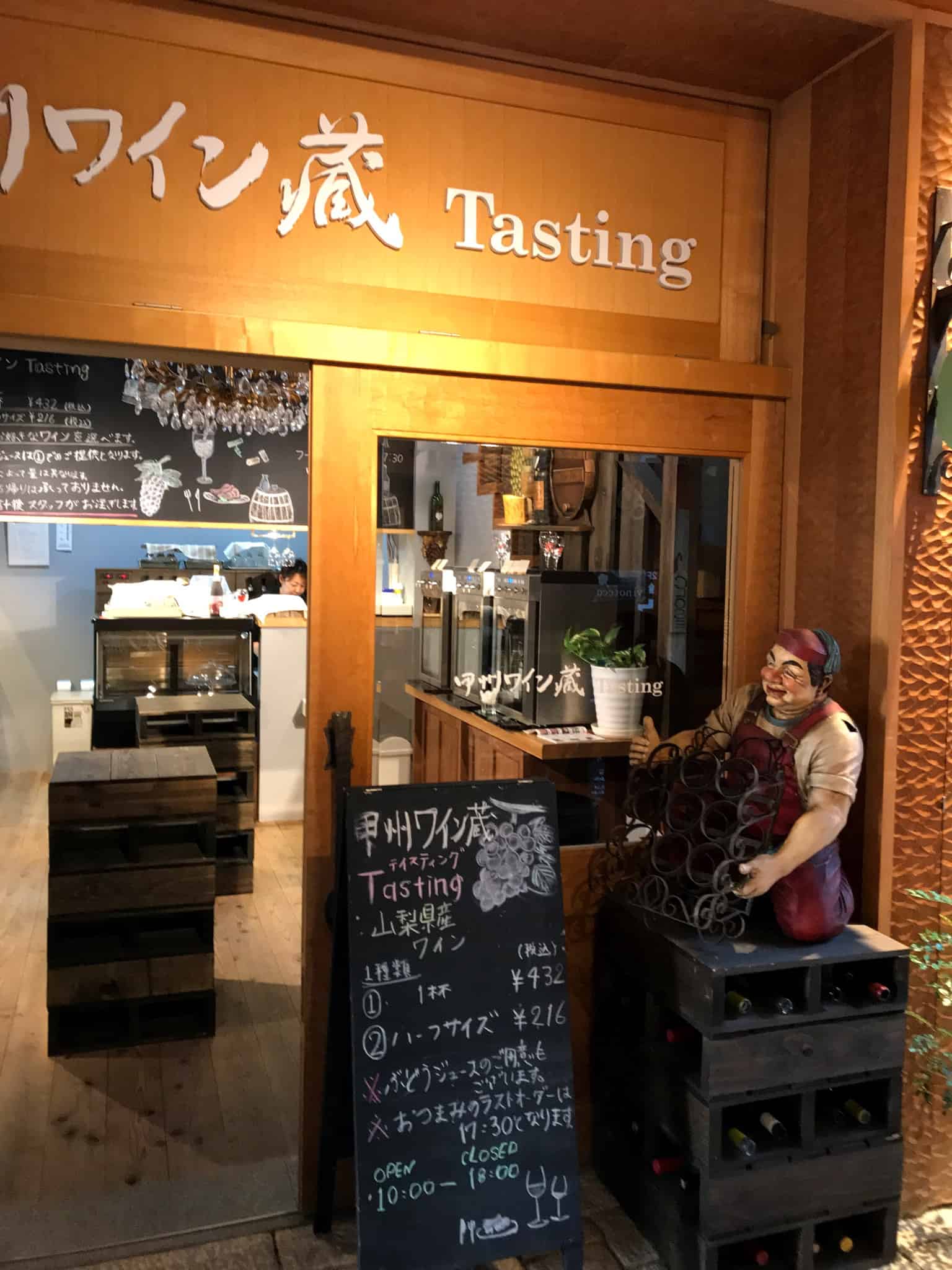
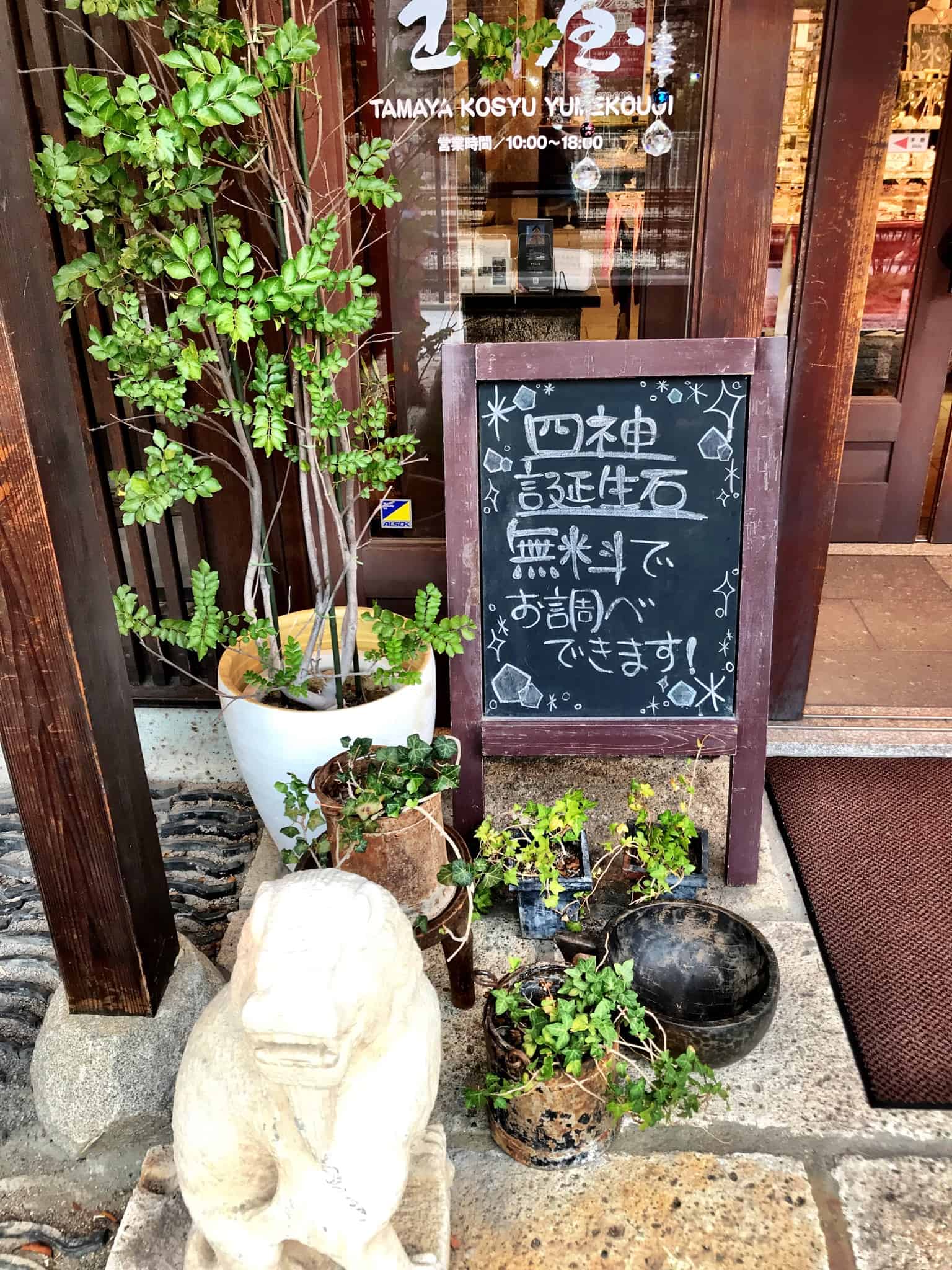
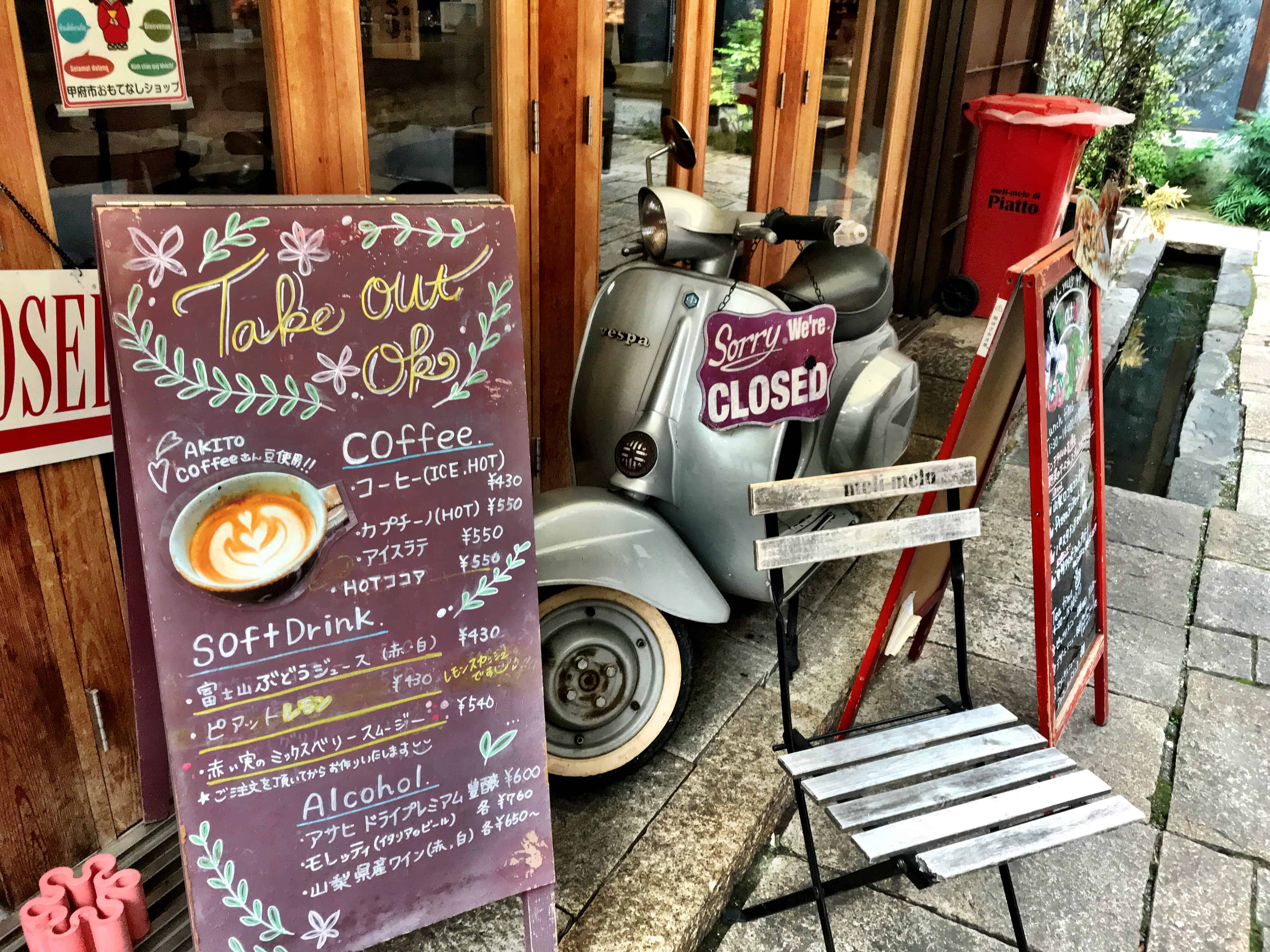
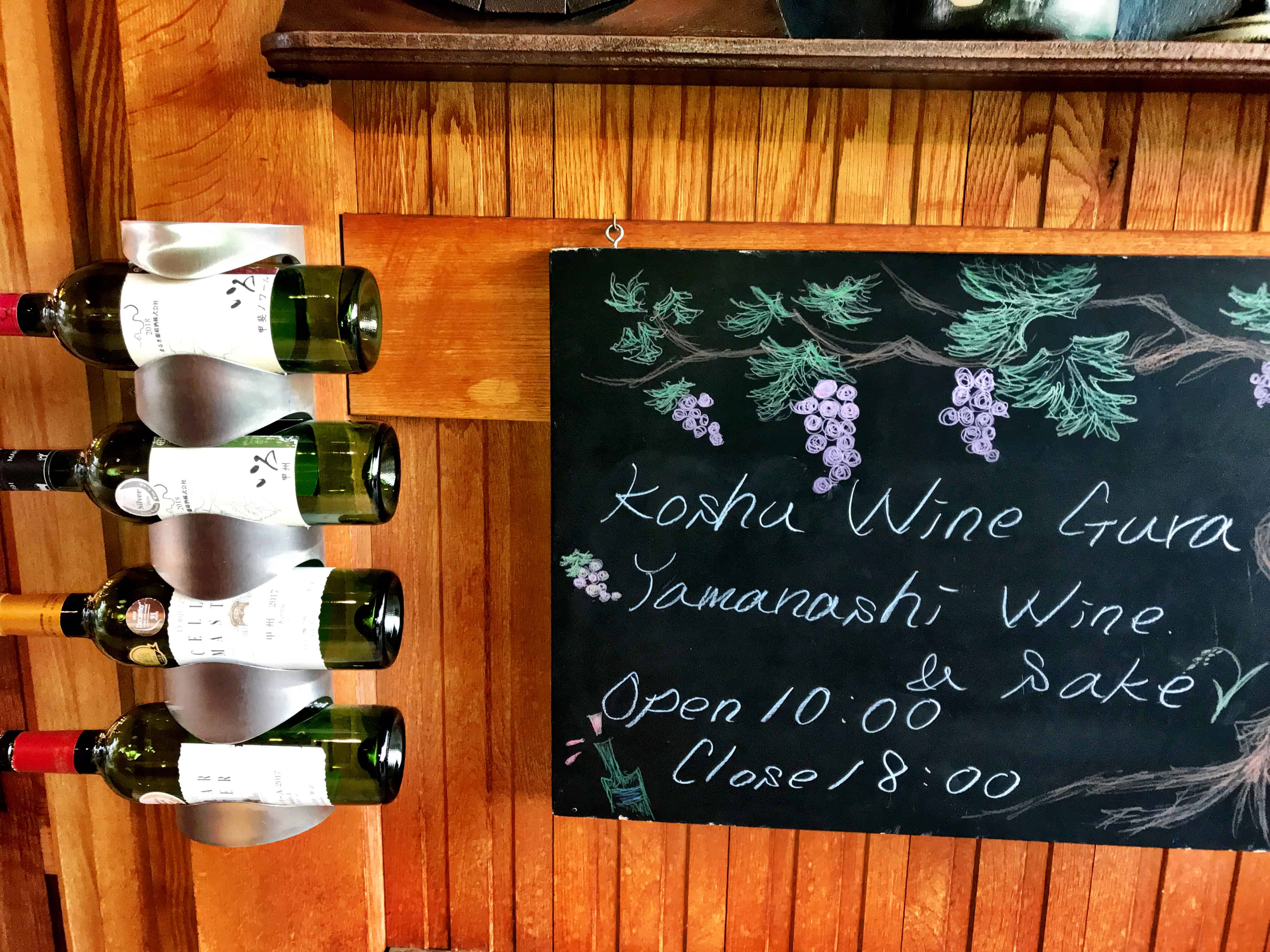
The Yamanashi Prefectural Museum of Art displays work by French artist Jean Francois Millet and paintings by local artists. The grounds have sculptures by Rodin, Henry Moore and Aristide Maillol.
Kofu is also known as the world’s leading producer of Kenma Chokuku (carved) accessories and also has a lot of gemstone shops as well. The Kenma industry in Kofu started when a Shinto priest from Mitake went to Kyoto to learn how to make crystal balls in 1834 (yes, really!). Today, Kenma products include crystals, agate, jade and opal, among others.
Lunch at Minaki
Nearby in Katsunuma, there’s a unique foodie gem called Minaki. Tucked away in a building that is around 130 years old, you need to bow to enter (as is common in many eateries in Japan), take off your shoes and wait to be seated.
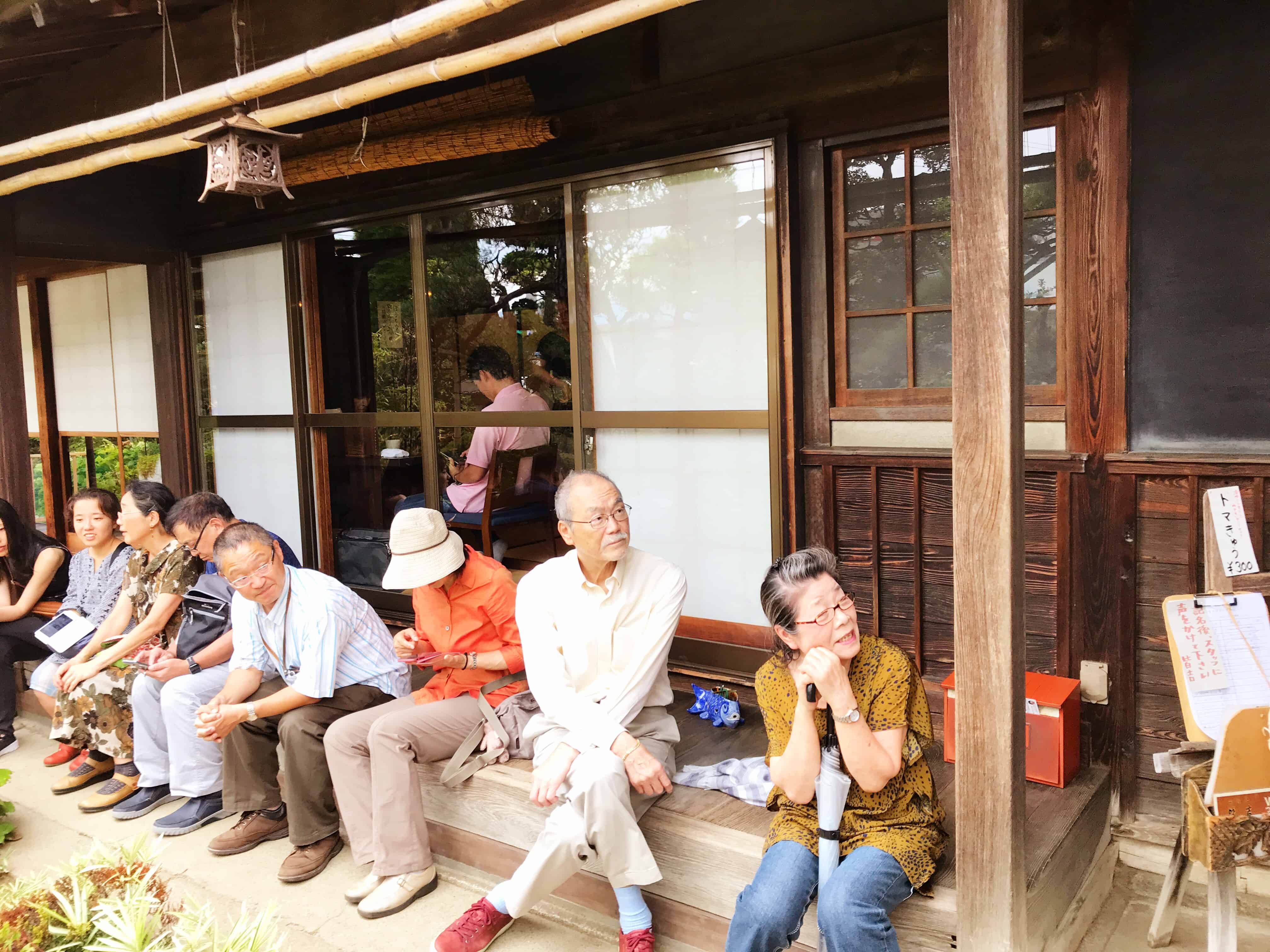

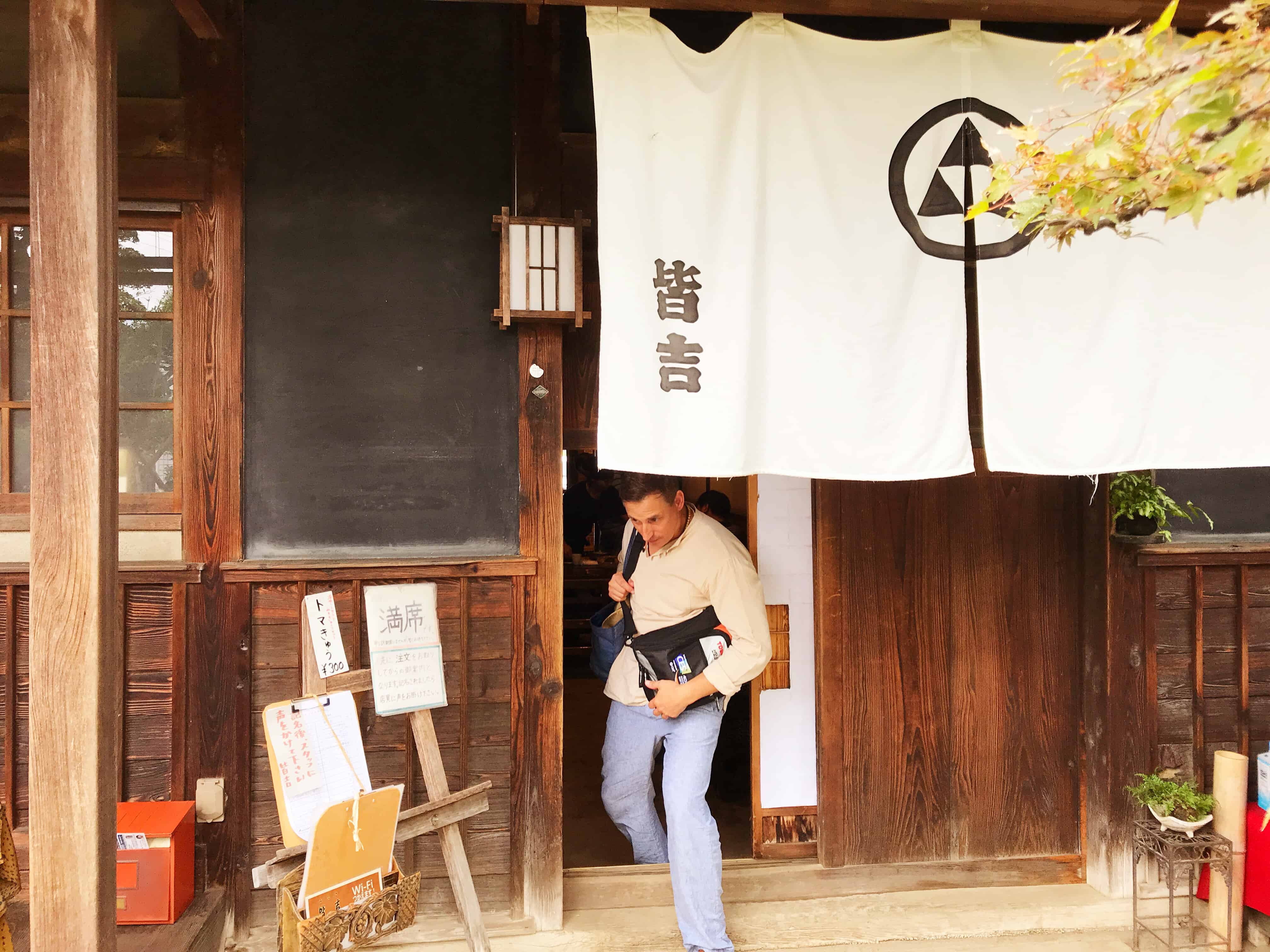
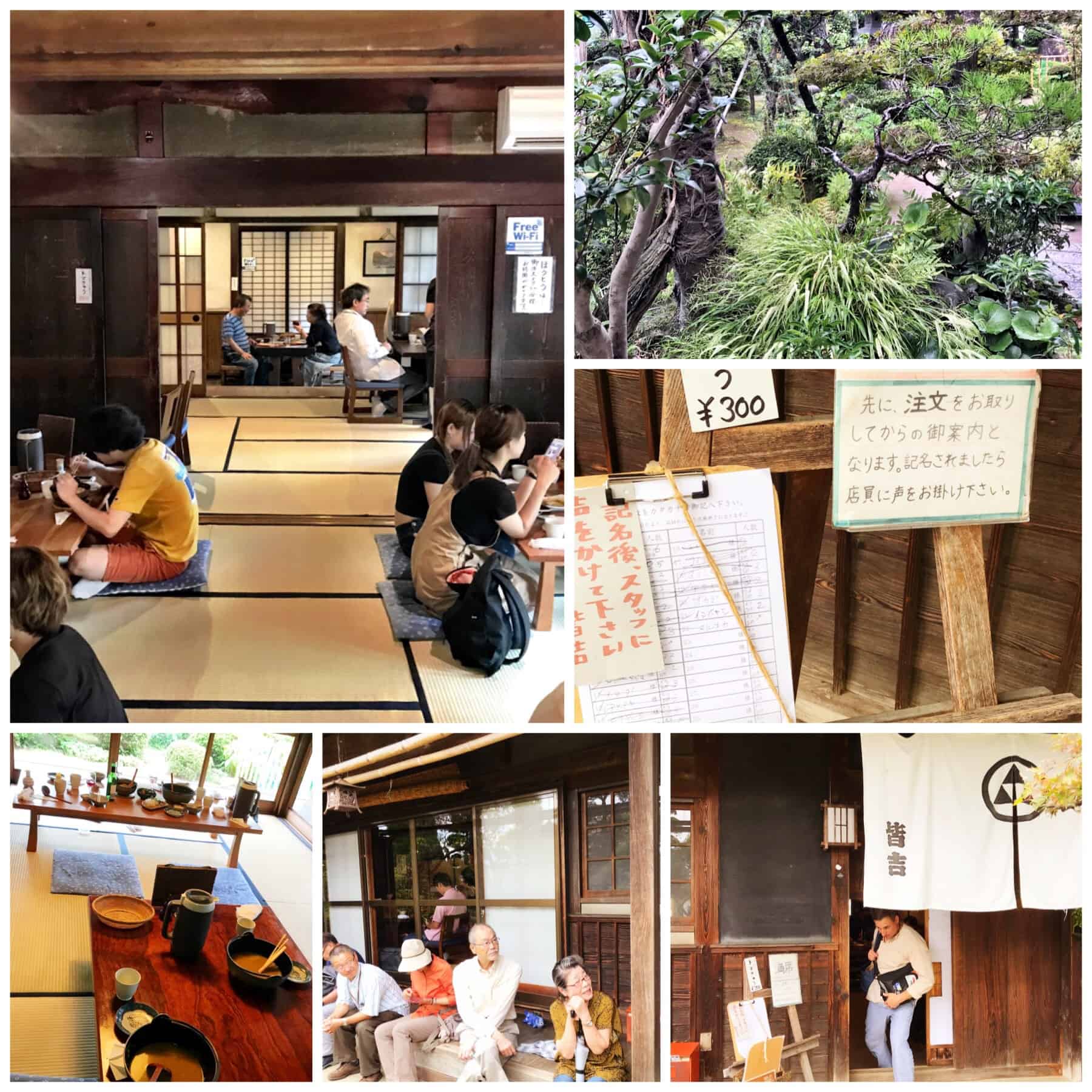
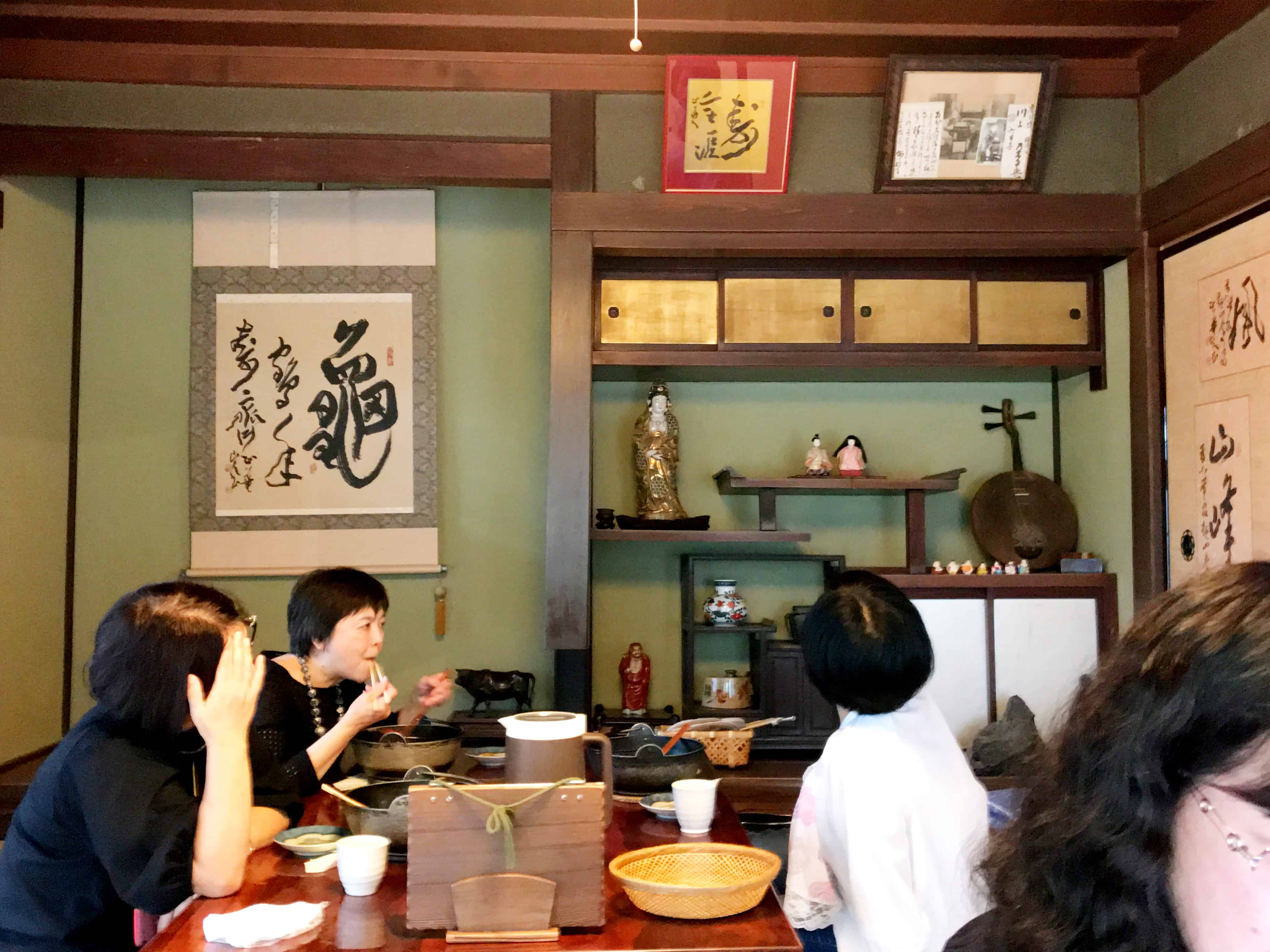
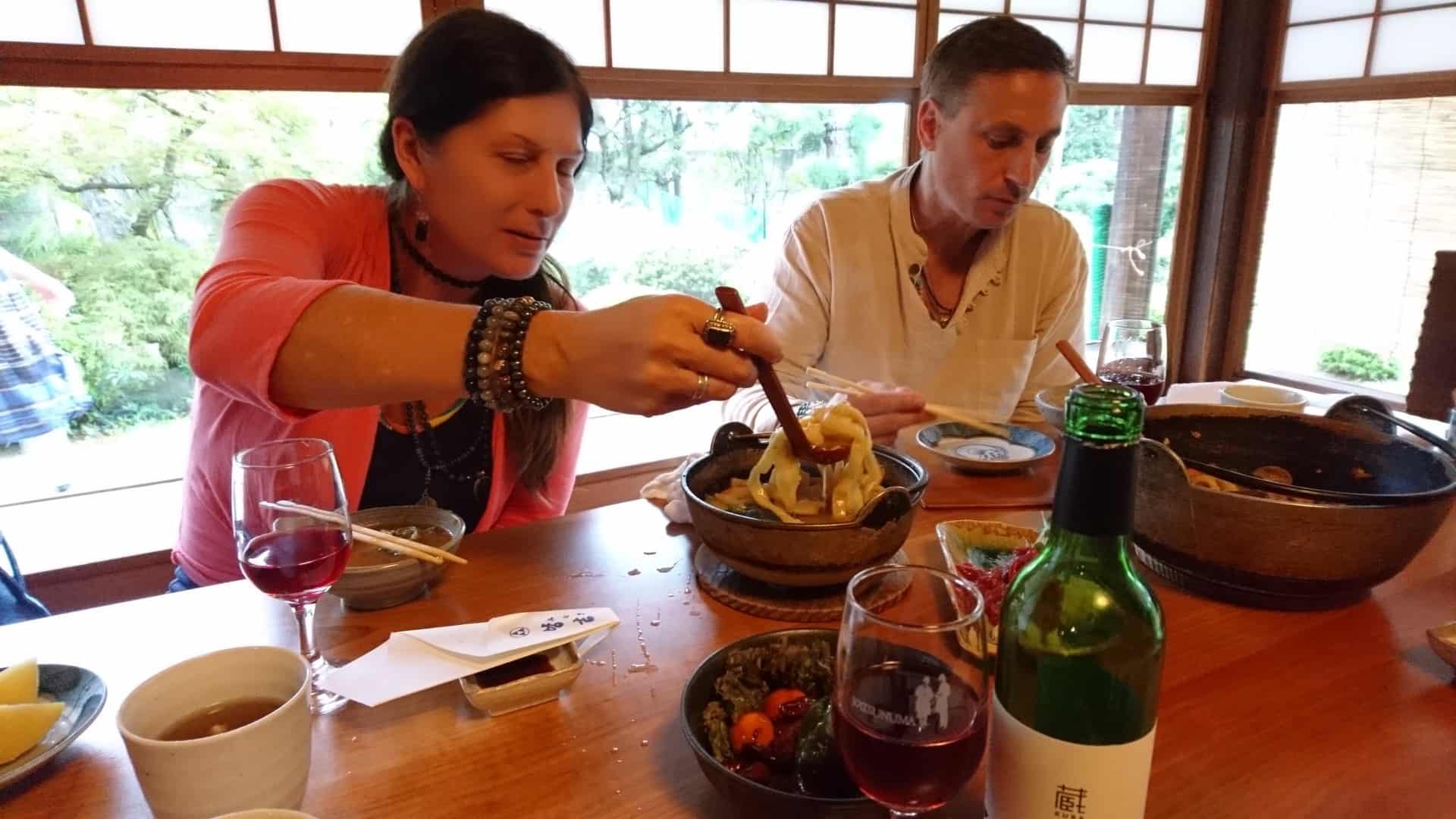
Their specialty? Flat udon called “Hoto” in Koshu Katsunuma. The hoto is strong and supple. The noodles are Iki and the soup is Koshu — Miso uses 100% Japanese non-GMO soybeans and here, they serve a traditional homemade miso with no additives.
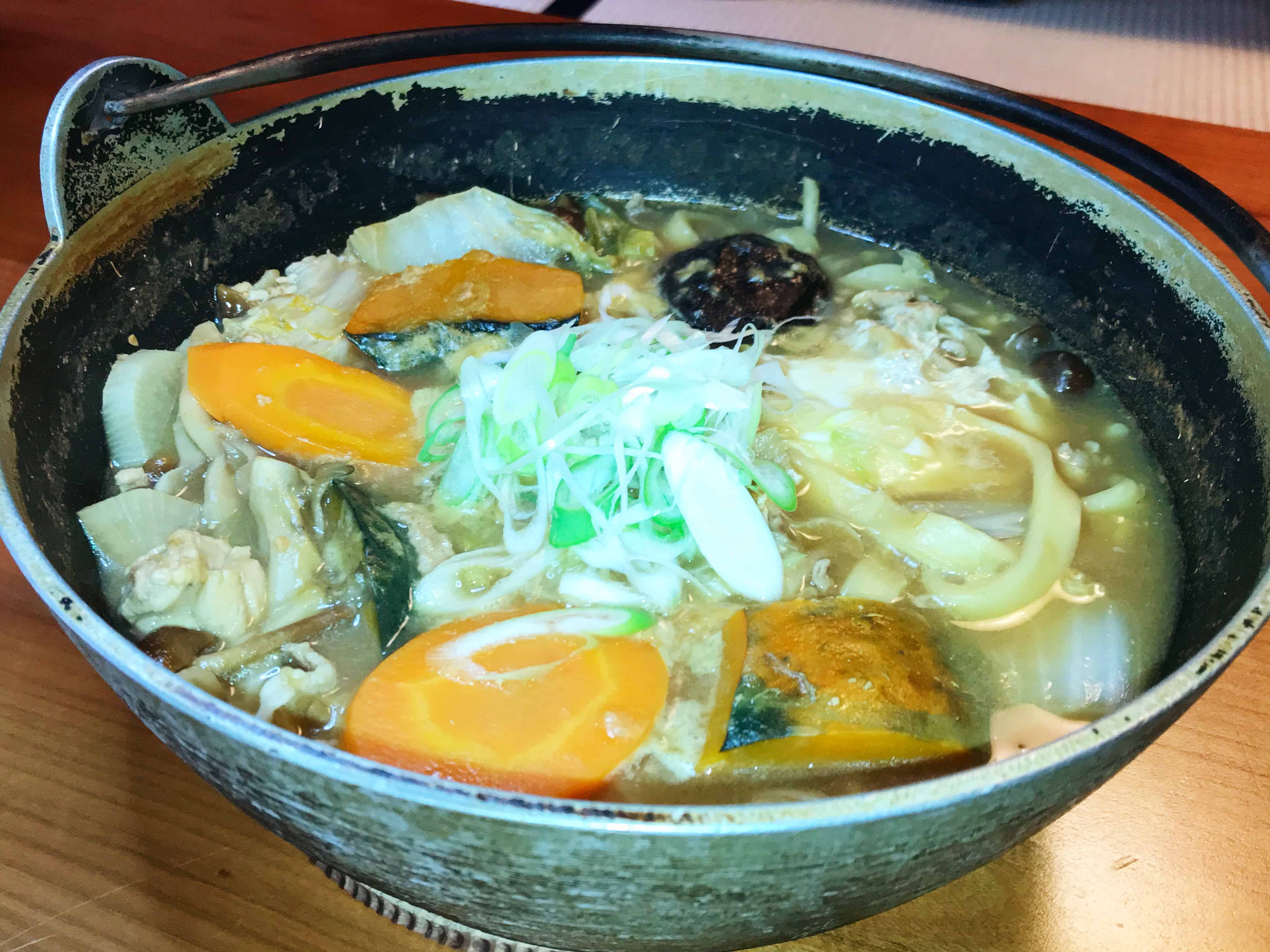
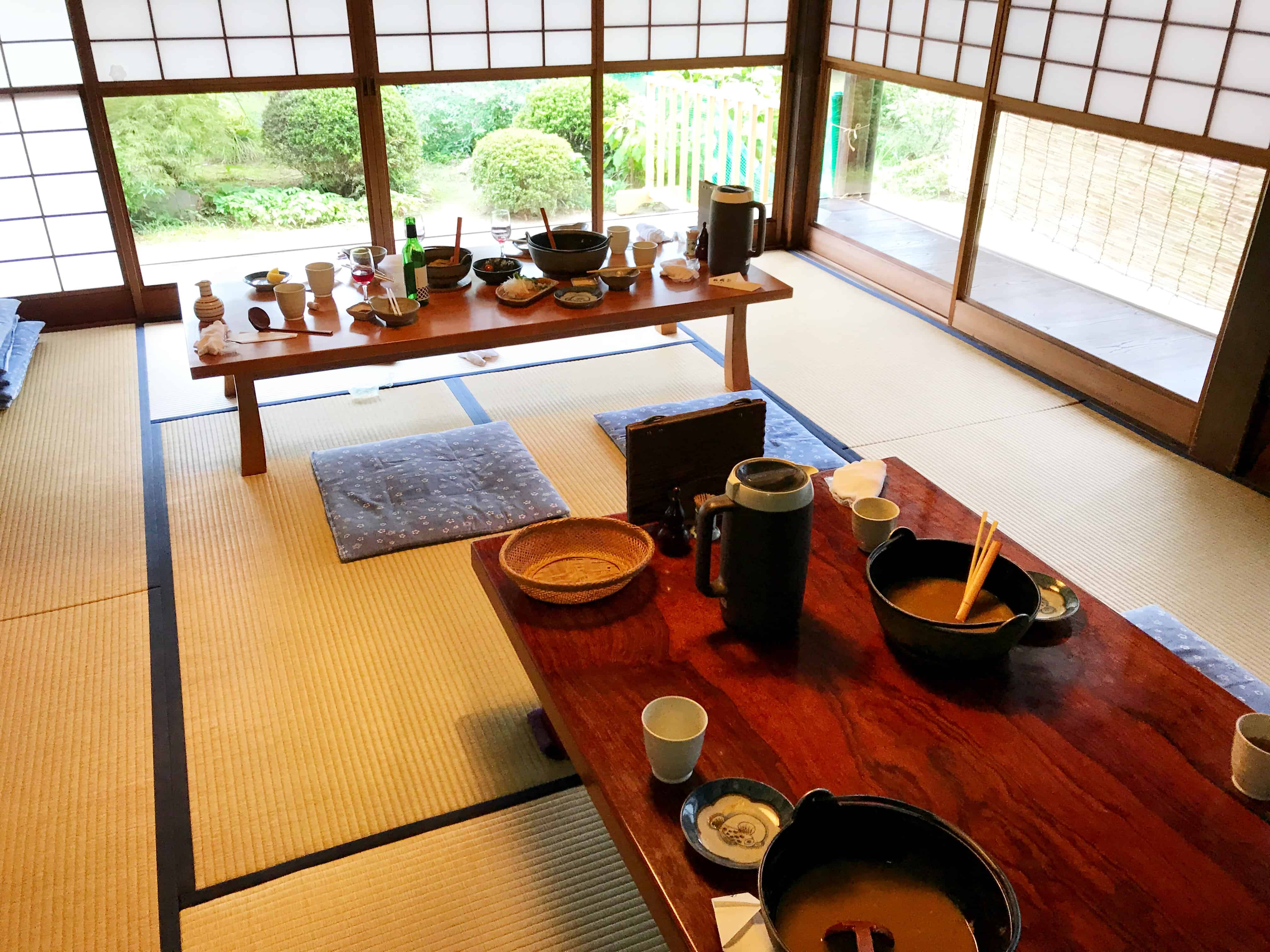

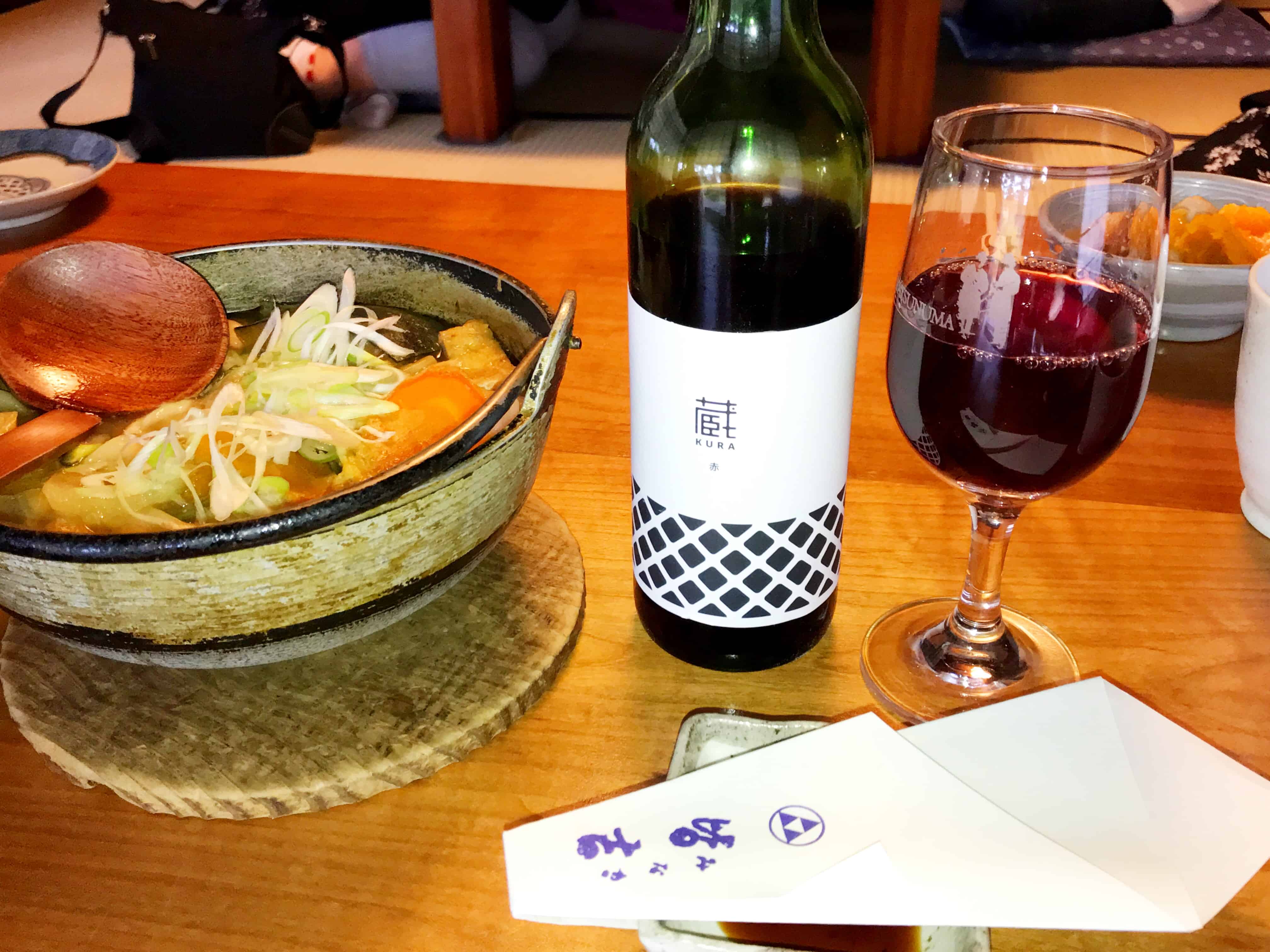
Gemstone Factories & Shopping
There are various gemstone shops around the region and in Kofu City itself. If you have a car, you can head to one of the factories where you can see how they sand and polish the stones, used to make jewelry and other beautiful items for the home. We had an opportunity to spend time with Hiroyuki Kuwabara of Dolje in Yamanashi. In the northern part of Yamanashi Prefecture, you’ll find “Shosenkyo,” which is a crystal path of about 58 kilometers long that connects the mountains which house these crystals. He took us to see an artisan who still uses a rare, old fashioned process for polishing crystals.
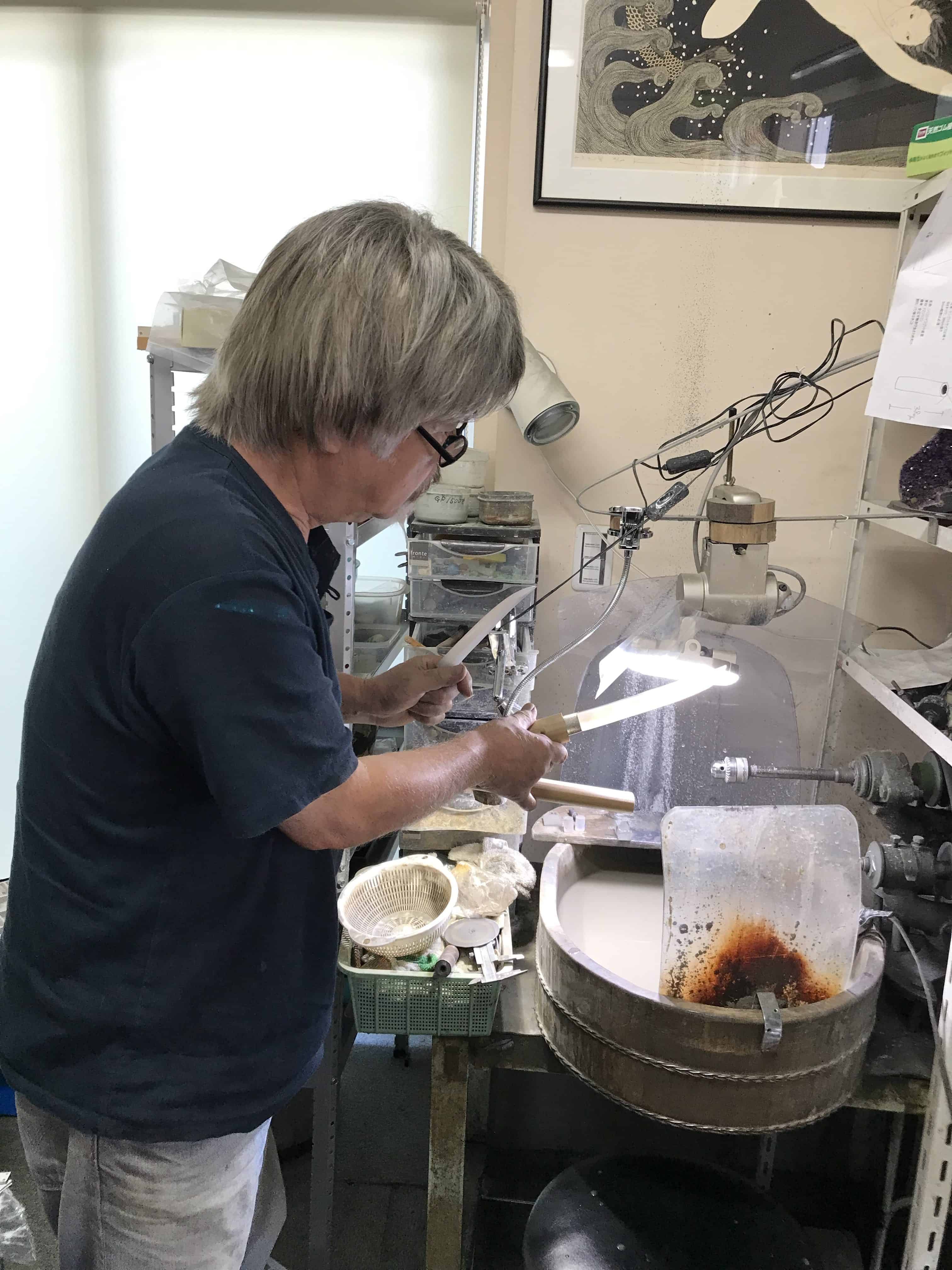
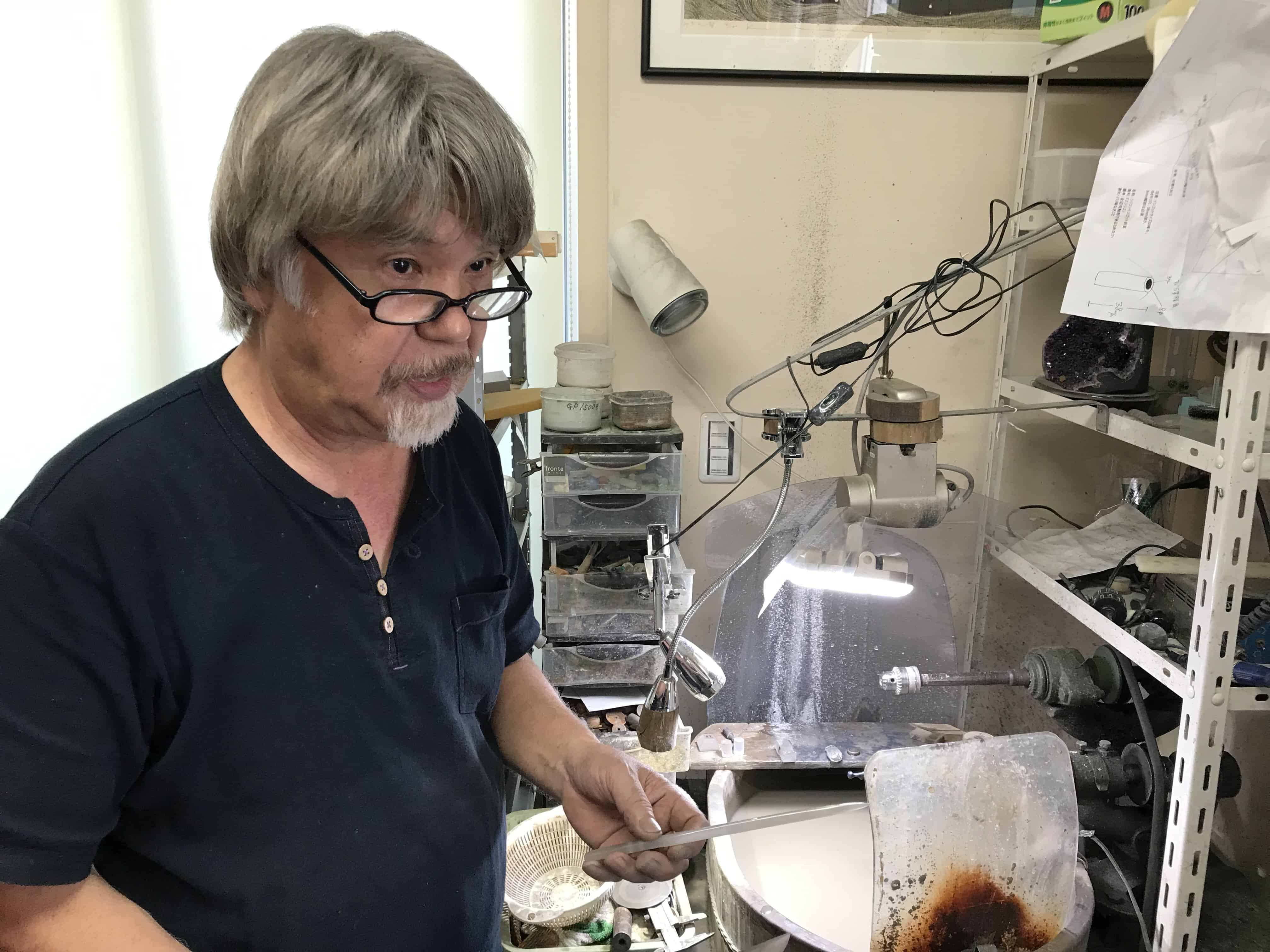
Hatsuo Ohta shows us an old fashioned and rare process for polishing crystals — he is one of the few left in Japan who still use this kind of machine for polishing.
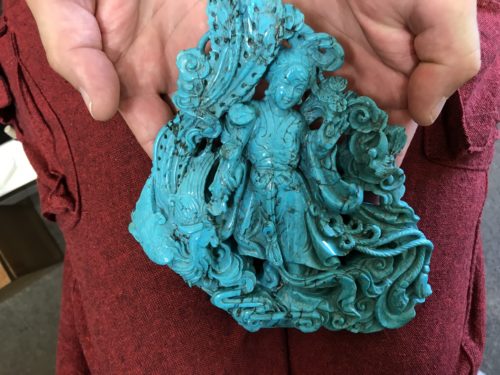
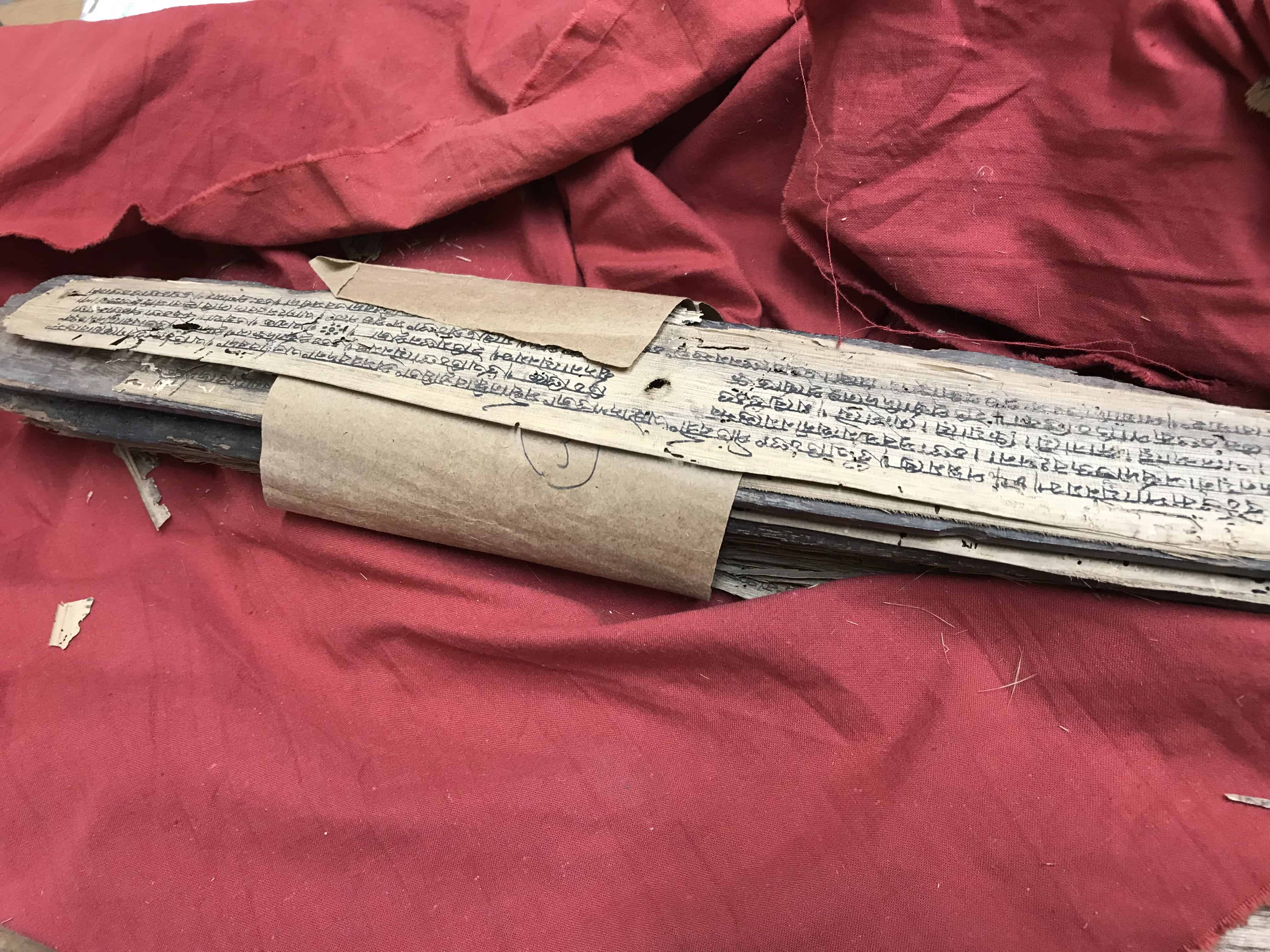
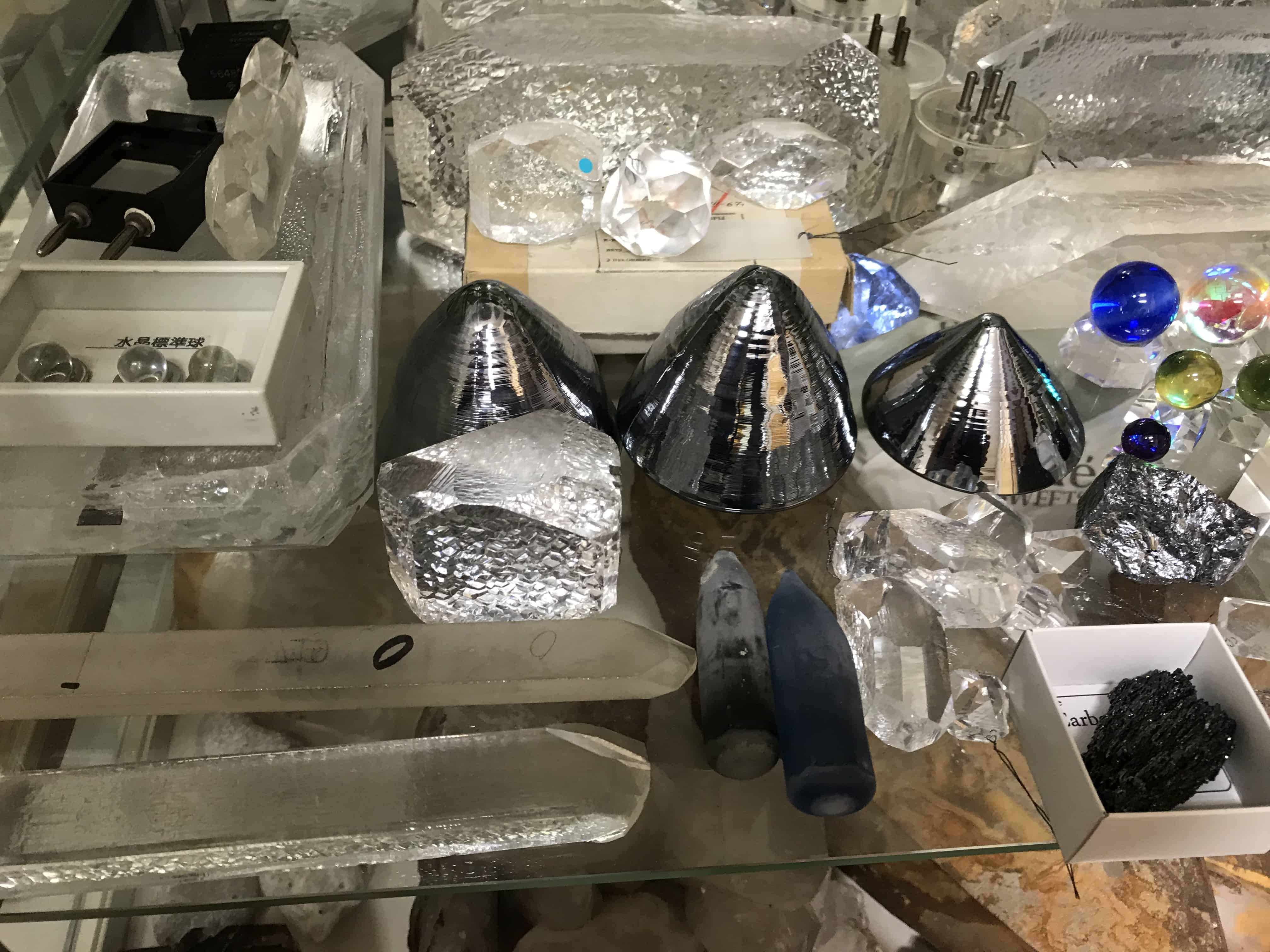
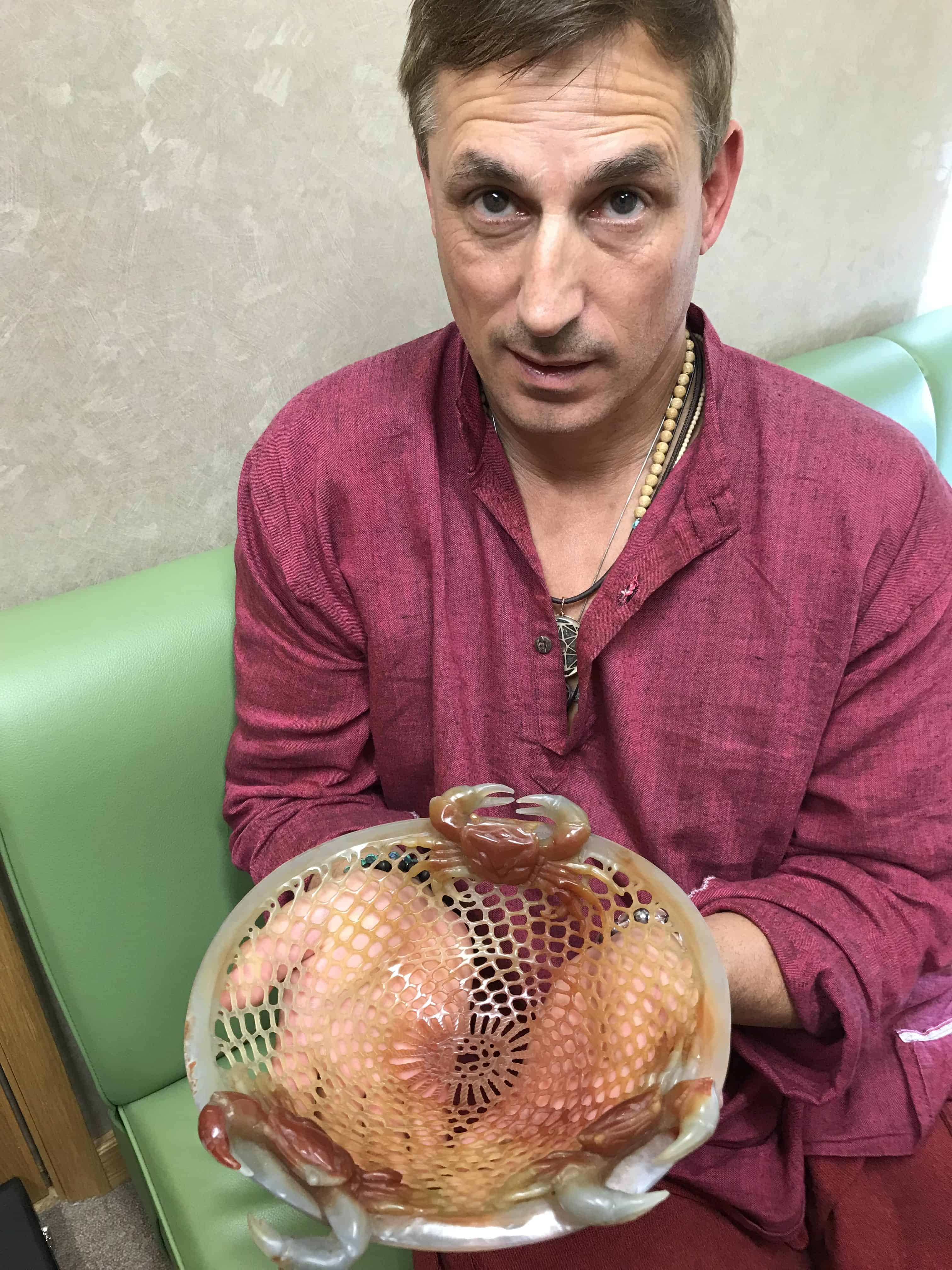
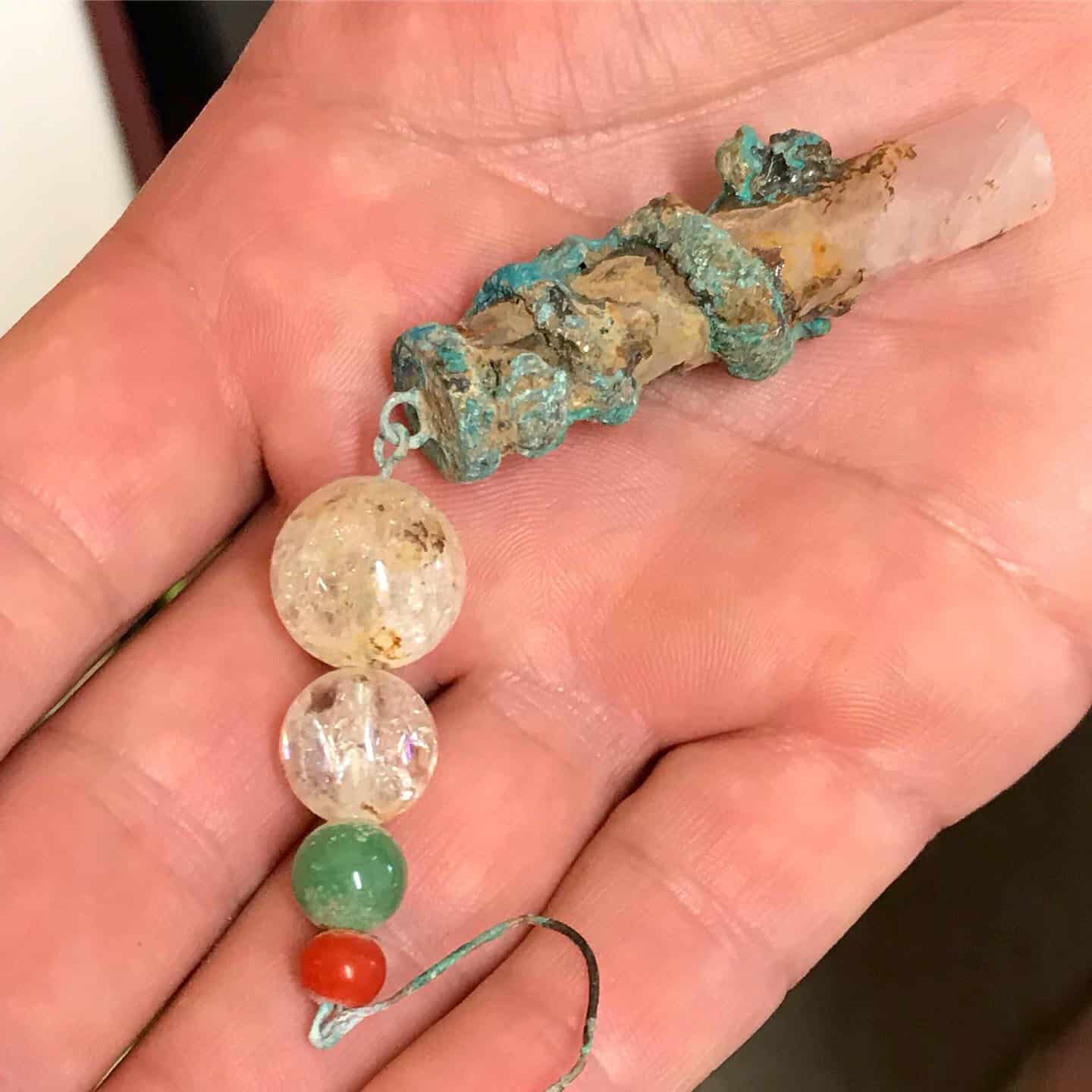
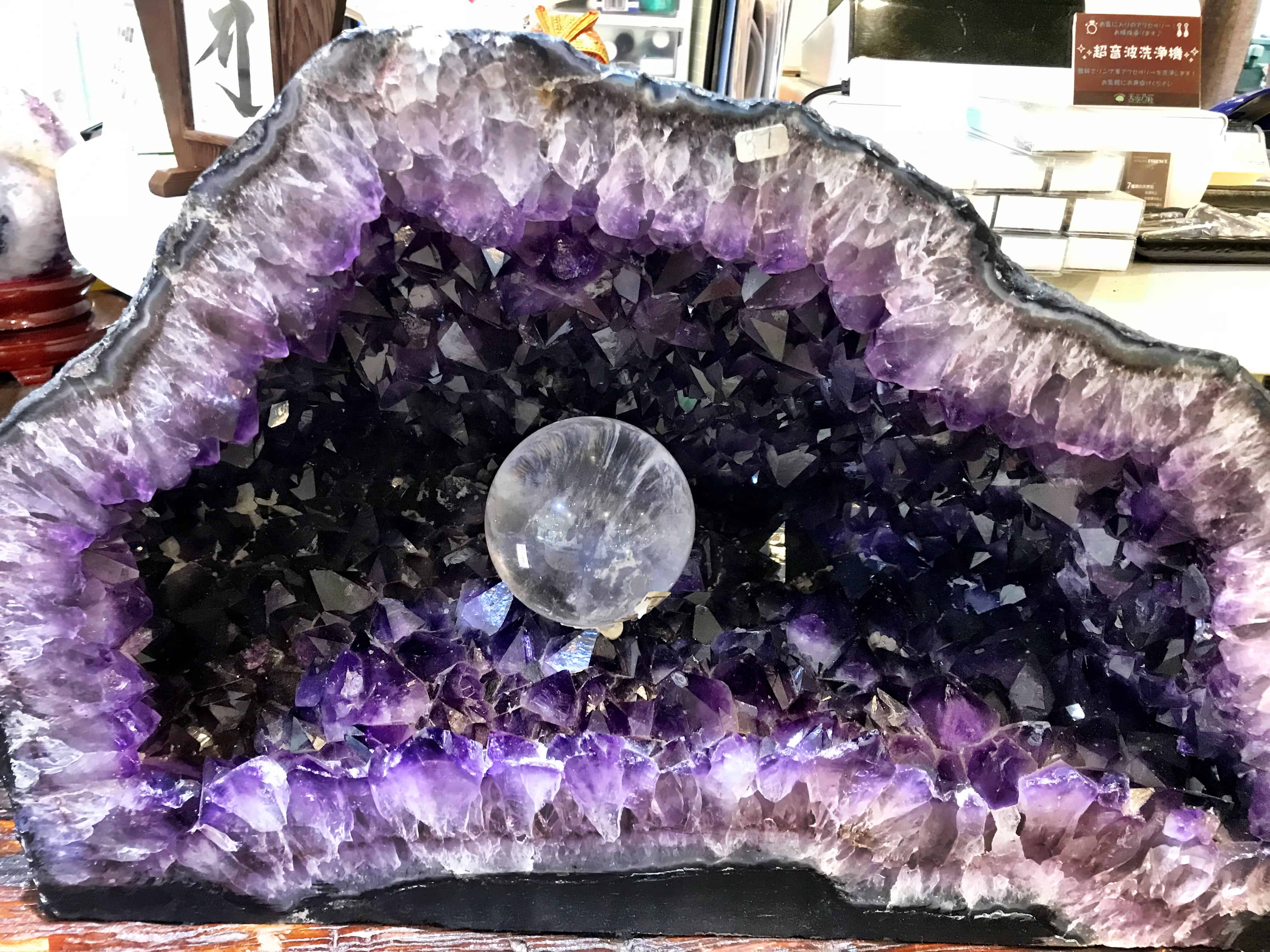
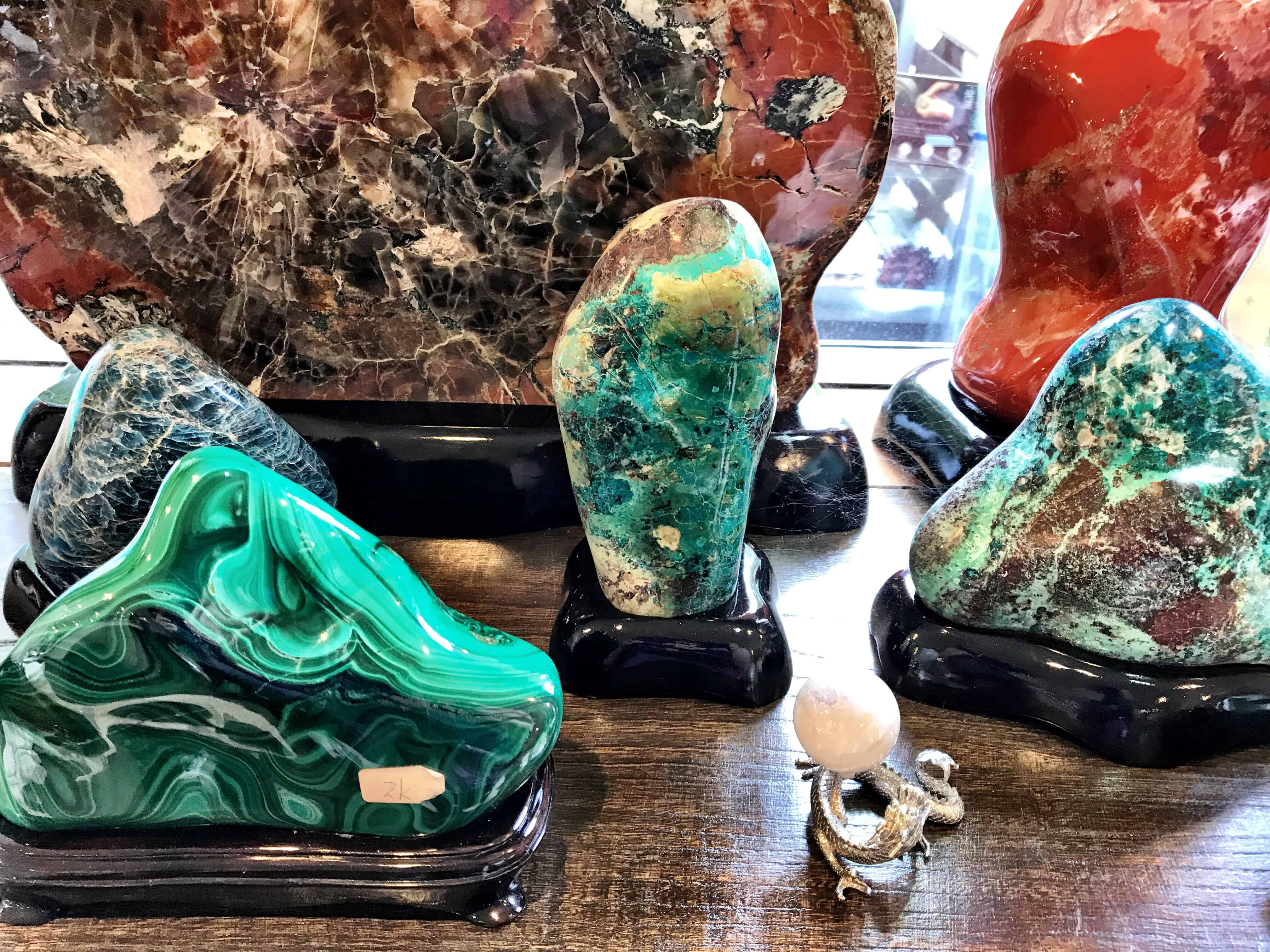
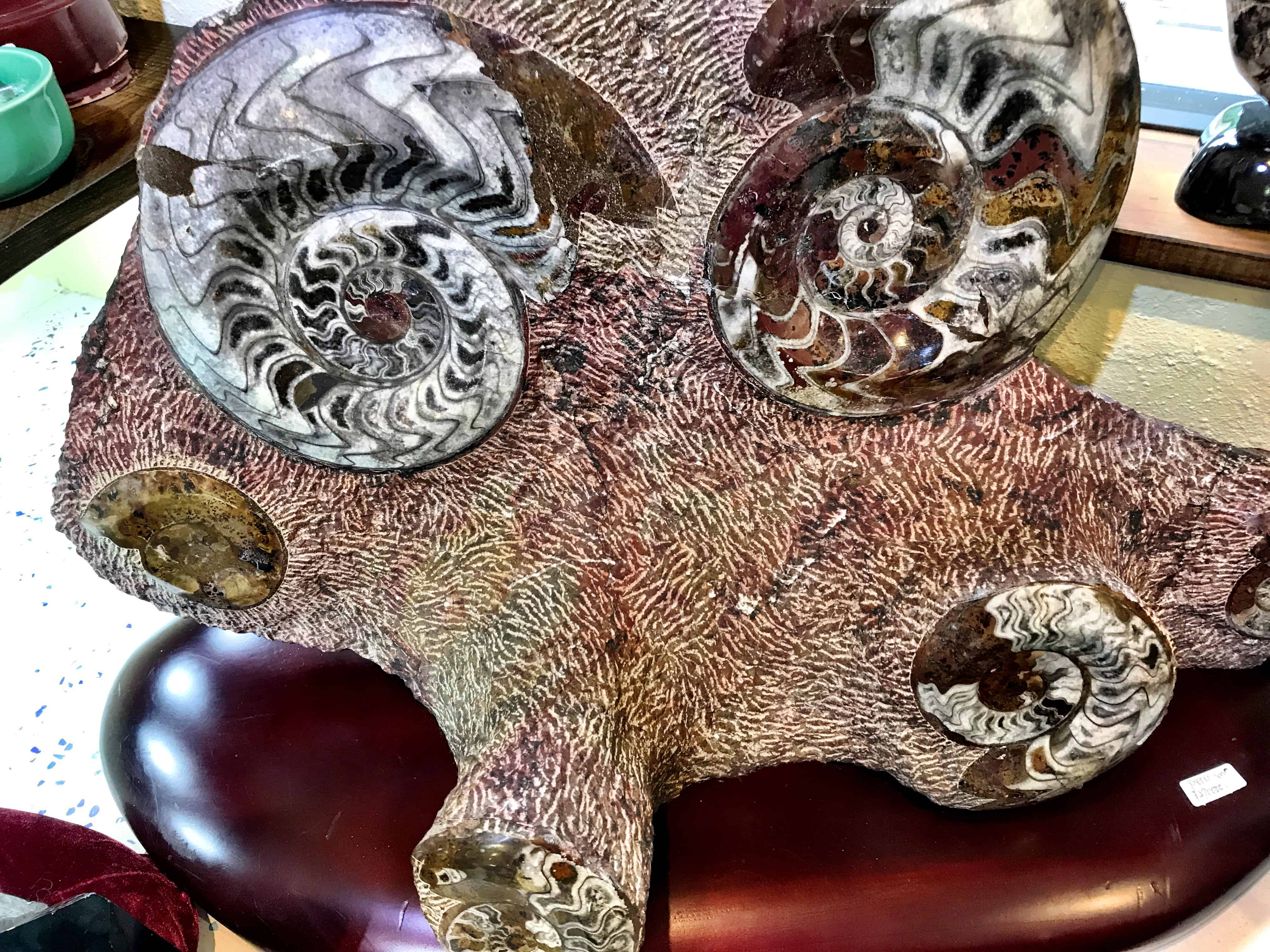
Look at some of the stunning crystals we saw during our Shosenkyo nature walk in the heart of Yamanashi, most of which you could purchase.
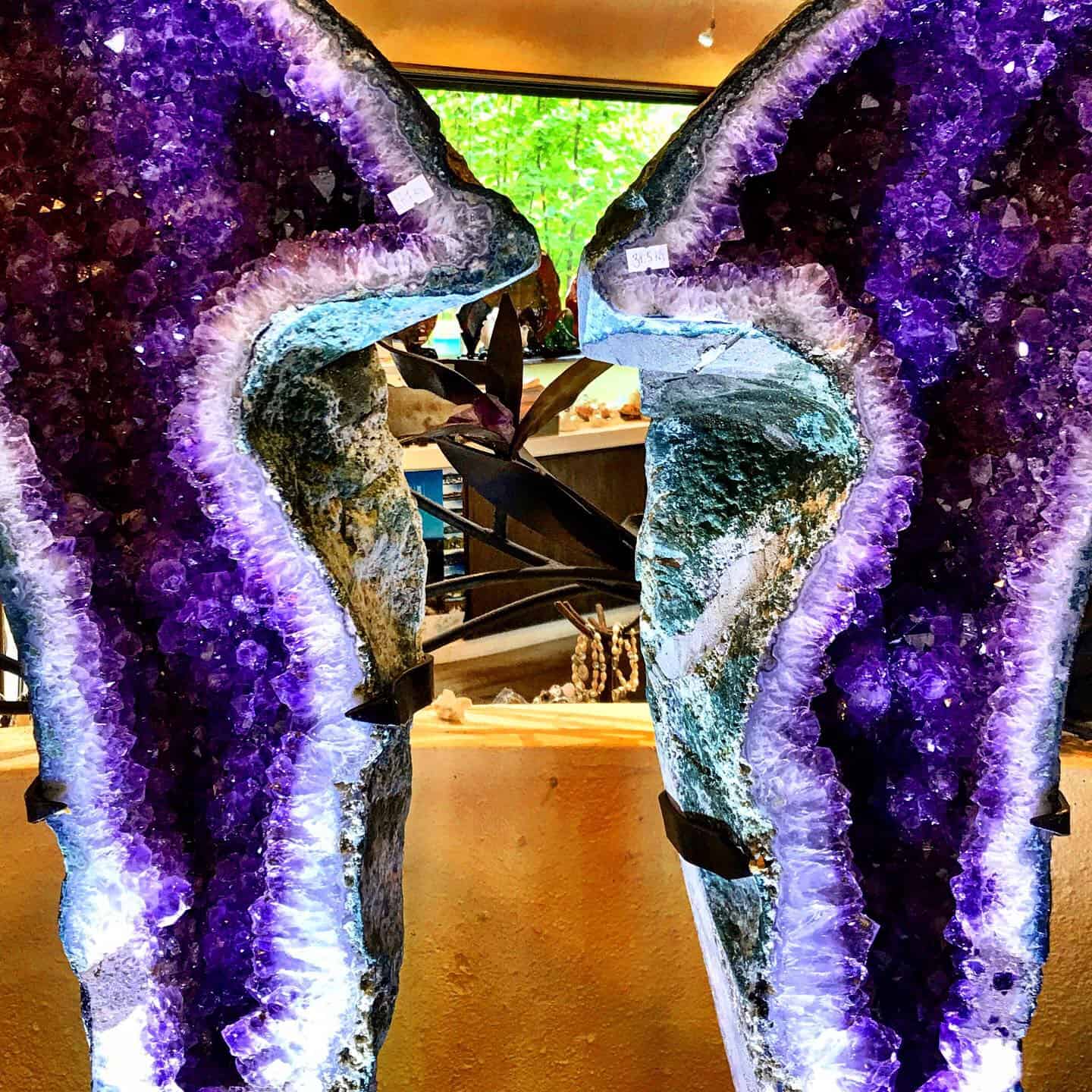
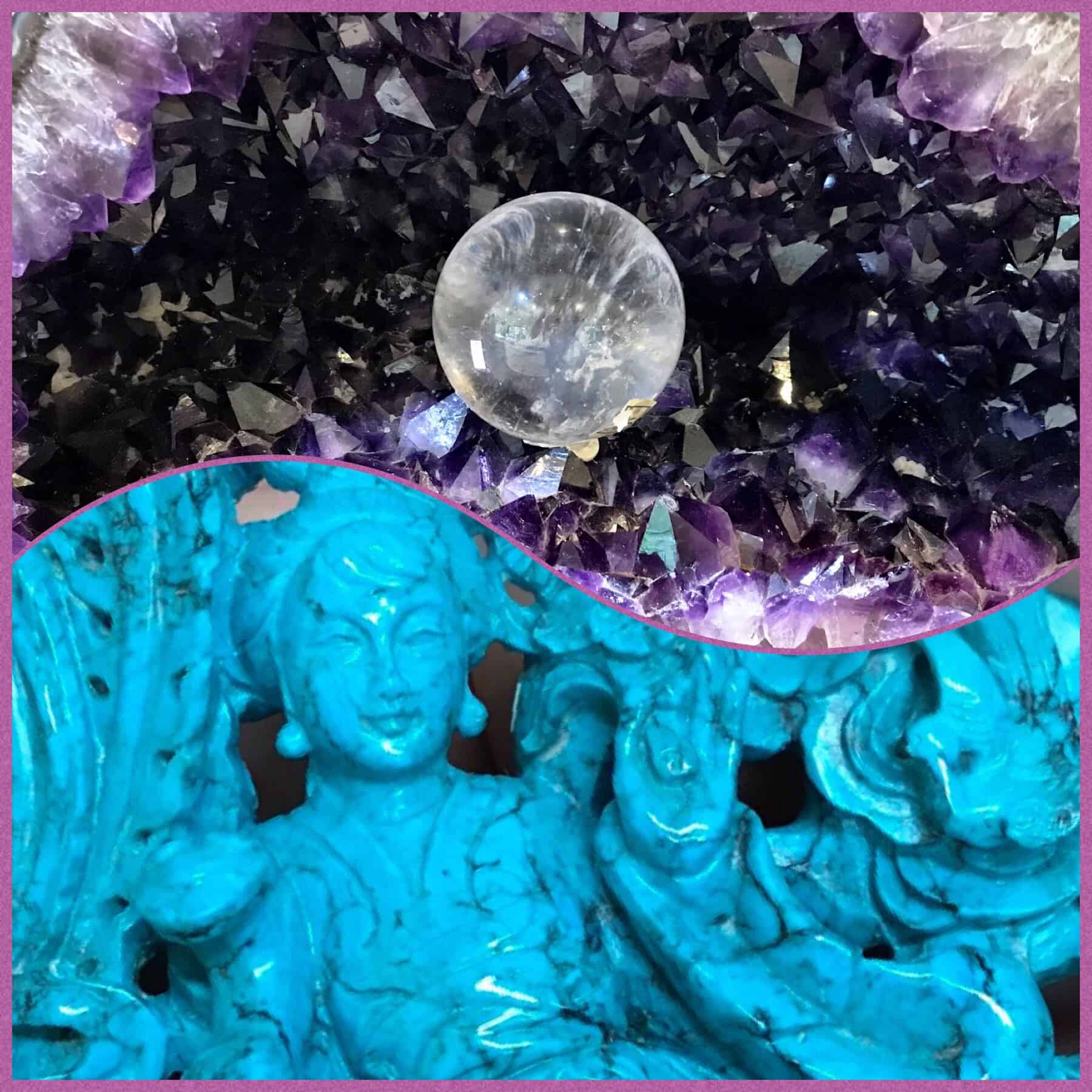

Wine Tasting
The Japanese wine industry began in the Meiji Period. During World War II, winemaking cooperatives were set up in individual regions. Today, there’s roughly 60 or so wineries (36 in Koshu, 12 in Yamanashi, and 12 in Fuefuki), with the Kyotoh-Yamanashi area being the country’s top wine-producing region. Yamanashi wine accounts for about a third of the market share in Japan. Many wineries dot the area, mainly in the Katsunuma area of Koshu City.
In the Meiji Period, Yamanashi was mostly known for silk-producing however when the industry began to decline, farmers left sericulture and went into fruit growing. The mulberry trees used to feed silkworms gradually gave way to fruit trees and grapevines as vineyards spread throughout the region.
Koshu is the oldest Japaense grape variety and today, it is also the top variety for Japanese wine. These wines are made using the sur lie method, wines with citrus notes, fuller and more rounded wine fermented or aged in oak barrels, orange wine made by leaving grape skins and seeds in the juice, sparkling Koshu wine and more.
Chateau Mercian Katsunuma Winery
Our first stop along the wine trail was the historical Chateau Mercian Katsunuma Winery in Koshu-shi.
Their winemaking dates back to 1877, with the founding of “Dai–Nihon Yamanashi Budoushu-Gaisha,” which heralded the start of Japanese viticulture history. The brand Chateau Mercian however has only been around since 1970. Due to its history, there’s also a Wine Museum here which you can visit (it is the oldest wooden winery in existence in Japan and was built in 1904), as well as a formal tour and wine tasting in the main room. At the museum, you can learn about the birth and evolution of Japanese wine and the history of Chateau Mercian. Tables are scattered outside so you can sit and relax over one of their delicious wines.
The winemaker who gave us a private tour was proud to tout that they were #1 in Japan and Asia. They use both French and American oak and have around 25 hectares total, however they also get wine from local farmers as well. They also use steel tanks which are housed in the oldest building on the property – here, they keep barrels for some of their less expensive wines.
We tried several of their wines, including a very light one using the Koshu grape (their Iwade Koshu Kiiroka Cuvee Ueno). We also tasted a peach colored wine which also used Koshu grapes – this wine paired well with mountainous vegetables (their Fuefuki Koshu Gris de Gris). Their Hokushin Left bank Chardonnay was full of nuts, pineapple, coconuts, mangos and almond and had been oak barreled for around six months.
Our favorite was their 2015 Merlot, which had been oak barreled for 18 months. Think black berries, tobacco, chocolate and spices. Apparently they can’t produce Cabs very well here because of the climate (there’s more humidity in Japan vis a vis Napa and other Cabernet Sauvignon producing regions).
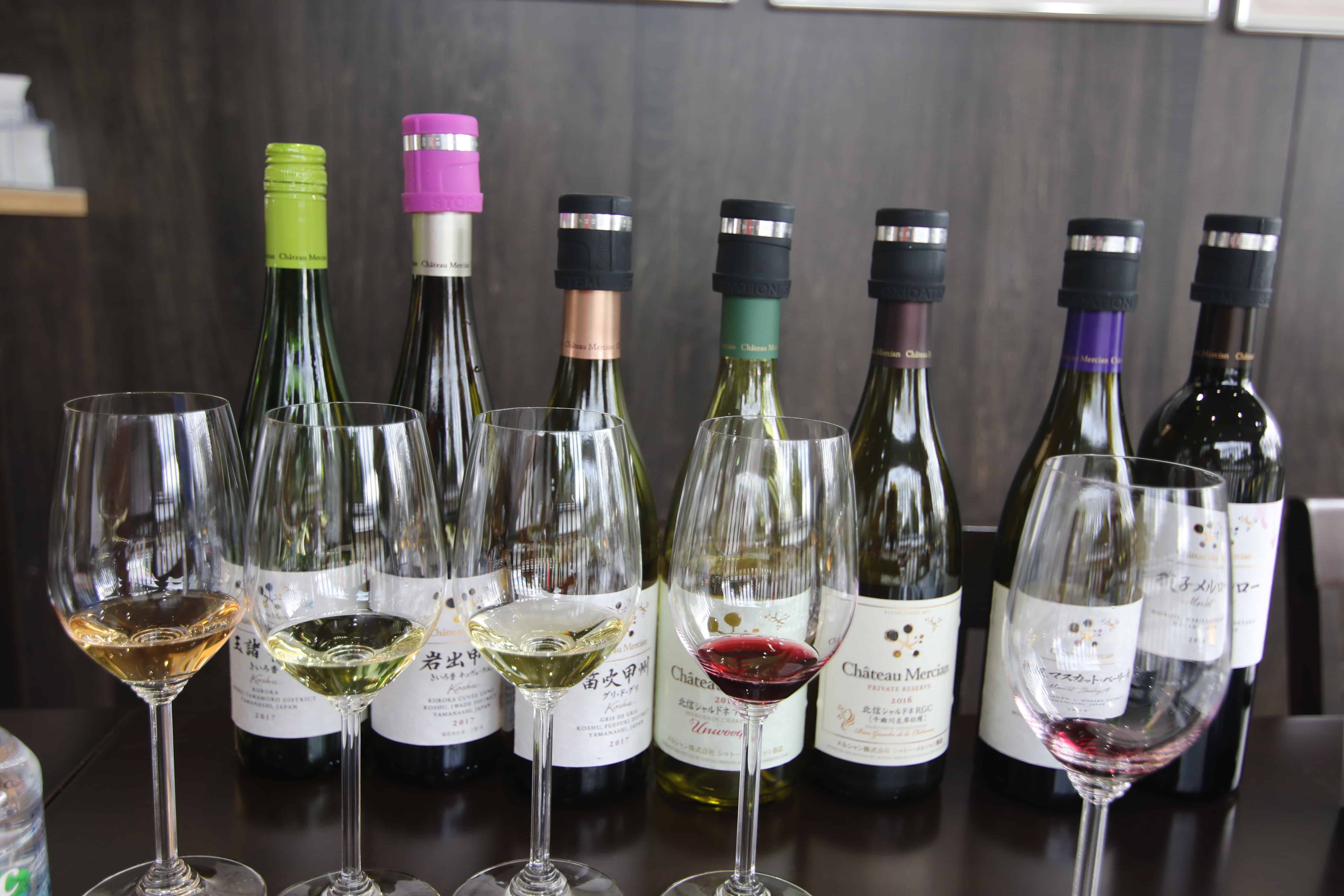

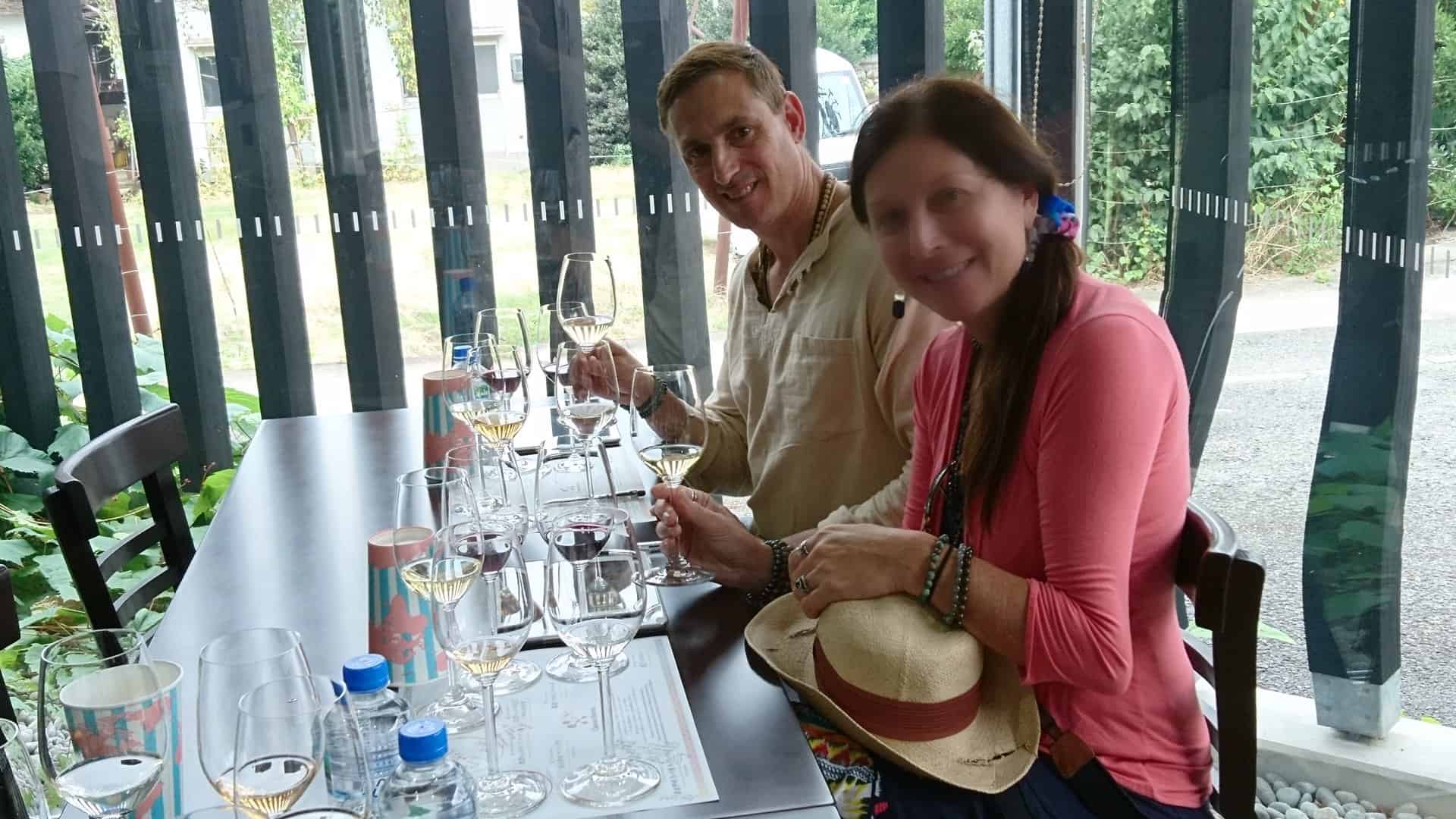
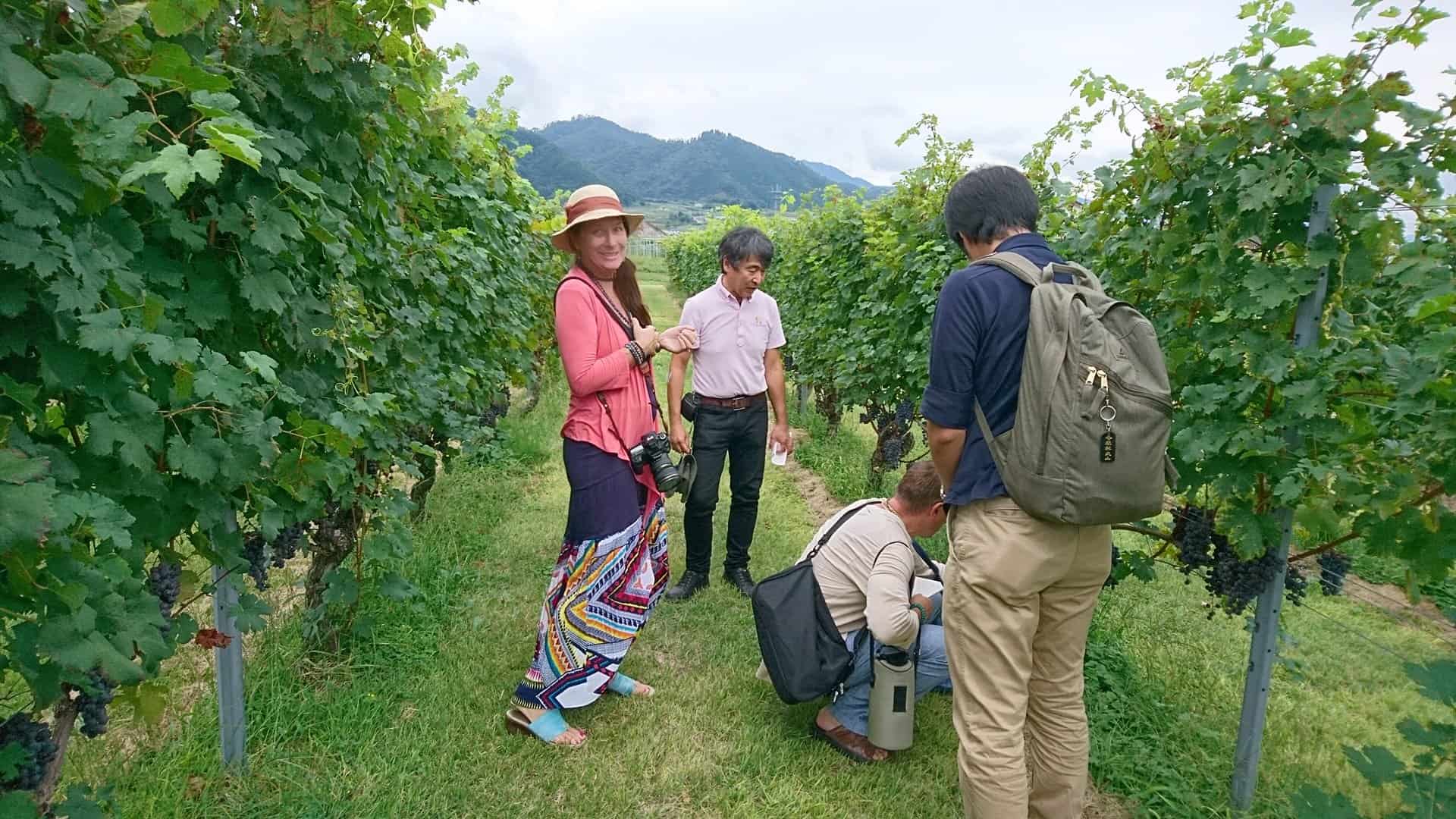
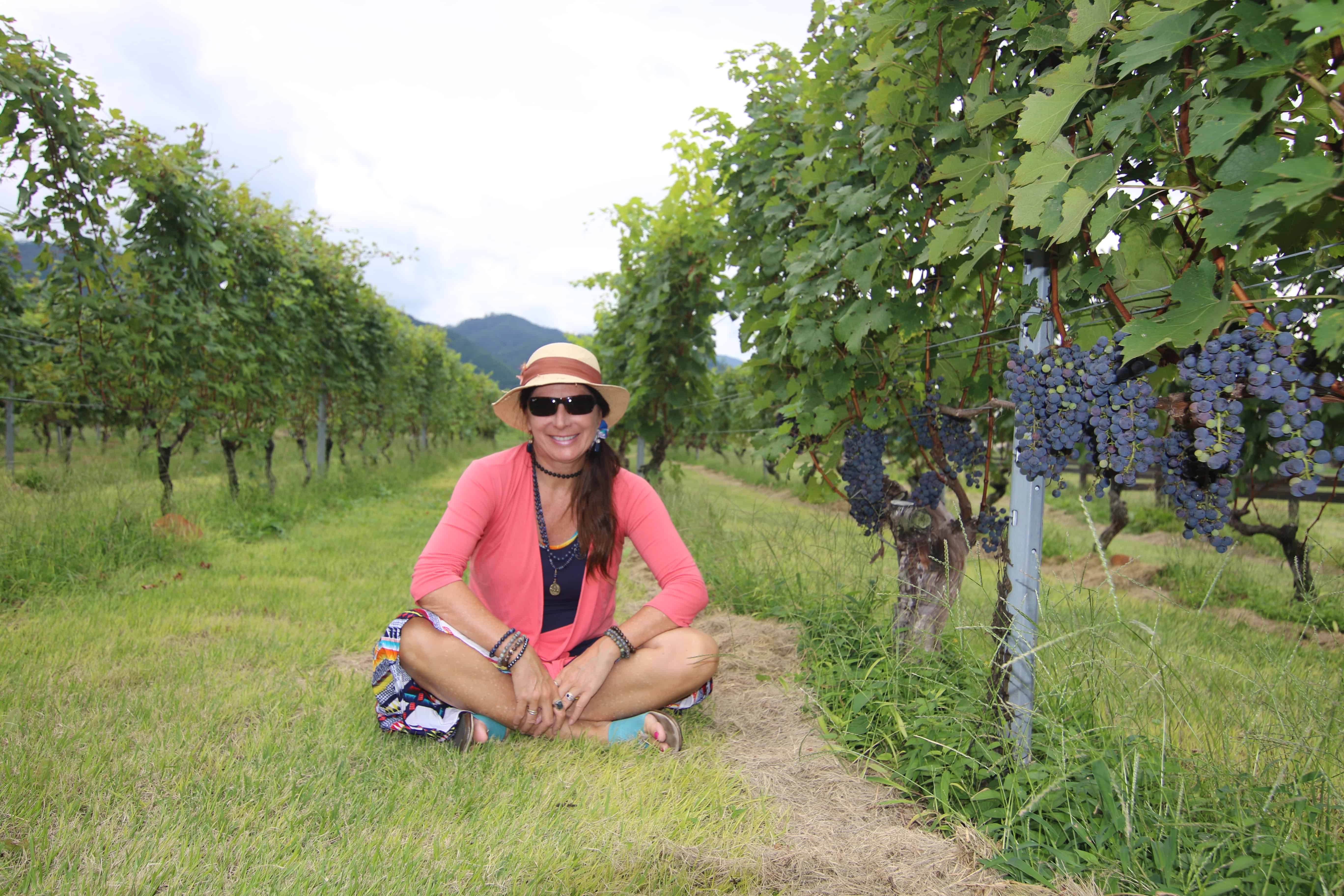
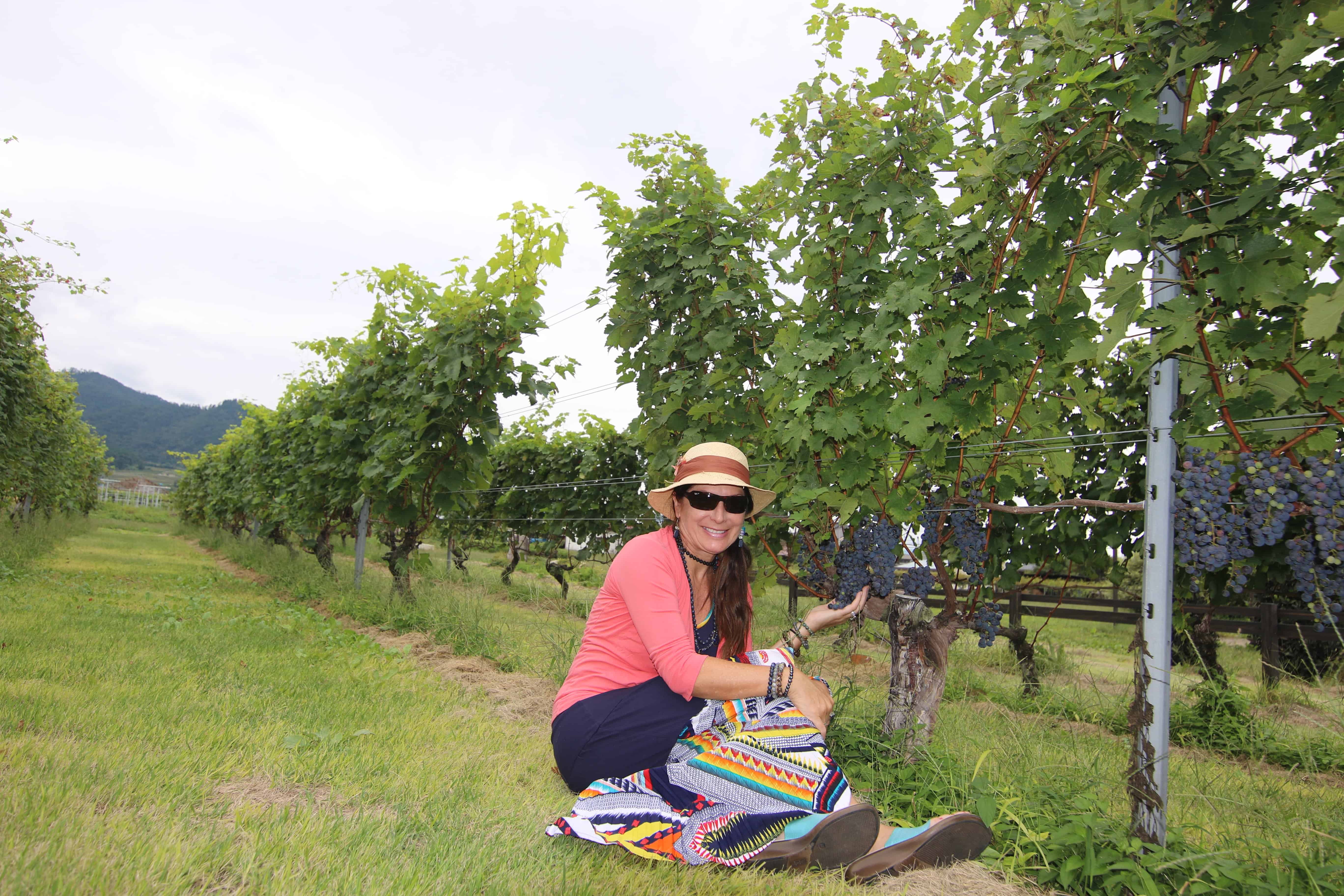
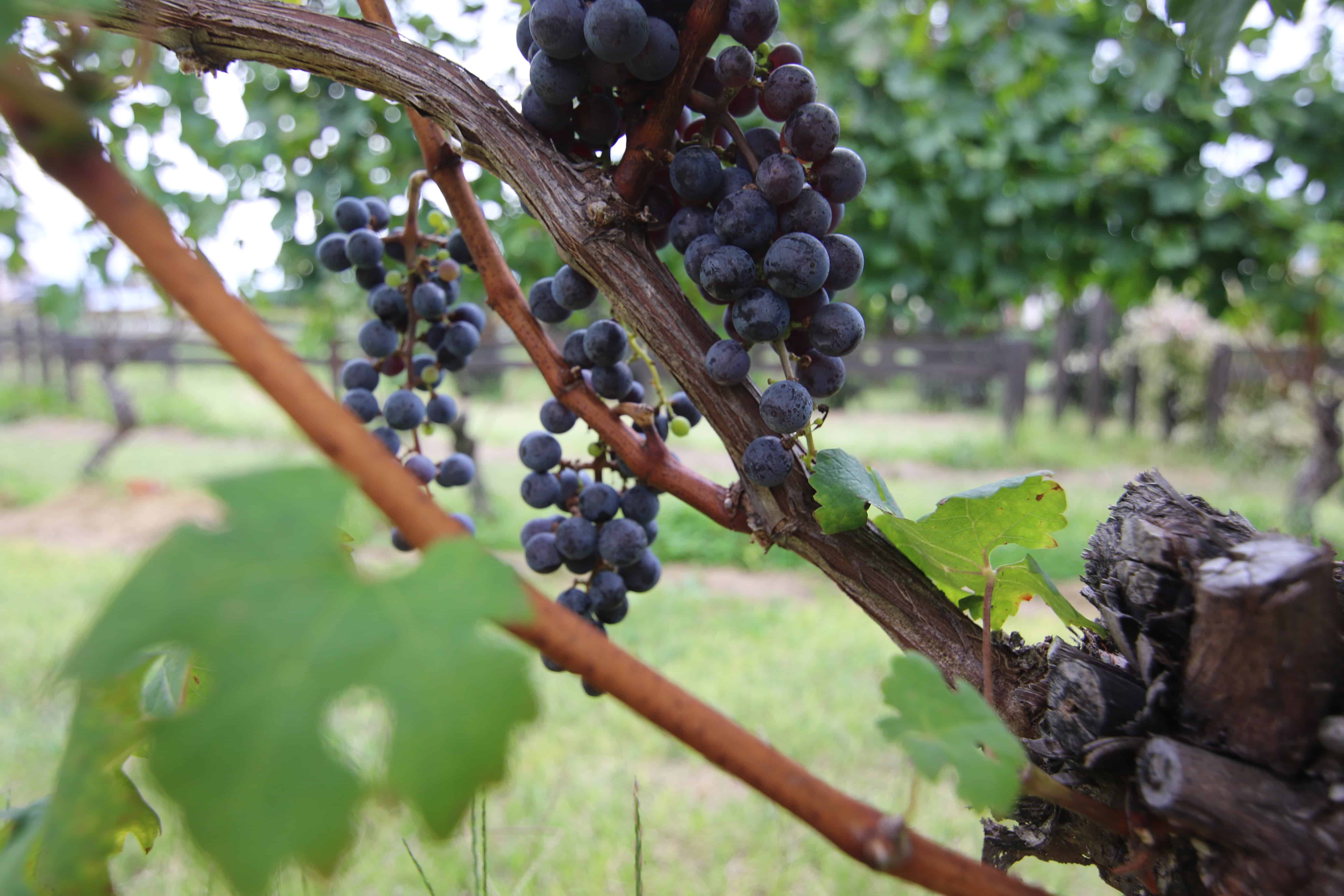
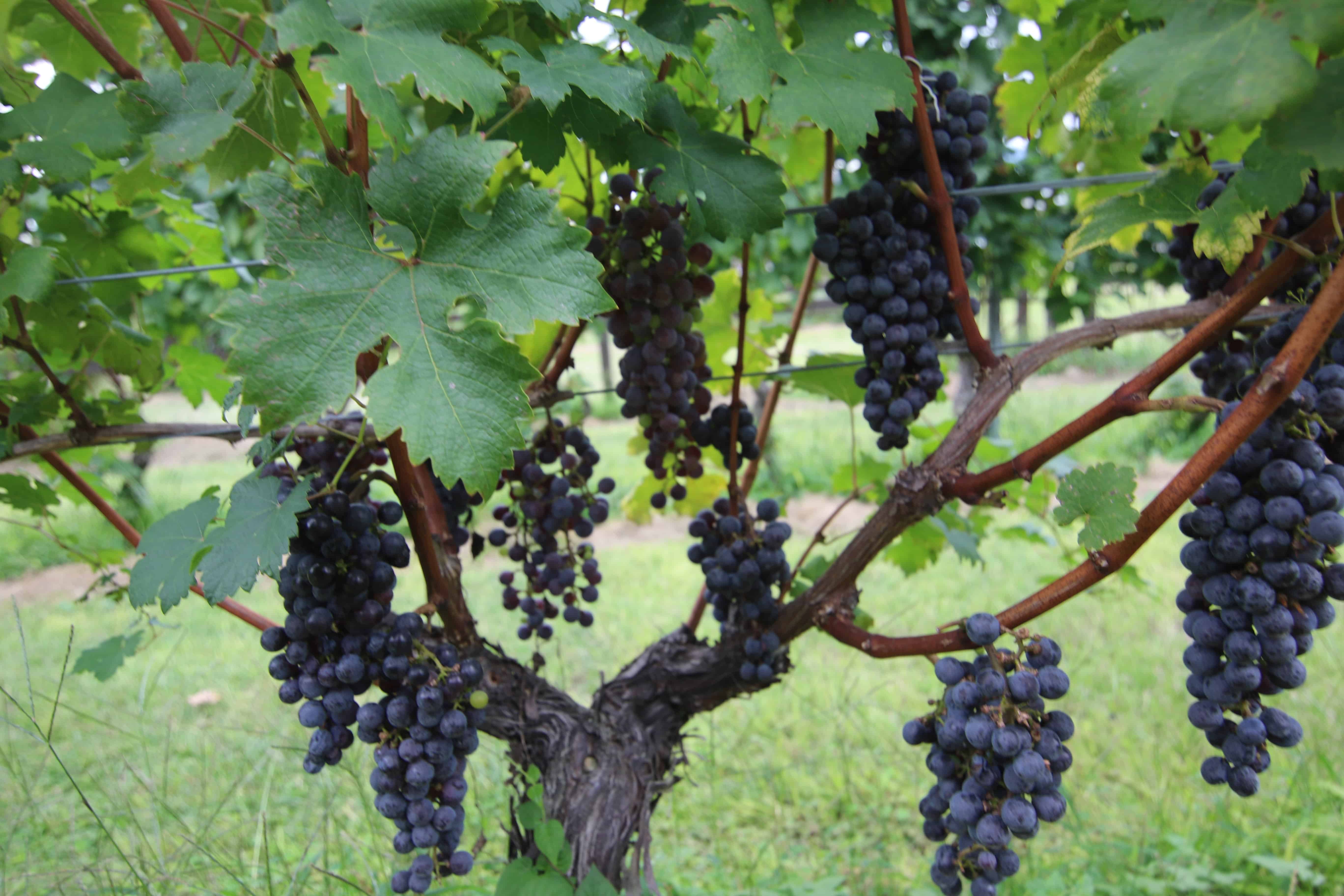
Below, the winemaker at Chateau Mercian, gives us an extensive tour.
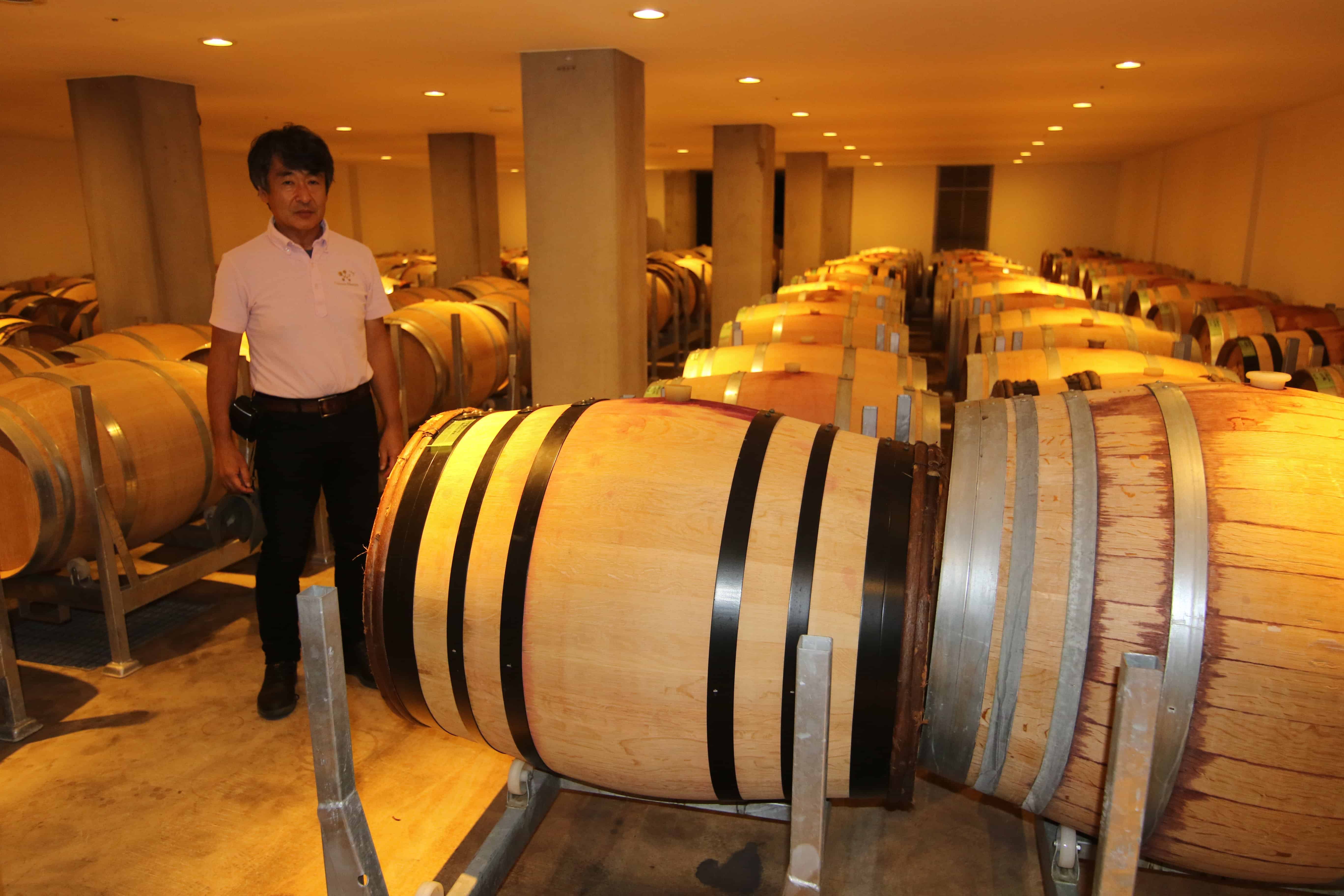
Rubaiyat Winery
The name Rubaiyat was named after a Persian poet. We tasted several wines here, starting with a Koshu grape (Koshu Sur Lie 2017), which is great for Japanese cuisine. It’s light and fruity. Their Koshu 2018 is orange in color – it almost looks like a Rose, but it’s a white wine fermented using a red wine process. We also tasted a Muscat Bailey, which was a barrel select red (2017) which paired well with cheeses. Also on offer when we were there included a 2009 Merlot (97% Merlot, 3% Verdot) and a Domaine Rubaiyat (2013), which was made up of three grapes: Cab, Petit Verdot and Merlot.
The winemaker and current owner Haruo Omura was born in the original house where the main buildings of the winery still sit. His great grandfather Jisaku Ohmura made a little winery in his garden in 1890 and later, was an investor in the original Japanese winery and then later bought the winery which is now called Rubaiyat. Around since 1890, they dedicate themselves to growing international grape varieties in a European style. They have approximately 2.5 hectares today and also purchase grapes from their contract grape growing farmers and farmers’ cooperatives. Their annual wine production is roughly 170,000 bottles.
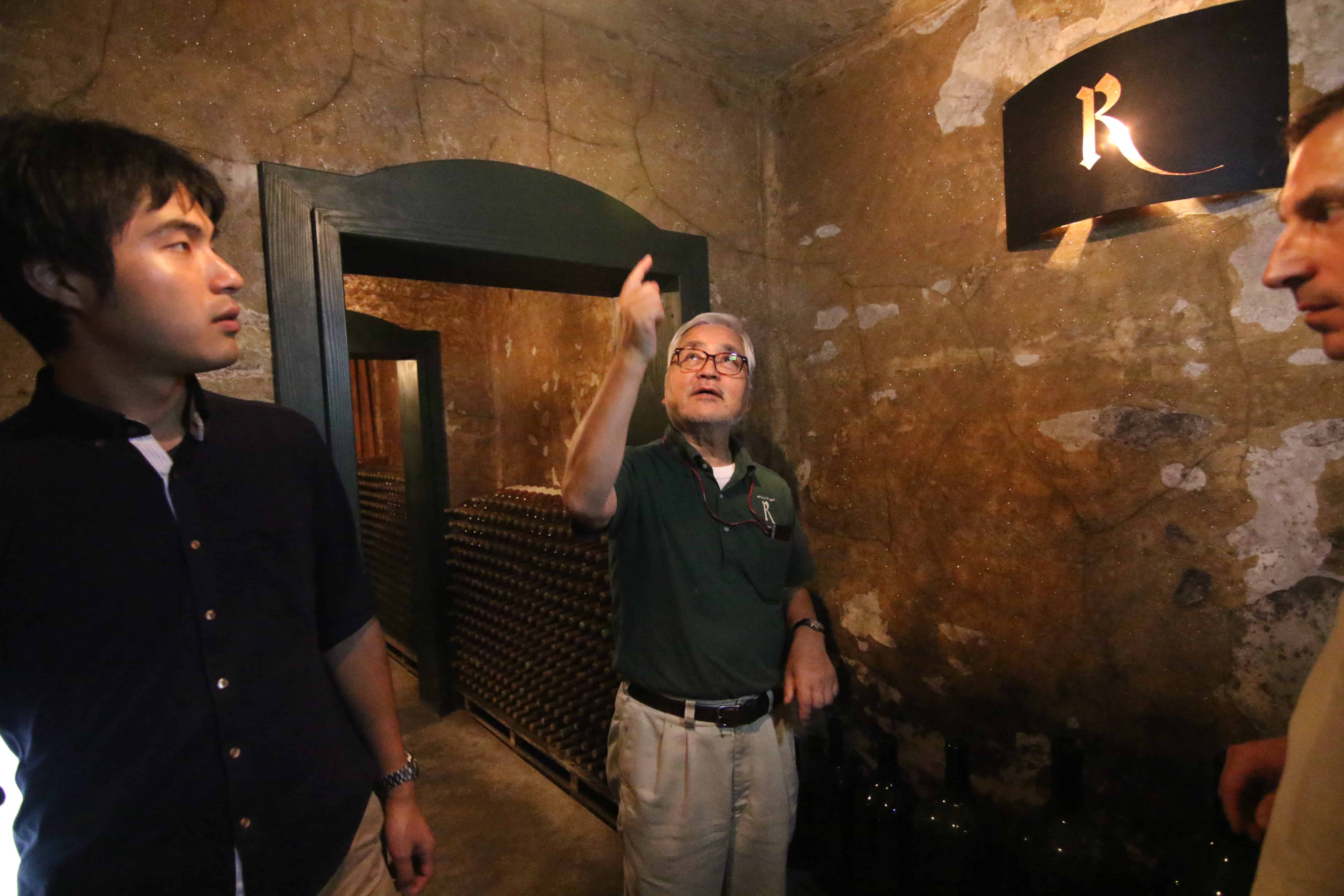
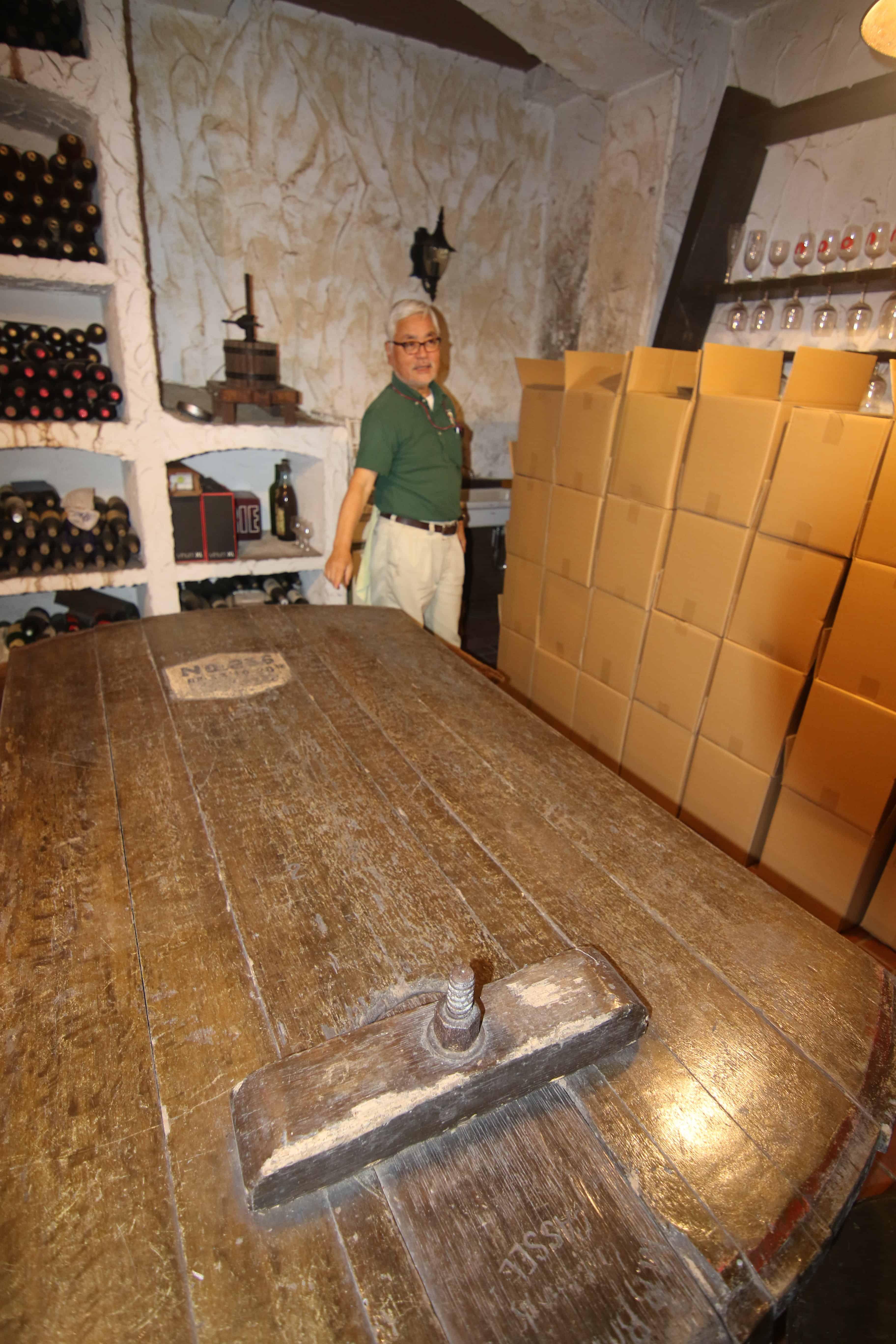
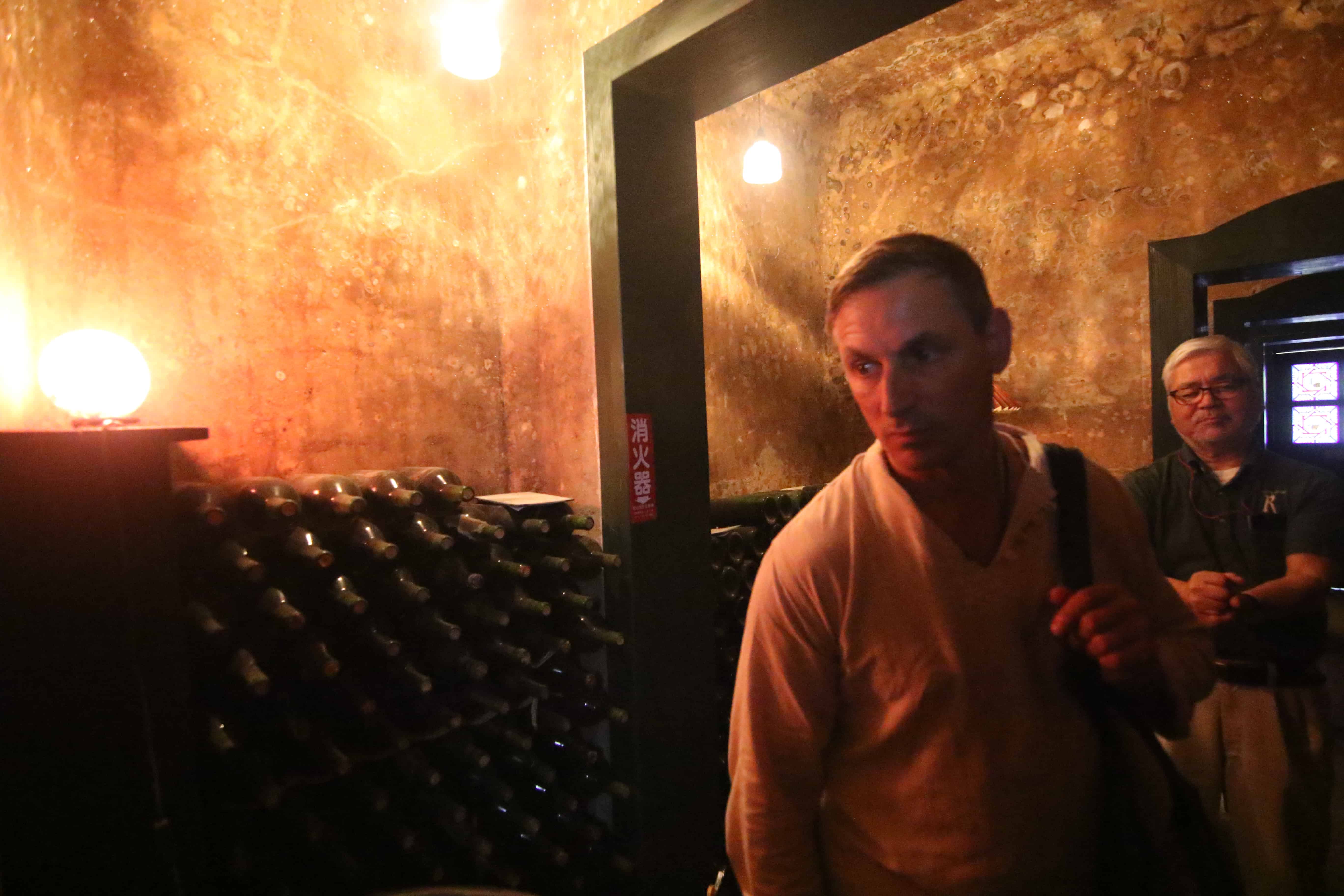
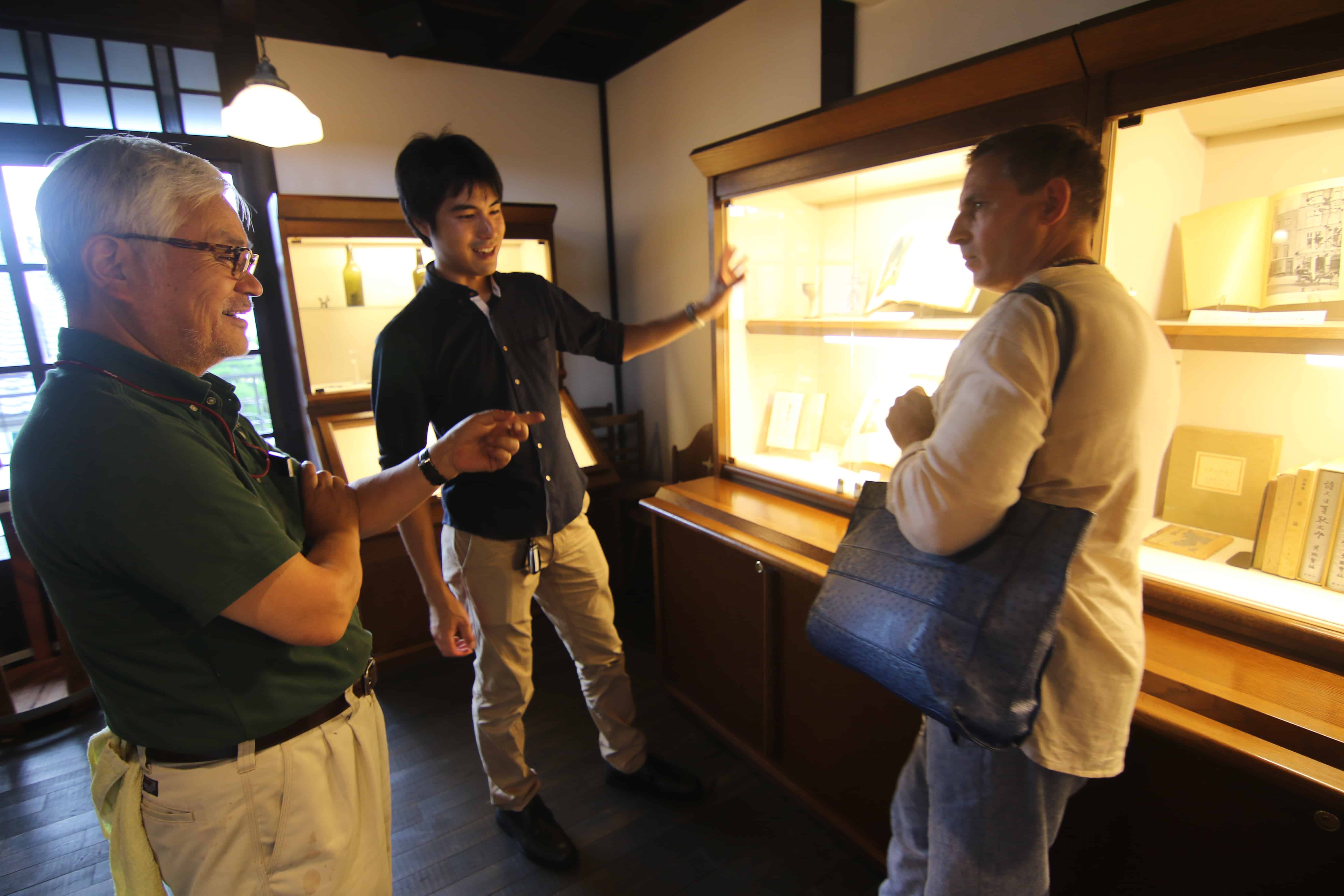
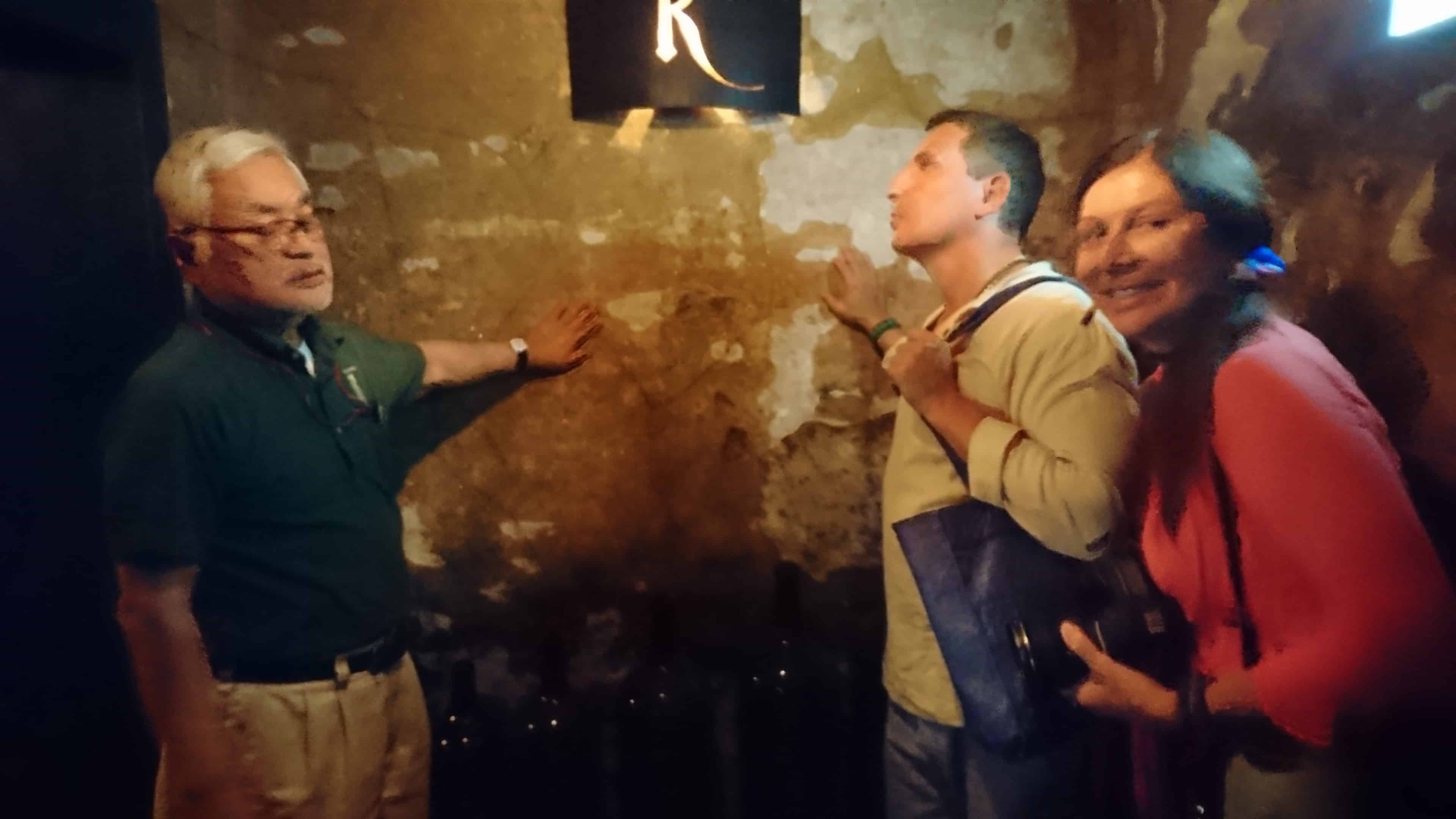
The tour was pretty extensive and historical — we went deep into the cellars — it was like going back 1,000 years in time.
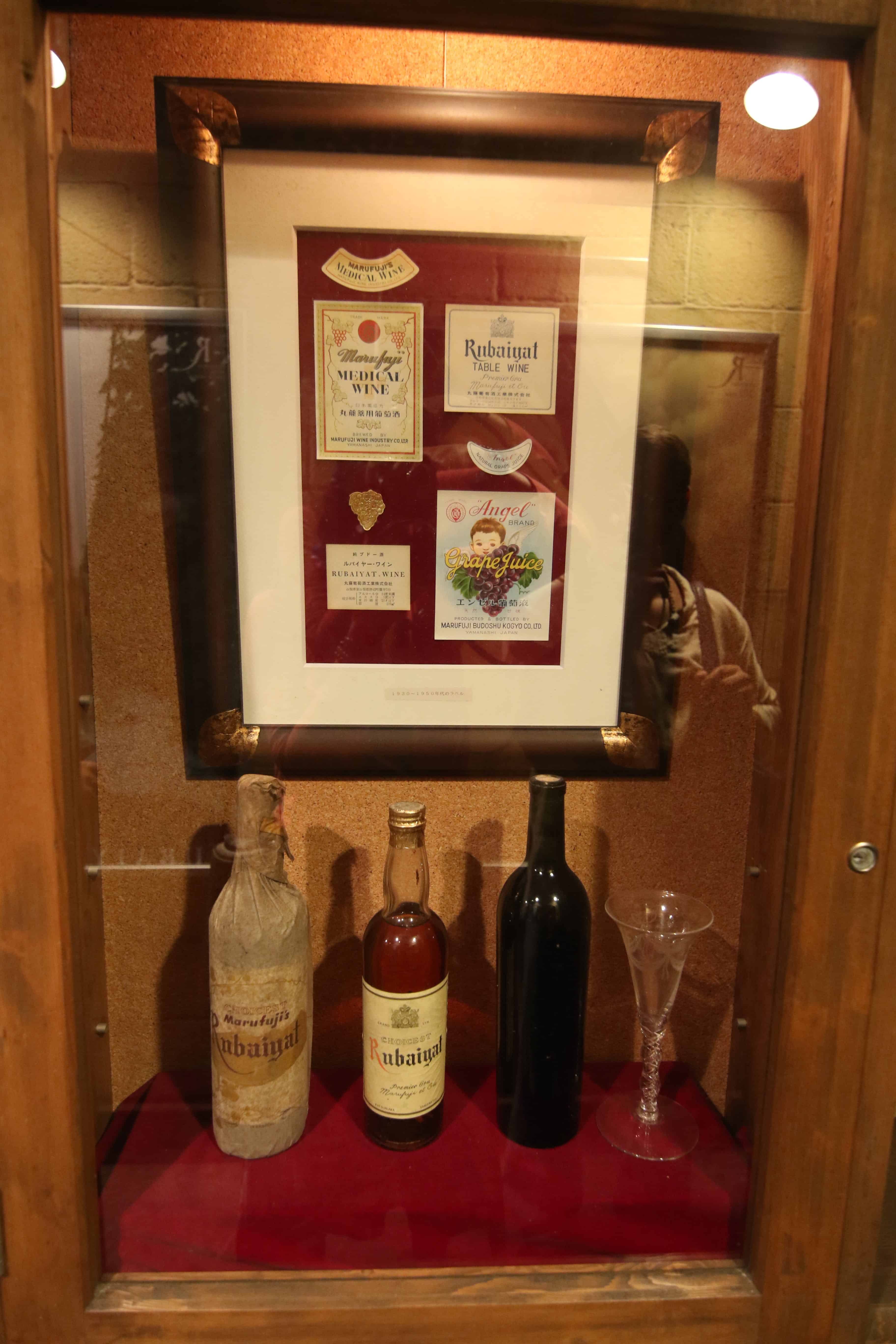
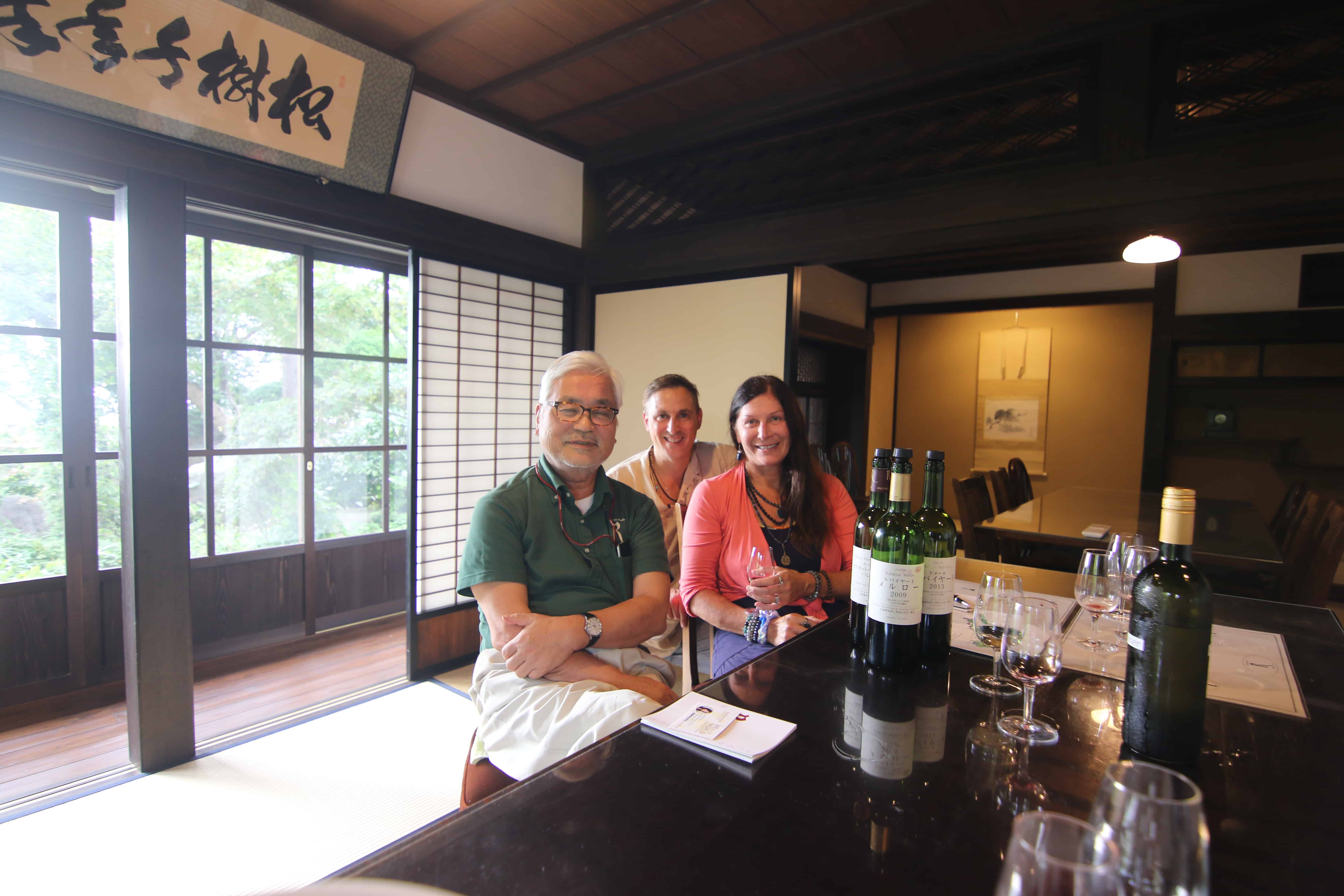
Wine tasting at the end of our tour.
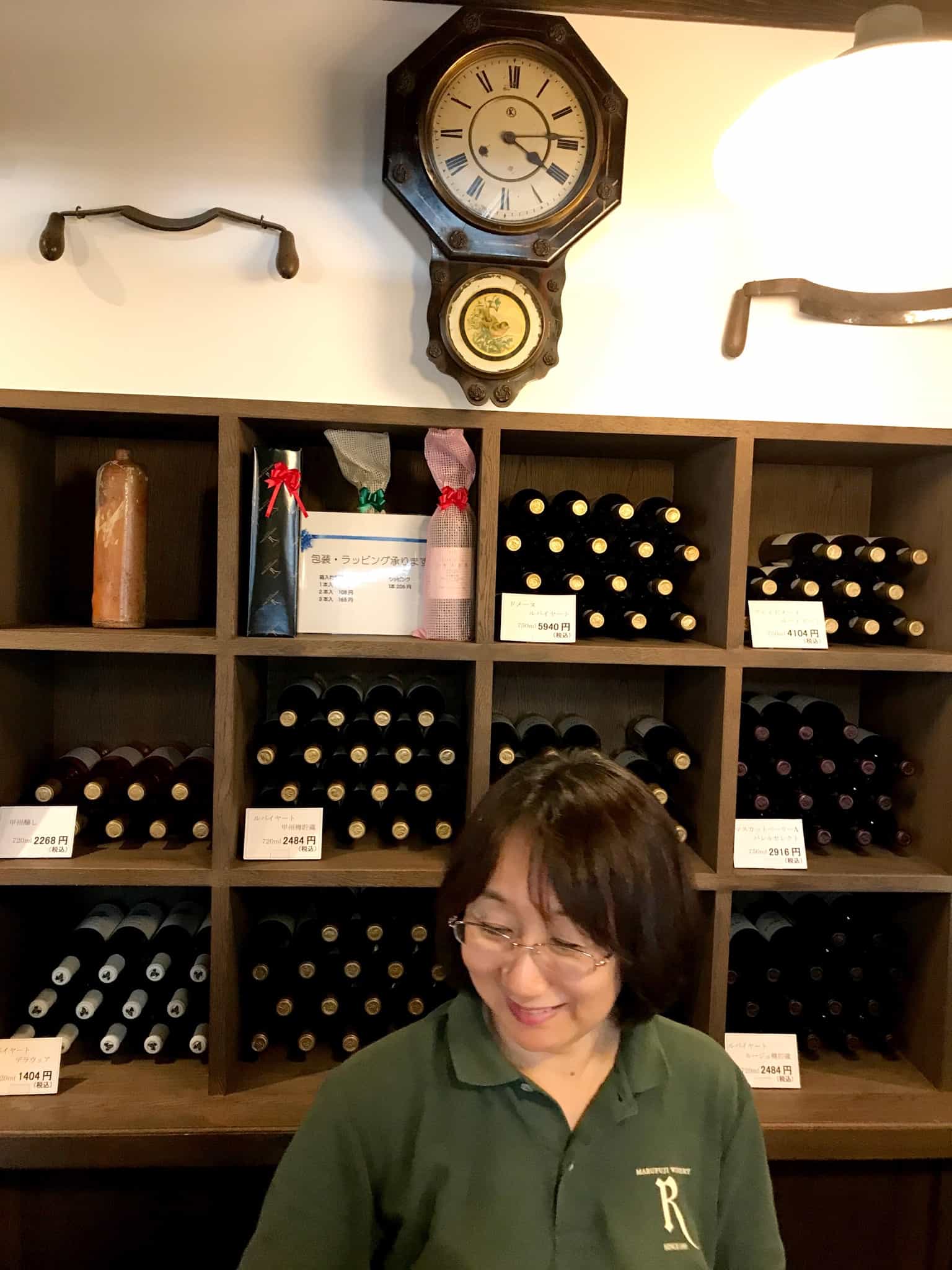
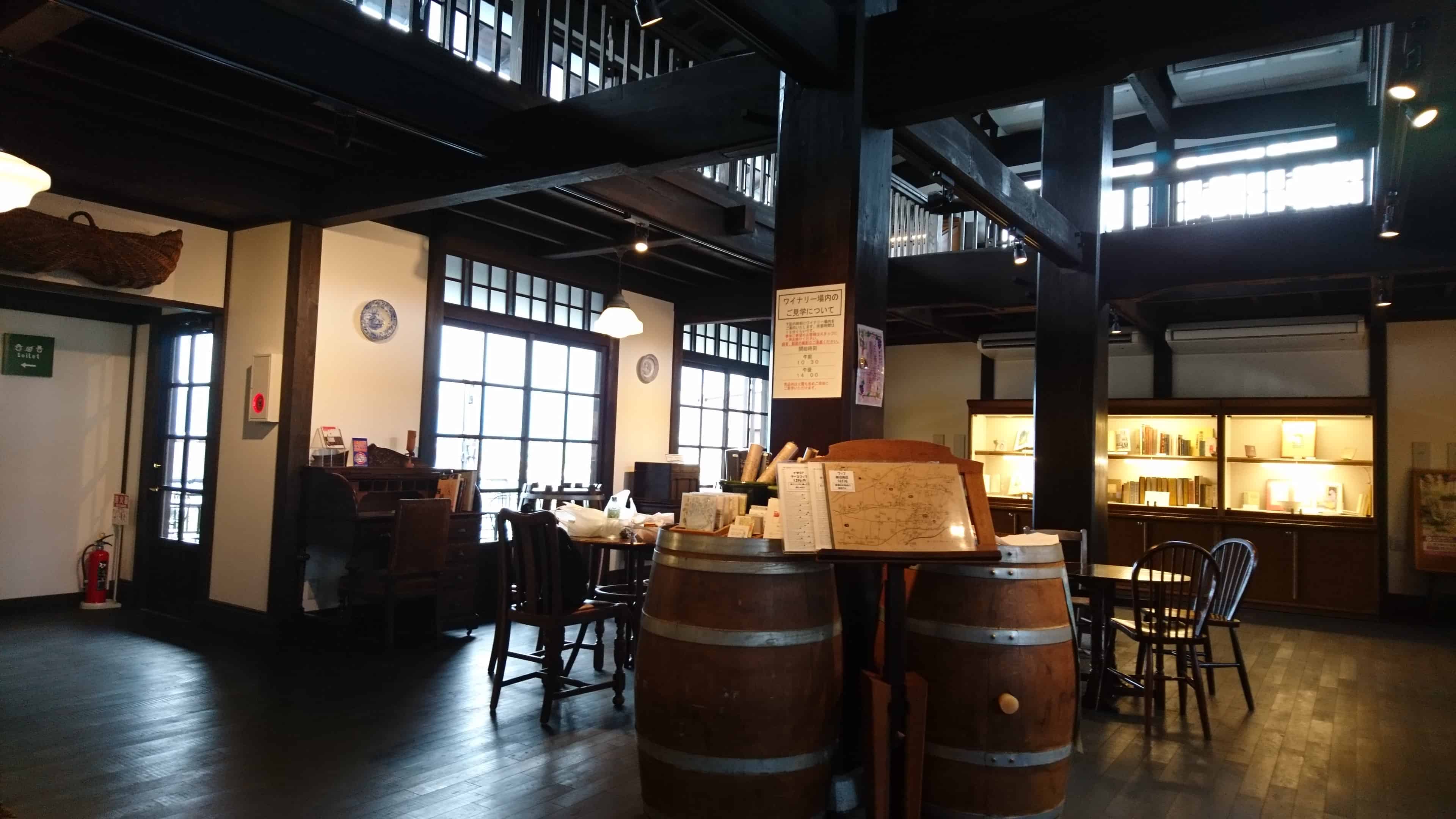
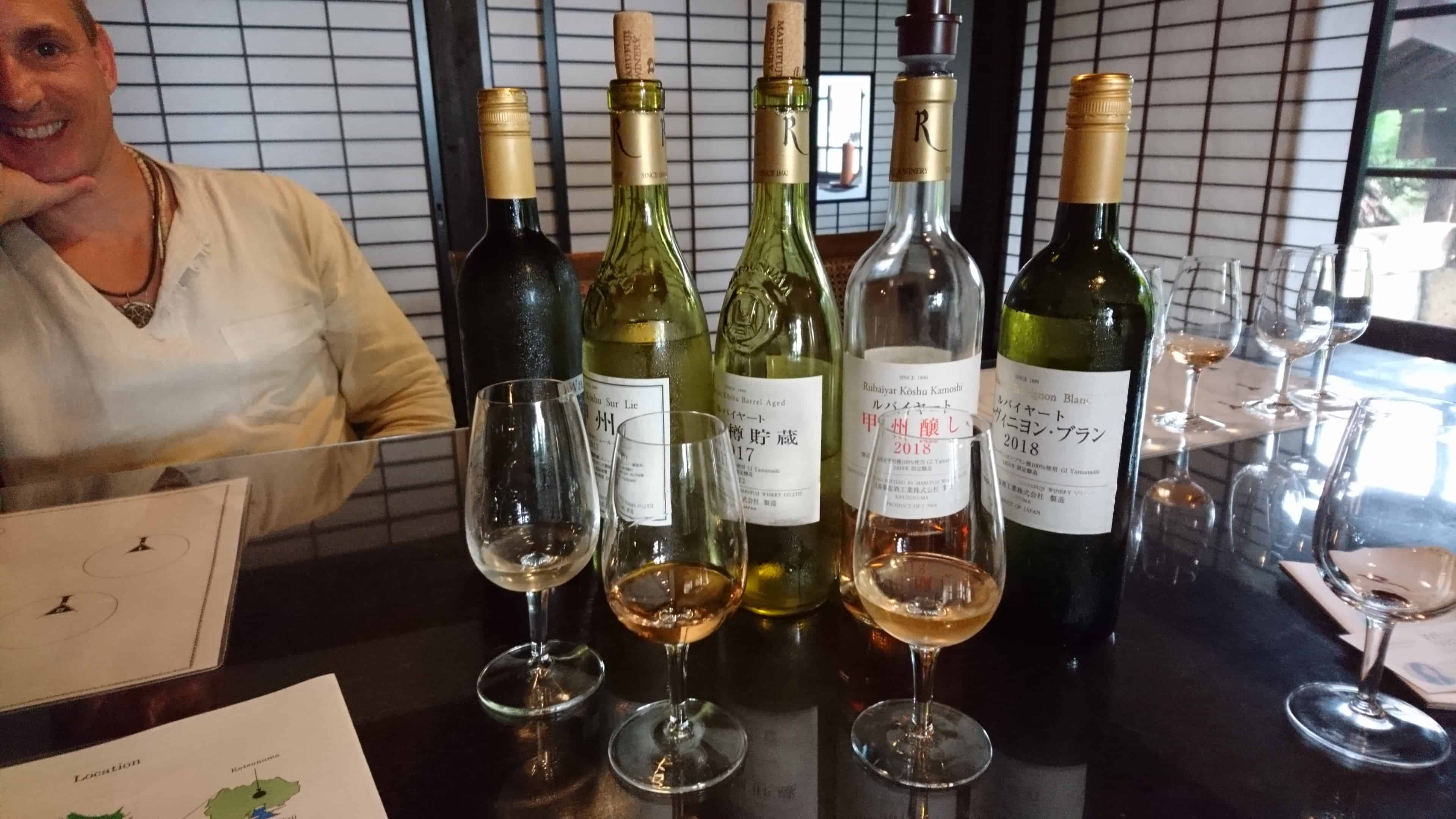
Wine tasting in Yamanashi
Haramo Winery
Haramo Wine has been around since 1924 when they started wine making as a cooperative and in 1973, they converted it to Haramo Wine Co, Inc. Haramo Wine owns 1.5 ha of vineyards and another 4 ha through local farmers. Their grape varieties include Koshu and Chardonnay for whites and Kai Noir and Merlot for their red wines.
Their main building is the original they used way back when — it is over 130 years old and is quite quaint inside. Here, you can pair wine with snacks and relax after a tour.
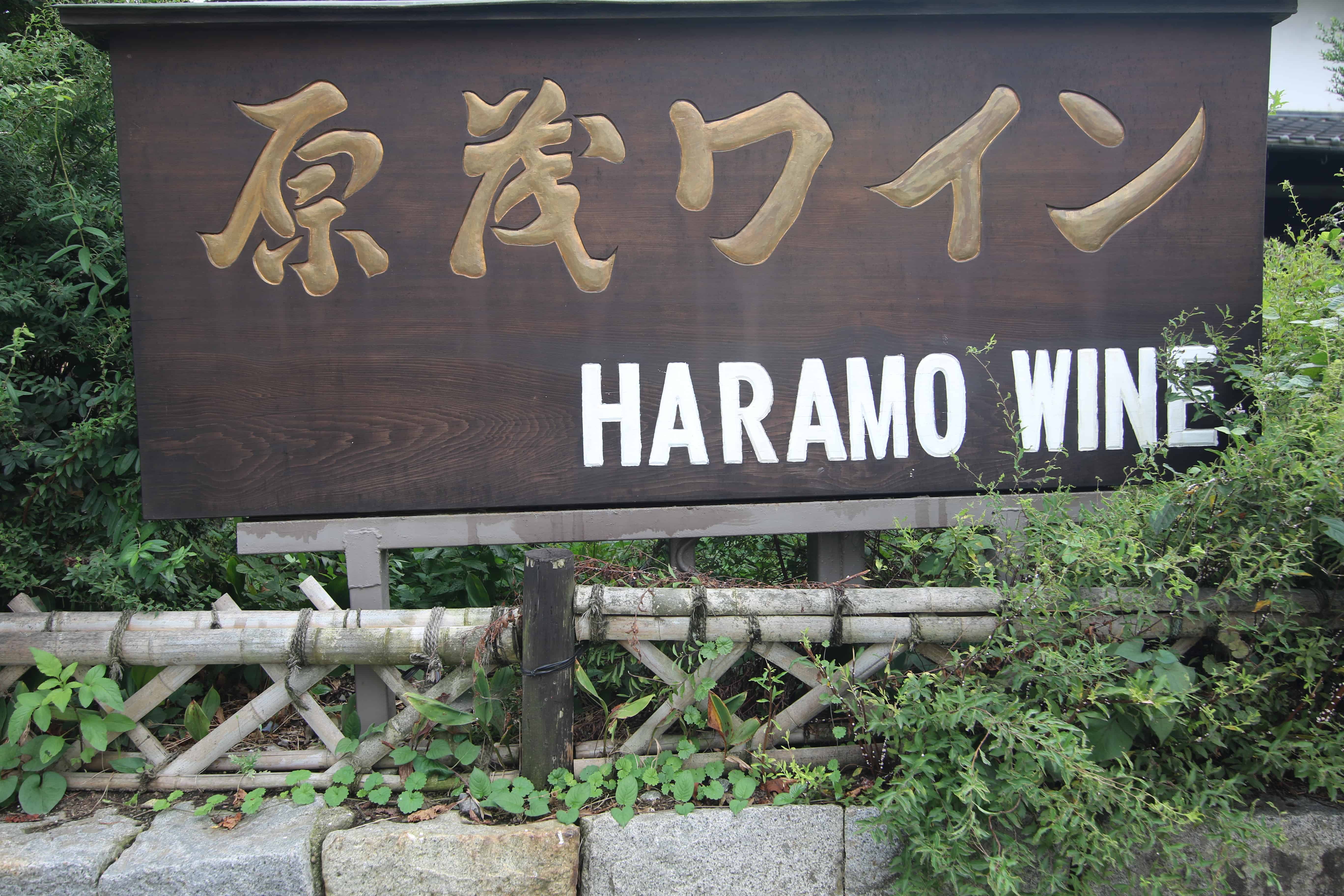
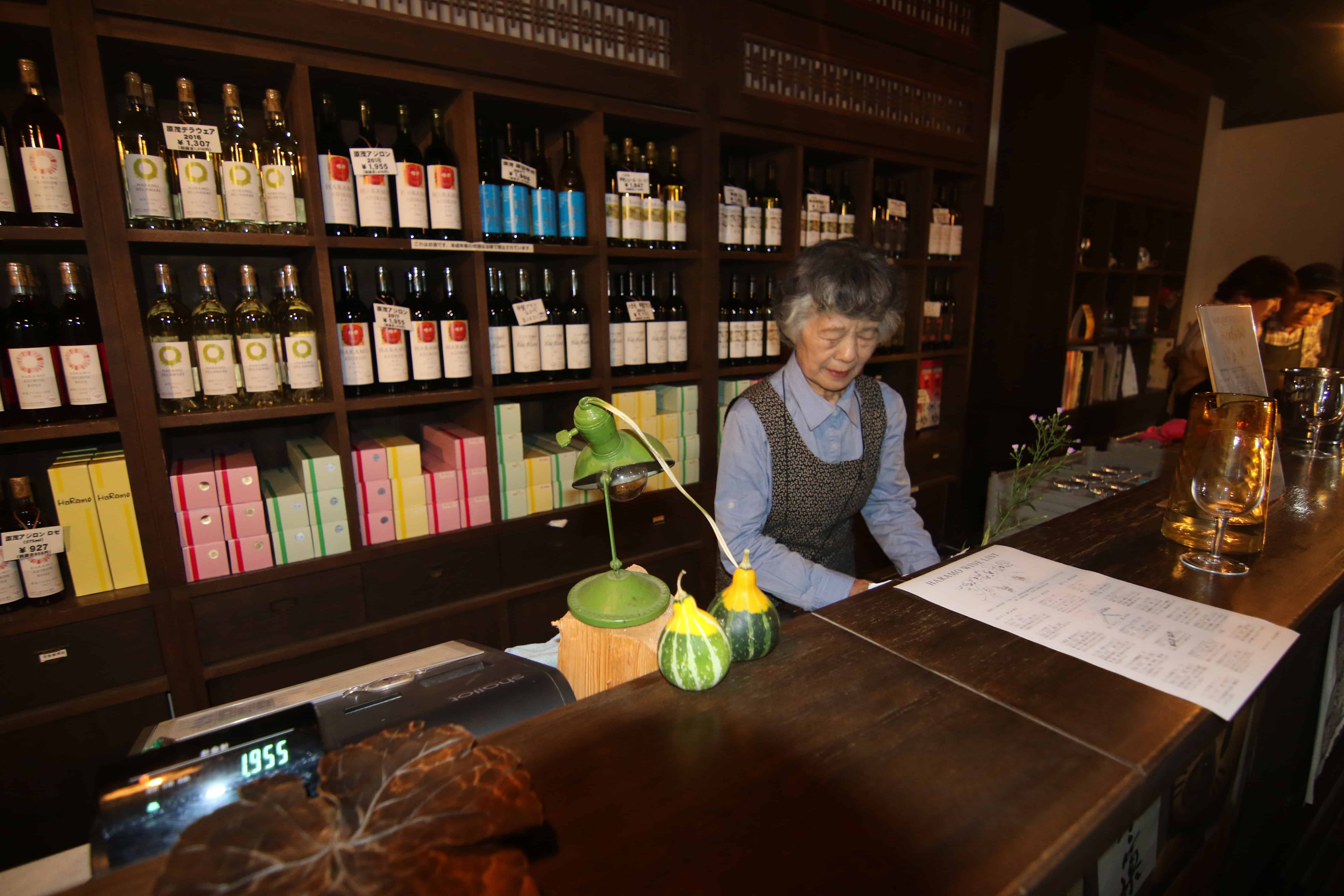
At Haramo winery, where you can purchase wines at the end of the tour.
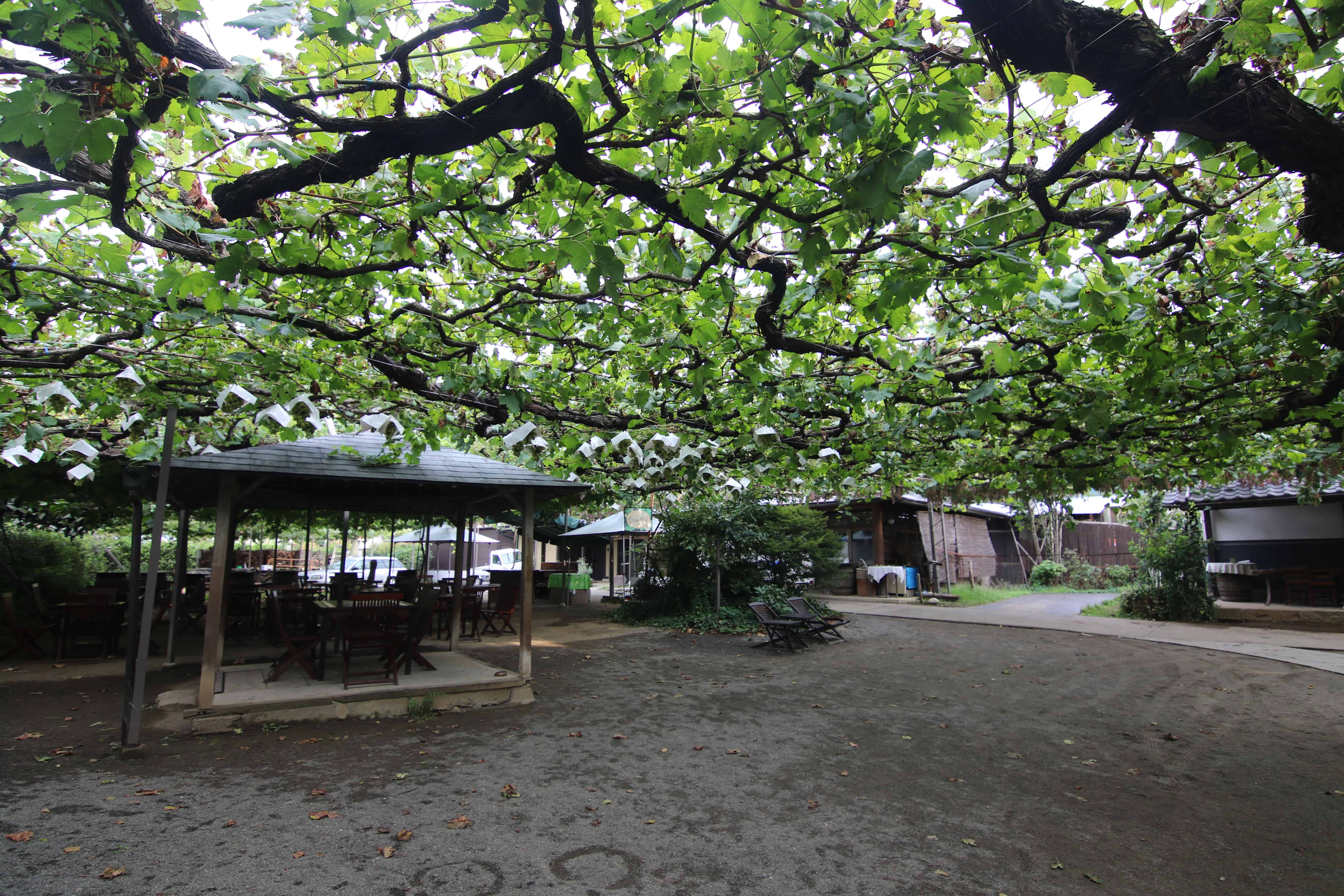
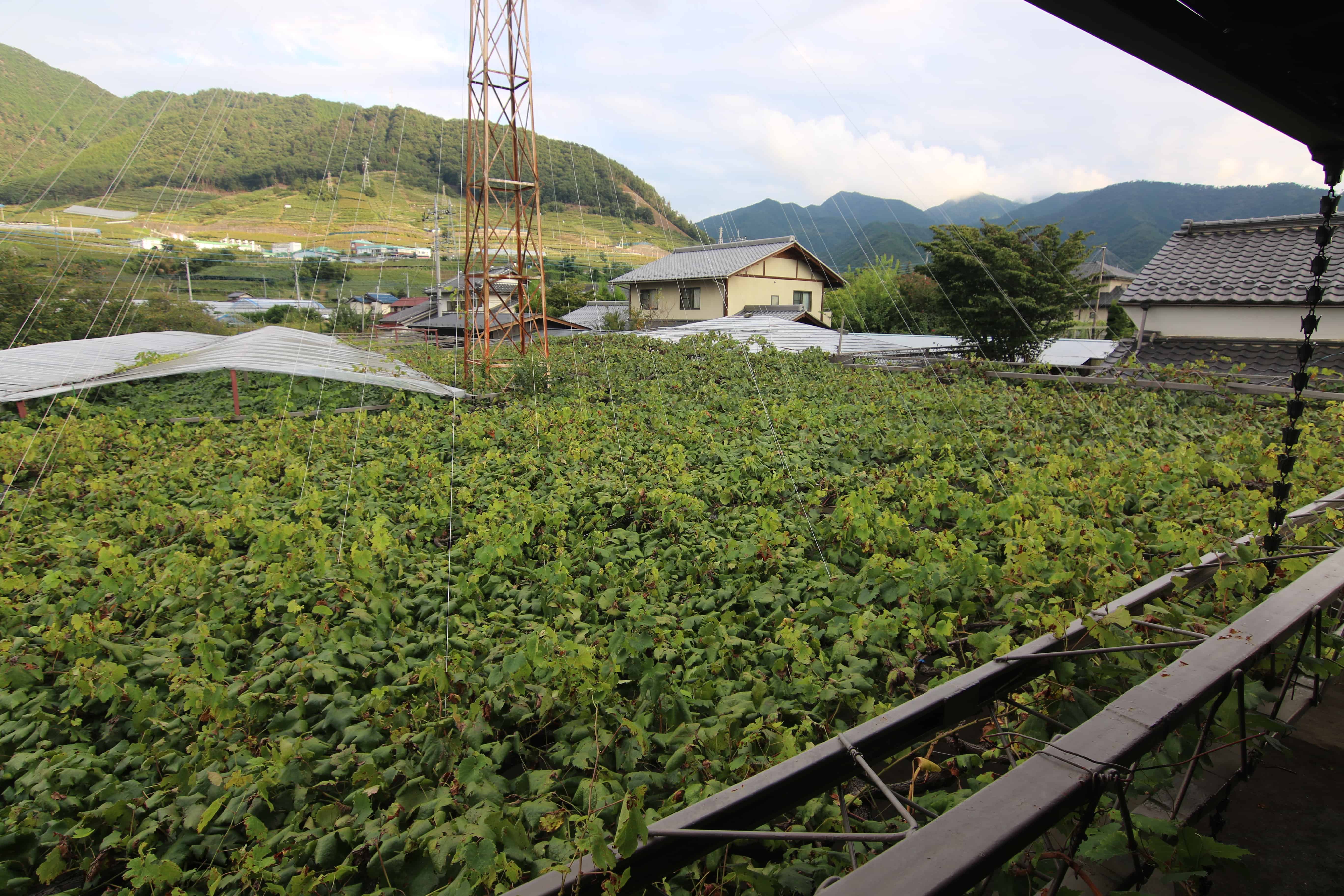
Viewing the grapes from the Haramo Winery — you can sit on the upstairs deck and sip wine with this view.
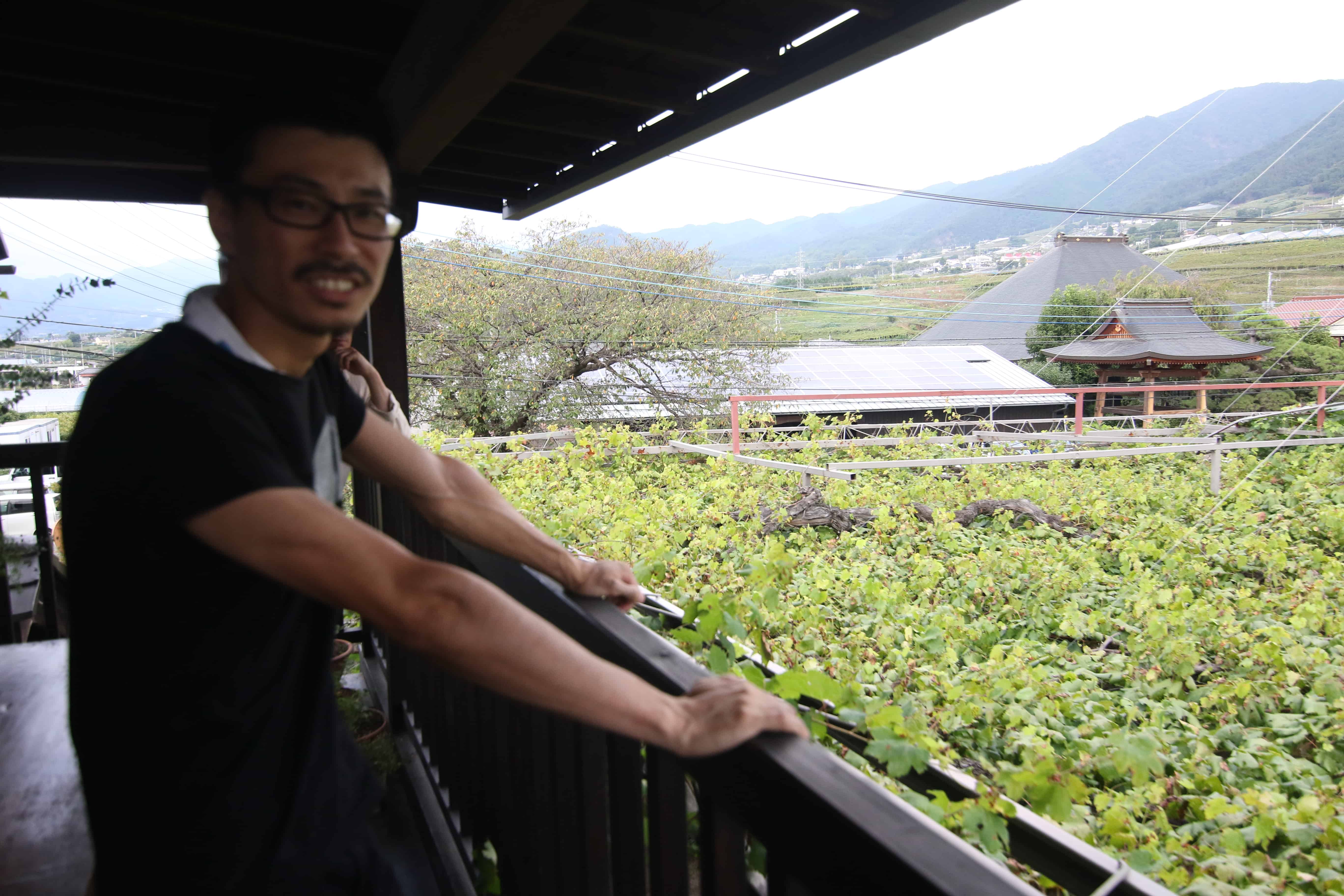
The winemaker at Haramo Winery.
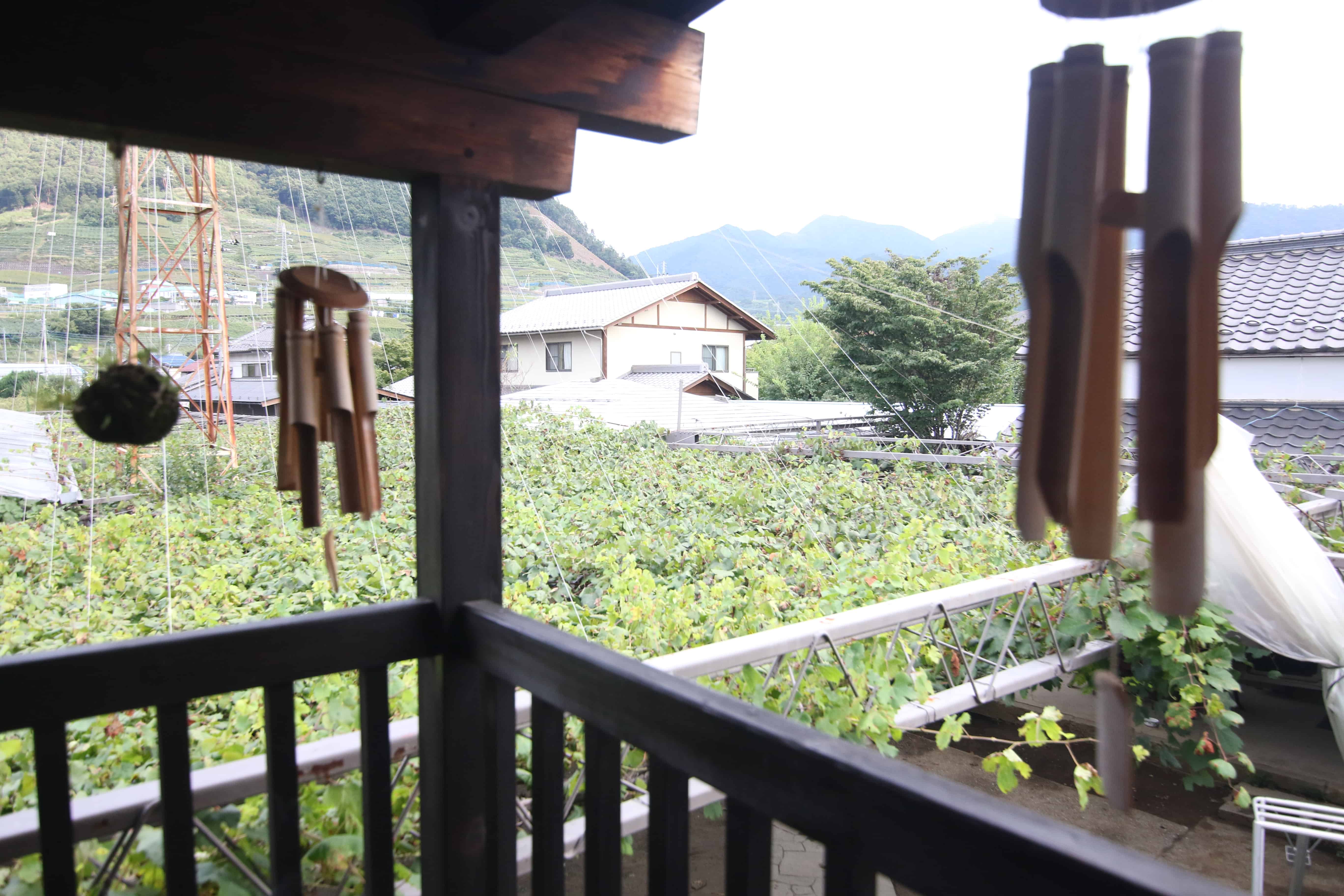

Together with the winemaker at Haramo.
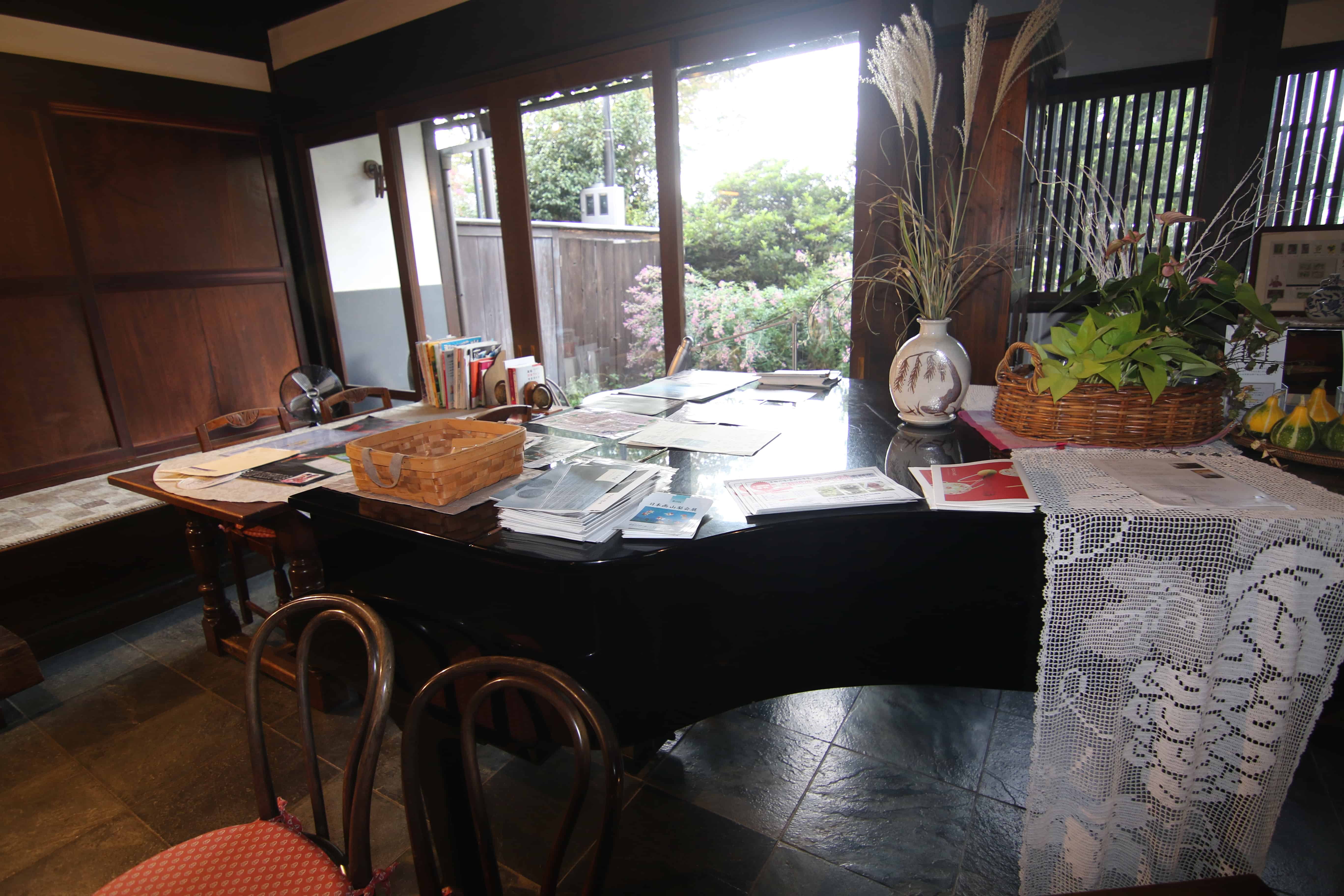
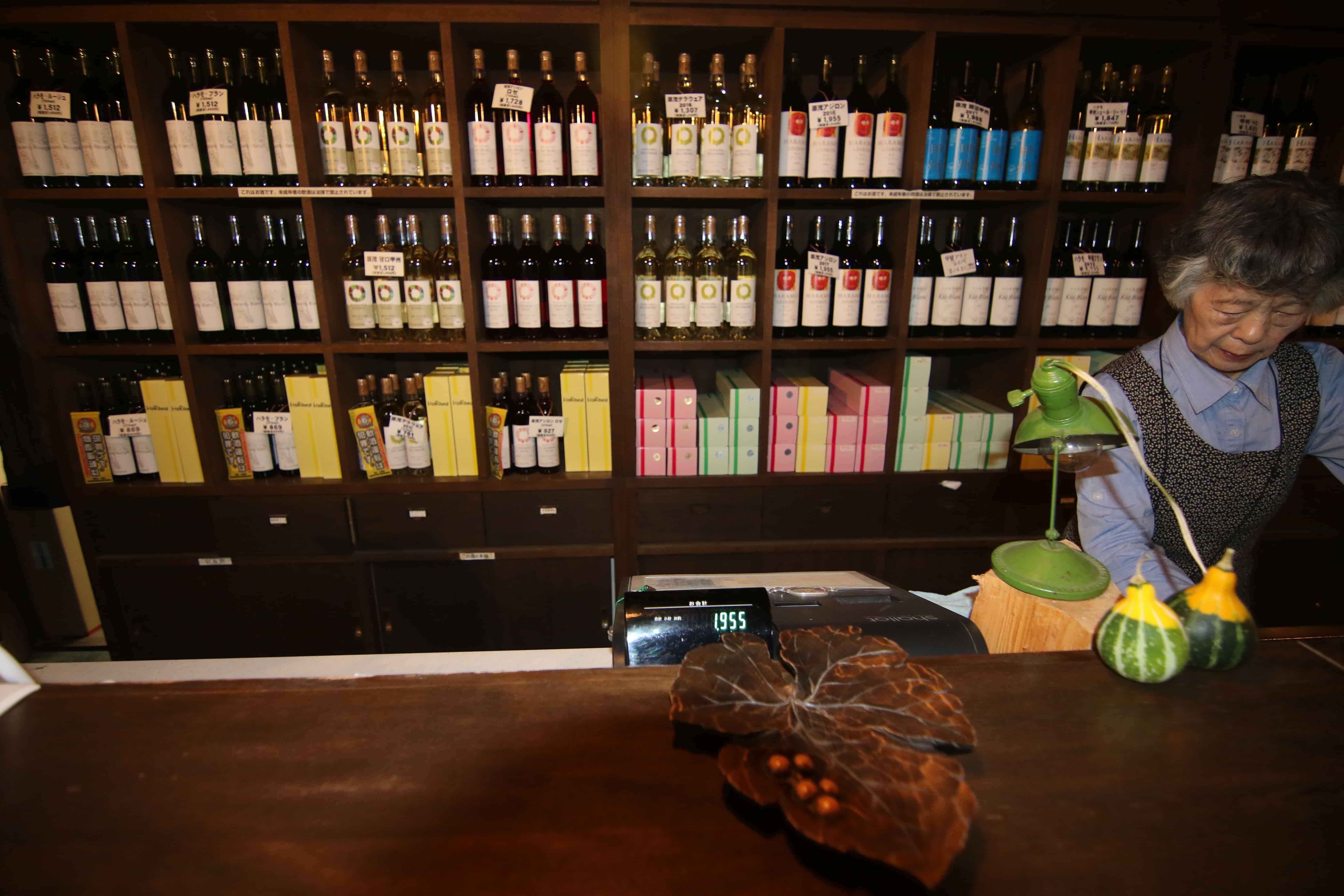
Shosenkyo in Yamanashi
We also had a unique opportunity to hike round trip in a place called Shosenkyo, which is a gorge in one of the most beautiful national parks in Japan located in the north part of Kofu in the Yamanashi prefecture. With tickets, you can also park your car in the parking lot and shuttle it up to the top and then walk down. And, for planning purposes, it’s pretty easy if you’re in the region as it’s only about 20 minutes drive from Kofu station and remember that you can get to Kofu on a fast train from Tokyo in a little over an hour.
Most of it is a wide cement path although there are more narrow areas which run past a river and some cute shops where you can buy things from local artisans along the way, including gemstones.
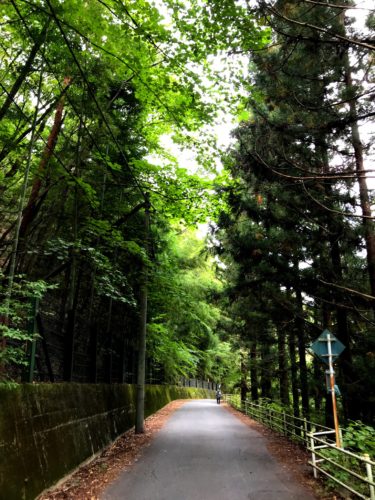
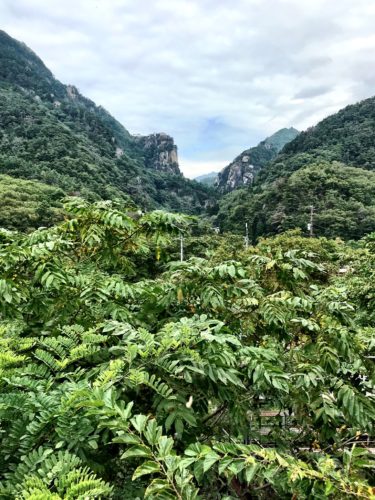
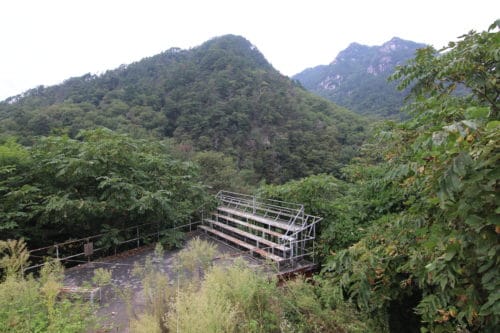
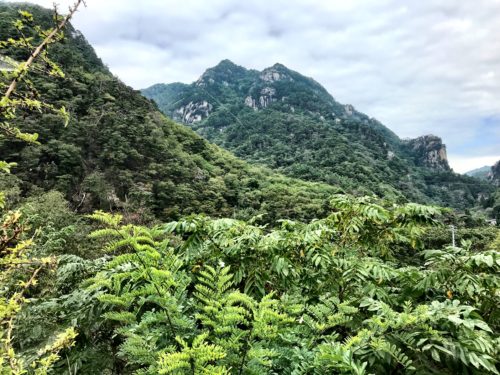
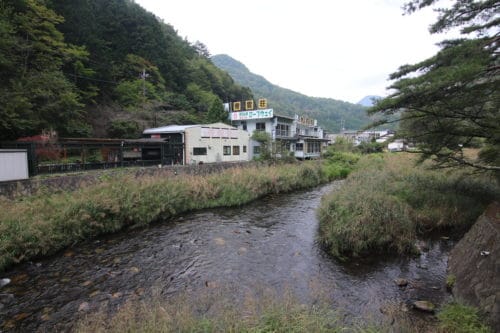
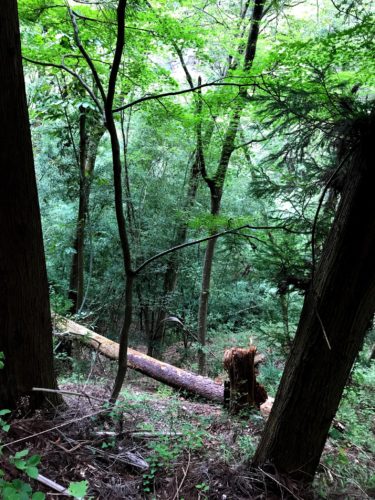

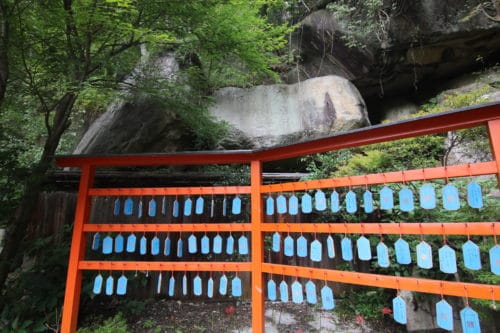

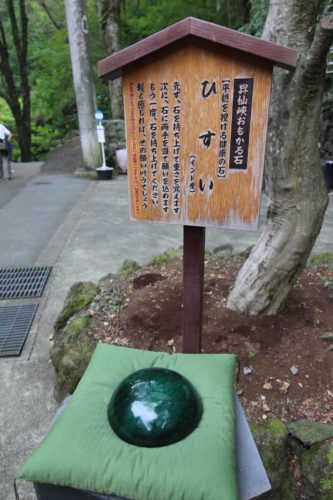
The trail itself is only about four kilometers in length from what they refer to as Nagatoro-bashi, which is well known as the gateway to Shosenkyo. Along the way, you can see granite cliffs and oddly-shaped rocks such as monkey, Mt.Fuji and Tengu (=Japanese goblin which has a very long nose and a red face) along the trail.
There’s also a beautiful river that runs alongside a large chunk of the trail — it’s listed in the “the Heisei Era 100 best water sites” and just has such a beautiful energy to it, you’ll likely want to stop, pause and reflect for awhile. Even meditate.
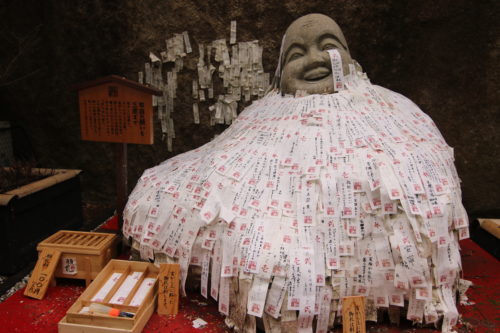
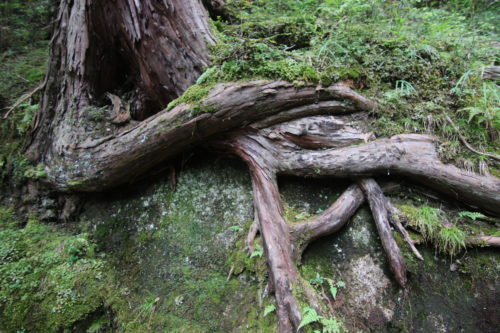
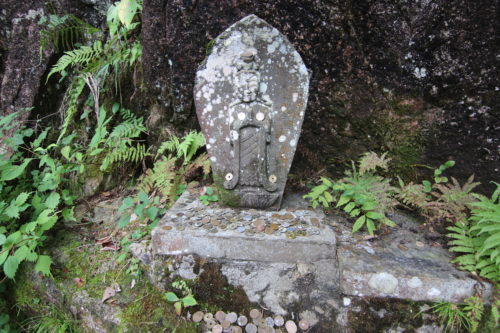

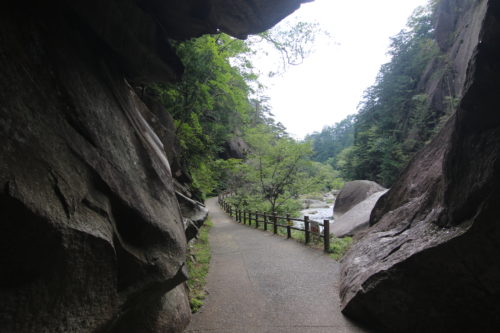
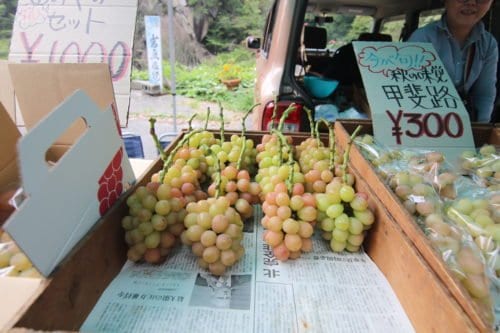
Above, koshu grapes.
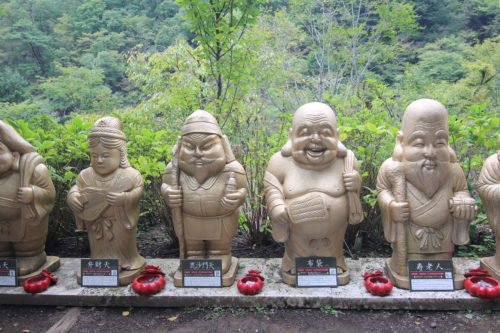
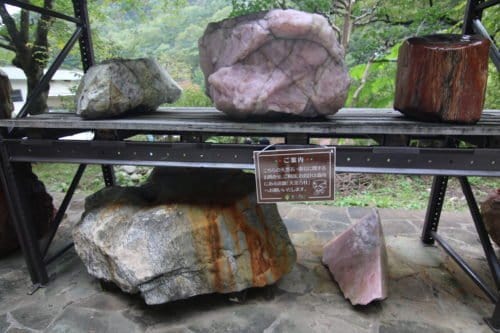
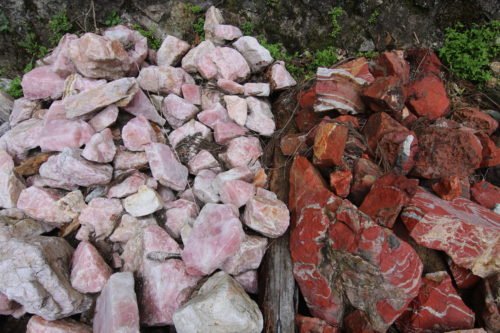
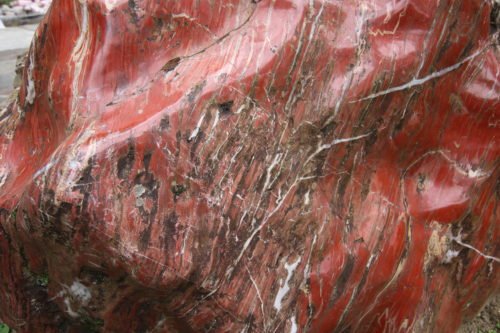
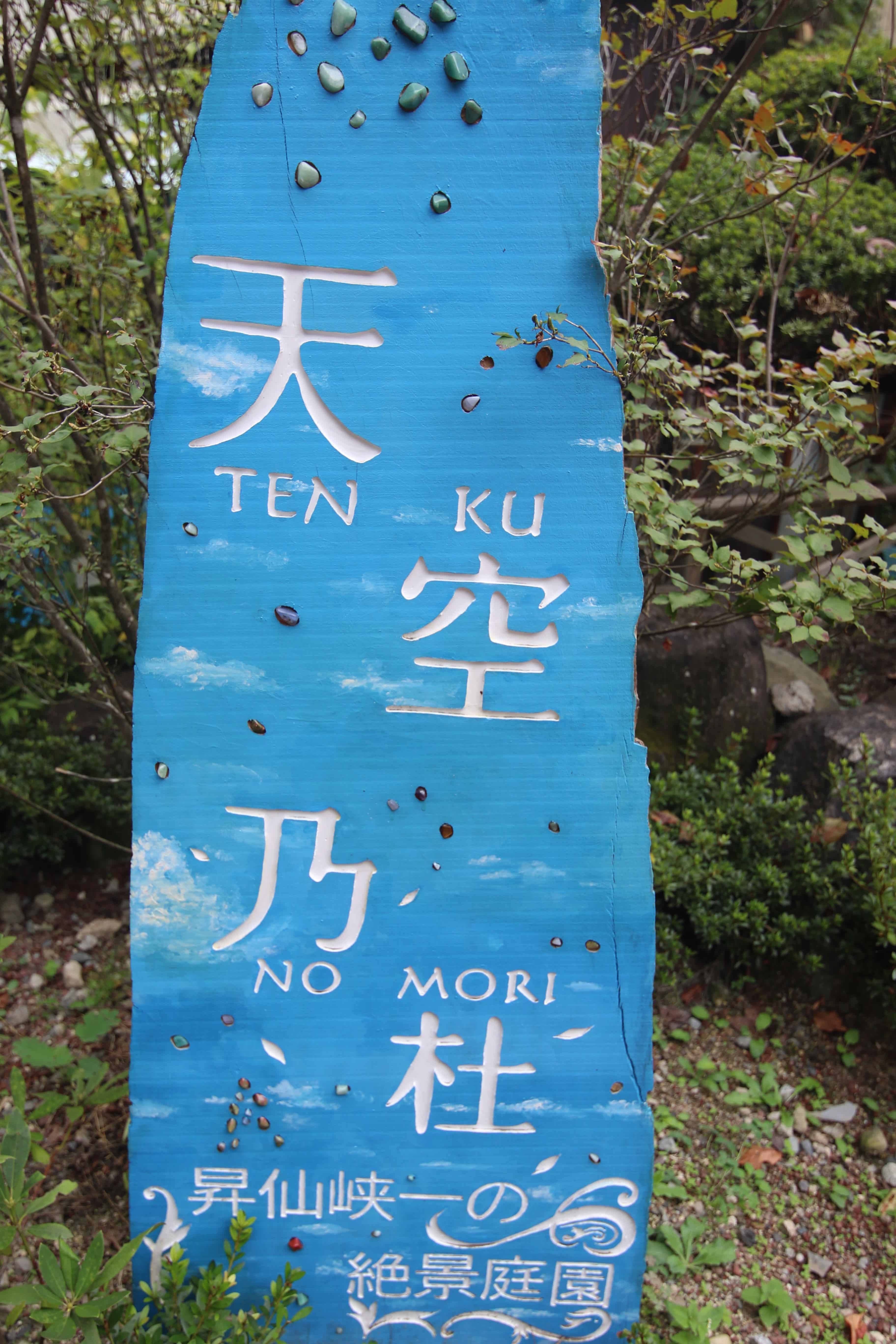

In addition to stunning nature along the way, you’ll find plenty of amazing shops (reasonable prices too but best to have cash on you — no ATM’s along the way), places to buy ice cream and sweets and restaurants/eateries as well. It’s a great place to try Hoto, which is a traditional local dish made from stewed flat noodles made with kneaded flour with seasonal vegetables and meat such as pumpkins, Japanese radishes and carrots in miso based soup. Also popular here is Koshu Ozara and Mitake Soba — “Mitake” is the preface of the original name of Shosenkyo, aka Mitake Shosenkyo.
Festivals, Temples, Lakes and Hot Springs
A known Buddhist temple in the area is the Mt. Minobu Kuon-ji Temple in Minobu, which is famous for being the head temple of the Nichiren sect of Buddhism. Also in the Minobu vicinity is the Shimobe Hot Spring area, which is also known as Shingen’s ‘hidden spring.’
Temples in Kofu include the Daizenji Temple that was originally built in 718 by monk Gyouki. The Seihakuji Temple in Yamanashi City was built by Ashikaga Takauji in 1333 in what is referred to as the Kara style, which was introduced from China by the Zen sects of the Kamakura Era. The Erinji Temple in Koshu City was a family temple of the Takeda Shingen and it has a beautiful garden around it – it’s also considered a national cultural property.
The Grape Festival in Koshu City is celebrated to give thanks to the previous year’s harvest of grapes and to pray for a good harvest for the following year. Free grapes and wine are offered. The Yoshida Fire Festival marks the end of the Mount Fuji climbing season and is known as one of the three best festivals in Japan. 70 three-meter torches are lit all at once to form a 2 kilometer “sea of flames” along the road.
In Ichikawamisato, there’s a Shinmei Fireworks Festival held every August. Other festivals include the Hassaku Festival in Tsuru City, which is an autumn celebration at Oide-jinja Shrine that has been taking place since the Edo Period. The Tamagenryu Festival in the village of Kosuge is a highlight in the Spring, and the Shingen-ko Festival is in early April, which is the grandest festival in Yamanashi and includes a parade.
There are five lakes which dot the north side of Mount Fuji – Lake Yamanakako, Lake Kawaguchiko, Lake Saiko, Lake Shojiko and Lake Motosuko. Lake Yamanakako is the largest lake and boasts holiday cottages and sailing. Lake Kawaguchiko in Fujikawaguchiko (town) is easy to get to by public transport making it one of the more accessible lakes in the region. Two other lakes in the same town include Lake Saiko which is surrounded by the stunning Aokigahara Jukai Forest and Lake Shojiko, which is the smallest lake. Nearby is Lake Motosuko, which is the deepest lake and is known for its beautiful crystal clear waters.

Renee Blodgett is the founder of We Blog the World. The site combines the magic of an online culture and travel magazine with a global blog network and has contributors from every continent in the world. Having lived in 10 countries and explored nearly 80, she is an avid traveler, and a lover, observer and participant in cultural diversity.
She is also the CEO and founder of Magic Sauce Media, a new media services consultancy focused on viral marketing, social media, branding, events and PR. For over 20 years, she has helped companies from 12 countries get traction in the market. Known for her global and organic approach to product and corporate launches, Renee practices what she pitches and as an active user of social media, she helps clients navigate digital waters from around the world. Renee has been blogging for over 16 years and regularly writes on her personal blog Down the Avenue, Huffington Post, BlogHer, We Blog the World and other sites. She was ranked #12 Social Media Influencer by Forbes Magazine and is listed as a new media influencer and game changer on various sites and books on the new media revolution. In 2013, she was listed as the 6th most influential woman in social media by Forbes Magazine on a Top 20 List.
Her passion for art, storytelling and photography led to the launch of Magic Sauce Photography, which is a visual extension of her writing, the result of which has led to producing six photo books: Galapagos Islands, London, South Africa, Rome, Urbanization and Ecuador.
Renee is also the co-founder of Traveling Geeks, an initiative that brings entrepreneurs, thought leaders, bloggers, creators, curators and influencers to other countries to share and learn from peers, governments, corporations, and the general public in order to educate, share, evaluate, and promote innovative technologies.








